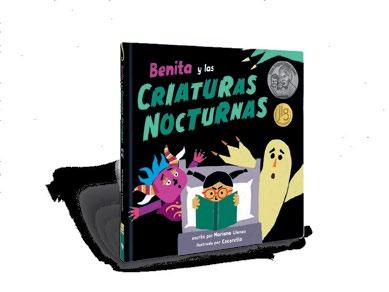FEATURING 346 Industry-First Reviews of Fiction, Nonfiction, Children’s, and YA Books


INDIE PUBLISHING IS BIGGER AND BETTER THAN EVER
A special issue dedicated to the rich diversity of independently published books


FEATURING 346 Industry-First Reviews of Fiction, Nonfiction, Children’s, and YA Books


INDIE PUBLISHING IS BIGGER AND BETTER THAN EVER
A special issue dedicated to the rich diversity of independently published books

THIS IS KIRKUS’ fifth annual Indie Issue. Consider it a State of the Union address on the condition of independently published literature in 2024. For our coverage, turn to the Indie section starting on p. 160. But to kick things off, I checked in with Chaya Schechner, president of Kirkus Indie, and editors David Rapp and Arthur Smith.


occasionally excellent but more often a little messy to independently published, professionally edited works.
Arthur, you came to Kirkus in 2023—a relative newbie. What has surprised you the most about Indie books?
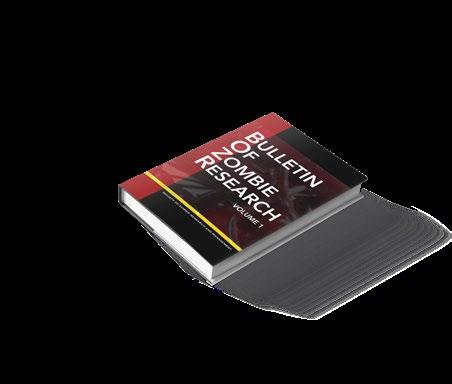
Chaya, you’ve been at Kirkus since 2012. What’s the single biggest change you’ve noticed in Indie books during those years?
C.S.: The caliber of the books. When I first started, we received a manuscript that was stacks of paper in boxes of Tupperware. Now, Indie submissions are often indistinguishable from traditionally published books in look and feel. The percentage of well-written, well- designed, carefully edited books has probably doubled in the past decade. Indie books have evolved
A.S.: The sheer variety of Indie titles, from fluffy romances and escapist fantasy epics to serious academic scholarship and investigative journalism. The vitality, creativity, and individuality on offer are inspiring—and make me feel guilty for not writing more myself!
What popular misconception do you wish you could dispel?
D.R.:The idea that selfpublishing is only for first-time authors. Some big names have found success as well. The mystery author Lawrence Block has self-published several books, including The Night and the
published short stories featuring private eye Matthew Scudder. The late Gael Greene, famed restaurant critic for New York magazine, made her out-ofprint 1976 erotic novel, Blue Skies, No Candy, and other works available as e-books. It’s a trend that benefits both writers and readers.
At Indie, you see a lot of novels, a lot of memoirs. What do you wish you saw more of?
A.S.: I love to see reviews of graphic novels come through—the comics industry can feel like a very monolithic gatekeeper. One of my favorite books of last year (Koren Shadmi’s All Tomorrow’s Parties) was a biography of the Velvet Underground in comics form. As a movie and music obsessive, I’d also like to see more pop-culture/arts criticism and commentary.
Is there a book we’ve reviewed that’s really stayed with you? D.R.: One book I think about often is the 2014 SF novel Bulletin of ZOMBIE Research: Volume 1 by Christy J. Leppanen. It features eight fictitious scholarly articles
documenting people infected with “Zooanthroponotic Occult MetaBiomimetic Infectious Encephalitis” [ZOMBIES], related in dead-on academic prose with graphs, charts, and even photos. It’s horror storytelling of a high order.
What’s one thing you wish authors knew about self-publishing?
C.S.: I’m sort of glad many authors don’t realize how difficult the whole process is until they’re in too deep. Writing a manuscript is daunting enough. But even if you’ve written, say, a story collection that Kelly Link would envy, your work isn’t half done. Authors might want to work with an editor, cover designer, book designer, copyeditor, and/or publicist. And the book won’t promote itself—now it’s time for marketing. But once the book is written, you can’t give up on your baby. And we all benefit from having more books, more ideas, more stories in the universe.

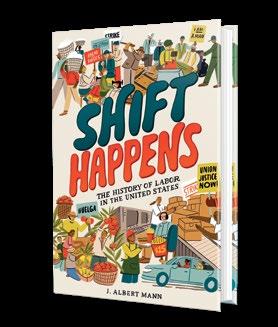


ISBN: 978-1925536072

“...Crimmins explored not only the city around him but also the bustling metropolis of associations that it stimulated in his mind. ”
“The book is a blend of memoir and travel writing, but it reads more like a novel. Readers may be reminded of the works of W.G. Sebald or Teju Cole...”

“...readers will nd in this book a formula for rewarding travel: to go without expectation, with deep curiosity, and with a desire to see everything through new eyes.”
—Kirkus ReviewsFor Agent Representation or Information on Publishing and Film Rights, Email
markdcrimmins@gmail.com
• markcrimmins.com
Co-Chairman
MARC WINKELMAN

Contributors
Alana Abbott, Nada Abdelrahim, Colleen Abel, Paul Allen, Stephanie Anderson, Jenny Arch, Mark Athitakis, Diego Báez, Audrey Barbakoff, Sally Battle, Robert Beauregard, Kazia Berkley-Cramer, Elizabeth Bird, Ariel Birdoff, Amy Boaz, Jessie Bond, Elissa Bongiorno, Kimberly Brubaker Bradley, Melissa Brinn, Jessica Hoptay Brown, Justina Bruns, Cliff Burke, Taylor Byas, Timothy Capehart, Tobias Carroll, Sandie Angulo Chen, Ann Childs, Amanda Chuong, Caridad Cole, K.W. Colyard, Emma Corngold, Jeannie Coutant, Perry Crowe, Kim Dare, Maya Davis, Sara Davis, Michael Deagler, Dave DeChristopher, Amanda Diehl, Steve Donoghue, Melanie Dragger, Anna Drake, Jacob Edwards, Lisa Elliott, Lily Emerick, Tanya Enberg, Chelsea Ennen, Rosalind Faires, Joshua Farrington, Brooke Faulkner, Sara Fiore, Katie Flanagan, Hillary Jo Foreman, Amy Seto Forrester, Renee Fountain, Sasha Fox-Carney, Mia Franz, Ayn Reyes Frazee, Jenna Friebel, Robbin Friedman, Roberto Friedman, Nivair H. Gabriel, Glenn Gamboa, Laurel Gardner, Cierra Gathers, Carol Goldman, Danielle Galván Gomez, Michael Griffith, Mary Ann Gwinn, Geoff Hamilton, Silvia Lin Hanick, Loren Hinton, Ariana Hussain, Kathleen T. Isaacs, Darlene Ivy, Wesley Jacques, Jessica Jernigan, Danielle Jones, Betsy Judkins, Mikayla Kaber, Jayashree Kamblé, Marcelle Karp, Maya Kassutto, Ivan Kenneally, Colleen King, Katherine King, Maggie Knapp, Alexis Lacman, Megan Dowd Lambert, Carly Lane, Tom Lavoie, Hanna Lee, Judith Leitch, Maya Lekach, Donald Liebenson, Elsbeth Lindner, Coeur de Lion, Barbara London, Patricia Lothrop, Georgia Lowe, Wendy Lukehart, Kyle Lukoff, Leanne Ly, Douglas MacLeod, Joe Maniscalco, Michelle H Martin, Gabriela Martins, Matthew May, J. Alejandro Mazariegos, Breanna McDaniel, Dale McGarrigle, Zoe McLaughlin, Don McLeese, Kathie Meizner, Carol Memmott, J. Elizabeth Mills, Tara Mokhtari, Lisa Moore, Andrea Moran, Molly Muldoon, Theo Munger, Jennifer Nabers, Liza Nelson, Mike Newirth, Therese Purcell Nielsen, Brandon Nolta, Sarah Norris, Katrina Nye, Tori Ann Ogawa, Connie Ogle, Mike Oppenheim, Nick Owchar, Andrea Page, Derek Parker, Hal Patnott, Deb Paulson, John Edward Peters, Jim Piechota, Shira Pilarski, Margaret Quamme, Judy Quinn, Kristy Raffensberger, Stephanie Reents, Evelyn Renold, Nancy Thalia Reynolds, Jasmine Riel, Alyssa Rivera, Kelly Roberts, Lauren Roberts, Amy Robinson, Lizzie Rogers, Gia Ruiz, Lloyd Sachs, Bob Sanchez, Caitlin Savage, Meredith Schorr, Gene Seymour, Jerome Shea, Sadaf Siddique, Karyn N. Silverman, Linda Simon, Laurie Skinner, Clay Smith, Leena Soman, Margot E. Spangenberg, Mo Springer, Allison Staley, Mathangi Subramanian, Jennifer Sweeney, Paul Teed, Eva Thaler-Sroussi, Desiree Thomas, Caroline Tien, Renee Ting, Jenna Varden, Katie Vermilyea, Laura Villareal, Christina Vortia, Francesca Vultaggio, Elliott Walcroft, Barbara Ward, Erica Weidner, Audrey Weinbrecht, Angela Wiley, Amelia Williams, Kerry Winfrey, Marion Winik, Adam Winograd, Livia Wood, Daniel Yadin, Bean Yogi, Jean-Louise Zancanella
TRUE CRIME IS so popular these days—whether in the form of books, podcasts, or TV shows—that writers have begun getting meta with it, writing fictional stories about true crime, most notably the twisty and hilarious Hulu series Only Murders in the Building. Authors from Dickens to Ellroy have based novels on real crimes, and of course mysteries have always been about solving crimes, but it feels like something new to have novels revolve around the production of a true-crime narrative.
Kate Clayborn has added a true-crime element to her latest romance, The Other Side of Disappearing (Kensington, March 26).
Jess Greene’s mother disappeared 10 years ago,

running off with a sketchy guy who just may be an infamous con artist, and Jess has been busy taking care of her younger sister, Tegan. Now a podcaster wants them to help track their mother down, and Tegan is all for it. Jess is less enthusiastic, but she goes along to protect Tegan— and perhaps spend time with the podcast’s producer, Adam. “Clayborn’s latest romance is certainly about Jess and Adam’s slow burn as a couple,” our starred review says, “but it also juggles an impressive number of other threads, including…our collective obsession with true crime.... The subject matter is a change of pace from Clayborn’s previous novels,
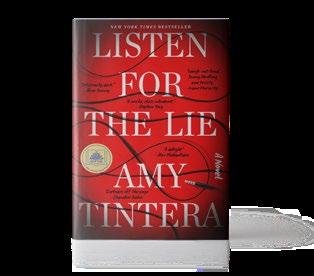
but the author’s strength with character and emotion deftly shines through.”
Amy Tintera’s Listen for the Lie (Celadon, March 5) also revolves around a podcast. Five years ago, 20-something Savannah Harper was murdered, and everyone in her hometown of Plumpton, Texas, thinks the killer was her best friend, Lucy Chase. Lucy has returned home for her grandmother’s birthday just as Ben Owens, a podcaster, shows up asking questions that cast doubt on her guilt: “She’s strong, she’s prickly, and we gradually begin to understand just how wronged she has been,” our review says, calling the book “smart, edgy, and entertaining as heck.”
Jessica Knoll’s Bright Young Women (Marysue Rucci Books, 2023) was one of my favorite books of last year, a novel that fictionalizes Ted Bundy’s 1978 attack on a Florida sorority house without


ever mentioning his name. The book starts with the crime and then follows Pamela Schumacher, the sorority president, as she deals with the aftermath, including a sympathetic story in the Tallahassee Democrat by a reporter whose interests then diverge from Pamela’s. He’s reading Helter Skelter, the famous book about the Manson murders, and perhaps trying to spin the story into a bestseller of his own. Our starred review calls it “a stunning, engaging subversion of the Bundy myth—and the true-crime genre.”
Daniel Sweren-Becker’s Kill Show (Harper, 2023) revolves around several forms of true-crime media. When 16-year-old Sara Parcell goes missing on her way to school, the police investigation goes nowhere until Sara’s brother makes a video of his parents talking to each other and uploads it to YouTube. A reality-TV producer gets involved, and then, 10 years later, there’s an oral history of the crime, which is supposedly what we’re reading. Though the ending is rushed, this book is “a riveting work of fiction that doubles as scathing social commentary about America’s true-crime obsession,” according to our review.
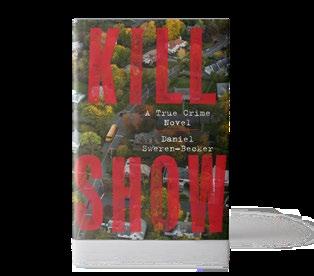
Laurie Muchnick is the fiction editor.
LAURIE MUCHNICK Illustration by Eric Scott AndersonDuring an annual beach vacation, a mother confronts her past and learns to move forward.
Her family’s annual trip to Cape Cod is always the highlight of Rocky’s year—even more so now that her children are grown and she cherishes what little time she gets with them. Rocky is deep in the throes of menopause, picking fights with her loving husband and occasionally throwing off her clothes during a hot flash, much to the chagrin of her family. She’s also dealing with her parents, who are crammed into the same small summer house (with one toilet that only occasionally spews sewage
everywhere) and who are aging at an alarmingly rapid rate. Rocky’s life is full of change, from her body to her identity—she frequently flashes back to the vacations of years past, when her children were tiny. Although she’s grateful for the family she has, she mourns what she’s lost. Newman (author of the equally wonderful We All Want Impossible Things , 2022) imbues Rocky’s internal struggles with importance and gravity, all while showcasing her very funny observations about life and parenting. She examines motherhood with a raw honesty that few others manage—she remembers the hard parts,
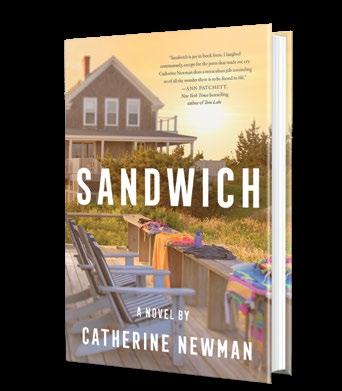
Sandwich
Newman, Catherine | Harper/ HarperCollins | 240 pp. | $26.99
June 18, 2024 | 9780063345164
the depths of despair, panic, and anxiety that can happen with young children, and she also recounts the joy in a way that never feels saccharine. She has a gift for exploring the real, messy contradictions in human emotions.
As Rocky puts it, “This may be the only reason we were put on this earth. To say to each other, I know how you feel .”
A moving, hilarious reminder that parenthood, just like life, means constant change.
Aguda, ‘Pemi | Norton (224 pp.) $26.99 | May 7, 2024 | 9781324065852

Ghosts appear in many unexpected forms in the supernatural landscape of Lagos.
Nigerian writer Aguda opens her debut collection with “Manifest,” the tale of a relationship that becomes contentious when a woman recognizes her own mother in her daughter’s face. Many of the book’s ghosts are passed down through maternal lineages, and it seems that hauntings are reserved mostly for women. In “Breastmilk,” Aduke is more haunted by her mother’s fighting legacy—one she has betrayed by forgiving her husband Timi’s infidelity so easily—than she is by Timi’s betrayal. “Imagine Me Carrying You” follows another mother-daughter pair; the mother, haunted by a tragic car accident, becomes a listless and aggressive shell of a person her daughter must pause her own life to attend to. In “Girlie,” a daughter whose mother has sent her away to work must confront the ghost of her mother’s love after being kidnapped by the woman she buys tomatoes from at the market, while “The Wonders of the World” finds young Abisola on an extended school trip, where the intervention of her strange classmate Zeme finally helps her feel sure of her parents’ love. The stories that center the cowardice of male characters produce some of the book’s most delightful twists and strongest narrative structures. In one of the most notable stories, “The Hollow,” an architect named Arit visits the home of
Madam Oni, a client, to find it constantly transformed by the abusive spirits of Madam’s son, husband, and father-in-law. In “Things Boys Do,” the lives of three different men converge when they discover they are connected through a tragic childhood incident. The collection builds slowly, finding its emotional stride in the second half, when the characters’ interiorities are more developed and complex. The setting of mythical Lagos also shimmers more energetically in the collection’s later stories.
A satisfying slow build featuring haunted family relationships.
Andras, Joseph | Trans. by Simon Leser Verso (96 pp.) | $17.95 paper May 21, 2024 | 9781804291719

A racing, artfully embellished account of the man who became Hồ Chí Minh. This frenetically fictionalized, wandering biography traces the elusive early life of the man called Nguyên Tât Thanh, then Van Ba (“his sobriquet as an odd-job man”), then Nguyên Ai Quâc (used by a patriotic collective), also “the soul of the Annamite movement” (after a French word used to refer to the Vietnamese), and, finally, Hồ Chí Minh. As the narrating flâneur hoofs a footpath through Paris in search of relics of his target’s past, he recounts Hồ Chí Minh’s own pursuit by government agents, opposing political figures, and radical leftist collaborators. Bursting with encyclopedic intelligence, the
Ghosts appear in many forms in the supernatural landscape of Lagos.
GHOSTROOTS
narrator retrieves data from a seemingly endless cache of dossiers, classified documents, newspaper headlines, aboveboard and backchannel communiques, Socialist and Anarchist treatises, and meeting minutes from the Second Congress of the Communist International. If the collagelike text produced from this vast archive occasionally yields less linguistically interesting sentences (“Former governor-general of French Indochina and future minister, in turn, of the Colonies, the Navy, the Interior and Education, Sarraut...”), Andras counterbalances these moments with genuinely arresting images, such as the decapitated head of a Vietnamese resistance fighter (“displayed in a market, flies and all for onlookers”), as well as poetic-sounding exchanges of bazin, plantains, and purple ink, and the striking depiction of a “fawn gray” city growling “while the gutter scoffs down water.” Surely, the most successful passages arise when Andras extracts truth from either fact or fiction to depict a more real-seeming person behind the historical giant, as when a young Hồ Chí Minh borrows Marx’s Capital from a Parisian library and, rather than peruse and annotate its pages, “the big book served as his pillow.”
A buzzing, bustling, genre-blending book that balances fact and fiction, if unevenly distributed.
Atkins, Ace | Morrow/ HarperCollins (384 pp.) | $30.00 June 25, 2024 | 9780063293380

What begins as another of Atkins’ trademark regional crime tales blossoms into a story of international intrigue without ever abandoning its base.
Addison McKellar’s husband, Dean, has gone AWOL once before, returning home after five days with no explanation to speak of. So she doesn’t get seriously alarmed till he’s
An off-kilter, hauntingly hilarious novel of the near future.
been gone a whole week. What tips the balance this time isn’t the extra two days, but her visit to the Cotton Exchange Building: The news that McKellar Construction hasn’t had an office there for at least two years sends Addison first to the Memphis police, who don’t believe that Dean is missing, and then to Porter Hayes, “the Black Sherlock Holmes,” who does. As the question of what Dean’s up to morphs into the question of who Dean really is, Atkins skillfully draws in more players who seem summoned from different worlds. Joanna Grayson, who co-starred with Elvis Presley in a movie half a century ago, is still working the connection to attract fans of the King. Her client Leslie Grimes is the billionaire owner of a chain of Christian gift shops. One-armed Jack Dumas is an arms dealer whose partner, Peter Collinson, has vanished with a bulging wallet. Omar, a sketchy Turkish dealer, has been killed in a shopping mall’s security warren. Then, shortly after he’s reported dead, Dean McKellar returns to his hearth and home, and things become much, much worse. He won’t answer Addison’s simplest questions; he casts doubt on everything she says; he goes out of his way to embarrass her in front of their friends; and he ends up turning their children, along with virtually everyone else in her life, against her. Forget about the MacGuffin that knits these threads together and enjoy Atkins’ biggest, boldest thrill ride yet.

For more by Ace Atkins, visit Kirkus online.
Barclay, Linwood | Morrow/ HarperCollins (352 pp.) | $30.00 May 7, 2024 | 9780063276314
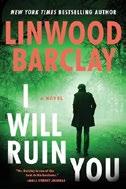
An 11th-grade teacher declared a national hero for saving his Connecticut school from an armed invader is knocked down several pegs by an unexpected lawsuit and a blackmail scheme.
The instructor, Richard Boyle, successfully talks a former student in a dynamite vest out of carrying out his planned grudge killings only to see him trip over a shoelace as he turns to go and blow himself up. The attacker’s parents sue Richard, charging he didn’t do enough to save their son. Richard is not on the greatest terms with parents, who are already unhappy with him for teaching their kids about cannibalism via Cormac McCarthy’s novel The Road. But this turns out to be the least of Richard’s worries after another one-time student, a misfit drug dealer looking to capitalize on Richard’s celebrity, demands $10,000 not to tell everyone that the teacher fondled him as coach of the wrestling team. Richard’s desperate efforts to avoid the false charge only draw him in deeper, eventually linking him to a murder and threatening his marriage. “I think the only thing we can accuse Richard of is being an idiot,” says his sister-in-law, a police officer. Though the book has one glaring red herring and one saw-that-coming plot twist, Barclay makes up for those missteps with his perfectly pitched treatment of topical subjects including school violence, book censorship, and the gun violence epidemic. When the drug dealer’s
girlfriend asks him where he got his gun, “He rolled his eyes. ‘Lucy, this is America.’” It’s not clear why Richard’s narration is in the first person and everyone else’s is in the third. But Barclay, one of crime fiction’s most reliable stars, makes that approach, and much more in this page-turner, work. A first-rate addition to the subgenre of Threatened Men Acting Stupidly.
Barnet, Frankie | Astra House (304 pp.)
$26.00 | May 21, 2024 | 9781662602597
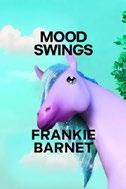
Barnet presents a canny portrait of the doomscroll generation, set in an absurdist near-future world. Jenlena is 21 when animals finally seek vengeance on humans. After creatures of all sorts start attacking people around the world, California billionaire Roderick Maeve funds the development of a sonic signal that kills each and every animal on Earth. Jenlena and her best friend, Daphne, emerge into Quebec’s new normal with English degrees and little sense of purpose: Jenlena takes to stealing and reselling houseplants (which have become a stand-in for pets) and acting as a dog for hire for lonely customers, while Daphne works at a coffee shop and navigates dating a canceled musician named Jordan. Looming in every corner of this increasingly dreadful society, wracked by environmental disasters and political turmoil, are the Moon Bethlehems—a radical cult determined to save the planet. When Jenlena begins sleeping with the Roderick Maeve, the cult enemy no. 1 who is dead set on making time travel a reality, she is swept up in his exceptional privilege. This is a sharp satire of a hyperonline culture, with genuinely moving insights into modern inequality and climate crisis
throughout. “We’ve all become like someone on their deathbed, calling up our old transgressions and making apologies,” Moon Bethlehem mouthpiece (and Jordan’s ex-girlfriend) Moon Cicero says. “It’s pretty easy, really, when you’ve got no real intention of changing. You know you don’t have to because you haven’t got the time.”
Jenlena and her friends epitomize the wild oscillations between naïveté and cynicism that can define young adulthood, and, while each character is ridiculous at times, they are all delightfully multidimensional. In an apt formal choice, Barnet peppers in the “mental pollution” (as one character calls it) of the online world: she includes tweet-style posts and Instagram-angled poems (as well as a couple of pages of animal doodles and one single photo of Ted Cruz). This book is a great choice for fans of Patricia Lockwood’s No One Is Talking About This (2021).
An off-kilter, hauntingly hilarious debut novel.
Blackett, Laura & Eve Gleichman
Dutton (320 pp.) | $28.00
May 21, 2024 | 9780593473689

A Millennial couple settles down in a ramshackle country house that just might be their dream home—if they can commit to a dream.
Rosie and Jordan’s fixer-upper in New York’s Hudson Valley seems too Instagrammable to be true. Recent transplants from Brooklyn, the newlyweds are eager to partake in the pleasures of country living…as long as they’re clean, instant, and aesthetically curated. Rosie and Jordan aren’t received with the warm small-town welcome they’d imagined. “I’m sorry, but is everyone in this town gay and poly? Did we miss a memo?” Jordan asks when they’re once again socially sidelined. Rosie is an indecisive
do-gooder who pins all happiness on the move, and Jordan is a tech bro who’s constantly either removing AirPods or rushing to carry out his wife’s changing whims. When the move doesn’t go according to plan, they decide to rent the house’s outbuilding to earn some money. The moldy shack is rebranded as a “shabby chic cottage,” and Jordan and Rosie become landlords to Dylan and Lark. The new tenants woodwork and pickle and quilt, effortlessly embodying a life that Rosie mistook for a lifestyle. Dylan and Lark are queer, kind, and endlessly capable. As the couples become more intertwined, Rosie is jostled out of her passivity. The image of Lark and Dylan cobbling together a world of friends and lovers, cold woods and hard work has Rosie spellbound. Does she really want to leave her old life behind, or does she just like the pretty picture? Rosie’s thought processes are interesting, but some of the characters around her lack depth. Her husband and mother-inlaw are particularly cartoonish, spewing microaggressions in a way that feels over the top. Still, the relationship between Rosie and Dylan is enthralling. Blackett and Gleichman skillfully capture the way a single look from the right person can make you embarrassed about every choice you’ve ever made. A fast, fun read that invites you to change your life (or at least quit Instagram).
Brown, Rosalind | Farrar, Straus and Giroux (208 pp.) | $26.00
June 25, 2024 | 9780374613013
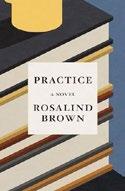
A novel about a day in the life of a studious Oxford undergraduate. Annabel rises at the crack of dawn and readies herself to write a paper about Shakespeare’s sonnets. As she reads the poems, she recalls the advice of her tutor, a medievalist, to “spend as many hours as [she] could
simply sitting with the text....Look away from the text and out the window if you have to, try and pause your mind on the one thing. Focus on the experience of you reading this text now.” Brown’s gorgeously written debut is a hypnotic meditation on being attentive—on Annabel’s attempts to wrestle meaning out of Shakespeare’s poetry on this particular day and to establish a strict routine that will elevate her mind above everything else more generally. The only problem is that Annabel is human. She glances out the window and “holy shit”—the world is shrouded in mist and she’s pulled away from the sonnets to go for a walk; she must concede to bodily functions; she needs coffee; she’s cold or hungry or distracted by the thought of Rich, an older family friend who is pursuing her. In a sneaky way, the novel makes a passionate argument for distraction: While Annabel fanatically tries to discipline herself into being uber-focused, her imagination leads her astray again and again, especially toward figures she’s invented, in particular the “SCHOLAR” and the “SEDUCER,” two men whose identities she easily slips into and whose homoerotic friendship she spins out in endless variations. Brown’s attentiveness to the suppleness of language and the poetry of everyday life makes this slim novel absolutely transporting. In the closing pages, Annabel thinks, “Today has been—” and then she doesn’t, and perhaps can’t, finish the thought. A brilliant and keen work about being fully alive.
Callahan, Michael | Mariner Books (304 pp.) $30.00 | May 21, 2024 | 9780063282605
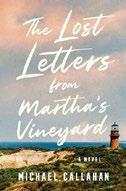
A breezy, atmospheric novel dripping with secrets.
When their beloved grandma Nan dies, sisters Kit and Claire O’Neill must empty out her
Internet dating comes under the microscope in this darkly funny thriller. SWIPED
house in suburban New York. In the attic (where else?), Kit discovers artifacts revealing their grandmother’s hidden life as a young movie star in Hollywood. Kit, now a cable news producer, and Claire were raised by Nan after their parents died. Stunned by what she’s uncovered, Kit vows to learn how Nebraska-bred Edith Stoppelmoor became Tinseltown’s Mercy Welles...and then left it all behind. The novel shifts back and forth in time, from Mercy’s exploits circa 1959 to Kit’s sleuthing in 2018 and beyond. An up-and-comer in Hollywood, Mercy already has an Oscar nomination when we meet her. But after she finds out her fiance is two-timing her, she decides to take some time off in Martha’s Vineyard, the fabled island off the coast of Massachusetts. There she meets Ren Sewards, an oyster fisherman estranged from his wealthy family. The two fall in love, and Mercy becomes involved in some serious island intrigue that may involve a killing or two. (A key scene takes place on Chappaquiddick, the tiny nearby island where Sen. Ted Kennedy famously drove his car off a bridge, triggering a major scandal.) Meanwhile, Kit is piecing together Mercy’s story and ultimately winds up on the Vineyard herself, where she meets an attractive young man who could be connected to the decades-old mysteries. Callahan does a nice job describing the Vineyard and its storied past. While his dialogue is stilted in places, and there are a couple of lapses in logic (would Ren really know that Humphrey Bogart line from Casablanca ?), the tight plotting carries you along. While it isn’t deep, it’s smooth and suspenseful—and hard to stop reading once you’ve begun.
Champine, Justine | Dial Press (368 pp.) $28.00 | May 28, 2024 | 9780593447208
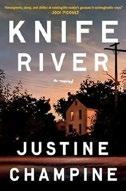
Two sisters search for answers when new light is shed on their mother’s disappearance.
Fifteen years after her mother, Natalie Fairchild, went missing, 28-year-old Jess receives a shocking phone call. It’s her semi-estranged older sister, Liz, saying their mother’s bones have been discovered by a couple of kids playing in a field. Jess immediately packs up her meager belongings, leaves her girlfriend Sarah’s home, and heads back to her hometown in upstate New York. Liz was just 19 when her mother disappeared and she was left to raise her 13-year-old sister, and she’s still living in their childhood home. The house feels eerily untouched—there are even jars of canned peaches that a concerned neighbor brought over when their mother first disappeared. Liz once had big dreams of leaving town and studying aeronautics, but she also appears stuck in the past, commuting to the same bank teller job she’s had for 15 years and wearing the same clothing given to her when their mother went missing. Liz is convinced that a local man named Nick Haines murdered their mother, but the police, and Jess, are less certain. Jess’ memory of her teenage years is spotty, and she feels suspicious of almost every man she comes across. She is also, much to Liz’s dismay, very distracted by rekindling her romance with Eva, her first love, who still lives in town. As the sisters try to piece together what happened
to their mother (with frustratingly little help from the detectives), they also begin to build back their relationship. While Champine does a decent job of weaving clues about Natalie’s disappearance through the book, it’s the relationship between the sisters that shines here.
Suspenseful and surprisingly moving.
Chilton, L.M. | Gallery Books/ Simon & Schuster (304 pp.) | $27.99
May 21, 2024 | 9781668045701

Internet dating comes under the microscope in Chilton’s darkly funny thriller. After going on a few dates with various losers she’s swiped right on, English coffee-truck owner Gwendolyn Turner is pretty fed up with the dating scene. It doesn’t help that her best friend is due to get married to her milksop of a fiance on Valentine’s Day. Gritting her teeth through Sarah’s hellish hen party, Gwen takes a break to check the Connector app and gets a weird message from a possible match: He says he’s going to have to reschedule their date and includes a link to a news story about the death of a local man—a man Gwen had gone on a terrible date with a week earlier. When the police arrive to question her, it turns out that the guy she dated next is dead, too. Reeling from this strange news, she makes a list of the six men she’s gone out with—from the racist mini-golfer to the full-of-himself mama’s boy. As the body count mounts, Gwen becomes a person of interest in the investigation, of course, but the bigger question is, who could have known to whom she was matched? Who has hacked the app and is pulling the strings? And why her? She’ll have to do her own detective work, with the help of a shady Cuppacino employee and an infamous hacker with a French bulldog. There is definitely something ridiculous about this whole affair; the saving grace
There’s no arguing with DNA evidence, the ultimate forensic clincher.
THINK TWICE
is that both Gwen and the author seem to recognize this, and despite the serial killer plot, nothing is taken too seriously. Of course, this could also be off-putting to some readers; no matter how terrible these men were to Gwen, they (probably) don’t deserve to be murdered. Still, Chilton shines a blackly humorous light on male misbehavior and love in the age of the internet—plus the timeless and ridiculous societal pressure of finding “the one.” Bound to become a classic of the singles scene.
Clark, Mary Higgins & Alafair Burke
Simon & Schuster (272 pp.) | $18.89
April 16, 2024 | 9781982132576
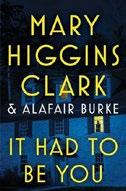
Burke continues, and continues to update, the late Mary Higgins Clark’s bestselling series about true-crime TV producer Laurie Moran.
The celebration of twins Simon and Ethan Harrington’s college graduations 10 years ago was curdled when longtime babysitter/ dogwalker Jenna Merrick entered the family’s Cape Cod vacation home a few hours later to find the place deserted except for the bodies of Sarah and Richard Harrington, the twins’ parents, turning the site from a party scene to a crime scene. The security cameras on the property were mostly down, but once Howard Carver, Richard’s law partner, told Harbor Bay police chief Jerry Collins that he’d seen one of the twins leaving the house soon after the murders, Collins never seriously
considered other suspects. Jimmy Connolly, the hardware store owner whose daughter, Annabeth, married Ethan, got his old pal Collins to suppress a crucial piece of evidence, and no charges were brought. But now that uppity podcaster Lydia Martindale is pressing the family to celebrate the anniversary of this horror by talking to her, Frankie Harrington, the twins’ younger sister, approaches Laurie, who oversees the celebrated Under Suspicion television series, in hopes of laying the cold case to rest for good. It’s no easy task to get the Harrington brothers aboard, along with Walter Ward, Richard’s other partner, and his wife, Betsy, who took in Frankie when her parents were killed. And then the revelations begin. Burke complicates Clark’s trademark damsel-in-distress decorum with disclosures about cheating, loan sharking, partner abuse, and other dysfunctional family secrets that seriously undermine her title because it could be almost anybody. In the closing words of one character: “Not all crimes are a black and white story of good versus evil.”
Coben, Harlan | Grand Central Publishing (368 pp.) | $26.57
May 14, 2024 | 9781538756317
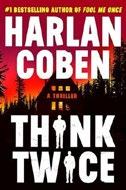
Sports agent Myron Bolitar meets the Setup Serial Killer, who’s found a highly effective way to keep anyone from connecting the dots. There’s no arguing with DNA evidence, the ultimate forensic clincher.
So when basketball player Greg Downing’s DNA is found on the scene where retired model Cecelia Callister and her son, Clay, were killed, the FBI comes calling on Myron to ask where they can find Greg. Myron’s a reasonable person to ask because Greg was his schoolmate and former client, the man who wooed and won Myron’s girlfriend away from him and made her Emily Downing. Try as he might, though, Myron can’t help much beyond repeating the obvious: Greg died three years ago, and his body was cremated. Since the Feds aren’t about to give up their search, Myron and his partner, financial advisor Win Lockwood, decide they’d better see if they can get ahead of this story by confirming or contradicting the story of Greg’s death. Meantime, a series of interleaved episodes show the killer eliminating a series of primary targets and framing secondary targets so convincingly for the murders, with special thanks to planted DNA, that it never occurs to the police to connect crimes that were so readily solved on their own. Complications arise when Myron’s thrown together with Jeremy Downing, the son he fathered in a pre-wedding tryst with Emily and then passed off as Greg’s, and when the allies of mob boss Joseph “Joey the Toe” Turant, who was locked up four years ago after his DNA-fueled conviction for the murder of Jordan Kravat, decide to lean on Myron to get him to reveal where Greg is.
A great premise leads through all the twists you’d expect to a thoroughly muddy final movement.
Corrello, Betty | Avon/HarperCollins (320 pp.) | $18.99 paper
May 21, 2024 | 9780063329584
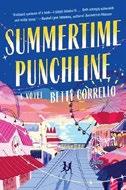
A comedian on the verge of her big break loses everything and returns to her Jersey Shore hometown—where she reunites with her longtime crush.
Delfina Silva-Miller did everything she could to get away from Evergreen, New Jersey, but at least her experiences growing up there with a deadbeat dad, a crush who frequently ran hot and cold, and a grandmother full of unconditional love gave her plenty of material for a comedy set. Just as she earns a spot at a high-profile festival, though, Del’s life comes crashing down, putting her in a bad enough bind to send her back to Evergreen. After all, where can a woman go when she has no job and nowhere to live while nursing the heartbreak of another failed relationship? Now she has roughly six weeks to get her life together and write a fantastic new set for the Brainwave Comedy Festival. Del is the narrator here; it’s a delight to be in her head, especially given her sardonically funny way of interpreting the world around her. Her love interest, Eddie Rodriguez, remains a bit of a mystery, and there’s a lot left unsaid about Del’s persistent crush on Eddie and what occurred during their 10-year separation. The small-town beach setting is bursting with memorable people, and Del and Eddie have a real, lived-in feeling as characters; they will undoubtedly reflect the fears, worries, and triumphs of many readers. While there’s a lovely romantic subplot as Del and Eddie reunite and reconnect, there are much bigger issues surrounding Del’s homecoming, especially her estrangement from her father and the way her focus on career affects her emotional fulfillment. It’s a “Can she have it all?” story, and though the book is fun and fresh at times, that feels like a stale question.
Wry observational humor and a dose of romance strike a good balance with some tough family dynamics.

Daddona, Matthew | Wandering Aengus Press (242 pp.) | $20.00 paper May 14, 2024 | 9798218246433
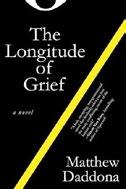
Daddona’s immersive debut is both a comingof-age story and a portrait of a community.
Deagler, Michael | Astra House (272 pp.)
$26.00 | May 7, 2024 | 9781662602245
For more fiction reviews, visit Kirkus online.
Becoming an adult can mean many things— some of them logical, others inherently paradoxical. In telling the story of a young man named Henry Manero, Daddona’s novel seeks a balance between the two. It has an immediately striking first sentence: “Henry Manero was born with one of those small hands that was hard to get used to unless you knew him.” From there, the reader learns more about Henry, then a sophomore in high school—his self-destructive approach to smoking, for one, and that he’s being raised by his mother, Alma. The novel’s first half occasionally pivots to fill in details on supporting characters, whether the story of a local anti-war activist or that of the troubled childhood of Henry’s estranged father, Benjamin. Much of the novel focuses on Henry’s attempts to understand what masculinity means to him. The novel abounds with men on the brink of doing awful things, including a moment in which Benjamin fails to be critical enough of his own thoughts: “It was only natural, Benjamin convinced himself, that he had daydreamed of a teenage girl.” Henry narrates the second half of the novel in the first person, and the version of him we meet here is older, both more aware of the injustices his mother and his friend Janine have endured and developing his own creative voice. It’s through his bond with an older man named Josef that Henry comes into his own, but the flawed world around him remains challenging to navigate. There are big ideas aplenty in here—and some bleak moments of moral horror as well. A philosophical, intentionally digressive exploration of masculinity, toxic and otherwise.

The witty, fiercely intelligent story of a young alcoholic in the fragile early days of sobriety, suspended between addiction and whatever life might come next—the shape of which he can’t yet see.
Twenty-six-year-old Dennis Monk, just months sober, gets the boot from his parents’ suburban Philadelphia home and begins what will be, over the novel’s episodic chapters, a half-year odyssey as the serial houseguest of relatives, old flames, and running buddies from high school and college. Dennis jumps from makeshift situation to awkward makeshift situation (pushed-together couches he hopes won’t get sold out from under him, cots in basements alongside washing machines) all over a rapidly gentrifying Philadelphia filled with his only-marginally-less-lost peers. Sometimes he’s a freeloader; sometimes he earns his keep, sort of, through errands not always handled successfully, projects he can fake his way through, or fitful employment. Dennis is nimble-tongued and keenly observant, and the book offers all sorts of humorous delights. Yet the reader quickly sees, too, that irony is Dennis’ protective coloration, that his wit is anxious and self-preserving. He may not be a gentrifier, but he is a kind of hipster who, like his coevals, simply wants to cobble together, from the unpromising materials available, an identity he can live in. Beneath the world weariness and sarcasm we get glimpses (for instance, in the bit-by-bitrevealed story of a friend who died from drinking) of a sweetness and vulnerability, even a fragile hopefulness, that Dennis is at pains to hide and resist. This is less a traditional novel than a linked collection of stories, a serial picaresque, but ultimately that
The crime novelist ends a bestselling trilogy and says goodbye to the writing life.
BY CONNIE OGLEREALITY IS FINALLY setting in for Don Winslow.
The author of more than 20 novels, including Savages, The Life and Death of Bobby Z , and The Power of the Dog series, Winslow announced his retirement in 2022. The statement came at the same time as the publication of the first book in a new trilogy about an Irish crime family in Rhode Island.
His plan, Winslow said, was to focus on political activism and video creation on X as a response to Donald Trump. In the meantime, readers had three final books to enjoy in a series that follows the story of Danny Ryan, a low-level member of the Irish mob who fights on the losing side of a war (City on Fire); enters the movie business in Hollywood (City of Dreams); and finds success as a luxury hotel developer in Las Vegas (City in Ruins).
Now City in Ruins is out, and Winslow is officially done, minus a few interviews and a book tour. The series he started with a simple but evocative image (“Danny Ryan watches the woman come out of the water like a vision emerging from his dreams of the sea”) has come to a satisfying close. And he admits it’s all a little bittersweet.
“I don’t know how I’m going to feel until after this tour is over,” he says. “It still feels like I’m in the harness. We’ll see.”
For Winslow, 70, the Danny Ryan trilogy is a fitting literary exit, one he has wanted to write for a long time. He always knew Danny’s path would mirror The Iliad and The Aeneid , that Danny was a contemporary Aeneas, who survived the Trojan War, fled to Italy, and founded Rome.
The hard part was making each part of the journey work in a modern context, Winslow says. The easy part? Ending a long and celebrated career.
We recently spoke with Winslow by phone from his home in San Diego. Our conversation has been edited for length and clarity.

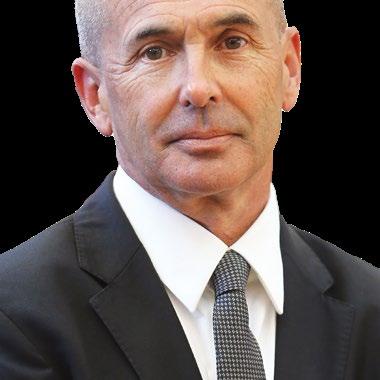
When did you start writing the trilogy?
I started the first one, City on Fire, 28 or 29 years ago. The first sentence hasn’t changed by a syllable, by the way. It was one of those projects where I would pick it up and set it down, depending on what else I was doing. I went through a long period of doubting it was going to work. I’ll bet I’ve thrown away easily 300 pages of that trilogy. It took me a while to develop the skills to complete it.
Did you always know it would be three books?
It was planned as a trilogy, unlike the drug books [ The Power of the Dog , The Cartel, The Border, which follow the DEA’s war with the Sinaloa cartel]. After writing each one of those, I
swore I wouldn’t go back to that world. I ended up breaking my word.
I knew where I was going to go for the spine of the story of Danny Ryan. I knew I was going to follow the life of Aeneas starting with The Iliad and ending with The Aeneid. There were going to be three very distinct phases. Fighting the losing war, that’s The Iliad. Part two is a refugee story, with Aeneas wandering the world looking for a place to set his feet. The third part is where he builds an empire. The struggle was finding the contemporary analogous events that would make sense in a modern crime story. Aeneas has to build an empire. What’s the contemporary equivalent to the founding of Rome? I just couldn’t find it. It’s
embarrassing now, because it finally occurred to me: Where can you go to build everything you want if you have the money? Las Vegas.
How did you decide this would be your final work? The way it worked out was a confluence of things. When I was rounding the home stretch [with] City in Ruins, I also recognized what was happening in this country. I came to the conclusion that if I finished this trilogy, which was a lifetime ambition, my energies would be best spent in a fight against what I consider a neofascist movement. These books represented a homecoming for me. I
left Rhode Island when I was 17, sort of like Danny. I wandered the world trying to find my place for a long time. Ten years ago my wife and I started to go back to Rhode Island for longer and longer periods of time, taking care of my mother, who needed help. As we spent longer amounts of time there, I began to fall in love with the place again and to see it in a more mature way.
Do most readers understand this is a retelling of the classics?
I’ve been amazed how little I’ve been asked about the classical origins, even by journalists. But I’m always aware I’m a crime fiction
writer, and I’m proud of that. I’m not trying to be highbrow. At the end of the day, I just want to write a good story and have readers care about the characters.
You use organized crime as the basis for this trilogy. Why do readers and audiences respond so strongly to stories about the mob? It’s wish fulfillment. It’s a power fantasy. Almost all of us have frustrations in our lives—problems with bureaucracy, problems getting a permit or with a troublesome neighbor, or more serious problems like domestic abuse or the threat of violence. We all look at The Godfather or The Sopranos , and those
problems get taken care of. It just took us six months to get a permit to do work on our house in San Diego County! But if you call up Tony Soprano, Tony takes care of it. And this is largely a reality in Rhode Island. I joked somewhere in the books that this should be stitched on the state flag: I know a guy. I think it’d be nice to go to—or be—Brando with the white cat on his lap making things thus.
Why was Danny such an appealing character for you to write about?
At the end of the day, I just want to write a good story and have readers care about the characters.
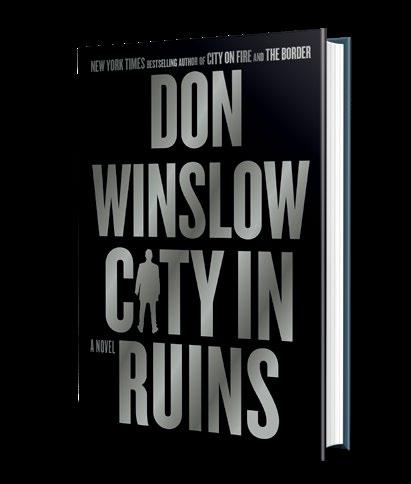
I’ve known the Dannys of the world my whole life. I just instinctively knew him. I played hockey with 20 Dannys, surfed with them. The beach where the trilogy opens and closes—I’m there every day for six months of the year. So it was extremely familiar to me. I’m also attracted to the character of Aeneas because he’s a minor player in his story, which offers a special kind of perspective. [He’s] in the events but mentally commenting from an outsider’s point of view.
What happens down the road if you come up with a great idea for a novel?
I don’t know the answer yet. I’ve made this decision. I’m pretty confident. I’ve had this career that is so much bigger and better than I ever dreamed, and I’m grateful for that and for readers giving me the life I’ve had. I think, Be grateful for what you’ve been able to do and what you’ve received. I want to make a graceful exit.
Connie Ogle is a writer in Florida.
approach feels like the right one for a book about navigating—or maybe just drifting through, in search of some useful piece of flotsam to grab hold of—a limbo of one’s own making. As a starting point for a new life, “nondrinker” is a necessary condition...but by itself that datum doesn’t get one very far. The book ends with Dennis, one year sober, on the verge of—well, who knows what, but verges beat sloughs every day.
Wry, sharp, charming, resistant to neat closures and easy turns—a debut of enormous promise.
Dixit, Pallavi Sharma | Third State Books (320 pp.) | $29.95
June 4, 2024 | 9798890130150

A Hindi-cinema lover becomes part of an immigrant community in Edison, New Jersey.
It’s the late 1980s, and Prem Kumar is the youngest son of one of India’s wealthiest businessmen. Unlike his siblings, though, he’s completely uninterested in the family business: He’d rather hole up at home watching Hindi films, of which he has encyclopedic knowledge. With his father putting pressure on him to do more, Prem heads to America to connect with a director there in hopes of making his very own movie. For the first time in his life, Prem must get a job, following two of his housemates to work at an Exxon station. He worries that “he might be a mere sidey in the motion picture of life.” But then, like those of his cinematic heroes, his course is altered forever when he catches a glimpse of Leena Engineer in the aisles of India America Grocers and falls in love at first sight. When Leena’s father gives Prem a surprising ultimatum, Prem—with the help of his community—must draw on strengths he did not know he possessed to fulfill his true potential, even if it takes the rest of his life. Modeled
explicitly after Bollywood staples—yes, there are musical numbers, one of which even takes place during a massive communal roller-skate—Dixit’s debut is partly a love letter to Hindi cinema, complete with an impressive command of its history and a flair for moments of cultural criticism. It’s also a celebration of Dixit’s own hometown of Edison, still the site of one of the largest populations of Indians outside South Asia. Although, like many Hindi films, the novel is overlong, it’s also a funny and charming testament to the ingenuity and collective spirit of Edison. A sparkling epic worthy of Bollywood’s silver screens.
Emezi, Akwaeke | Riverhead (288 pp.) $29.00 | June 18, 2024 | 9780525541639

A harrowing descent into the New Lagos. Aima thought that she and Kalu were building a life together when they moved to the United States, but his unwillingness to marry becomes more than her faith can bear. After she ends their relationship, they travel home together. It’s Friday evening when Aima and Kalu touch down in Nigeria and go their separate ways. Aima reconnects with an old friend, and giving in to one temptation after another leads her into an underworld she didn’t even know existed. Kalu also reaches out to someone from his past, thinking he knows what he’s getting into when he shows up at one of Ahmed’s exclusive sex parties. All he wants is to forget about Aima for a while, but he ends his evening by making an enemy of a pastor with a following of millions and a taste for domination. Several significant characters weave in and out of this narrative, but none of them can escape the cruelty and hypocrisy of Nigeria’s most populous city as this author depicts it. As they did in The Death of Vivek Oji (2020), Emezi offers a grim vision of
what it means to be queer in a culture in which same-sex love is outlawed. Similarly, Emezi presents a culture in which it seems like the only women who are allowed to express their sexuality are sex workers and in which sex work is the surest route to financial independence for a woman—if it doesn’t destroy her. Overall, though, this novel feels more like You Made a Fool of Death With Your Beauty (2022) than its predecessor. Drama, mystery, beautiful clothes, expensive cars, explosive sex…these are all the hallmarks of a particular brand of escapist fiction, but Emezi takes readers to an abyss from which there is no escape. Contemporary romance for cynics and nihilists.
Ferris, Emil | Fantagraphics Books (412 pp.) | $44.99 paper May 28, 2024 | 9781683969273
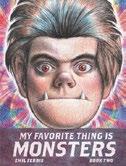
Ferris delivers the second part of her debut graphic novel of queer coming-of-age werewolf art noir.
In politically charged 1960s Chicago, teenage werewolf Karen Reyes is still haunted by the murder of her neighbor, and now by the cancerous death of her conservative mother, whose worries bleed into Karen’s dreams via a beheaded but sentient teddy bear. With Mom’s judgments gone from the land of the living, Karen sweetly pursues her first girlfriend, a fellow member of the Eternal Guild of the Benevolent Undead, who bonds with Karen while stealing coins from a pay toilet at the Art Institute of Chicago. An aspiring artist, Karen frequents the museum with her brother, Deeze, an artist and local mob enforcer who holds court as Karen draws selections from the collection, the re-creations appearing in Ferris’ style of finely hatched ballpoint pen on lined spiral notebook paper.
García Márquez tries his hand at a steamy potboiler, for better or worse.
With her world under siege by her mysterious father, the Invisible Man, and the possibility of her protector, Deeze, being drafted into the Vietnam War, Karen fixates on depictions of the biblical Judith’s seduction and beheading of a general who threatened her village. Ferris’ take on pulp and horror magazine covers punctuates the story and echoes all manner of luridness uncovered as Karen deepens her investigation into the heartbreaking life and violent death of her neighbor Anka Silverberg, a Holocaust survivor. Karen comes to suspect Deeze of terrible things, up to and including the murder of a brother Karen remembers only in dreams. Ferris’ visual style achieves depth and contour through layering and at maximum effect reaches a rich, leathery aesthetic. Color pops throughout the mostly black-ink pages, and close-ups appear breathtakingly photographic, with smaller, less-detailed panels existing as exquisite doodles. A cliffhanger ending could promise more monsters.
Heartfelt horror and spectacular cartooning.
Finger, Bobby | Putnam (336 pp.)
$29.00 | June 18, 2024 | 9780593713556

An older gay writer in New York City finds a way forward, despite many losses.
Finger’s sophomore effort tracks Artie Anderson on two interwoven timelines. One begins in the 1990s, when he’s about to quit his soul-sucking job as an advertising copywriter to
pen a novel based on his beloved friend group, two other gay men and a lesbian, the four of whom are joined at the hip and hang out religiously at Julius’, a gay bar in Greenwich Village. The other thread begins on Artie’s 60th birthday in 2022, and we can’t help but notice that the guest list includes none of the same people. At 60, Artie has become a successful ghostwriter but has yet to produce a follow-up to his fiction debut, which was not a financial success, though all 34 people who read it seem to have liked it quite a lot. Finger’s own well-received debut, The Old Place (2022), revolved around a church picnic in small-town Texas, and his sophomore effort continues to explore the theme of appreciation for the social networks and institutions that hold people together. In this case it’s GALS, a center for Gay and Lesbian Seniors, where the decimated cohort who survived AIDS can gather for movie nights, Thanksgiving dinners, and the like. After all, as this book shows us, gay Manhattan is actually just another kind of small town. Finger’s depictions of the changes in the West Village, the depredations of aging, and the possibilities of romantic connection between older single people are acute, yet infused with a sweet shrug of resignation. For example, he points out that the high-end cooking utensil store that has replaced an infamous gay club known as the Rod is at least still staffed by good-looking young men. The plot relies on a couple of big reveals toward the end, one of which is very powerful and the other less so, but it’s the warmth and astute observation that are the main draw anyway. A big-hearted and relatable read, especially if you’re old enough to remember the 1990s.
Until August
García Márquez, Gabriel | Trans. by Anne McLean | Knopf (144 pp.) | $22.00
March 12, 2024 | 9780593801994
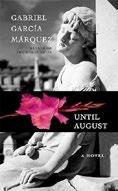
García Márquez tries his hand at a steamy potboiler, for better or worse.
“This book doesn’t work. It must be destroyed.” So declared García Márquez, tinkering with this novella until his agent quietly approached an editor to help find an ending. The author had a point, but his sons and heirs, “in an act of betrayal,” as they write, put the book into print all the same. It’s not bad, but it’s far from Gabo at his best, a thinly sketched tale of an elegant woman with “pert breasts” who travels to a Caribbean island each August to visit her mother’s grave, staying always in the same hotel for a few days, then returning to her bourgeois married life in the city. She sets eyes on a younger man, and he on her, and soon the two are in flagrante: “She wanted to attack, but he revealed himself to be an exquisite lover who raised her unhurriedly to the boiling point.” All’s well until morning, when 46-year-old Ana Magdalena Bach discovers that he’s gone but has left money behind in payment for the good time. Money was not Ana’s intent, and it rankles, but all the same she returns year after year, having a quickie romance each time. The story has all the makings of a telenovela, but with a memorable ending that turns on a brilliantly macabre moment. Think of it as a more lyrical version of the 1978 rom-com Same Time Next Year, with perhaps a hint of “A Rose for Emily” and Belle de Jour in the mix: Most of the characters remain ciphers, but one senses that had García Márquez lived long enough to finish the book, he would have given them depth. Of some interest to Gabo completists, but casual readers will want to take in his classics first.
A murder prompts a stay-at-home dad to play gumshoe in this comic yarn.
Garonzik, Sam | Grand Central Publishing (384 pp.) | $29.00
May 21, 2024 | 9781538743362

A murder victim prompts a stay-at-home dad to play gumshoe in this darkly comic yarn. Peter Greene, the narrator of Garonzik’s debut novel, is disheartened. A recent layoff from his finance job has left him with little to do but ferry his 3-year-old son, Luke, to appointments and run an endless-seeming series of errands for his wife, Lauren. At Lauren’s prompting, they’ve left city life for a coastal town whose sole virtue is the opportunity to indulge his love of surfing. On the beach he meets Robert Townsend, a former colleague, who turns up dead on the sand a week later. With few places to apply his analytical skill and feeling emasculated by his employment status, he begins following leads. What kinds of nefarious deeds was his old firm up to, what brought Robert to that wind-wracked beach, and why are so many people trying to keep him from asking questions? Garonzik strives to make Pete into the kind of sad-sack dad who’s populated novels by Sam Lipsyte, Gary Shteyngart, and Teddy Wayne, capturing the adult male put upon by daily responsibilities; a request from Lauren to pick up milk prompts a catastrophic overreaction: “Chernobyl. All is lost. Game over.” And he sees the comic absurdities of parenting a toddler, a feeling intensified by Pete’s taking Luke to grown-up locales like bars and police stations. In time, Pete learns that
Robert’s fate is simpler and sadder than his earnest dot-connecting effort suggests, but by that point Garonzik has still struggled to establish a voice for the novel, which sits awkwardly between detective story and man-child bildungsroman. Pete’s complaints about Lauren are meant to comically expose a certain narcissism, but she rarely rises above a hectoring harridan. Plotlines about the finance world slow the pace, and the mood of self-deprecation tends to devolve into general sourness. An ambitious if awkward attempt at genre hopping.
Kippur in a Gym Gold, Nora | Guernica Editions (200 pp.) | $17.95 paper
March 1, 2024 | 9781771838658

Twin novellas peer closely into isolated souls and long-held wounds. Lily, the central character in Canadian writer Gold’s first tale, is an art teacher beset by a mysterious, debilitating, recurrent illness that’s wiping her out several days each month. The doctors have no answers, and her boss, the department chair, is getting impatient with her absences. Lonely and stricken, Lily is further burdened by secrets she has kept from everyone, including her attentive husband, about the severity of her childhood epilepsy— now outgrown—and the damage it wrought to her sense of identity. Labeled “defective” when young, she was in fact burdened by her meds, yearning to be “normal,” free of shame and self-loathing. It’s through her art (she’s a gifted cartoonist) that she might eventually
reach freedom. Gold brings wit and empathy to her mining of Lily’s suffering and adaptation in this, the stronger of the pair of narratives. Psychological exploration marks the second story too, set in the closing hours of Yom Kippur, the Jewish Day of Atonement, being observed in a Toronto gymnasium. From the congregation of some 800 people, the author selects a handful to scrutinize in detail, but then has less space to delve into individual character traits, leaving the figures more sketchily constructed. Ezra, for example, blames all his life disappointments on a single failure committed 40 years earlier. Rachel, food obsessed, also seems something of a one-note figure. Tom, an active member of Toronto’s Jewish community and a doctor who is obliged to step in when illness suddenly occurs, is the unifying figure whose final act supposedly melds the group and brings balm, rather too tidily, to all.
A plausibly connected but unevenly matched duo.
Goldis, Jaclyn | Emily Bestler/Atria (336 pp.) $27.99 | May 21, 2024 | 9781668013045
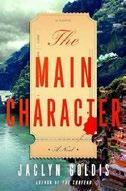
Goldis’ metamystery takes inspiration from one of Agatha Christie’s most famous stories.
In The Chateau (2023), Goldis lured readers into a locked-room murder mystery, a favorite Christie plot device, setting the tale in Provence. Her latest twisty tale of deception takes place, in part, aboard the newly restored Orient Express, and it’s as much a colorful travelogue as a tale of suspense. Rory Aronov is ensconced in the luxury train’s most expensive compartment courtesy of the reclusive bestselling author Ginevra Ex. But three days before Rory boards the train, we witness Ginevra hovering over a dead body. It’s a cinematic and bloody scene that immediately pulls the reader in. The trip, along the west coast of Italy, is a
thank-you gift from Ginevra because Rory was the inspiration for the author’s most recent novel. Ginevra has written many books; each time, she buys a real person’s backstory, fictionalizes it, and molds it into a bestseller. So why, then, is Rory’s brother, Max, on the train, as well as her former fiance, Nate, and her friend Caroline? And why have copies of Ginevra’s new book been stolen before Rory and her companions can read them? Is someone toying with them?
Narrating the book in alternating chapters, Goldis’ travelers are provocatively unreliable, and the sense of uncertainty they bring to the story laces it with foreboding and danger. The purple-haired Ginevra is equally unreliable, and as her backstory unfolds, we realize she may be connected to Rory and company; the only question is how. Goldis unceasingly pits her characters against each other, just as Ginevra does in her novel, and the parallels between Ginevra’s novel and Goldis’ build delicious tension and drama. Grab your suitcase and board the Orient Express for a trip you won’t soon forget.
Gospodinov, Georgi | Trans. by Angela Rodel Liveright/Norton (288 pp.) | $16.99 paper May 7, 2024 | 9781324094890

A web of entangled memories. In this swirling, ruminative novel, translated by Rodel, award-winning Bulgarian poet, playwright, and novelist Gospodinov takes
the mythological minotaur as the central figure in a metafictional narrative that leaps through time and space, from King Minos’ palace to communist Bulgaria, from politics to quantum physics. Gospodinov’s minotaur, though, is no monster, but rather a melancholy being, a lonely Minotaur-boy, one among a long lineage of forsaken children. The offspring of an affair between his mother and a bull, the child was born with the head of a bull and body of a human, proof of the transgression and justifying his abandonment. “There is a sorrow in him,” the narrator—whose name is Georgi—observes, “which no animal possesses.” The minotaur’s plight of abandonment recurs: Georgi remembers being left alone in his family’s apartment in the 1970s while his parents worked, feeling lonely, bored, and abandoned. “Is there a Minotaur Syndrome?” he wonders. “The history of the family can be described through the abandonment of several children. The history of the world, too.” The image of a spiraling labyrinth recurs, as well; the past, Georgi realizes, “never runs in one direction.” Describing himself as an “empath” able to enter the minds of others, Georgi creates a “time capsule” filled with his own memories and the “whole cacophony” of memories of his father and grandfather (another Georgi), friends and neighbors. Reflecting about the “randomness and uncertainty” of physical particles, Georgi likens empathy to a gas, or a “stray cloud,” that wafts through the universe until it is “unlocked…through sorrow,” and perceived by empaths like himself. “Someone,” he believes, “must constantly be watching and thinking about the world so that it exists.”
A playful, profound meditation on storytelling and time.
The mythological minotaur is the central figure in this metafictional narrative.
Grattan, Thomas | MCD/ Farrar, Straus and Giroux (288 pp.)
$28.00 | May 21, 2024 | 9780374608187

A young gay man grows from a life of “reckless impulses” into a reflective adult in this affecting novel. Queer fiction is studded with vaguely amoral, menacing protagonists, characters who know they’re bad and relish it, tossing right back at the world the anomie thrust at them just for being queer. Gordon is 24, raised in Minneapolis by working-class parents who don’t like each other. It’s 2001, before the 9/11 attacks, when he lights out for New York City after having been dumped by his boyfriend—with the help of $200 he stole from said boyfriend. Eventually, he finds work as a dog walker for wealthy art gallery owners Philip and Nicola. They soon ask him to become their personal assistant; that’s when Grattan lets loose his piercing observations of how the rich exercise their power. Nicola is catty and resentful of Gordon’s presence while Philip, patrician and aloof, is kinder. Gordon has a lot to learn in order to maneuver the intricacies of their refined lives— until he makes a mistake that will sever the deep relationship among the three of them. Impish and careless for much of the novel, Gordon grows into someone whose badness diminishes, though his memory of it still pricks like a thorn in his side. It was a wise choice to have Gordon narrate the novel, and he has a memorable voice: funny, dark, and eventually chastened. The novel builds on the self-involved, sometimes cruel protagonists of Edmund White’s early work, though Gordon learns to rein himself in instead of committing more mayhem. This story of a miscreant who grows up will stick with you long after the last page.
Grisham, John | Doubleday (304 pp.) $20.96 | May 28, 2024 | 9780385545990
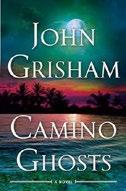
A descendant of enslaved people fights a Florida developer over the future of a small island.
In 1760, the slave ship Venus breaks apart in a storm on its way to Savannah, and only a few survivors, all Africans, find their way safely to a tiny barrier island between Florida and Georgia. For two centuries, only formerly enslaved people and their descendants live there. A curse on white people hangs over the island, and none who ever set foot on it survive. Its last resident was Lovely Jackson, who departed as a teen in 1955. Today—well, in 2020—a developer called Tidal Breeze wants Florida’s permission to “develop” Dark Isle, which sits within bridge-building distance from the well-established Camino Island. The plot is an easy setup for Grisham, big people vs. little people. Lovely’s revered ancestors are buried on Dark Isle, which Hurricane Leo devastated from end to end. Lovely claims the islet’s ownership despite not having formal title, and she wants white folks to leave the place alone. But apparently Florida doesn’t have enough casinos and golf courses to suit some people. Surely developers can buy off that little old Black lady with a half million bucks. No? How about a million? “I wish they’d stop offering money,” Lovely complains. “I ain’t for sale.” Thus a non-jury court trial begins to establish ownership. The story has no legal fireworks, just ordinary maneuvering. The real fun is in the backstory, in the portrayal of the aptly named Lovely,
and the skittishness of white people to step on the island as long as the ancient curse remains. Lovely has self-published a history of the island, and a sympathetic white woman named Mercer Mann decides to write a nonfiction account as well. When that book ultimately comes out, reviewers for Kirkus (and others) “raved on and on.” Don’t expect stunning twists, though early on Dark Isle gives four white guys a stark message. The tension ends with the judge’s verdict, but the remaining 30 pages bring the story to a satisfying conclusion.
Fine Grisham storytelling that his fans will enjoy.
Grostephan, Alan | Dzanc (272 pp.) $27.95 | May 14, 2024 | 9781950539949

Grostephan traces the shifting fortunes of several characters in 1990s Colombia. History reshapes people’s lives in unforeseen ways. When this novel begins, it’s 1990 in Colombia and the power dynamic is shifting. The first sign of this is a labor action against banana planters—one which finds a man known as Orejas setting an office on fire. Grostephan writes: “Today was not just an insurrection against the planters but a general strike across the country.” But the story being told here quickly becomes ethically and emotionally complex, and its central characters—Orejas among them—are often forced to radically reinvent themselves in order to survive. The danger at play here is most acutely felt through the character of Yenifer,
A multifaceted look at a turbulent time in Colombia’s history.
THE BANANA WARS
who must navigate local gossip and a butcher with designs on her bakery after the murder of her husband. A company formed in the wake of the strike, Banana Bolívar, gradually grows to occupy the center of the novel. Two businessmen—the Colombian Rafael and the American Jay—have their own brushes with violence and uncertain allegiances to reckon with. Gradually, the borders between factions blur in ways the characters themselves struggle to articulate: “Everyone is blended together,” Orejas tells Jay at one point. The dizzying effect is part of the point, but so are the ways in which different characters’ morals gradually implode. By late in the novel, Orejas himself has reached a particularly bleak point after linking up with a paramilitary unit, declaring that “they would murder the babies first if the people did not collaborate.” It’s a harrowing tale of survival at increasingly brutal costs. A multifaceted look at a turbulent time in Colombia’s history.
Johnstun, Kase | Torrey House Press (261 pp.) | $16.95 paper
May 14, 2024 | 9781948814928
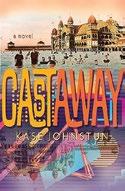
In the early 1920s, Veronica Chavez, the daughter of a fisherman, falls in love with an American poet visiting her seaside village in Mexico. She becomes pregnant with his child, and together they leave Mexico for his home in Seattle. It’s not just Jason’s shabby apartment that shatters Veronica’s naïve romantic fantasies of life with an American man. Her lover proves abusive and unfaithful. Though isolated in a country where she doesn’t speak the language, Veronica finds the courage to flee again. It’s a heady time to be in the United States, especially the Western part of the country. Immigration policies are in flux, and while opportunities abound, so do perils. The same is true of the 1990s,
when teenage Chuy arrives in Salt Lake City to live with his great-aunt Veronica, now in her 80s. Chuy, his mother, his older brother, and his father—who had been living in the U.S. for years to finance their family’s migration—do their best to build a life in Utah, but it’s not easy. They live in a predominantly white Mormon community and under the watchful eye of law enforcement. One pastime that helps them cope with life’s stresses is watching a reality TV competition called Cast Away. Chuy believes that if he trains hard enough, gets on the show, and wins the $1 million prize, he can secure his family’s future. The novel alternates between Chuy’s coming-of-age in the 1990s and Veronica’s in the 1920s with humor and warmth. The tone is charming even as the book tackles challenging themes around family, grief, home, and heartache. The two timelines, the protagonists of different genders, and Johnstun’s attention to the details of Utah’s unique landscape and milieu make the novel feel greater than the sum of its parts.
An intergenerational story that interrogates and celebrates the American dream.
Karger, Sidney | Berkley (368 pp.)
$18.00 paper | May 21, 2024 | 9780593439500

Two expectant parents embark on a road trip full of twists and turns in hopes of reconnecting before their baby arrives.
In six weeks, Biz Petterelli and Wyatt Wallace will be fathers, though they’ve been feeling light-years apart. The two Brooklyn men are preparing for a cross-country babymoon that will hit all the best gay resort destinations: Provincetown, Palm Springs, the works. From there, they’ll head to Baker, California, in time to join their surrogate, Flora, as she welcomes their little one to the world...just as long
as they follow Wyatt’s strictly detailed itinerary. Wyatt has always been a planner and is, in a way, overcompensating for his own absentee father by leaving no spreadsheet, mood board, or newborn checklist unturned. For Biz, this vacation is a last hurrah; lately, he’s been feeling completely freaked about being a dad. Both Biz and Wyatt skirt around communicating their parenting worries, leaving them not only distant from each other, but constantly on edge. It doesn’t help that once they set off on their trip, their resort plans are dashed in one fell swoop. Biz receives an email that he’s been laid off, and Wyatt gets a call from his mom urging him to come home. In their 1992 Volkswagen convertible, Wyatt and Biz rearrange their destinations, stopping to meet family, old friends, and an interesting stranger or two, and to let their dog, Matilda, puke on the side of the road when she pleases. As Wyatt and Biz reflect on their pasts, learn family secrets, and reminisce about their relationship milestones, each road-trip roadblock reminds them of what their future holds—and what they’ll be missing if they don’t fight for it. Karger’s second novel is a heartwarming, comedic journey of two partners finding each other again. The author creates meaningful connections not only between Wyatt and Biz, but between the couple and every character they meet, weaving a road trip of a lifetime with hints of nostalgia, hope, and acceptance. A touching adventure full of laughs, tender moments, and a ton of not-so-baby bumps in the road.
Kerr, Conor | Univ. of Minnesota (200 pp.) $25.95 | June 4, 2024 | 9781517917234

A slow-moving, quietly furious portrait of two Indigenous Canadians and their attempts to ignite a protest movement. Grey Ginther and Isidore
“Ezzy” Desjarlais, 20-something distant cousins living in Edmonton, share a history and a culture—they’re both members of the Métis community—but little else. Grey, a recent graduate of the University of Alberta with a degree in Native studies and a job lined up at a nonprofit, is an eager participant in protest movements for Indigenous rights, eventually organizing her own events and gaining a following on social media. Ezzy, who never went to high school and grew up in and out of foster homes, embodies the apathy that Grey fights against. His days filled with booze and petty crime, Ezzy is mostly focused on the daily struggle of existing as a Métis man in contemporary Edmonton, where discrimination is commonplace: “All I knew was survival mode.” When the two meet at a protest, Grey takes an interest in the aimless Ezzy, who shares her belief in “Land Back” reconciliation for Indigenous communities, if not her idealism about the possibility of meaningful change, and a cautious friendship begins. After Ezzy is released from a stint in prison, he reconnects with Grey, and the two hatch a plan: to steal a herd of bison and move them to a river valley in the center of Edmonton. While the stunt inspires new protests and increased public attention on Indigenous rights, Ezzy’s troubled past and proclivity for violence eventually envelop them both, with devastating consequences. Narration alternates between the two protagonists, though the difference in perspective isn’t always clear; the novel’s measured tone can also feel at odds with the intensity of its plot, particularly in one scene where Grey is threatened with sexual violence. A powerful, if meandering, tale of friendship and hope in the face of intergenerational trauma.

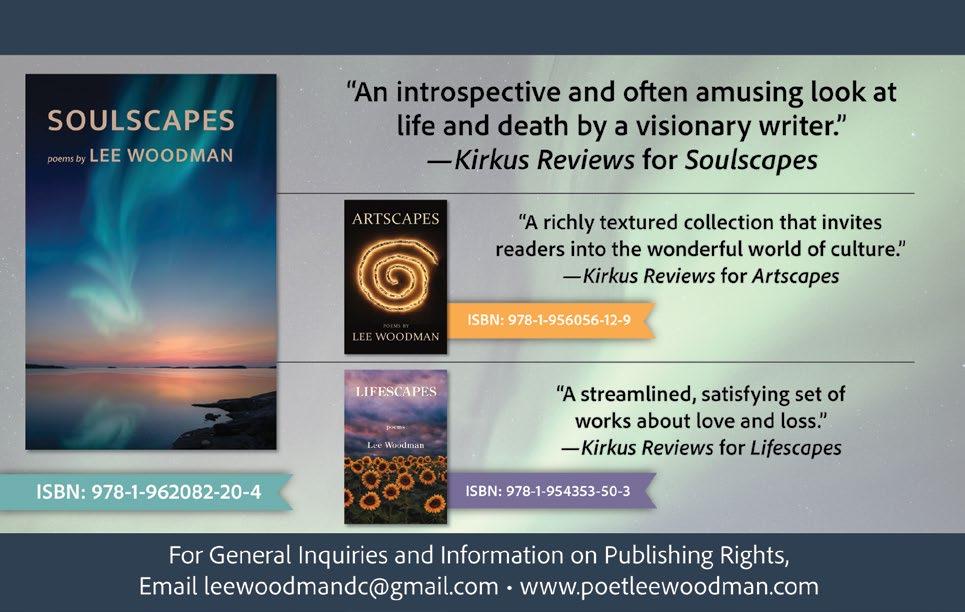

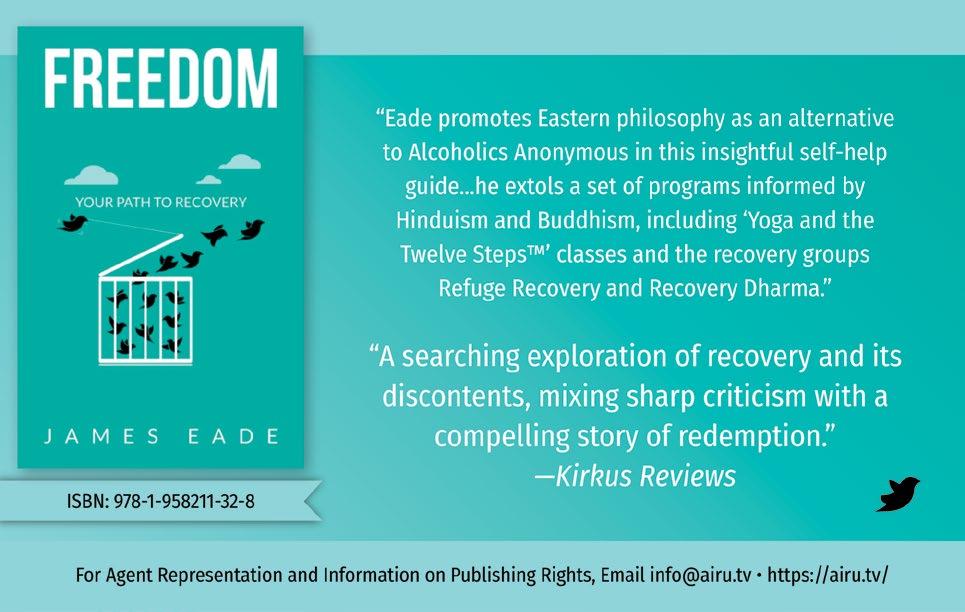

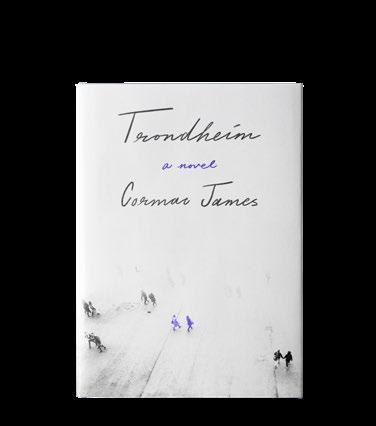
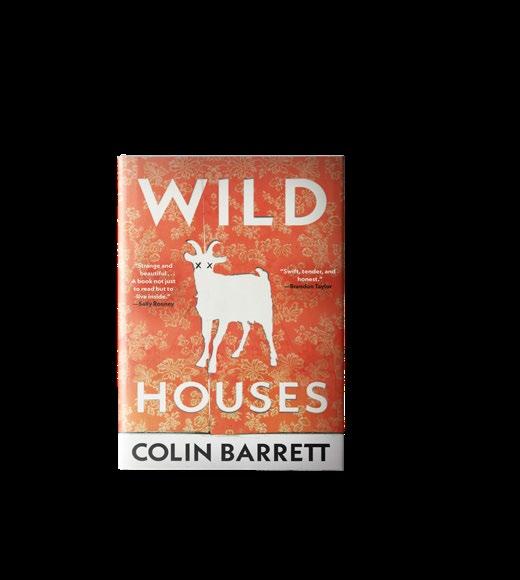

 By Colin Barrett
By Colin Barrett
A pointed and poignant commentary on life on the edges in rural Ireland.
3 Trondheim
By Cormac JamesAn X-ray picture of the subcutaneous breaks and sprains in a rocky relationship.
4
Irish in its lyricism and landscape, universal in its portrayal of the vagaries of the heart.
Captivating, frightening, and a singular achievement.
This is an introduction to a writer of great imagination.Kirkus Star
Lacroix, Myriam | Overlook (240 pp.)
$27.00 | May 7, 2024 | 9781419773518
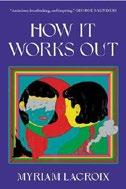
This mesmerizing novel-in-stories traces a relationship between two women across different realities. There is always an Allison and a Myriam. There is occasionally fame or fortune or a Woohoo’s Haunted Castle shirt. Our protagonists might not always be human or happy together, but there is always palpable desire and tension between the two and an edge of surreality to the lives they lead. In “The Meaning of Life,” the opening chapter of Lacroix’s debut novel, Allison and Myriam are an established couple who lay claim to a baby abandoned in an alleyway. The strangeness of this particular life is Coen brothers-esque: While danger is very real, everyone muscles through the peculiarity that surrounds them with confidence and humor. The immediate follow-up, “Love Bun,” illustrates how far afield Lacroix is willing to go, chronicling the women’s matter-of-fact slide into cannibalism after they discover the euphoria that comes with consuming even a tiny part of a loved one. Power dynamics shift across chapters—in one, Allison is the more stable half of their celesbian couple; in another, Myriam is Allison’s CEO boss—but no matter the scenario, Lacroix shows a gift for cutting to the heart of things: the way you inevitably open yourself up to both injury and transformation when you try to love and be loved. Some readers may wish for a stronger throughline (only
“Love Bun” gets an overt response in “The Feature,” the novel’s last chapter), but for those willing to ride the wave, there are great rewards. As kaleidoscopic as the queer experience, this is an introduction to a writer of great imagination.
Levy, Honor | Penguin Press (224 pp.) $27.00 | May 14, 2024 | 9780593656532
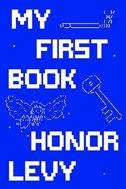
Part essay, part story, part diatribe, part diary—even part dictionary— this book defies definition.
The narrators of this collection—a loose compilation of short works cut from Gen Z angst and internet gobbledygook—share more than a milieu. In “Love Story,” the fairytales of our youth are supplanted, “Once upon a time” replaced with “He was giving knight errant, organ-meat eater, Byronic hero....She was giving damsel in distress, pill-popper pixie dream girl.” Later on, “Halloween Forever” showcases another form of affection, that between an internet rabbit-hole denizen and “her” FBI agent, the one the meme says must be watching her. “Internet Girl” catalogs the protagonist’s descent into the digital, from Neopets to naked chat rooms. Managing to reference 2 Girls 1 Cup and 9/11 in a single sentence, the narrator continues apace, jumping from cultural touchstone to cultural touchstone without stopping for breath. The collection does take the occasional detour across a more traditional narrative arc, as in “Cancel Me,” in
which the main character is locked out of a party. Standing in the rain with two dimwitted stand-ins for male mediocrity, she contemplates cancel culture, absolution, and, not for the last time, edgelords. The first-person narrators of these stories, only one of whom is named, share a hodgepodge of leftist beliefs not quite coherent enough to serve as evidence in the debate over whether they are in fact the same person. This book is billed as fiction, a truth that may recurrently shock the reader. The fictionality here is another layer to be parsed, along with thick films of irony and sincerity that demand to be scrubbed through by hand. If you text with a single index finger, steer clear. The girls who inhabit this world are only occasionally wise, but always clever. Oddly exquisite.
Lin Yi-Han | Trans. by Jenna Tang HarperVia (272 pp.) | $27.99 May 21, 2024 | 9780063319431

“It turned out that most people lacked imagination for other people’s suffering.” The corrosive, hidden effects of sexual violence are illustrated in this haunting account of the experiences of women and girls in contemporary Taiwan. Young adolescents and inseparable friends, Lui Yi-Ting and Fang Si-Chi, share a love of literature and head off together to live in Taipei to attend a competitive high school. There, Si-Chi reveals that she is the “girlfriend” of their middle-aged tutor, neighbor, and cram-school instructor, Teacher Lee. Despite Yi-Ting’s objections, Si-Chi continues her relationship with the reptilian teacher (unaware that she is just one in a line of girls the predator has groomed and seduced). Unable to disclose the nature of the troubling relationship to others, Si-Chi convinces herself that Teacher Lee is her first love, though the
coercion, secrecy, and sexual violence begin to manifest themselves in troubling memory lapses. As Si-Chi begins a descent into an all-consuming mental illness, she maintains a friendship with a slightly older married woman from the apartment building that was her childhood home. Hsu
Iwen, who gave up doctoral studies in literature upon her marriage, had been a companion and source of encouragement to the girls during their earlier school years. Despite her suspicions, Iwen—herself abused and beaten—is not able to convince Si-Chi to reveal her troubling truth. The selective blindness surrounding Si-Chi’s situation is echoed in the abysmal treatment of one of Teacher Lee’s previous victims, who launches a campaign to expose him online. Tang, who lyrically translated Lin’s only novel after the 26-year-old author died by suicide in 2017, credits the author with changing the voice of the #MeToo movement in Taiwan. A harrowing account of a personal hell.
Medina Mora, Nicolás | Soho (480 pp.) $27.00 | May 7, 2024 | 9781641295642
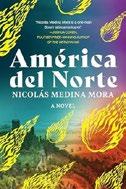
A piercing critique of the shallowness of academia and the soufflélike weightlessness of American culture. As romans à clef go, this doesn’t get much more clef-y. A young Mexican journalist (like Medina Mora), Sebastián Arteaga y Salazar, gets a scholarship to Iowa (like Medina Mora), and, on graduating, spurns residence in the U.S. to return to Mexico City (like Medina Mora). On that scaffolding the author builds a steely-eyed but not unsympathetic portrait of the people he meets. “In Mexico, not even the oligarchs are happy,” notes Sebas, as his American friends dub him. He comes from a well-to-do household, its head a Supreme Court judge, in a country so
riven by inequality that he’s moved to ask his police bodyguard, “Why haven’t the poor killed the rich already?” He arrives in the promised land of El Norte brilliantly well versed in literature, philosophy, history, art, to find most of his would-be compatriots profoundly ignorant. The Swiftian cast of characters includes the “Austro-Hungarians” of Sebastián’s privileged class and family and, in Iowa, writer wannabes dubbed “the Decanonizer,” “the Pseudo-Anthropologist,” and “the Delightful Kid from Michigan.” What he learns from those north-of-the-liners, including a girlfriend who’s a groupie of all things Latine, is that, as Habsburgian as he might be, he’s still just another brown person to them. More, after years in the U.S., “I loved America more than myself, but America didn’t love me back,” which causes him to head home, now disabused. Among many highlights: a splendid evisceration of “a Proud Boy-in-training” writing student and a superb closing paragraph that quietly evokes The Great Gatsby while being utterly original. A debut from an author to keep on your radar, assured, darkly funny, and impeccably written.
Nodarse, Alejandro | Flatiron Books (304 pp.) $28.99 | June 4, 2024 | 9781250326515
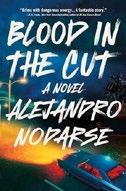
A young Cuban American man just released from prison returns home only to stumble into a world of illegal hunting and murder.
You will need a strong stomach to enter the brutal world of game hunting, illegal slaughterhouses, and human violence depicted in Nodarse’s first novel. Set on the darkest edges of modern-day Miami, the book follows the path of Ignacio “Iggy” Guerra, who has just been released from prison after having been arrested for selling oxycodone he stole from his mother’s pharmacy. Now,
three years later, Iggy is returning home to a working-class Cuban American neighborhood that is significantly different from what it was when he left. His beloved mother is dead, the victim of a hit-and-run driver. The pharmacy is gone. His angry, embittered father is drinking too much and drowning in debt. A shiny new competitor is threatening his father’s butcher shop, and when Iggy finds his father alone one night, covered in blood, he really begins to worry. What exactly is he butchering? His father won’t talk, but his connection to a shady big-game hunter leads Iggy into a dangerous mission in the Everglades—and to the truth about what happened to his mother. Nodarse creates an unsettling atmosphere and sheds some light on real Miami problems, the cost of gentrification among them, but the book’s overwhelming machismo doesn’t allow for much interesting character development. Villains talk like cartoon bad guys, and the question of how far Iggy will go for vengeance falls flat because the reader is never invested enough in his redemption to care. The various mysteries fueling the story aren’t all that hard to figure out, and a side plot involving a rogue animal activist develops too awkwardly to make much impact. Not even an impromptu street race through the Everglades can make up for the missteps. A bloody, macho redemption story that never quite takes off.
Nwabineli, Onyi | Graydon House (320 pp.) $28.99 | May 28, 2024 | 9781525896033

Scarred by a childhood and adolescence spent as the face of her stepmother’s social media empire, a London woman tries to protect her little sister from the same fate.
Anurị Chinasa is not okay. While she runs two thriving businesses and, at 25, has enough money to afford a two-bedroom apartment in London, she struggles with alcoholism, likes to verbally abuse consenting men online, and is semi-estranged from her father, Nkem, and her stepmother, Ophelia. Enabled by Nkem, Ophelia, a famous blogger, made a name for herself on the back of her experiences raising A.nurị, sharing photos, videos, and anecdotes that won her millions of fans and lucrative sponsorships. For A.n . urị, the material benefits of such fame and fortune couldn’t outweigh the social and emotional drawbacks—constant scrutiny, a lack of anonymity, even a kidnapping attempt—but Nkem and Ophelia didn’t see it that way. When An . urị cut ties with the business at age 18, she was soon replaced by Nkem and Ophelia’s new baby, Noelle. Five years after Noelle’s birth, Anurị, still suffering the ill effects of hypervisibility, sues Ophelia in an attempt to force her stepmother to expunge her social media accounts and commercial ventures of anything A.n . urị-related. Roughly around the same time, the relentlessly momagered Noelle begins to exhibit worrisome behavior. Concerned for her sister’s welfare, A.nurị undertakes a new crusade against the backdrop of the ongoing lawsuit: to liberate Noelle from stardom. For all the righteousness of A.n . urị’s cause, Nwabineli’s cleareyed narrator resists the temptation to wholly vilify Nkem and Ophelia; brief chapters told from their perspectives, coupled with the narrator’s occasional injections of background information, offer insight into why they made the mistakes they did. In many ways, this novel recalls Zadie Smith’s White Teeth (2000). Both novels foreground immigrants and immigrant struggles, including racism and xenophobia (Nkem and an infant Anurị emigrated to England from Nigeria after A.n . urị’s
mother died; Ophelia’s contrasting whiteness is a subtle point of tension); both novels have the same sweeping third-person-omniscient point of view, peppered with wry observations about life and humanity. Though it isn’t a modern classic like White Teeth, this novel tells a moving, thought-provoking story that interrogates the toxic and parasocial dynamics associated with influencing. A parable for the social media age that critiques without resorting to alarmism or preachiness.
O’Hagan, Andrew | Norton (608 pp.) $29.99 | June 18, 2024 | 9781324074878
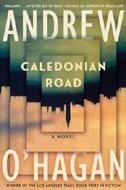
An epic way-welive-now social novel set in a rapidly corroding London.
Campbell Flynn, the center of O’Hagan’s multivalent satire, is a public intellectual admired for his books on fine art, writing regularly for hightoned opinion and fashion magazines. To make a quick buck, he dashes off a self-help book, Why Men Weep in Their Cars, but to avoid being seen as associated with such déclassé work, he schemes to have an actor pose as its author. From this modest bit of deceit and money-grubbing, O’Hagan spins a heady but credible tale that includes street toughs, immigrants, British aristocrats, political leaders, Russian oligarchs, human traffickers, and the worlds of media, art, and fashion. To educate himself on youth culture and the world beyond his social set, Campbell confers with one of his students, Milo Mangasha, who hacks
An epic way-we-live-now social novel set in a rapidly corroding London.
into Campbell’s private life and unearths a host of seamy associates; various crises and tragedies ensue in the year that follows. O’Hagan’s clearest model for this high-and-low worlds-in-collision tale is Tom Wolfe’s The Bonfire of the Vanities, and O’Hagan shares Wolfe’s gift for delivering a panoply of unique characters and clearly outlining their motives. The novel has its flaws: O’Hagan’s eagerness to tick the box of every element of contemporary life, from Bitcoin to drill music to deepfakes, demands some forced connections. (Milo’s girlfriend’s brother is connected to a human trafficking scheme; Campbell’s friend is married to a firebrand columnist, and their son is a shrill environmental activist.) The comeuppances are generally predictable, and while Wolfe’s manic style highlighted how greedy and hubristic his characters were, O’Hagan’s approach is more sober and at times drowsier. Still, there’s no doubting the scope of his ambition; when future generations seek to understand post-pandemic Britain, this will be one of the first places they look.
A sprawling critique of so-called polite society.
Palliser, Charles | Guernica Editions (212 pp.) | $18.95 paper May 1, 2024 | 9781771838856

Sympathy may be a virtue, but it can also get you into plenty of trouble. The author, who established himself as a maker of intricate puzzles with his first novel, The Quincunx (1989), provides another in this wartime tale of a family’s efforts to protect a young girl from a vicious enemy. This is not a portrait of World War II Europe or a fictionalized account of Anne Frank’s life. Palliser is interested less in external details
A woman and a young man forge an unlikely friendship amid a global contagion.
SLEEPAWAY
than in the situation’s psychological aspect, exploring the pressures building inside an ordinary family plunged into an extraordinary situation. The narrator, an unnamed bookkeeper in an unnamed European city, describes the invasion of his country and the way one of his younger daughter’s schoolmates comes to live with them. The girl’s wealthy parents, who are on a trip, have been cut off by the invasion. The narrator feels sorry for her, but his feelings are hardly altruistic. He hopes the girl’s father “would be so grateful that he would reward me with a well-paid post” when he returns. The girl, who seems appreciative at first, proves to be a master manipulator with a “mere veneer of charm” who sets the family members against each other. Though they realize they’ve made a mistake, they hesitate to send her home. They’ve already told too many lies to snooping neighbors and worry about being found out. They also cling to the hope of getting a reward even when it’s clear this isn’t going to happen. The girl belongs to an unspecified ethnic community targeted for destruction by the country’s new “puppet dictatorship,” whose sinister plan is hidden behind a seemingly beneficial agenda. Palliser gradually tightens the screws in various ways and the family keeps hiding the girl not out of any deep moral sense but because it’s too late to do anything else. Some readers may feel this plot could have been explored in a novella or short story, but Palliser manages to keep up the tension as his narrative drives to its tragic, unsettling end. A cynical story about how, in the absence of moral courage, terror and self-preservation can also be powerful motivators.
Palmisano, Erin | Grand Central Publishing (352 pp.) | $18.99 paper May 7, 2024 | 9781538757499

An American consumed with wanderlust comes to a Greek island where she feels strangely at home among the locals. Palmisano’s debut overflows with the features of romantic escapism: beautiful scenery, delicious food, women empowered by gentle magical powers, and a variety of romances in which love must conquer complications. Since graduating from college seven years ago, the plucky heroine, Marjory “Jory” St. James, has worked as a waitress (proudly eschewing her estranged father’s wealth) to pay for her frequent travels. She heads, purposely without a guidebook, to the Greek island of Naxos and finds lodging in a village called Potamia. Oddly and too conveniently, she is the only tourist in a town touristy enough that an international boutique hotel chain wants to purchase the guesthouse where she’s staying. Jory becomes enmeshed in the lives of three villagers with special powers received from female ancestors and a magic stream. Guesthouse owner Cressida Thermopolis’ cooking imparts emotions with transformative powers to those who partake. Elderly Mago’s power lies in her ability to sew exactly what the wearer needs. Unhappily married Nefeli sees “portents.” But the three women are also suffering, Cressida emotionally immobilized after her young husband’s death, Mago afraid to marry her longtime lover because she might
have cancer, and Nefeli unable to express love to or receive love from her husband. If Jory’s full-throttle acceptance by the others as they eat exquisite meals and share emotional wisdom is implausibly easy, plausibility is not the point. Meanwhile, Jory meets the obligatory handsome stranger, another seemingly footloose American traveler, and their mutual attraction overpowers her self-proclaimed desire to avoid emotional entanglement. But is he to be trusted? And will all these women come to grips with their fears and their powers to shape their futures? Is there any doubt? Complete with a section of travel tips and a favorite recipe, Palmisano’s novel coddles the reader like an airplane blanket.
Prufer, Kevin | Acre (184 pp.)
$20.00 paper | April 15, 2024 | 9781946724717
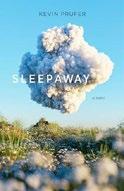
A woman and a young man forge an unlikely friendship amid a global contagion. This slim, artful novel by Prufer, a poet, imagines a world consumed by a peculiar viral phenomenon—communities are struck by the “Sinaloan condition,” mysterious but brief attacks that force people to collectively nod off for a minute or more. Tornado sirens have been repurposed to sound the alarm when the “sleeps” are coming, but they still induce calamities on the roads and skies. Worse, though most people wake up, some are left in extended comas; Glass, a 12-year-old boy in Missouri, has lost his father to the illness that way and is living with a family friend. Nearby, a young woman named Cora has similarly lost her boyfriend to the condition; fearing the same fate for herself, she hoards a stash of Eight Track, a black-market drug that keeps users awake when the sleeps blow through. That alertness allowed her to save one of Glass’ friends from drowning when a sleep hit, prompting Glass to bond with her. But Prufer resists a simple
A compelling, darkly enchanted tale of desperation and dissolving family ties.
THE LOCKMASTER
narrative of friendship and found families; the book is hard not to read as a Covid-19 allegory, concerned with the ways people take divergent and contradictory paths through a crisis. Pointedly, Glass’ father studied ancient dead civilizations, and the plot turns on how Glass and Cora struggle to survive as the sleeps get longer, suspicions grow about what happens to those who don’t wake up, and the side effects of Eight Track (especially severe disassociation) take a toll. “The world ending for you ain’t the same thing as the world ending,” one character says, which is as close as this story gets to optimism; though Prufer doesn’t attempt to deliver a clear message about society in a crisis, the book is suffused with anxiety over our collective inability to respond cohesively to collective ills.
A taut and piercing dystopian tale.
The Lockmaster
Ransmayr, Christoph | Trans. by Simon Pare Seagull Books (200 pp.) | $25.00 May 6, 2024 | 9781803093703
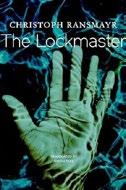
When a brooding father kills five innocent people, his son must confront the violent spiral of his own life. After the outbreak of water wars across all the world’s continents, access to freshwater streams and precious inland reservoirs becomes top priority for the planet’s fracturing assemblies of dissolving city- and nation-states. The narrator of Austrian writer Ransmayr’s enthralling
short novel, a hydraulic engineer, sets off to build dams in Brazil, only to learn that his father, the Master of the Falls, responsible for manning the locks in their Central European hometown, has committed a horrible atrocity by flooding the channel, killing five people. A year later, the father disappears into the thundering falls aboard a rock-salt barge, and when the narrator attempts to unknot the tangle of his family, his own violent past muddles the telling. Ransmayr’s taut prose and unnerving plot are matched by a skillful penchant for folktale flourish. Mermaids lurk along coastlines of the narrator’s mother’s homeland on the Adriatic. His sister receives a diagnosis of brittle bone syndrome and must live like a glass fairy. The father, encaged by an obsession with a bygone past and prone to angry outbursts, proves to be the devil himself, for who else could “take on the form of a waterlily and the next instant become a buzzing dragonfly, a kingfisher, a bloodthirsty troll.” This is a foreboding vision of a not-so-distant future. A compelling, darkly enchanted tale of desperation and dissolving family ties.
Roberts, Nora | St. Martin’s (432 pp.)
$30.00 | May 21, 2024 | 9781250289698

Redbud Hollow, Kentucky, leaving their children, 12-year-old Thea and 10-year-old Rem, for a two-week taste of heaven. The children love Grammie Lucy far more than John’s snooty family, which looks down on Cora. Lucy, a healer with deep Appalachian roots, loves animals, cooks the best meals, plays musical instruments, and makes soap and candles for her thriving business. Thea—who’s inherited the psychic abilities passed down through the women of Lucy’s family—has vivid magical dreams, one of which becomes a living nightmare when a psychopath robs and murders John and Cora as Thea watches helplessly. Thea’s description of the killer and her ability to see him in real time help the skeptical police catch Ray Riggs, who goes to prison for life. Although Thea and Rem go on to have a wonderful childhood with Grammie, Thea constantly wages a mental battle with Riggs, who tries to use his own psychic abilities to get into her mind. Over the years, Thea uses her imagination to become a game designer while the more business-minded Rem helps manage her career. Thea eventually builds a house near Lucy, where a newly arrived neighbor is her teen crush, singer-songwriter Tyler Brennan. Tyler has his own issues and is protective of his young son but slowly builds a loving relationship with Thea, whose silence about her abilities leads to a devastating misunderstanding. At first Thea tries to keep Riggs locked out of her mind. As her powers grow, she torments him. Finally, she realizes that she must win this battle and destroy him if she’s ever to have peace. A touching story of love and grief ends in an epic battle of good versus evil.
Roberts’ latest may move you to tears, or joy, or dread, or all three.
Every summer, John and Cora Fox visit Cora’s mother, Lucy Lannigan, in

For more by Nora Roberts, visit Kirkus online.
Rosenblum, Emma | Flatiron Books (272 pp.) | $28.99 | May 14, 2024 9781250906557
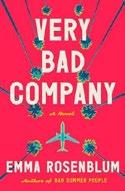
In Rosenblum’s debut, Bad Summer People (2023), adults misbehaved on vacation. Here, they do it on a high-flying corporate retreat in Miami.
Aurora CEO John Shiller’s is the first perspective of the book. He’s on the way to identify a body. Rewind a couple of days and meet Caitlin Levy. She just got hired to run events at Aurora, a wildly successful ad-tech startup that has nothing to do with events. Why did she take that job? Three million dollars. What is that job? Caitlin has no idea and, possibly worse, she’s a fish out of water at the extremely bougie retreat, where the rest of the C-Suite executives have well-established relationships (some siblinglike, some sexual). Everyone is angling for more money, some of them have secrets, and all of them think John is a grade-A weirdo (which he is, possibly on purpose) but remain loyal to him for reasons they cannot quite articulate. The identity of the body is revealed earlier than expected, but information about the murderer and motive are leaked sparingly along with other buried facts that threaten the entire company. This is not a tight ship. The crew members are chummy and casual with each other, high performing but emotionally immature, terrible at keeping secrets, and ultimately out only for themselves. They are also just sympathetic enough to spend time with, even care about. Readers get to inhabit several characters’ heads, learning their doubts and insecurities. While the book is not as well constructed as Rosenblum’s debut, it is funnier. The CEO’s Winston Churchill obsession alone is a hilarious running joke. And, again, the author is fantastic at showing the subtle corruption of wealth and how those who have it justify both the having and the wanting more. A fun, decadent ride.
Stephens, Leslie | Scout Press/ Simon & Schuster (320 pp.) | $28.99 June 25, 2024 | 9781668034316

In the near future, the world is run by WellCorp but all is far from well.
Stephens’ debut begins in “Zone 874, Pacific Ocean, 29 Days Post-Launch,” where we find one of our two heroines, Maggie, alone and afloat in a vessel called a WellPod, which is about to serve her a so-called latte made of mushrooms and root vegetables. “When Maggie could see the brown sludge that coated the bottom of the mug, she placed it back on the coaster, triggering its descent into the table at the same time her gratitude journal slid out from a lower compartment.” A passion for worldbuilding continues to drive this story of Lenses, Devices, Injectibles, Pohvees, WellNests, EarDrums, and much, much more as we go landside and meet Maggie’s live-in partner, Noa, who works at WellCorp’s Malibu campus, where she and Maggie have been assigned a high-tech apartment. With wildfires, earthquakes, and drought having wiped out most of the rest of California, volunteering for a Pod voyage was Maggie’s only option for getting out of town—and she really needs a break to figure out what to do about her unexpected pregnancy. Oops. In chapters dated by number of days pre- and post-launch, a complicated story unfolds. One has to do with corporate malfeasance and whistleblowing at WellCorp—were the Pods really ready to launch, and is there a major storm underway? Others involve infidelities and betrayals both past and present. It’s hard to keep up with which scary threat you’re supposed to be worrying about and which characters you’re rooting for—and the constant explanations and exposition dry up the juice. The novel is happiest when preparing and serving futuristic
meals. “The hatch of her NutriStation opened and Maggie reached inside for her plate. The diagram projected through her Lens mapped out the baked coconut bacon, sun-yellow cherry tomatoes cooked in lab-grown avocado oil and coated in ancient grains aside tempeh topped with a dollop of collagen- and protein-fortified macadamia nut labneh.” Sounds better than the latte, anyway. For connoisseurs of speculative fiction who enjoy detailed worldbuilding.
Stout, Rex | Hard Case Crime (320 pp.) | $15.95 paper
June 4, 2024 | 9781803364865
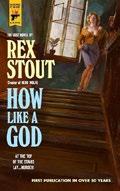
The frame story of Stout’s first novel, out of print since 1929, follows a gun-toting man up several flights of stairs while the rest of the tale, unfolding in a long series of interspersed flashbacks, explains where he is and what he plans to do.
By any rational standard, William Barton Sidney has it made. His sister Jane’s decision to seize control of the family business when their father dies ends up costing him nothing because his old school frenemy, wealthy Dick Carr, hires him as assistant treasurer of the Carr Corporation and keeps raising his salary for no particular reason. After a distinctly bumpy series of amatory encounters, Will marries Dick’s sister, Erma, who makes a perfectly serviceable wife for anyone who’s not bothered by her many blasé infidelities. So Will, nothing daunted, embarks on a series of adulterous relationships of his own, the most damaging of them with someone who emerges without warning from his past. Maybe he doesn’t have it made after all. Stout presents this doom-laden backstory in an innovative second-person narrative that’s at once uncanny, disorienting, and
Crazy Rich Brits are just as scheming, fabulous, and fun to read about.
brutally self-critical: “You do, after all, know fairly well what’s going on; it’s only when you presume to take a hand in it that you become an idiot.” The best indication that he’ll launch Nero Wolfe and Archie Goodwin on their far less disturbing adventures in five more years is the fascination already well established here with the nexus between emotional turmoil, murder most foul, and the apparently normal rhythms of business and domestic life.
Perfect for fans who thought reading Wolfe’s case files over and over told them all there was to know about their creator.
Sykes, Plum | Harper/HarperCollins (384 pp.)
$28.00 | May 14, 2024 | 9780062429087
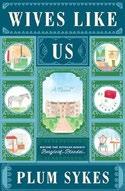
The world’s most competent butler navigates a storm of romantic and financial complications among the British elite.
Sykes gives Kevin Kwan a run for his money in this saga of obscene wealth, designer outfits, miniature dog breeds, and over-the-top landscaping set in Oxfordshire, a rural area of vast estates now mostly in the hands of the nouveau riche. Ian Palmer, a summa cum laude graduate of the Greycoats’ Butler Institute in Mayfair, is known not just for his impeccable outfits, his Colin-Firth-in- A-Single-Man eyeglasses, and his vintage Gucci
loafer collection, but for his superhuman ability to manage his employers’ lives. His boss, Tata Hawkins, needs his help as never before since her businessman husband, Bryan, has opened a spot in his in-house mentoring program to a “bikini influencer” named Tallulah de Sanchez (“twenty-six, looked thirty-six due to addiction to eyelash extensions and lip fillers”) and her dog, Pikachu. (As Kwan does with educational resumes, Sykes intros each character with a beadyeyed assessment of their real and apparent ages.) Infuriated by finding a receipt in Bryan’s office for a piece of jewelry that certainly wasn’t a gift for her, Tata has taken her beloved factotum and her daughter, Minty, and decamped to a guesthouse on the property, creating a tsunami of snarky gossip and leaving Ian with nowhere appropriate to store his loafer collection. Of course the solution involves throwing a massive party—supposedly an intimate “Kitchen Supper”—to welcome the area’s newest arriviste, an American named Selby Fairfax, and naturally this causes Tata’s friends to compete by throwing their own parties, one of which is a hilariously elaborate equestrian event called a hack. Poor Selby has had to flee New York after her husband very publicly left her for his boyfriend, but Sykes thoughtfully provides her with a Mr. Darcy, a hot, rich farmer who storms into the story when her children accidentally kill his cow. Crazy Rich Brits may not have the amazing cuisine of their Asian counterparts, but they are just as scheming, fabulous, and fun to read about.
If you like this sort of thing, you’ll dive in and never look back.
Usher, Emily | Random House (432 pp.)
$29.00 | June 4, 2024 | 9780593731291

Jennifer is haunted by her past life—can she make peace with the destruction it caused, or will it consume her?
Present-day Jennifer is sober, lives in London, and works at a cafe; her life is stable, routine. But her world is upended when she’s unexpectedly visited by someone from her past. This person, Denz, brings with him a tidal wave of memories—some good, many traumatic. Suddenly, Jennifer—back then “Neef”—is 12 years old again, first meeting Danny, the boy who would go on to shape her adolescence in ways both expansive and wounding. Both Danny and Neef are outsiders in their small town just outside Leeds—Danny because he’s Black and Neef because she’s a newcomer. Despite the efforts of Denz, Danny’s father, to keep the two apart, Danny and Neef are drawn to one another: by turns romantically, platonically, frenetically. They grow together, toward and away from one another, through their teenage years. They dream of moving to London: Danny, a brilliant gardener, will be a botanist and horticulturist, and Neef, a talented writer, will make a name for herself in the big city. But they are crippled by the systemic injustices of their town—addiction, poverty, racism, housing insecurity, assault. Years later, Neef—now Jennifer—is confronted with her still-raw past. Usher’s prose, much of it written in northern English dialect, is electric—each character, place, and location surges with a gripping urgency and vitality. Her narrative world, however chilling, feels totally honest, alive, and exacting. Usher’s pacing, too, is remarkable; each turn is unexpected and yet wholly fitting, each
transition between present and past seamless and ensnaring. Both harrowing and hopeful, a generative bildungsroman from an exciting debut novelist.
Wayne, Teddy | Harper/ HarperCollins (320 pp.) | $30.00 May 28, 2024 | 9780063353596

A summer among the Massachusetts elite introduces a young law student to a life and temptations he hadn’t imagined. It begins with an offer that Conor O’ Toole can’t refuse—free lodging in a cabin on Cutters Neck, a gated community of posh summer homes, in exchange for providing tennis lessons to the lawyer who has invited him. He can also solicit other residents to pay for lessons. A comedy of manners seems to unfold, as the rich rise above the pandemic, insulated by their wealth, while the servants remain masked and keep a proper distance. The novelist expertly inserts himself inside Conor’s psyche, and it seems like a pretty comfortable place, for protagonist and reader alike. A good-looking man with a tennis pro’s physique, Conor tries to stay focused on studying for the bar exam and scheduling enough lessons to provide medicine for his diabetic mother. He’s a dutiful son, and she lives in the apartment they share in Yonkers. Soon enough, the richest divorcee on “the neck” becomes his most lucrative customer, a sexually voracious and domineering woman who employs tennis lessons as blatant seduction and starts paying him twice his going rate to service her. The sex is explosive beyond anything he had experienced, although debasing (and thus all the steamier). He rationalizes that he is doing this to provide for his mother,
A summer among the elite introduces a law student to temptations he hadn’t imagined.
THE WINNER
but he gets a rush from the sex. (And the money.) Then a younger woman arrives, complicating the arrangement. They begin to see each other a lot. He finds himself juggling the sexual fireworks with the one and the slower-burning love he is kindling with the other. He can’t quit either, and he vows to keep his relationship with each a secret. But something has to give. Something does. Conor’s seeming innocence turns insidious, unnerving. And the summer idyll, the comedy of manners, turns gruesome, as lies and rationalization lead to way worse.
A novel that puts a fresh twist on getting what you deserve.
Weston, Kate | Random House
(352 pp.) | $18.00 paper
May 14, 2024 | 9780593731536
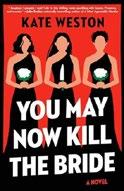
A death at a bachelorette party makes a group of childhood friends question what they know in this adult debut.
Tansy, Lauren, Farah, Saskia, and Dominica have been friends since elementary school. Thick as thieves since Dominica saved the rest from a bully on the playground, they are now in their mid-30s and in very different places in life: Saskia married rich and lords it over the others. Dominica is a hotshot divorce lawyer, always on her phone.
Lauren makes do at a makeup company while mooning over her ex-boyfriend (and Farah’s brother), Joss. Farah’s long-awaited wedding is coming up but has been overshadowed by Tansy’s last-minute whirlwind marriage to a man she barely knows. At Tansy’s bachelorette party, emotions are simmering when what seems to be a tragic accident leaves one of them dead. But as the accident starts looking like murder and the friends try to carry on with Farah’s wedding preparations, each begins to wonder if one of them may be more than she seems. The book is full of twists and turns, swiftly pushing forward while dropping in short flashbacks of the girls’ growing- up years to flesh out their relationships, and it’s hard not to want to know exactly what’s going on. It can be hard to follow, however, as the point of view changes between paragraphs, sometimes within the same sentence. Though the characters are drawn with real depth, they spend their time showing their disgust with each other while telling the reader how close they are. The only thing that seems to connect them is the duration of their relationships, not the quality. Their friendship can be hard to believe.
An interesting but hard-to-follow thriller.

For more by Kate Weston, visit Kirkus online.



Apple TV+ is adapting William Gibson’s seminal cyberpunk novel.
William Gibson’s Neuromancer is headed to the small screen, Variety reports.
Gibson’s cyberpunk novel, published in 1984 by Ace, is considered a foundational
work of science fiction, and one that predicted the internet age. It tells the story of Case, a data thief who is hired to take on a powerful artificial intelligence; he must complete the job in order to have his nervous system restored.
In a 2014 essay for Kirkus, Andrew Liptak wrote of the novel, “The book depicted a dystopian future and codified a simmering movement within the genre: Cyberpunk. It’s a claustrophobic, cynical and raw take on the future, and it became an instant hit, one that changed science fiction for years to come.”
The planned series, developed by Apple TV+, will span 10 episodes, with the pilot directed by JD Dillard (Devotion). The showrunner will be Graham Roland (Tom Clancy’s Jack Ryan).
Dillard and Roland told Variety, “Neuromancer has inspired so much of the science fiction that’s come after it and we’re looking forward to bringing television audiences into Gibson’s definitive ‘cyberpunk’ world.”
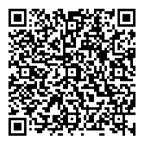
In a thread on X, formerly known as Twitter, Gibson addressed the adaptation, writing, “I don’t have veto power. The showrunner and director do, because the adaptation’s their creation, not mine. A novel is a solitary creation. An adaptation is a fundamentally collaborative creation, so first of all isn’t going to ‘be the book.’”
—MICHAEL SCHAUB

Carcaterra, Lorenzo | Bantam (288 pp.)
$28.00 | May 7, 2024 | 9780593499214

Back in action on her beloved Italian island of Ischia, amateur detective Nonna Maria uses her grandmotherly wiles to prevent the killing of a carabinieri captain and to help lead a young woman to her late grandfather’s hidden treasure.
Nearly a decade ago, before he settled in Ischia, the old widow’s friend Captain Paolo Murino and his team of carabinieri took down the notorious Red Squad mob and its ruthless boss, Guido Ostino, up in Florence. From prison, Ostino has plotted a revenge killing, which Nonna and another friend, a reformed hit man called Il Presidente, hope to thwart. The unknown treasure is in one of the caves on Ischia where contraband and other stuff has been hidden for decades. Nonna calls on a duo that knows the caves, dubbed the Magician and the Pirate, to find the goods, which rival treasure hunters will do anything to lay their hands on. In both cases, Nonna Maria isn’t fazed about the possible risks to herself. Her paramount concern is to help friends in need, whatever their backgrounds— making sure they’re properly caffeinated and fed with great home-cooked meals. Though the dual plots are nicely handled, the novel is best enjoyed for its history and culture. Carcaterra takes us back centuries to the Cemetery of Dead Nuns, where the bodies of nuns of a certain order were left in seated
positions on stone “death chairs.” He introduces us to the Mourners, a group of women formed in 1943 who lost husbands and sons in the Allied bombings of Italy and were determined to “cause chaos for the enemy.” As for the hundreds of cases of wine supposedly hidden in the caves—“That’s my idea of a lost treasure,” says Nonna Maria. The third book in a series is an entertaining mystery steeped in local lore.
Elliott, Lauren | Kensington (304 pp.) | $8.99 paper
May 21, 2024 | 9781496735157
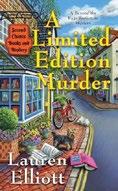
A year in an English village proves just the thing for a brokenhearted American bookseller. Addie Greyborne means to return home to Greyborne Harbor, but not just yet. Working in Reginald Pressman’s Second Chance Books and Bindery in West Yorkshire has proved a good way to get over her shattered relationship with Simon Emerson, the fiance who left her for a former wife he forgot to mention when he proposed. She’s made friends with her co-workers and with the locals who gather at the village pub. They’ve even reworked their trivia night into a weekly murder mystery contest in tribute to Addie’s knack for solving crimes. Her latest investigation, though, is no game. The police suspect Addie’s good friend Hailey Granger of murdering a guest at a party honoring Hailey’s engagement to acclaimed mystery writer Anthony Radcliff. A stolen first edition of Wuthering Heights and a
A year in an English village proves just the thing.
one-of-a-kind sapphire necklace provide the initial leads in Addie’s hunt for the real killer. DI Noah Parker, recently rusticated to Moorscrag from London’s Metropolitan Police, is the main frustration. As arrogant as he is handsome, Parker obstructs Addie at every turn, mocking her ability to solve crimes. As she perseveres, a tangled web of clandestine affairs, unfounded accusations of misdeeds, generational conflicts, and mixed motives unfurl in dizzying profusion. The solution to the murder proves convoluted, but the course of Addie’s relationship with the handsome DI is as predictable as the fog rolling in over the moor. The biggest mystery is which side of the Atlantic she’ll end up on. Few surprises and fewer thrills, but ticks all the English village murder boxes.
Gates, Eva | Crooked Lane (304 pp.) $29.99 | June 4, 2024 | 9781639106608
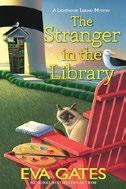
A North Carolina librarian’s European honeymoon inspires her to create an exhibit at the Bodie Island Lighthouse Library. Crime and chaos follow. In advance of a traveling exhibit of valuable American Impressionist artworks that’s coming to the Outer Banks, Lucy McNeil hangs a number of reproductions in the library, adding one original canvas by George O’Callaghan, the less-talented brother of well-known Nags Head painter Robert, whose descendant Louise Jane McKaughnan, Lucy’s prickly frenemy, works at the library. The opening party goes well except for a defiant speech by local artist Ivan Novak. Lucy meets Mark Farrago, who organized the traveling exhibition opening the next day, and Louise Jane is attracted to mysterious attendee Tom Reilly. When Lucy gets to work the next morning, she’s
frankly puzzled to discover that the forgettable O’Callaghan painting is missing—and her detective skills are further tested by the death of Farrago, whose body Lucy and her friends find in a koi pond at the party to celebrate the arrival of the real artwork. Lucy has noticed tension among the people involved in the traveling exhibition, and she thinks there may be quite a few suspects. Her friend Det. Sam Watson has used her unofficial assistance on several previous murders and is not averse to having her help this time. The discovery of the missing canvas at the library with its paper backing cut open leaves everyone wondering what might have been hidden inside. Because Reilly is high on the list of suspects, Louise Jane pushes Lucy to work with her to clear his name, putting them in mortal danger. A neat package of art lore and murder set against the storied background of the Outer Banks.
Haines, Carolyn | Minotaur (352 pp.) $28.00 | May 21, 2024 | 9781250885944
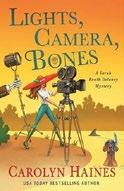
A movie company filming in Greenville, Mississippi, gets pushback from people with secrets to hide.
The movie is ostensibly about the 1927 flood that killed and displaced many but made fortunes for others. Though it’s billed as an action flick starring Marlon Brandon, scion of a wealthy and politically powerful family with deep roots in the area, some locals fear a hidden agenda. Private investigator Sarah Booth Delaney and Tinkie Bellcase Richmond, her partner in detection, also have deep roots in Greenville, and Coleman Peters, Sarah Booth’s life partner, is the sheriff in the adjoining county. So when a gaffer vanishes, the insurance company hires the women to find him
The Mississippi belles reveal more than a killer in their quest for the truth.
LIGHTS, CAMERA, BONES
before the film goes down the drain. Local loudmouth Lamar Bilbo, who’s already been complaining that the film will make Mississippi residents look bad, is joined by bookshop owner Mary Dayle McCormick in an attempt to use any means possible to shut down the production. When Marlon disappears, his grandfather, Senator Brandon Brandon, ask the sleuths to find him even though his relationship with Marlon has never been loving. A water search discloses the gaffer’s severed foot, and everyone fears the worst. The foot was severed by one of the sharks known for occasionally swimming up the Mississippi; having a shark around makes the search for Brandon much more dangerous. Sarah Booth and Tinkie search everywhere they think Marlon or his body could be hidden and suspect everyone involved in the film. Who has a secret so powerful that they’re willing to kill for it?
The tough-as-nails Mississippi belles reveal more than just a killer in their exciting quest for the truth.
Hanson, Hart | Blackstone (350 pp.) $26.99 | May 21, 2024 | 9798212234825

An eccentric Los Angeles detective rolls with all the zany punches.
Laidback private eye Xavier Priestly is hanging out with his fishing buddy Yorben Ybarra on Venice Pier, watching the sea lions play and listening to Mexican music, when an old friend, stuntwoman
Dusty Queen, bursts his blissful bubble with a job offer: Find her missing girlfriend Nikki Celeste, a voluptuous escort Dusty first met while working as her bodyguard. Priest is clearly not in this investigation for the money; he requests $1 as his retainer, just to make it official. Priest and Dusty’s long and winding road begins with Nikki’s “manager,” Parris Ferrer, an encounter that abruptly jumps to Priest waking up in a hospital and getting questioned by the imposing Det. Garnet Diodato and squat defense attorney Baz Amberson. Hanson’s mystery has more quirky characters than a whole season of Twin Peaks , with Priest himself perhaps the quirkiest. He spent time in a seminary, regularly visits his incarcerated father in the penitentiary, and has never gotten over his long-lost love, Rachel Orange. This last wound is reopened when profane, violent 12-year-old Tarquin X. Orange shows up at Priest’s digs, claiming to be Rachel’s son, and further claiming that his mom is dead. When Priest finally locates Nikki, the relevant question is whether she’s a captive or a victim of Cupid’s arrow. By this time, the reader is likely distracted, albeit highly entertained, by the off-center, colorful world Hanson’s created, overflowing with rat-a-tat dialogue and deadpan humor.
An audacious and auspicious novel.

For more by Hart Hanson, visit Kirkus online.
Hilliard, M.E. | Crooked Lane (304 pp.) $31.99 | June 4, 2024 | 9781639106196
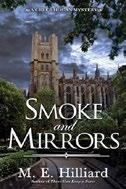
Four years and three volumes after her husband’s murder, librarian Greer Hogan finally gets a crack at laying it to rest.
Members of the NYPD are satisfied that New Leaf financial officer Daniel Sullivan was fatally beaten during a botched robbery by boxer/deliveryman Pete Perry, who was convicted long ago even though he insisted that he left Dan unconscious but alive. When attorney April Benson, deprived of the opportunity to finalize her divorce from New Leaf corporate counsel Frank Benson by his sudden death, tells Greer that she suspects murder and provides Greer with some arcane printouts that neither of them can make sense of, Greer instantly decides that the same motive and the same culprit were responsible for both deaths. Moving back temporarily to New York from her refuge in upstate Raven Hill, Greer uses her finely honed professional skills to search for anyone connected to New Leaf, a CBD company branching out into cannabis, who might have wanted both men dead. Though she gets precious little intelligence from CEO Clarice Philips and COO William Warren, her old neighbors provide unobtrusive details that bolster her case. In more substantial roles, so do Joseph Grimaldi, a magician who jumps in with both feet, and Carolyn Quinn, the great-aunt of Dan’s former assistant, math whiz Isabelle Peterson. Despite another break-in and
two new fatalities, the prevailing tone is so blandly civilized that Greer confesses, “If I hadn’t been investigating my husband’s murder, I’d have been enjoying myself.”
Though the mystery could’ve used more surprises, it’s nice to see the heroine get the closure readers will have seen coming.
Khavari, Kate | Crooked Lane (336 pp.) $29.99 | June 4, 2024 | 9781639106622
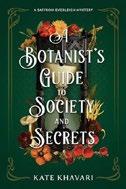
Two scientists are fatally poisoned. Could their work for the government be the reason?
Saffron Everleigh, a botanist specializing in poisonous plants who’s already been involved in solving several murder cases, is struggling to succeed at University College London. Female scholars get precious little respect in the 1920s, and many feel that she’s trading on the name of her well-regarded father. Upon returning from a conference in Paris, Saffron learns that Adrian Ashton—the brother of her sometime love interest, microbiologist Alexander—is a suspect in the death of a Russian horticulturalist. Her connection with DI Green prompts Alexander to ask her to investigate, and she starts sleuthing with help from various colleagues. Also involved is her roommate Elizabeth Hale’s brother, Nick, whose claim to work for the Agricultural Ministry is most likely a cover for something more sinister. On top of that, Nick has had mysterious dealings with
Alexander in the past that neither man wants to discuss. After another scientist dies from poisoning, Nick talks Saffron into taking a job at the lab where the Russian had been working. Slipping into the routine job at the lab, Saffron gets to observe the people who work there and snoop into experiments that are sometimes conducted for highly questionable purposes. Her relationship with Alexander deepens, but she remains suspicious of what he’s hiding, and her new job proves more dangerous than it had looked.
A thorny mystery and budding romance combine with a fascinating look at the many uses of plants.
Marts, Jennie | Crooked Lane (336 pp.) $29.99 | June 4, 2024 | 9781639106585

Murder threatens Colorado’s annual Humble Hills Bee Festival.
After her life in the big city ends on a sour note, mystery writer Bailey Briggs finds sweet respite at Honeybuzz Mountain, her grandmother’s bee ranch. Living there with her daughter, Daisy, Bailey has time to indulge her two favorite pursuits, reading and writing, while helping Granny Bee at the well-stocked Honeybuzz gift shop. And she’s close enough to visit Bee’s sisters, Marigold and Aster, at nearby Lavender Manor, their huge Victorian home. Evie Delgado Espinoza, Bailey’s best high school friend, is still in town and ready for fun. And Bailey also wonders if she’ll reconnect with high school boyfriend Sawyer Dunn, who’s now the sheriff. The answer, of course, is a resounding yes. Rex Rafferty, the star of the morning news show Wake Up With Rex and Rachel , is emceeing the festival’s Bake-Off contest. Unfortunately, Rex is as handsy as he is handsome, and when he puts the
moves on Evie, she publicly threatens to kill him if he touches her again. So when someone does kill him with a 20-pound KitchenAid mixer, Evie is Sawyer’s prime suspect. After all, she’s got both motive and opportunity. Sawyer’s suspicions prompt Bailey to spring into action, using research for her next thriller as an excuse for cross-examining potential suspects. Marts has a curious way of burying the lede, so facts spill out of these interrogations in haphazard fashion. But the result is predictable, and justice is done.
Cross-pollinating apiculture and mystery writing produces a new hybrid: the thriller bee cozy.
Miller, Carol | Severn House (224 pp.) $29.99 | June 4, 2024 | 9781448310579

Supernatural sisters must unravel the death of an apparent incarnation of their Hermit tarot card. It’s as if the tarot cards have come to life when Megan Steele tells her friends Hope and Summer Bailey that she’s just seen a living embodiment of the Hermit near Bailey’s Boutique, their Asheville mystic shop. The sisters joke that the pain pills their pal’s been taking for an injured leg are making her see things, but Megan insists that the Hermit, a seeker of wisdom, is corporeal, complete with lantern and cloak. And really, Hope and Summer shouldn’t be too surprised at supernatural manifestations popping up in their everyday, since magic runs in the family. Hearing Megan’s fear puts the sisters on edge. When a man enters the shop, it’s only Dylan Henshaw, who’s seeking not wisdom but Hope’s attention. Still, the mood is tense as neighbor Miranda Larson joins the chat to report that she’s seen the Hermit too, and he’s been trying to break into the sisters’ cellar. Hope
Things are never simple for Easy Rawlins—but his creator remains a master.
FAREWELL, AMETHYSTINE
and Summer try to shore up any safety concerns with the help of the police, especially Nate Phillips, who has a keen interest in Summer’s well-being, but exploring further reveals only that the Hermit, whoever he is, has already been inside their house. The sisters soon find his drowned body with a very personal book in his possession, a book that could reveal the truth about Hope and Summer’s magical connections. The sisters have to make sure they aren’t accused of the Hermit’s death while also decoding who might be behind it—and just how their book is involved.
Newcomers to the Fortune Telling series may find it hard to surmount the obstacles to the payoff.
Mosley, Walter | Mulholland Books/ Little, Brown (336 pp.) | $29.00 June 4, 2024 | 9780316491112

The latest Easy Rawlins book finds him, at age 50, more at peace with himself and the world than before. Somehow you know that won’t last.
“There I was, a Black man in 1970, driving through the countryside with a corpse in the trunk. I had a trick or two up my sleeve and a loaded .38 in my pocket.” If you had to guess who this speaker might be, it wouldn’t take long before you came around to Ezekiel “Easy” Rawlins, the endearing private detective who’s the central figure in an absorbing chronicle of
urban Los Angeles that’s, so far, spanned four decades. This installment finds business humming so well at Easy’s detective agency that he and his staff can kick back Monday mornings to chat about flu epidemics, Russian spy satellites, and UCLA’s attempt to oust Professor Angela Davis from her job. One bull session is interrupted by the entrance of a sultry young Black woman named Amethystine “Amy” Stoller. She wants Easy to find her ex-husband, a white accountant named Curt Fields, who’s dropped abruptly from sight. Rawlins is getting peculiar vibes from this case, most of them resonating from his younger days back in Houston’s Fifth Ward, where he’d fallen hard for an older woman named Anger Lee. Memories of that bitter affair stalk Easy as he sets out to find Fields—whose body he eventually discovers on an office floor on top of a sealed envelope with the name “Amethystine” scrawled in pencil. Easy could use some help from Melvin Suggs, his one true LAPD friend. Problem is, Suggs is in hiding, on the run trying to protect his wife from being implicated in a capital crime. It spoils little to disclose that the cases are related—and tangled in a welter of desperate gamblers and sleazy blackmailers through which Easy must uneasily navigate as he fends off the usual obstacles of racist cops and violent thugs with help from his friend Fearless Jones. This entry in the Easy epic may sometimes feel a bit by-the-numbers, but in the end, it also feels somewhat like a prelude to a potentially fresh—and dangerous— chapter in Rawlins’ life.
Things are never simple for Easy Rawlins. But his creator remains a master of the genre.
Perry, Carol J. | Kensington (304 pp.) $16.95 paper | June 25, 2024 | 9781496743602
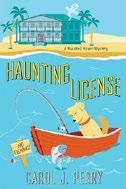
A woman who’s moved from Massachusetts to the Gulf Coast town of Haven increases the already-impressive number of corpses she’s found during her first year in sunny Florida.
Inheriting the Haven House Inn from “mysterious benefactor” Penelope Josephine Gray has proven a mixed blessing for 27-year-old Maureen Doherty. Like most of Haven’s residences, the inn is full of ghosts. But the spirits who haunt Haven House are a fairly respectful lot, even if the scent of tobacco in the elevator tells Maureen when Reggie’s been breaking the hotel’s no-smoking rule again. Molly, Gert, Sam, and George, Maureen’s flesh-and-blood staff, are a dedicated if sometimes quarrelsome lot. Executive chef Ted Carr make Maureen’s pulse race, and his culinary skills make her taste buds tingle. Though it’s been a journey getting the century-old building up and running, Maureen’s greatest challenge this time comes from outside the inn. While walking her golden retriever, Finn, along the beach, she discovers the body of Eddie Manuel, owner of the charter boat Tightline. Eddie’s is the third corpse Maureen has stumbled across since her arrival, and local police detective Frank Hubbard is getting tired of interviewing her. But he also wants to protect her from the risks of her own snoopiness. Danger predictably follows as an archeologist, a wildlife photographer, and possibly a gang of grave robbers descend on the inn. In response, Maureen sleepwalks through the investigation, letting everything from Penelope’s old trunk to a fishing tournament and a pregnant cat distract her from her mission. Lots of local color, a little romance, but no real mystery.
Schellman, Katharine | Minotaur (352 pp.)
$29.00 | June 4, 2024 | 9781250325792

A Jazz Age baby can’t quit her favorite speakeasy, even (or especially) when murder’s involved. Irish immigrant Vivian Kelly is still drawn to the lively Nightingale club after having been entangled in murderous mayhem there in two previous mysteries. The speakeasy’s like a second home to her, especially since her sister Florence, a demure seamstress, married Danny Chin and they moved into their own place. Vivian’s daytime employment delivering dresses is a lot less fun than her time at the Nightingale. When Vivian visits the Fifth Avenue apartment of the wealthy Buchanans with several boxes, the Mrs. isn’t home, but Mr. Buchanan ingratiates himself with Vivian, offering her a drink. The next thing she knows, Vivian drowsily awakens to find Mr. Buchanan dead, a knife in his neck. With a murder charge pending against Vivian, her boyfriend, bootlegger Leo Green, comes to the rescue, getting topnotch lawyer Jacob Dubinski to defend her. Remembering her past successful sleuthing, the police commissioner offers her a week to clear her name. When it’s revealed that Honor “Hux” Huxley, the owner of the Nightingale, is Buchanan’s daughter and heir, Vivian’s path leads right back to her beloved night spot, where Danny works as head bartender and Vivian’s best friend, Beatrice Henry, entertains patrons with her vocal stylings. More
intimidating are thuggish Bruiser George and icy matron Hattie Wilson. The plot of this buoyant mystery is a bit of a ramble, but Schellman provides a vivid portrait of Prohibition-era New York and keeps the colorful characters coming. A juicy, jazzy period whodunit that charms and occasionally swings.
Thorogood, Robert | Poisoned Pen (272 pp.) | $16.99 paper
June 4, 2024 | 9781728284477
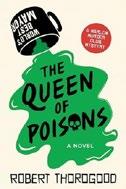
The cozy yet high-mortality English village of Marlow is once again roiled by murder, this time involving a victim at the very top of the local food chain.
Seeking zoning approval for the pod hotel she’s convinced will make her a mint, dog walker Suzie Harris attends a meeting of the Marlow town council to get the lay of the land. Her attempt to pass herself off as having official business before the council is much less successful than the fatal poisoning of Marlow mayor Geoffrey Lushington, who gets a dose of aconite in his coffee, or maybe in his sugar, that stops the meeting before it starts. The obvious suspects are the four other council members who were present in the room where it happened: estate agent Marcus Percival, accountant Debbie Bell, architect Jeremy Wessel, and late-arriving Sophia De Castro, a homeopathic podcaster who actually grows aconite in her garden. But once DI Tanika Malik appoints Suzie and her partners in
crime detection, Judith Potts and Becks Starling, as civilian advisers, they start asking nosy questions and moving from one suspect to the next with disconcerting dispatch, broadening the field to consider Alec Miller, the retiree who served tea at all the council meetings except this one, and an unknown blond man “average in…height and in weight” spotted in the immediate environs. In the end, Judith carries off sleuthing honors, though at a certain cost to her domicile. Ingenious, ultracivilized mental gymnastics guaranteed not to disturb your sleep.
Van Dine, S.S. | American Mystery Classics (288 pp.) | $25.95
June 4, 2024 | 9781613165683

The year 1928 finds dilettante Philo Vance rousing himself from his fascination with antiquities, music, and obscure languages to ask who’s decimating the family left behind by wealthy Tobias Greene’s imperious will.
When Tobias died 12 years ago, he divided his estate equally among his wife and five children with one notable exception: Anyone except his adopted youngest daughter, Ada, would be disinherited if they left the family manse before 1932. The news that his eldest daughter, Julia, has been shot to death, presumably by her brother Chester’s missing revolver, is the first indication that the Greene home has turned into a death trap. Since the paraplegic Mrs. Greene and siblings Chester, Rex, and Sibella all act as snobbishly entitled in their different ways as Vance, who joins D.A. John F.-X. Markham in an attempt to catch the killer before the house is left vacant, it’s no big deal to watch them get picked off to the accompaniment of
A Lyft driver is summoned by an old friend to solve a decades-old mystery.
CINNAMON GIRL
Vance’s oracular announcements that there’s something very, very wrong about the Greene home and its tenants. None of the characters’ motives or behavior is any more believable than the logistics of the individual crimes, but in some ways that’s exactly the escapist point. Casual fans will identify the killer early on, but only serious devotees of real-life criminologist Hans Gross will realize that the murderer has borrowed impossible murder methods from Gross’ encyclopedia of real-life criminal cases, which the denouement quotes at amusing length, as sedulously as if following recipes from The Joy of Killing For better or worse, this third of Van Dine’s deliriously dated 12 detective novels is Philo Vance’s ultimate case.
Weizmann, Daniel | Melville House (352 pp.) | $18.99 paper May 21, 2024 | 9781685891152
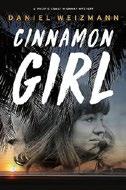
Adam Zantz, a 37-year-old Jewish Lyft driver earning his P.I. certification, is summoned by an old family friend to solve a decades-old mystery.
Charles Elkaim is dying and wants closure. Forty years ago, his son Emil (“the Israeli Keith Richards”) was arrested for the murder of Reynaldo Durazo (“the Mexican Keith Moon”), then shivved in prison while awaiting trial. Charles is convinced Emil was framed, as is
reinforced by a recent visit from Devon Hawley, a man who claims he can prove Emil’s innocence. Adam, Charles’ old piano student, remembers a young Emil “strumming Beatles on a scratched-up acoustic,” and spurred by both Jewish guilt and a desire not to be seen as “the king of jumping ship,” agrees to investigate. He learns that Emil, Reynaldo, and Devon all played in The Daily Telegraph, a band that was either the next big thing or “some nothing rock band,” depending on who’s asked. After discovering an old Telegraph record—whose transcribed lyrics are scattered over many chapters—Adam is drawn into a web of psychedelia and “the dream.” Weizmann is conversant in the vocabulary of detective fiction, counterculture, and Judaism, but his descriptions feel superficial. Yiddishisms like noodnik and schmuck are peppered throughout, and characters ask questions like: “Mind if I make like Bob Marley and light a fire?” Noir, even when its plot isn’t watertight, largely lives and breathes on evocative settings and idiosyncratic characters. Unfortunately, Adam’s narration is inconsistent, characters traffic in exposition and cliches— and occasionally negative stereotypes about homelessness and mental health—and the L.A. landscape is scarcely sketched, particularly egregious considering that Adam drives around for a living. Convoluted mysteries aren’t an automatic impediment to success (see Thomas Pynchon’s Inherent Vice), but absent stronger craft elements, this one lacks intrigue.
A soft-boiled detective yarn.
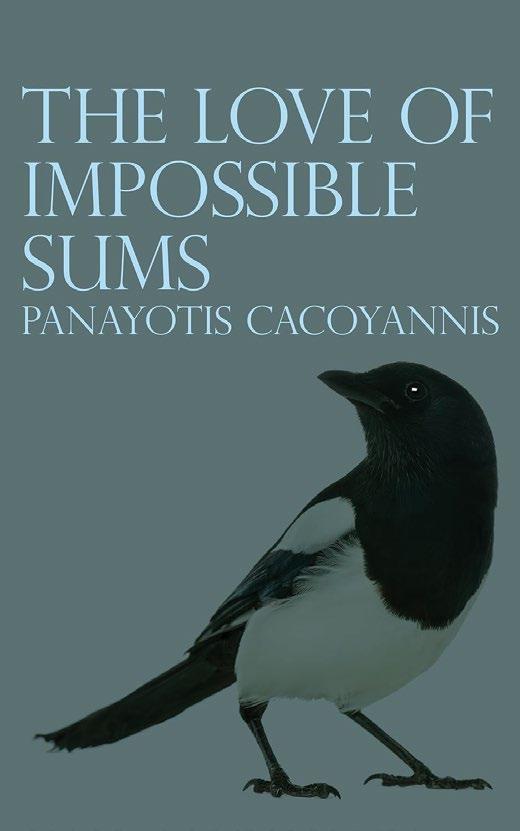


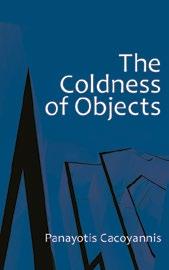




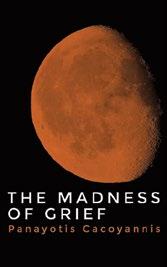





EDITORS’ PICKS: The Fox
Maidens by Robin Ha (Balzer + Bray/ HarperCollins)


Unicorn Boy by Dave Roman (First Second)
The After: A Veteran’s Notes on Coming Home by Michael Ramos (Univ. of North Carolina)
ALSO MENTIONED ON THIS EPISODE:
Almost American Girl by Robin Ha
Cook Korean! by Robin Ha
Guts by Raina Telgemeier
Sisters by Raina Telgemeier
Testament of Youth by Vera Brittain
Muse of Fire: World War I as Seen Through the Lives of the Soldier Poets by Michael Korda
THANKS TO OUR SPONSORS:
The Healer by John Thomas Tuft
Mystery Force: Volume 2 by Ted Neill, illus. by Suzi Spooner
The Wrong Side of the Flame by Renaii West
Belonging Matters by Julie Ryan McGue
The Legacy by James Gilbert
Fully Booked is produced by Cabel Adkins Audio and Megan Labrise.
In the case of this Obama-era bildungsroman, expect greatness.
BY MEGAN LABRISEOn this episode of the Fully Booked podcast, Vinson Cunningham discusses Great Expectations (Hogarth, March 12). Kirkus calls this highly anticipated debut novel by the New Yorker staff writer and theater critic “a top-shelf intellectual bildungsroman.” The story is narrated by David Hammond, a young Black man who lands a fundraising job for a U.S. senator and eventual presidential candidate (who closely resembles Barack Obama).
Here’s a bit more from our starred review: “David needs something to believe in: A young father, he’s flunked out of college and is making ends meet by tutoring. Even so, the campaign’s high-flown hope-and-change rhetoric is a world removed from his job greeting wealthy donors, accepting checks, and helping to arrange more meet-and-greets. So he contemplates how he fits in as he scrutinizes the backgrounds of the high-dollar donors and celebrity boosters, particularly the Black ones. (Cornel West, Henry Louis Gates Jr., and André Leon Talley have brief cameos.) The campaign’s conclusion is no surprise, of course, but the book is alive in its intellectual detours, with Cunningham considering religion, race, sex, film, politics, fatherhood, and more.…Cunningham’s choice of title is nervy, but though the story only vaguely echoes Dickens, it perfectly encapsulates the kinds of anxiety that follow a smart young man still coming into being.”
Cunningham and I begin by discussing the considerable merits of the title Great Expectations. He tells me about the portion of the Winslow Homer painting that comprises the cover art—and how the cover, dedication, epigraph, and title prime readers for the story they’re about to encounter. We talk about political


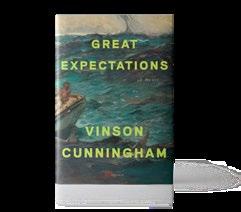
Cunningham, Vinson
Hogarth | 272 pp. | $28.00
March 12, 2024 | 9780593448236
campaigns as great big machines, and the difficulties of beholding the entire apparatus from within. We then cover the novel-writing process; the importance of physical description in fiction, even of minor characters; some of the novelists who’ve influenced Cunningham, including Saul Bellow; how much of David’s story was taken from real life; whether this is a comic novel; and much more.
Then editors Laura Simeon, Mahnaz Dar, and Eric Liebetrau share their top picks in books for the week.
Editor-at-large Megan Labrise hosts the Fully Booked podcast

To listen to the episode, visit Kirkus online.

The series by the U.K. author will kick off with We Solve Murders in September.
Richard Osman will debut a new mystery series later this year.
Pamela Dorman Books will publish Osman’s We Solve Murders this fall. It will be the first in a planned series of the same name.
Osman announced the new series on Instagram, writing, “Absolutely DELIGHTED to reveal details of my brand-new book series, ‘We Solve
Murders’, about Amy and Steve, a daughter-in-law/ father-in-law detective duo. Due out in September.”
Osman was known in the U.K. as a television quiz show host before publishing his first mystery novel, The Thursday Murder Club, in 2020. The book became a bestseller, and three more novels in the series followed: The Man Who Died Twice, The Bullet That Missed, and The Last Devil to Die
We Solve Murders, the publisher says, will follow Steve Wheeler, a retired detective, and his daughter-in-law Amy Wheeler, a private security officer working to protect a famous author. She enlists Steve’s help when a would-be murderer targets her.
Viking, which will publish the series in the U.K., told the Bookseller that the new series “carries Richard’s hallmarks that have made him such a beloved author: the brilliantly relatable characters, his trademark storytelling wit and warmth, and the exciting new international setting.”
We Solve Murders is slated for publication on Sept. 17. —M.S.



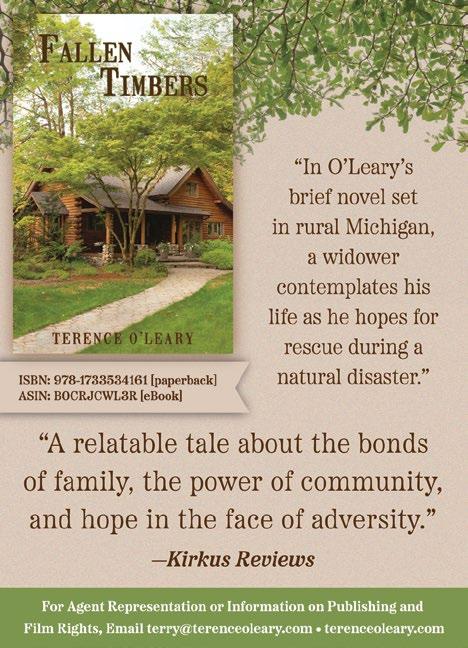

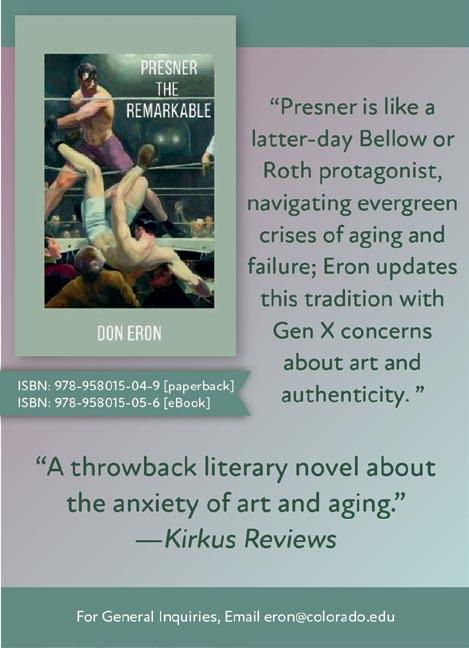

The novelist’s Wandering Stars was published in February by Knopf.
Tommy Orange discussed his latest novel, Wandering Stars, on CBS Saturday Morning.
Orange’s novel, published Feb. 27 by Knopf, is a follow-up to his celebrated 2018 book, There There, which was a finalist for the Pulitzer Prize. In a starred review, a critic for Kirkus praised Wandering Stars as “a searing study of the consequences of a genocide.”
Orange talked about the 19th-century Native American boarding schools, notorious for the abuse of students, with CBS correspondent Jeff Glor.
“When I first learned about the boarding schools, I was working in a Native community in

Oakland, and it was something I didn’t know,” Orange said. “It was not something that you’re taught in schools; it’s not something that my family ever taught me.”
Glor asked Orange if he was “comfortable being the spokesperson for Native people.”
“Not at all,” Orange replied. “You know, I’m from one tribe.…I have this position of attention, and I get asked questions on a big stage. I don’t feel comfortable assuming that’s what I’m doing.”
Glor mentioned Orange’s childhood hobby of roller hockey, asking him how he went from a young athlete to a celebrated writer.
“I don’t know,” Orange said, smiling and shaking his head. “There were real dreams that died, and I sort of had to rebuild a few different times. I’m happy that I found writing.”—M.S.

A reformed thief sets out on one final heist across the universe.
THE STARDUST GRAIL
Cathrall, Sylvie | Orbit (400 pp.) | $18.99 paper April 23, 2024 | 9780316565530
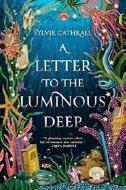
This story of pen pals turned lovers unfolds in a series of letters and “Automated Post missives” as the two learn more about their underwater world. Struck by curiosity, E. Cidnosin writes a letter to Scholar Henerey Clel hoping he’ll help her identify an “Elongated Fish.” Through their ongoing correspondence—as well as later letters between members of their families—we learn more about E. and Henerey and the world around them. For instance, one of Henerey’s scholarly publications says this: “Ever since the tragedy of the Dive ushered in our new Society, people who seek to understand the creatures with whom we share this world have published great Treatises to prove themselves as worthy Scholars.” In this new society triggered by the mysterious event called “the Dive,” people live primarily underwater in places like Boundless Campus and Intertidal Campus, as well as on the Atoll, which is the “only known landmass in the world.” E. lives “a few hundred fathoms off-coast” of Boundless Campus in a family home called “Deep House.” She suffers from “a Malady of the Mind that made certain things—like leaving the house, interacting with strangers, or not obsessing over the fragility of her own mortality—very difficult.” Even so, as her correspondence with Henerey grows, so does her fondness for him. The diction and syntax of the letters revel in a bygone era’s romance and quick wit,
showcasing the art of letter writing. The long-distance friends eventually meet at a gala hosted by E.’s brother, Arvist, at Deep House, where their conversation ingeniously continues on the back of the event’s “programme.” The scholarly search for knowledge to better understand this underwater world propels the plot into the unknown, where many curiosities are yet to be uncovered. Additionally, the letters between E.’s sister, Sophy Cidnorghe, and Henerey’s brother, Vyerin Clel, allude to something that has happened to the couple, and Arvist makes a last-minute confession that sets further mysteries in place to be unraveled in the next book in this series. Whimsical and heartfelt, with a radar trained on delight.
Ellis, Lindsay | St. Martin’s (464 pp.) $29.00 June 4, 2024 | 9781250274564

As humanity reckons with the existence of intelligent beings from beyond the stars, another alien threat rises. Early in the latest installment of Ellis’ Noumena series comes a moment in which Ampersand, aka Jude Atheatos—one of the amygdalines, an alien race that’s made first contact with Earth—removes a young boy’s brain tumor via telekinesis, with the caveat that the boy’s family must never tell anyone about the incident. The fact that the alien uses the same alias as the patron saint of hopeless causes is not lost on anyone. That tension serves as the glue that holds Ellis’ narrative together. This is
the story of Ampersand’s human companion, Cora Sabino, with whom he can communicate wordlessly as the amygdalines do. But the story also belongs to his estranged ex-compatriot Nikola Sassanian, whose basic right to a dignified death is the subject of an intense political battle that could grant the aliens personhood. As Cora’s crush, a journalist named Paris Wells, attempts to bond with Nikola, Cora and Ampersand find themselves investigating a years-old massacre—one that could prove the presence of another race of aliens, the amygdalines’ worst enemies. Ellis deftly weaves a complex, often heady story here. The cast is large, the terminology and state of affairs complicated and unfamiliar. Although the author at times gets too caught up in reminding us that the aliens are, well, alien, such moments are not only few and far between, but also barely noticeable in light of the novel’s charm. Weird-fiction fans will enjoy the subtle subversions of Lovecraft and his fellow mythos authors, and internet fan communities will likely spot more than a few cheerful references to their favorite TV shows, films, and video games. Between the political intrigue and well-defined cast, this is a lovely reading experience. A charming but taut political SF thriller in which the readers are the only winners.
Kitasei, Yume | Flatiron Books (320 pp.)
$28.99 | June 11, 2024 | 9781250875372
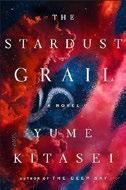
A reformed thief sets out on one final heist across the universe. After her last attempt at stealing alien artifacts went disastrously wrong, Maya Hoshimoto has settled down, interning in Princeton’s archives and working on her graduate degree while her friend and partner in
thievery, Auncle, remains among the stars, searching for the grail that might save xyr dwindling race. When Maya happens upon a field notebook key to finding the grail, she resists only momentarily before returning to Auncle. But Auncle and Maya are not the only ones on the hunt. The nodes that connect Earth to other planets and space-capable people are degrading, and the Earth’s military coalition wants the grail to save the nodes. With Earth’s military and Princeton and Yale faculty on their heels, Maya and Auncle race across many worlds following in the footsteps of a human explorer who disappeared more than 100 years ago. Along the way, they grapple with the vast gap between cultures that developed on separate planets, the ethics of theft and museums, and what it means to be human—or alien—all while trying to cause as little destruction as possible. Broad in scope, covering everything from the rise and fall of alien civilizations to what it means to be a person, this is a luminous work, vacillating between the highs and lows of human experience and how they might translate across alien worlds. Sympathetic, flawed characters demonstrate how individual actions can reverberate through the past and future. Wondrous, new, and altogether alien.
Logan, James | Tor (528 pp.)
$19.99 paper | May 7, 2024
9781250345806 | Series: Last Legacy, 1

Logan’s debut novel—the first installment in his Last Legacy saga—is an adventure fantasy that revolves around a young man’s search for answers to mysteries regarding his father’s death. When Lukan Gardova—a disgraced heir desperately trying to outrun his past—discovers that his estranged father
was murdered while clutching a mysterious note written with his own blood, he begins a quest that takes him around the world to Saphrona, the fabled “Mother of Cities.” But answers aren’t easy to come by in a city with a tumultuous history, corrupt government, and an underworld filled with myth and legend. Eventually joining forces with a street urchin named Flea and an infamous thief known as Lady Midnight, Gardova quickly finds himself entangled in a grand-scale conspiracy involving the existence of nightmarish beings from childhood tales, artifacts from a lost race, evil cabals, and a looming war that could put tens of thousands of innocents in jeopardy. Every discovery brings Gardova closer to the realization that his father, whom he thought was just a broken man obsessed with myths, was much more than he appeared to be. While many comparable narratives come across as stale and formulaic, there’s a freshness and vibrancy to this tale, in large part because of the flawless execution of the various elements. The worldbuilding is exceptional—meticulously described and almost effortlessly immersive. The diverse cast of characters is insightfully portrayed and authentic. The storyline is filled with bombshell plot twists, the action is nonstop, and the pacing is breakneck. The precision of the writing is evident in seemingly minor details like the way every chapter ends with thought-provoking statements, revelations, or cliffhanging scenes that make it impossible to stop reading (“He unhooked the lantern, took a deep breath, and pushed the door open”). Even the conclusion is masterfully constructed, satisfying readers while also brilliantly setting up the second installment. An undeniable masterwork—and a blueprint for how adventure fantasy should be written.

Wexler, Django | Orbit (528 pp.)
$19.99 paper | May 21, 2024 | 9780316392204
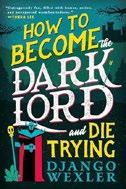
A woman trapped in a time loop decides she’s had enough of trying to win an unwinnable war in Wexler’s fantasy comedy.
For more by Django Wexler, visit Kirkus online.
Davi is stuck in a time loop. Though she’s from our world, her loop starts when the wizard Tserigern wakes her from a magical pool and tells her she’s been summoned to save the humans of the Kingdom from the wilders, magical creatures like orcs and other monsters. The wilders are led by the Dark Lord, and though the Dark Lord might be any number of figures, what matters is that the wilders destroy the humans over and over and over. Which means that Davi has died and woken back up in that pool so many times that she’s been alive for thousands of years and knows the fantasy world inside and out. After dying yet again in the Dark Lord’s dungeons, Davi decides she’s had enough. Clearly the war against the wilders is unwinnable. Instead, Davi decides she’ll change sides to become the Dark Lord herself, and maybe be on the winning side for a change. Though Davi doesn’t remember much of her life on Earth, she does remember plenty of pop culture references, and her frenetic sense of humor is both wonderfully sharp and probably an accurate depiction of how someone’s mind might crack a bit after reliving the same life hundreds of times. The fact that Davi’s life doesn’t reset until she has died adds dimension to the time-loop trope, making it more like a video game, where she might make it for a few years or a few hours depending on what she chooses to do. As Davi moves forward in the only version of her life that she hasn’t yet tried, fighting with the wilders, she forms new kinds of bonds and finds exciting new mysteries about the fantasy world where she’s spent multiple lifetimes.
Tremendous fun.


Interactive Content

Kindle eBook ISBN: 978-1-7343635-4-8 www.laevnotes.com
Paperback ISBN: 978-1-7343635-3-1

“Rich personal and cultural history of a young woman in Berlin’s Belle Epoque.”
—Publishers Weekly/ BookLife Reviews
“A tender, personalitycentered biography of golden age Berlin.”
—Kirkus Reviews
“A wonderfully composed portrayal that could be considered narrative Art Nouveau.”
—BookTrib
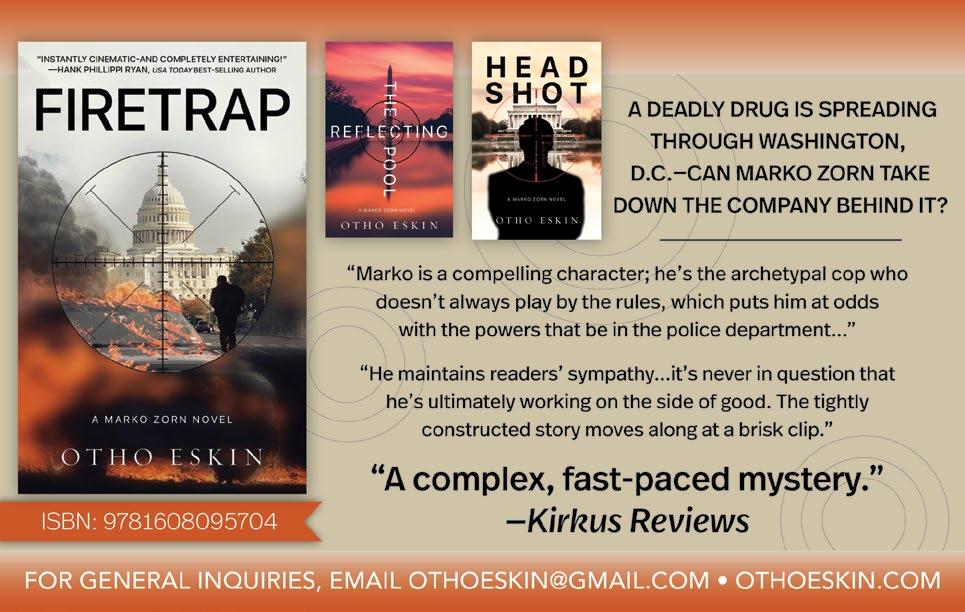

The film is based on Robinne Lee’s 2017 romance novel.
Amazon Prime dropped a trailer for its film adaptation of Robinne Lee’s The Idea of You Lee’s romance novel, published in 2017 by St. Martin’s Griffin, tells the
story of Solène, a 39-yearold Los Angeles gallerist who embarks on a relationship with Hayes, a world-famous 20-year-old musician. A critic for Kirkus called the book “a fascinating, thought-provoking, genrebending romantic read.”
The film adaptation stars Anne Hathaway (Les Misérables) as Solène and Nicholas Galitzine (Red, White & Royal Blue) as Hayes. The film is directed by Michael Showalter (The Eyes of Tammy Faye) and written by Showalter and Jennifer Westfeldt (Friends With Kids).
The trailer opens with Hathaway and Galitzine snuggling poolside. Some -

Galitzine and Hathaway in The Idea of You
one asks them, “How did you guys meet? We need to know the story.” Hathaway replies, “At Coachella.”
It cuts to Galitzine on stage with Hayes’ boy band, August Moon, saying, “I met someone tonight. I feel a little inspired.” He then launches into a song, with the audience singing along.
Later, Galitzine visits Solène’s art studio, asking to buy some artwork, as paparazzi take photo -
graphs from across the street. Hathaway shows Galitzine a painting by her friend, and Galitzine asks, “What do you feel when you look at it?” Hathaway replies, “Everything.”
The Idea of You begins streaming on Amazon Prime on May 2.—M.S.

For a review of The Idea of You, visit Kirkus online.

Kirkus Star
Allen, Danielle | Bramble Books (368 pp.) | $17.99 paper
June 11, 2024 | 9781250331045
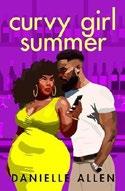
An IT professional sets out to find a boyfriend before her 30th birthday. Aaliyah James’ family thinks she needs to find a man. Though she can’t stand their meddling or her opinionated uncle’s fatphobic remarks about why she’s single, she’d like a partner, too. Convinced to try an app, she embarks on a series of dates, each one ending in comedy or boredom. Her exasperation is partly mitigated by the friendly ribbing she encounters from Ahmad Williamson, the bartender at the place where she meets her dates. Dishing back the snark in equal measure, Aaliyah appreciates Ahmad’s presence as a wingman. Inevitably, seeing him begins to seem more fun than going out with the online matches who are a letdown in person. Unwilling to fall for a man who appears to be taken, as suggested by a ring on his finger, though, Aaliyah persists in her boyfriend quest. But as the summer passes and Aaliyah and Ahmad learn more about each other’s past losses and start to heal their trauma in each other’s presence, they must figure out if they’ll be able to overcome the boundaries they had set. Allen’s twist on the “fifty first dates” comic plot provides a strong structure for Aaliyah and Ahmad’s romantic connection, and the skillful way she writes their banter is a refreshing update of classic screwball rom-coms. While weaker in the sections in which the intelligent and competent Aaliyah spirals into misunderstandings and fight-or-flight mode, the narrative shines during the times when she stands up for herself, including her physical appearance. The chemistry between the couple sizzles, while the conversations between
Almost-lovers who never quite made the leap search for a runaway bride.
MISTAKES WE NEVER MADE
Aaliyah and her girlfriends and family, and Ahmad and his friends, provide more nuances to their personalities. A fat-positive romance that blends the witty repartee of a buddy comedy with sexual tension.
Bonam-Young, Hannah | Dell (384 pp.)
$16.99 paper | June 4, 2024 | 9780593872147

An accidental pregnancy after a one-night stand forever changes life for the better for the soonto-be parents. Winnifred
“Win” McNulty doesn’t let her limb difference—an underdeveloped hand—prevent her from living a full, independent life, but a hurtful previous relationship has made her wary of romance and impacted her self-confidence possibly even more than she realizes. After bonding with a fellow pirate-costumed partygoer on Halloween, Win hooks up with Bo Durand, a sexy nerd with a prosthetic leg. Since Win isn’t looking for a relationship, they part ways with no plans to ever see each other again…until Win discovers she’s pregnant and decides to keep the baby. She’s surprised about how excited Bo is by the news and how involved he wants to be. While the chemistry between them remains palpable, Win thinks it’s best if they just get to know each other as friends now that their lives are entwined for the long haul. This proves easier said than done when everything she learns about Bo endears him to her
further and she finds herself falling in love. Told through Win’s first-person narration, this gentle love story is propelled by realistic emotions as Win and Bo work to overcome past hurts and insecurities. These emotional turmoils, as well as their disabilities, are portrayed with love and sensitivity, creating a tender, thoughtful feel throughout. Humor adds levity, especially in scenes featuring their delightful friends. After the initial scorching scene, it’s an exquisite slow burn to get this lovable pair to open themselves to a romance that feels so well earned by the end. Cozy and affirming, this is a big warm hug of a book.
Brown, Hannah | Forever (336 pp.)
$26.10 | May 7, 2024 | 9781538756775

Almost-lovers who never quite made the leap search for a runaway bride. Emma Mae Townsend has given up on Finn Hughes several times: junior prom, that time at the pool, that time in New York, and Katie Dalton’s wedding. Ever since they competed together on the debate team in high school, their chemistry has been obvious, but every attempt at romance ended badly. Now in her late 20s, Emma is dismayed to find herself running into Finn during a girls’ night out in Malibu a few days before her best friend Sybil’s wedding. When Sybil goes missing the next morning, however, her lack of communication and history of failed engagements leads Emma to go on the
hunt for her. With neither of the other two members of the “Core Four” girlfriends able to accompany her, however, she finds herself stuck with Finn as a sidekick, and the two set off on a wild-goose chase of a road trip. As they travel across state lines, they’ll discover more about each other, their pasts, and the possible potential of their future. Brown’s debut shows a steady hand in crafting characters, with Emma in particular standing out as a woman who’s been hurt and has, in response, turned caring into armor. The supporting cast is lightly drawn but engaging, with the Core Four feeling like a real friend group, and Emma and Finn’s quick banter is charming. Emma’s relationship with her sister could have been fleshed out more, however, and there’s a frustrating lack of closure on the issue of the runaway bride. Brown is clearly preparing for a follow-up centered on Sybil, but the pivot makes the end of this book feel unfinished. There’s plenty of heart in this debut rom-com, despite some flaws.
De la Rosa, Liana | Berkley (352 pp.)
$18.99 paper | June 4, 2024 | 9780593440902

Two spies find each other while skulking around the same dark corners.
Isabel has gotten used to being the invisible Luna sister. In 1865, all three women are stuck in England, trying to influence the ton into supporting their beloved Mexico in its fight against the French invasion, and Isabel has secretly promised to sneak away at balls and look for any information that could help her family and country. After years of being ignored in favor of her stunning sisters, she’s happy to go unseen in order to help her country, but unfortunately, one man sees her all too well: Captain Sirius Dawson, whom she
knows as a handsome rogue. They first meet when he’s trying to have an assignation in the same office she’s scoping out, and when she unexpectedly finds herself staying at his country house, he discovers that she has “fascinating depths to her.” After finding her hiding in yet another dark room, he realizes that she snoops as much as he does as part of his secret work for the Home Office. For their own reasons, they’re each haunted by feelings of inadequacy and are thus well practiced at sneaking around in the shadows of the aristocracy—and surprised to meet another person who sees them for who they really are. As a result, their mutual attraction doesn’t surprise anyone, even as both try to stay focused on their respective missions and what seem destined to be separate futures. De la Rosa’s sequel to Ana María and the Fox (2023) will delight fans of that book; Isabel is temperamentally quite different from Ana María but just as compelling. The well-written story has a rich combination of suspense and complex character development, not to mention a red-hot scene when the two are trapped underneath a desk together, but what will stick with readers is the dramatic and moving ending. An excellent author’s note adds welcome context to a book that brings to life an underreported story of the Victorian era so well. A satisfying sequel in a great historical romance series.
Dixon, Ruby | Berkley (288 pp.) | $16.99 paper May 28, 2024 | 9780593639481
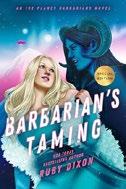
A human woman who feels like an outsider finds love with an exiled alien.
Maddie and her sister, Lila, were kidnapped from Earth and crash-landed on an ice planet. Lila is deaf, and Maddie has spent most of her life in the role of Lila’s protector. But now Lila is happily mated
with a baby on the way, and Maddie is struggling to forge her own identity separate from her sister. Maddie is the last unmated human woman on the ice planet. She’s convinced it’s because she’s temperamental and difficult, and she feels a lot of self-loathing about her body, which she thinks is “fat” compared to the other women. Bored and lonely, Maddie decides to teach herself to hunt. Impressed by her strength and determination, Hassen, one of the clan’s hunters, offers to teach her hunting and trapping skills. She’s curious about Hassen, who is alone, having lost his entire family when a sickness swept through his clan. In Barbarian’s Touch (2024), the previous book in the series, Hassen kidnapped Lila, hoping to find a mate. As punishment, he has been outcast, but he continues to hunt on behalf of the clan, hoping to show that he’s worthy of being readmitted. He regrets that his loneliness and longing for a family prompted him to take such a rash action. Maddie is intrigued by Hassen, recognizing a fellow outcast when she sees one. She offers a friends-with-benefits arrangement, and the two enter into a passionate affair. Hassen hopes Maddie will eventually consider him as a permanent mate. Dixon shows how her characters’ arcs mirror each other, with both longing for acceptance and belonging. Maddie realizes her strengths add value to the tribe, while Hassen longs to be forgiven for his selfish kidnapping. There is very little conflict between the two, as the difficulties of actual survival on an ice planet trump minor emotional conflicts. When a huge earthquake throws the entire society into crisis, Maddie and Hassen prove their worth by going to extraordinary lengths to save the others.
A sexy series shakes things up in its eighth installment.

For more by Ruby Dixon, visit Kirkus online.
Kirkus Star
Eddings, Mazey | St. Martin’s Griffin (400 pp.) | $17.99 paper
April 16, 2024 | 9781250847089
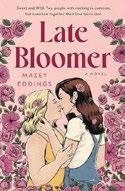
After she wins the lottery, a woman’s spontaneous purchase of a flower farm lands her a surprise roommate, too.
Opal Devlin is known for being a people-pleaser, the type of woman who will do any favor a friend asks of her. When she unexpectedly wins the lottery, her phone starts blowing up with long-lost connections trying to get a piece of the pie—and making her wish she could get away from it all. When she finds an ad for a flower farm for sale in Asheville, North Carolina, it seems like the perfect solution to her problems. She buys Thistle and Bloom convinced she’s making the right decision for her future, not only acquiring a place to get away from the demands on her time and wallet but giving herself the space to pursue the full-time art career she’s always wanted. The biggest wrench in her plan? Thistle and Bloom already has an occupant: Pepper Boden has been keeping the farm afloat since her grandmother died, and she thought she owned the place—until her estranged mother sold it out from under her.
Although Opal and Pepper hardly get off on the right foot, they agree to cohabitate until they can figure out who’s moving where. While Opal wants to use the farm as a backdrop for her painting business, she knows she needs Pepper’s knowledge and skill with flowers to ensure Thistle and Bloom keeps turning a profit. Living under the
same leaky roof has its complications, however, not least of which is the women’s budding interest in one another, and their forced proximity leads to several delightful scenarios. Eddings’ latest romance is evidence of the author’s own blossoming, as she uses Opal’s and Pepper’s individual struggles and stark personality differences to explore important discussions about mental health and neurodivergence that don’t feel out of place. The characters have easily distinguishable voices, and their alternating perspectives offer a deeper look into this endearing, emotional love story. Opposites attract in this sweet Sapphic romance.
Guhrke, Laura Lee | Forever (336 pp.) | $17.99 paper
June 18, 2024 | 9781538722640
Series: Scandal at the Savoy, 2
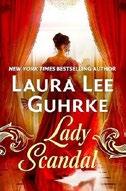
Opposites attract at the ritziest hotel in Victorian London. Something is not right at the renowned Savoy Hotel. Though it’s managed by the legendary hotelier César Ritz, its kitchen is run by famed French chef Auguste Escoffier, and it’s the first choice of any aristocrat who wants to host a party, it’s losing money at a drastic rate. Simon Hayden, newly made as Viscount Calderon, has been asked by the hotel’s board to investigate what seems a likely case of fraud, but he keeps running into pushback from the staff, especially when he meets Lady Delia Stratham, the hotel’s beloved event
Opposites attract in this sweet Sapphic romance. LATE
planner, thrice-widowed and thus far more independent than other society women. As she’s a free spirit accustomed to spending in line with the Savoy’s reputation for “wanton extravagance” and he’s focused on helping the hotel turn a profit, they’re at odds immediately. As both try to accept the idea that it would be better to work together, they find themselves fighting a growing attraction, but even after a passionate rooftop kiss, they still feel the need to push away from each other. Simon, only six months a peer and desperate to please the hotel board, can’t trust her, and Delia, still whispered about by society, is too proud of her work to budge. With the story of the famous hotel (not to mention Ritz and Escoffier, early in their careers) as backdrop, the second volume in Guhrke’s Scandal at the Savoy series will thrill historical romance readers looking for a novel viewpoint of Victorian society. Simon and Delia, both in their 30s, have excellent chemistry and enough life experience to make their convictions and back-and-forths ring true. Witty writing alongside lavish descriptions and historical detail fill out an engaging story that’s hard to put down. A top-notch historical romance.
Paulsen, Annabel & Lydia Wang
Alcove Press (336 pp.) | $18.99 paper
May 21, 2024 | 9781639107094

Two contestants on a reality dating show start falling for each other— instead of the guy they’re meant to be competing for.
Former rodeo queen Krystin spent most of her early dating years devoted to competitions, which didn’t leave much time to prioritize romance. When she realizes she’s exhausted all the options in her Montana hometown, she decides to sign up as a contestant on the reality dating show Hopelessly Devoted. While her best friend is vocally skeptical about the
odds of her finding anything resembling true love, Krystin is trying to go into the experience as optimistically as possible. If only one of her fellow contestants didn’t give her more butterflies than the guy she’s meant to be winning over! Lauren knows she isn’t appearing on Hopelessly Devoted for the right reasons—she’s more interested in using the show’s visibility to grow her brand as an influencer than in finding a boyfriend. The truth is that she’s not even romantically interested in men, but somehow, she’s securing herself a spot on the show week after week—and getting ever closer to earning a proposal from Josh Rosen, the season’s Hopeless Romantic. While Krystin and Lauren aren’t really sure what they want to get out of this experience, they both know it’s becoming increasingly difficult to ignore their growing feelings for each other. Paulsen and Wang have co-authored a romance that tackles the world of reality competition shows honestly without becoming too cynical about the behind-the-scenes experience. Through Krystin and Lauren’s evolving relationship, which brims over with chemistry; the two women’s individual journeys to exploring their identities; and a fearlessness in introducing morally complex characters, this debut contributes bold new aspects to the romance genre while embracing that all-important happily-ever-after. A charming contemporary romance that doesn’t shy away from tackling big issues.
Rochon, Farrah | Forever (384 pp.)
$17.99 paper | June 4, 2024 | 9781538739143
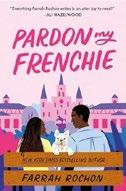
A viral video turns a woman’s doggie day care into a sensation.
Ashanti Wright is a successful New Orleans businesswoman. Her doggie day care, Barkingham Palace, is so successful that she’s scouting for a new location in order to expand, and
she has more orders than she can fulfill for the custom dog biscuits she bakes. Add to that the challenge of raising her twin 16-year-old sisters, and Ashanti has her hands full. Thaddeus Sims has been struggling to acclimate to civilian life after 15 years in the army. When his grandmother falls and enters an assisted living facility, he inherits her standard poodle, Puddin’, a longtime and beloved client at Barkingham Palace. Thad is not a dog person and thinks it’s ridiculous to spend money on doggie day care when he needs every dollar for the bar he plans to open, designed to cater to active military and vets. But Ashanti’s French bulldog, Duchess, and Puddin’ become a viral sensation on the Barkingham Palace live feeds after being caught sharing a biscuit, Lady and the Tramp style. Ashanti’s already-successful business becomes a juggernaut, and a New York morning show offers to fly out the star dogs (and their owners) for a segment. Ashanti convinces Thad the free publicity will benefit both of them. This isn’t a slow-burn romance as much as a slow-start romance. The novel fully explores each character’s business woes and various family dramas—a difficult aunt wants to take custody of the twins from Ashanti and Thad learns a painful family secret—but the two main characters are barely on page together until the New York trip in the last third. Even though the romance comes in hot at the end, readers might wonder why the human relationship plays second fiddle to (literal) puppy love.
A love letter to dogs with a romance on the side.
Ryan, Kennedy | Forever (416 pp.) | $16.19 paper March 5, 2024 | 9781538706824
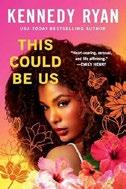
Cornell. Sixteen years into their marriage, Edward is a successful executive, Soledad is a homemaker, and they live in a beautiful Atlanta house with their three daughters. Soledad senses something is wrong with her marriage, but she’s unprepared for the devastating truth: Edward embezzled millions of dollars from his company and he’s having an affair with the assistant who helped him. Edward refuses to take the blame for his own behavior, blaming Judah Cross, the forensic accountant who discovered and reported his crime. Soledad’s choices are limited, so she divorces Edward in order to save her home and protect her girls. With the support of her best friends and her sisters, Soledad slowly begins to rebuild her life financially and emotionally. She works as an influencer, sharing the recipes and household tips she developed over the years as a stay-at-home mother. The propulsive opening highlights Soledad’s transition from a wife worried about her marriage to a mother with a steely determination to keep her family together. Judah, who has been divorced for four years and shares custody of his autistic twin sons with his wife in an amiable, healthy co-parenting arrangement, is romantically interested in Soledad, but she asks for time to work on herself. Blandly likable Judah is the opposite of the cartoonishly evil Edward in every way—caring, financially stable, and a devoted father. Ryan excels in creating angsty, even melodramatic stories, and this novel is no exception. However, the book’s focus waffles between Soledad’s healing journey and her blossoming romance with Judah, which fragments and dissipates the energy of the plot. This portrait of a woman in crisis is stuck between romance and mainstream fiction.
A woman has to pick up the pieces after her husband’s betrayal. Soledad Barnes met her husband, Edward, when they were both students at

For more by Kennedy Ryan, visit Kirkus online.
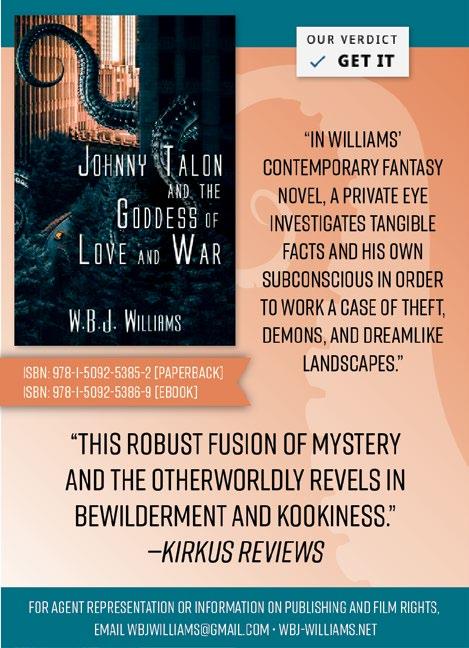
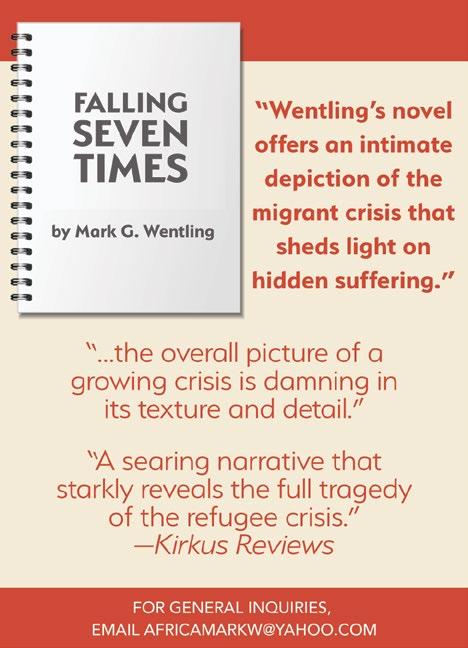


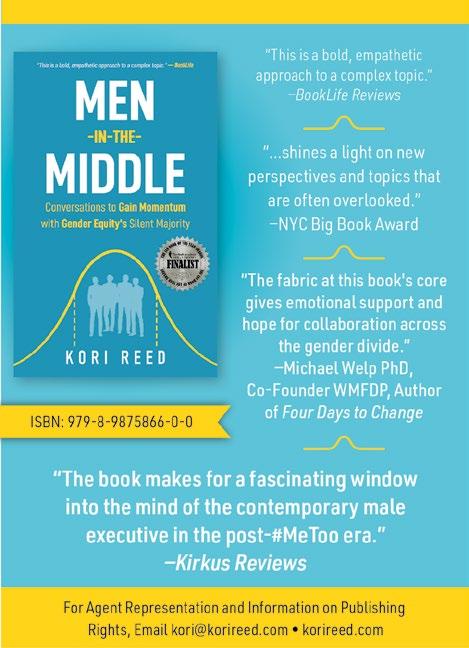


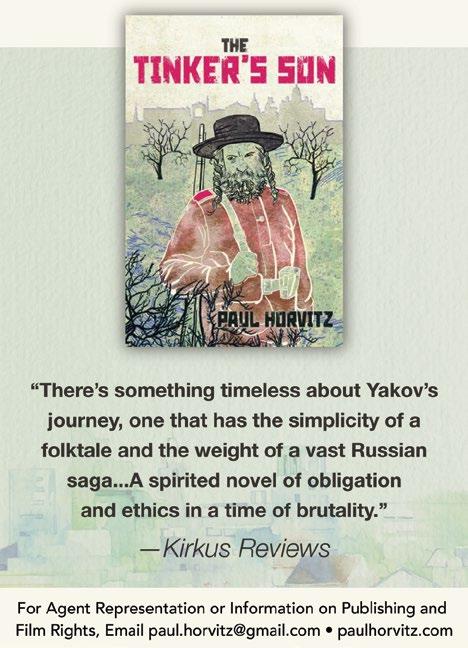
One of the great joys of reading a collection is discovering an author’s distinctive style as it unfolds across a series of essays, and it’s especially enjoyable when the writer is adept in a variety of styles, tones, and structures. This April features three essay collections that display impressively dynamic, experimental approaches to the form.
First up is Joy Is the Justice We Give Ourselves (Hub City Press, April 2) by J. Drew Lanham, a poet, wildlife biologist, and author of Sparrow Envy and The Home Place. Our starred review calls his latest book “another luminous mixture of prose and poetry.” Throughout this provocative, beautifully written text, the author interweaves observations about nature with critical explorations of racism, climate change, and other significant issues of our time. Combining prose and poetry is a risky proposition, but Lanham is in full control of his lush language. “With his consistently engaging writing, keen eye, and generosity of spirit,” notes
our reviewer, “Lanham is a writer to whom we should all listen closely.”
In her first collection, This Part Is Silent: A Life Between Cultures (Norton, April 16), SJ Kim fluidly intermixes elements of memoir, immigrant tale, and academic research on the Southern Gothic, with a piercing, haunting study of silence and intimacy. In a starred review, our critic writes, “The author describes exchanges between her and her Korean cousins as well as those between her and her employers and mentors in British academia, many of which offer a haunting exemplification of embedded power dynamics and racial condescension. Kim creatively and effectively experiments with format through pointed page breaks, plot points and insights hidden in footnotes, varied use of the second person, and one essay structured almost like a screenwriter’s sketch.” Equally at home within the confines of memoir writing and scholarly discourse, Kim’s narrative breaks across and beyond both, and her
“quiet absences sharpen the edges of her inspection of entrenched, implied superiority and easy erasure in discussions of race and in the expectations of immigrants.” Near the end, Kim urges us to “thrive in discomfort.” She certainly does that, creating “a radically brilliant work.”
More compact but no less complex is Prairie, Dresses, Art, Other (Coffee House, April 23) by Danielle Dutton, which our reviewer calls a “shimmering and perplexing work that challenges the constraints of traditional prose.” Working in the collage tradition and experimenting with “a conceptual take on storytelling involving the ineffable feeling of a text, beyond mere words,” the

author challenges readers to interpret the often puzzlelike text, whether she is writing about visual art, fashion, or the work of scholars such as Olivia Laing. “Her work is highbrow while remaining mischievously playful, reminiscent of the form-smashing thrills of writers like Lydia Davis and Anne Carson,” writes our reviewer. From hazy fragments to ekphrastic writing, Dutton “not only introduces big ideas; she shows her readers how to grapple with her lofty questions—e.g., ‘Is it wrong to want to write towards what isn’t intended to be read? What I want is a story that’s an object that can turn itself inside out.’”
Eric Liebetrau is the nonfiction editor.
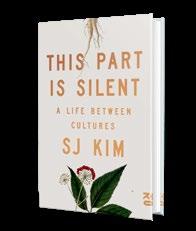
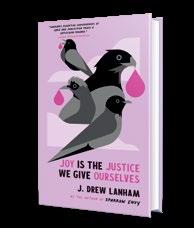
 Illustration by Eric Scott Anderson
ERIC LIEBETRAU
Illustration by Eric Scott Anderson
ERIC LIEBETRAU
A chilling day-by-day account of living in and fleeing from Gaza in the last three months of 2023.
“Pain cannot be talked about,” writes Abu Saif, author of A Suspended Life. “It cannot be expressed or written about. It is just felt and lived.” The author was born in 1973 in a refugee camp in Gaza, under the constant watch and threat of Israeli warships and surveillance, where displacement and the refugee status was repetitive and cyclical (and still is)—a place so familiar with violence that the attacks of October 7, 2023, were not even immediately recognizable as the beginning of a war. Abu Saif’s piercing diaries are proof of significant
pain, as he provides records of overnight attacks, friends and family members killed, decisions about where to find safety, and debates over whether to stay in Gaza or flee south, as directed by the Israeli leaflets dropped from the sky. While offering some historical background for the terror that has plagued the region for decades, this is primarily an account of the suffering of a man and his people, painted in the bare and bracing brush strokes of someone pushed to the edges of his humanity, weakened by hunger and stress, forced to dig through rubble to find his own relatives. Abu Saif poses profound questions about the meaning of victory, the desire for survival, and the
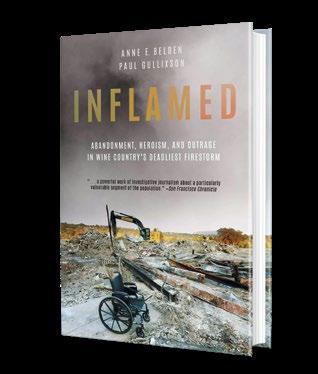
temporary nature of truce, alongside logistical (though no less pressing) ones like where to find bread or how to keep the elements of an impending winter at bay. In publishing his diaries, the author not only exposes the acts of the Israeli Defense
Force to a world determined to look away, but also demands compassion and offers a critique of how the world makes news of war and genocide. Desperate, devastating, and difficult to read, making it all the more necessary.
Uncomfortable
Acho, Emmanuel & Noa Tishby
Simon Element (256 pp.) | $27.99
April 30, 2024 | 9781668057858

Two bestselling authors engage in an enlightening back-and-forth about Jewishness and antisemitism. Acho, author of Uncomfortable Conversations With a Black Man, and Tishby, author of Israel: A Simple Guide to the Most Misunderstood Country on Earth, discuss many of the searing issues for Jews today, delving into whether Jewishness is a religion, culture, ethnicity, or community—or all of the above. As Tishby points out, unlike in Christianity, one can be comfortably atheist and still be considered a Jew. She defines Judaism as a “big tent” religion with four main elements: religion, peoplehood, nationhood, and the idea of tikkun olam (“repairing the world through our actions”). She addresses candidly the hurtful stereotypes about Jews (that they are rich and powerful) that Acho grew up with in Dallas and how Jews internalize these antisemitic judgments. Moreover, Tishby notes, “it is literally impossible to be Jewish and not have any connection with Israel, and I’m not talking about borders or a dot on the map. Judaism…is an indigenous religion.” Acho wonders if one can legitimately criticize “Jewish people and their ideologies” without being antisemitic, and Tishby offers ways to check whether one’s criticism of Jews or Zionism is antisemitic or factually straightforward. The authors also touch on the deteriorating relationship between Black and Jewish Americans, despite their historically close alliance during the civil rights era. “As long as Jewish people get to
benefit from appearing white while Black people have to suffer for being Black, there will always be resentment,” notes Acho. “Because the same thing that grants you all access—your skin color—is what grants us pain and punishment in perpetuity.” Finally, the authors underscore the importance of being mutual allies, and they conclude with helpful indexes on vernacular terms and customs. An important dialogue at a fraught time, emphasizing mutual candor, curiosity, and respect.
Adriansen, Sophie | Illus. by Mathou
Trans. by Montana Kane | NBM (144 pp.) | $19.99 paper June 18, 2024 | 9781681123349
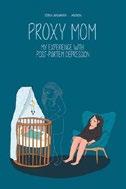
A prolific French writer and a graphic artist collaborate to demystify what it means for a new mother to live through postpartum depression.
At the end of the book, Mathou remarks that pregnant women are often told motherhood is “absolutely wonderful,” and many people refuse to acknowledge “all the things that can go wrong.” However, she and Adriansen reveal the little-discussed darker side of what really awaits some women after childbirth. Drawing from Adriansen’s experiences with postpartum depression, the pair create a charmingly colorful graphic memoir centered on a fictional character named Marietta, who is unable to bond with her newborn daughter. Extreme pain dominated the last few weeks of Marietta’s otherwise idyllic pregnancy,
A unique, refreshingly candid memoir.
and while the child was born healthy, she felt nothing except resentment for the discomfort the infant caused her during breast feedings, as well as the way birth itself had transformed her body into a “war zone.” A disinterested and unhappy Marietta often imagined hiring a “proxy…wonder mom” version of herself to care for her baby, and she eventually sought assistance from a psychiatrist and nanny. During this particularly difficult period, she laments, “anything and everything [could] trigger tears in me.” Yet with each challenge she faced—her newly empty, stretched-out body, her persistent feelings of guilt, inadequacy, and sometimes suicidal sadness—Marietta found validation for being the best mother she could be from friends, family, and even strangers and formed an unbreakable bond with her child five months later. With its fearless, frank depictions of the profound changes a woman’s body and mind undergo in the aftermath of birth, this book invites much-needed conversations about the socially unacknowledged difficulties so many women face on the road to assuming new identities as mothers. A unique, refreshingly candid memoir of the myriad challenges of early motherhood.
Attas, Amy | Putnam (320 pp.) $30.00 | June 18, 2024 | 9780593715673

A veterinarian who makes house calls to pet owners of all kinds in Manhattan shares her unique insight. It is inevitable that this book about operating a house call veterinary practice in Manhattan for the last 30 years will draw comparisons to the work of famous vet and author James Herriot. In fact, Attas cites Herriot’s All Creatures Great and Small as an inspiration to
pursue veterinary medicine. Yet her memoir has a rhythm of its own that befits the differences between New York City and the English countryside. Attas describes her professional start at a high-end practice run by a veterinarian who jealously guarded A-list clientele. Her telling of the break she got from Joan Rivers is well worth the cost of the book, as is an unforgettable vignette about pornographer Al Goldstein’s Vietnamese potbellied pig. Thankfully, the narrative is about much more than mere name-dropping. Her clients are famous and unknown, and the author has a gift for demonstrating how pets change human beings who live in penthouses and studio apartments alike. “Whether I’m trimming a billionaire’s cat’s nails or chatting with the building’s doorman about his dog’s limp,” she writes, “I treat every client the same.” Attas is perhaps at her most compelling when recounting her determination as an adolescent to become a veterinarian and the literal and figurative lengths to which she went to gain experience even before attending veterinary school. She also includes useful advice and tips for pet owners, including information about food, leashes for city dogs, the value of rescue animals, and quiet dangers that lurk in homes (cat owners, don’t keep lilies). Attas has a sharp eye and an amusing, engaging style that bring to life the vagaries of Manhattan house calls and insight into the bonds that are established among veterinarians, clients, and pets. A delightful read.
Auslander, Shalom | Riverhead (368 pp.)
$29.00 | July 23, 2024 | 9780735213265
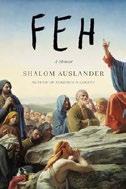
A poignant, often amusing memoir about how breaking free of the past and finding a new path is difficult but necessary. “Feh” is a Yiddish word conveying disapproval or disgust,
although a rougher translation is “yuck.” In this peculiar, intriguing memoir, Auslander, author of Foreskin’s Lament and Mother for Dinner, recounts it as an ongoing theme of his childhood and adolescence, a constant refrain from his alcoholic father and his neurotic mother that he was unworthy of affection, love, or even life. The author recounts how the teachers at his religious school reinforced the concept, implanting the idea of a God that was bitterly disappointed in all of humanity prone to random smiting and nasty tricks. Somehow, Auslander finds threads of dark comedy in this material, chronicling his efforts to overcome depression, self-loathing, and embedded guilt. He worries that he will inadvertently pass the poisonous seeds of self-destruction and vague hatred of the world to his beloved wife and children, although they turn out to be more resilient and capable than he expects. Despite stumbles into alcohol and drugs, the author gradually found success as a writer, and he punctuates the book with a range of microstories and outlines, some of which have a Kafkaesque quality—or they would, if Kafka had ever displayed a sense of fun. Auslander was drifting toward the edge of psychological disaster when, in the depth of the Covid-19 crisis, he encountered a series of everyday miracles that helped him find a way back. This isn’t a book for readers who don’t feel comfortable with the questioning of religious doctrine, but most readers will find a certain sense of inspiration in Auslander’s tragicomic struggle and his eventual, unlikely redemption. A book full of droll humor and offbeat insights, a personal journey that speaks to deep parts of the human condition.

Bates, Josiah | Johns Hopkins Univ. (240 pp.) $27.95 | May 28, 2024 | 9781421448985

An examination of the effects of gun violence in marginalized neighborhoods.
For more by Shalom Auslander, visit Kirkus online.
“If you’re Black and grew up in an inner-city neighborhood in this country,” writes Grio enterprise reporter Bates, “it’s virtually impossible not to be affected by the crime and gun violence that goes on, either directly or through your family and friends.” Gun violence, he adds, is constant in poor neighborhoods, rural but especially urban—18,000 people were killed by guns between January and June 2022, disproportionately in the poor urban context. There are multiple causes for this violence: Poverty comes with its own set of hurdles, and the fact that everyone, it seems, is carrying a firearm reflects the need for protection, which in turn feeds into the fact that police simply aren’t bothering to patrol in many marginalized communities. It doesn’t help that many neighborhoods are overrun by warring gangs. Furthermore, the author writes, the statistics are often misleading. For example, measuring by deaths per 100,000 people blurs the fact that Mississippi had 576 homicides in 2020 against Chicago’s 769; in that case, “more people are dying in some cities than in entire states.” A precipitating factor was the pandemic, which “didn’t make [poor] communities bad; it just further destabilized the poor structures that already existed in them.” In an evenhanded discussion that will likely stir some controversy because of its emphasis on intraracial violence, Bates proposes several remedies: Gun laws must be strengthened, the police need to step up and do their work with the community’s backing, and more training needs to be offered in “violence prevention,” a dangerous but effective
intervention. “The big takeaway I hope people grasp,” he writes in closing, “is that there is no one solution to gun violence.” A well-reasoned analysis of gun violence as it plays out on the city streets.
Benoit, Rich | Hachette Go (256 pp.)
$29.00 | June 11, 2024 | 9780306832215

An entrepreneur shows why loving what you do is the key to creating a successful business.
Benoit, a “Harvard dropout” and “lifelong car aficionado,” has built a successful YouTube channel called Rich Rebuilds, focusing on car repairs and maintenance, especially relating to electric vehicles. In his first book, he sets out how he created his business. Refreshingly, the author doesn’t engage in lengthy monologues of self-congratulation and indulgence.
Benoit explains that his success was almost accidental, stemming from his love of cars and of taking things apart to learn how they work. His first major project was the reconstruction of a flood-damaged Tesla Model S when EVs were new to the marketplace, and he found it difficult to locate parts. Tesla did not supply parts and did not like the idea of anyone repairing one of their vehicles, so Benoit established a small online presence, with short videos to explain what he was after. This evolved into a series of videos to instruct others, and the YouTube channel grew into a business, despite Tesla’s opposition. It was not easy, with Benoit learning as he went along and making numerous mistakes—as any new business owner will do. He was surprised when his channel reached more than 1 million subscribers, but he insisted on continuing to appear before the camera rather than move into a managerial role. Benoit
offers practical advice for anyone seeking to create an online business, and he is adamant that everyone should have the right to repair anything they buy. The book is not a slick, polished narrative, but that is what makes it enjoyable. Even people who have little interest in cars will find plenty of material to inform and entertain.
Benoit clearly communicates his passion for what he does, and he speaks with welcome authenticity and humor.
Berg, Anastasia & Rachel Wiseman
St. Martin’s (336 pp.) | $27.00 June 11, 2024 | 9781250276131

A wide-ranging look at why more and more women are choosing not to have children. For centuries, having children was viewed as an inevitable life duty to be approached without much thought about the personal and philosophical consequences. However, in the past couple of decades, there has been a significant shift in opinion, particularly in Western countries, with an increasing number of women not having children, either as a conscious decision or because they are unable to make a decision at all. Berg and Wiseman, editors at The Point magazine (Berg is also a professor of philosophy at the Hebrew University of Jerusalem), dig into the reasons for this trend. Each author offers deeply felt essays about their personal experiences, and they draw on a range of survey data and interviews. Many women feel caught between social and family pressures and the desire to keep hard-won autonomy. Often, the decision to not have children is entirely practical, with financial and career concerns weighing heavily. Other women have made the decision because they see the future as a series of rolling disasters, mainly linked to climate change and pushed along by an avalanche of
apocalyptic news reports and fear-mongering books. This connects to another group, which has adopted the nihilistic attitude that not just they, but everyone, should remain childless, as humanity is essentially a parasite that continues to destroy the Earth. Ultimately, Berg and Wiseman are careful to avoid a prescriptive conclusion. The real point is to make a definitive choice rather than drift into motherhood by default. “It is because having children is such a genuine commitment that only you can determine if it is the right one for you,” they conclude. This is a brave, lucid book, and Berg and Wiseman deserve great credit for their readiness to ask tough questions.
Brodeur, Michael Andor
Beacon Press (256 pp.) | $28.95 May 28, 2024 | 9780807059364
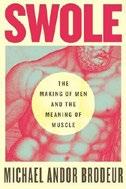
A self-described “meathead” writes compellingly about the world of bodybuilding.
“I am trying to get Big, and doing it very much on purpose. No, I am not sure why. Yes, you can feel my arm.” So writes Brodeur, who, at a glance, might seem an unlikely candidate for bodybuilding: He is, after all, the classical music critic for the Washington Post. But there’s more to bodybuilding than meets the eye. It’s the locus of a gay subculture, a highly visible means of self-expression, and a way of both adopting and subverting he-man ideals—and besides, “I also really love how my ass looks.” Brodeur takes readers on a wide-ranging tour of lifting and the cultural factors that propel “the long physical and psychological road of consciously building one’s body.” One is the world of childhood, in which many boys played with musclemen dolls and unconsciously absorbed their physical
ideals; another was the openness of the bodybuilding culture to those who were once the “klutzes who sucked very conspicuously at team sports and grew up to opt for the weight room over the battlefield or the ball field.” Brodeur is consistently funny, but he is also a cleareyed student of the culture with a trove of trivia to fall back on: Who knew that Lou Ferrigno’s Incredible Hulk body double was a Black bodybuilder (no matter, since the filmmakers decided “green is green”) or that some current bodybuilding ideals can be traced to Dutch Renaissance art? Allowing that there are all sorts of prejudices against it, Brodeur, in the end, delivers a host of good reasons for picking up the weights and putting those muscles to work. A memoir, history, and critical essay in one, sure to captivate anyone who’s ever pumped—or dreamed of pumping—iron.
Buhs, Joshua Blu | Univ. of Chicago (384 pp.) | $35.00 | June 24, 2024 978-0226831480

An offbeat investigation of how the source code for conspiracy theories was written long ago. Charles Fort (1874-1932) is not a household name today, but his influence reaches deep into American life. In the early years of the 20th century, Fort began to collect newspaper articles about odd things or “anomalous reports”—e.g., rains of fish or stones, strange lights in the sky, contact with the dead, etc. Buhs, author of Bigfoot and The Fire Ant Wars, examines how Fort knitted these into a series of books about inexplicable occurrences and their possible meanings. Fort believed that they could explain the real nature of the universe, and he eventually expanded the theory into investigations of how
This book offers new light on an ongoing nationwide problem.
power was really wielded in society. Things are never as they seem, he wrote, and there are worlds behind the world. His work and theories attracted a variety of followers; after his death, an organization called the Fortean Society sought to spread his ideas. For decades, sci-fi writers have drawn on Fortean thinking, and Buhs tracks the many paths of influence, especially involving groups obsessed with UFOs and vanished civilizations. Much of this was harmless quackery, but the rise of malevolent conspiracy theories was more pernicious. The result has been the infiltration of the bizarre and the extreme into civil discourse at every level (see: QAnon.) “Fort and Forteans played their part in the creation of this world,” says Buhs. “They eroded the distinctions between truth and falsity. They launched a thousand conspiracies into the national consciousness.”
Unfortunately, the author often breaks the primary narrative with unnecessary detours, making it difficult to follow. Some will enjoy the arcane material, but many will find it too eccentric to keep the pages turning. Despite extensive research, this book is mainly for aficionados of the weird.
Calarco, Jessica | Portfolio (336 pp.) $30.00 | June 4, 2024 | 9780593538128

Historical analysis of how women have always been America’s de facto social safety net.
Sociology professor Calarco makes an evidenced-based
argument about how women have been holding America together for decades, receiving little recognition or credit in comparison to their male counterparts.
Drawing on 4,000 surveyed parents and five years of research, the author demonstrates the American tradition of relying on women to hold society together, forced to do the dirty work and bear the weight of a deeply flawed system. Calarco reveals that the U.S. continues to sell and push the neoliberal narrative throughout the country, instilling the idea that profit is the highest priority and that the state should stay out of it. The author chronicles the eye-opening stories of many people who have endured the worst of the system, including a single mother who struggles to stretch her meager state benefits while working three jobs and caring for her children; a daughter who became her family’s supplemental income foundation as a result of the opioid crisis. “Without a net, societies crumble,” writes the author. “That’s why people in the US are more depressed, more sick, and more likely to die young than people in other high-income countries. It’s why we work longer hours but produce less. Why we have a higher poverty rate… why we have more political unrest.” The lack of a net allows the broken system to continue to claim victims, more often than not leaving women to take on the grunt work. Calarco leaves readers to contemplate the many solutions mentioned throughout the book, from universal health care and child care to funding for agencies to assist the elderly. The author consistently emphasizes that it is a systemic issue, requiring a community response to be effective.
Filled with heart and engaging research, this book offers new light on an ongoing nationwide problem.
Clancy, Kelly | Riverhead (368 pp.)
$30.00 | June 18, 2024 | 9780593538180

An intriguing book that shows how games are much more than just diverting fun.
Clancy is a neuroscientist and physicist whose research focuses on the mechanics of human intelligence, and she has worked with the AI lab DeepMind. Consequently, she brings an interesting perspective to this study on games, game theory, and the meaning of games. People have played games for millennia (“Games are older than written language. Games like Go, chess, backgammon, and mancala are living artifacts”), but Clancy is most interested in games designed to simulate reality, even if in symbolic form. Chess was the classic example, used to teach and refine war strategy. The idea of simulations evolved toward attempts to forecast battle outcomes, using scale models of actual terrain and opposing teams of officers. Sometimes, this was spectacularly successful, but on other occasions, it failed due to unpredictable events. In any case, the idea of using games to simulate reality and predict outcomes became embedded in the culture, and the subsequent development of game theory gave it the patina of scientific certainty. It spread into virtually every aspect of modern life, including economics and politics. However, Clancy notes that these systems are bound by the creators’ rules, which assume rational self-interest from the players. The key issue is that human decision-making is not often rational, although it might be better to say that it entails a higher level of rationality than a game can incorporate. “Game theory is not a very good model of people,” writes Clancy, “but it’s good enough to be trouble.” While this is absorbing material, the nature of the subject means that parts of the book require
close attention. For diligent readers, it’s well worth the effort. A revealing look at the hidden role that games have played in human development for centuries.
Coleman, Taiyon J. | Univ. of Minnesota (160 pp.) | $18.95 paper June 4, 2024 | 9781517913298
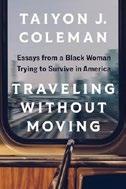
A Minnesota-based Black professor reflects on the ways race has shaped her life. Coleman, a professor of English and women’s studies, grew up on Chicago’s South Side with a single mother of five children who “died prematurely” at the age of 49. The first in her family to go to college and then graduate school, the author was thrilled to find a job teaching composition to college students. Throughout her journey, Coleman’s race and gender have influenced the way she moves through institutions ranging from academia to her family. Whether being told to accept hurtful slurs in a course designed to prepare her to teach composition, coping with racist medical care that led to preventable pregnancy loss, or learning how to connect with Liberian refugees in her first teaching job, racism has pervaded every aspect of Coleman’s life. Even this essay collection represents a triumph over her family’s assumptions that “writing and being a writer would be an extremely challenging thing for a poor Black girl from Chicago to do and be.” The author shows how she has surmounted these obstacles systematically. “Overcoming my negative writing experiences is a daily practice of consistent writing and self-love through individual work and effort and community,” she writes. “The rules for my craft are simple: just read and write when and where you can
about what you want.” The result of her diligent work is this ebullient, insightful, frank, and humorous essay collection suffused with a joyful defiance; ultimately, it reads like a well-deserved celebration of Coleman’s many personal and professional triumphs. At times, the collection lacks cohesion—some essays slip into an academic register that jolts readers out of the otherwise eloquently conversational text, but overall, this is a sharp, worthy read.
A Black professor’s compulsively readable book of essays about her encounters with racism.
Crawford, Alan Pell | Knopf (400 pp.) $32.50 | July 2, 2024 | 9780593318508

A vivid re-creation of the Revolutionary War in the American South, a guerrilla-style conflict that paved the way for the British surrender at Yorktown.
In this intriguing work of military and social history, Crawford, author of Unwise Passions, argues convincingly that the South was where “the most decisive battles…were fought.” The author mines the historical record to show that the Southern conflict was an exceedingly violent version of a guerrilla war, one that pitted loyalists against revolutionaries at every level of Southern society. Gen. Nathanael Greene, taking command of the American side after some near-catastrophic losses, understood “that he had stepped into what a later generation would also call a civil war. Neighbors were killing each other with horrifying regularity.” On the field of battle, conditions were punishing. Infectious diseases and starvation stalked the soldiers as both sides employed scorchedearth tactics and fought bitterly to hold their ground in South and North
A well-informed, bleak analysis of social media’s malign influence.
Carolina. Many Americans barely remember learning about the siege of Charleston and the battles of Camden, Kings Mountain, and Cowpens, but these were crucial to the eventual victory at Yorktown. There were some heroes, such as Johann von Robais, a superb German military officer who died fighting for the Americans, but there were cruel and opportunistic officers on both sides: the “coldblooded and ruthless” British officer Banastre Tarleton and American officer Thomas Sumter, who authorized his troops to pay themselves by plundering property, which included enslaved people. Crawford follows the revolutionaries in their quest to cut off British supply lines from the coast to the backcountry. The author could have strengthened his superior account with more attention to the loyalists’ point of view. Nonetheless, he provides a clear picture of the stark cost of American independence on both sides of the conflict.
A clear, coherent, and even suspenseful account of the American Revolution.
DiResta, Renee | PublicAffairs (448 pp.) $34.00 | June 11, 2024 | 9781541703377

A well-informed, bleak analysis of social media’s malign influence.
DiResta, technical research manager at Stanford Internet Observatory, begins in 2014 when a measles epidemic began in Disneyland and spread rapidly. Because many victims weren’t vaccinated, a pediatrician in the California legislature
introduced a bill “to eliminate the personal-belief exemption.” Those involved were stunned at the avalanche of abuse that arrived from across the country, mostly from the anti-vaccine community. After a long battle, the bill passed, but it wouldn’t pass today. Digging into her research, DiResta discovered that “there is an asymmetry of passion on social media.” While most Americans immunize their children, small numbers of true believers spout anti-vaccine propaganda loudly and frequently. As the author continued her investigation, “YouTube’s recommendation engines began to suggest I might also be interested in chemtrails, flat Earth, and 9/11 conspiracy theories.” The capacity to shape public opinion—most outraged opinion—has skyrocketed through internet “influencers,” who are masters of attracting attention. Social media rewards content that generates strong reactions, and nothing is as strong as a shared enemy. As philosopher Eric Hoffer wrote, “mass movements can rise and spread without belief in a god, but never without a belief in a devil.” Good reasons for hatred are irrelevant because a lie, constantly repeated, becomes the truth. In 2020, few Republicans believed that an immense conspiracy defeated Trump; today, most believe in “the Steal.” DiResta recounts the dispiriting story that began two months before the election, following with a longer, perhaps more depressing account of the craziness surrounding Covid-19, which only intensified the “rage, conspiracism, and mob pursuit of retribution” that dominate our national discourse. Readers hoping for the traditional conclusion describing how to fix matters will not find one.
More detailed and insightful than most books in a crowded field, which makes it that much more disheartening.
Dubus III, Andre | Norton (288 pp.)
$28.99 | March 5, 2024 | 9781324000440

A new nonfiction collection from the award-winning fiction author.
Dubus III, who also wrote a well-received memoir, Townie, gathers 18 deeply personal essays, all but one previously published, on fatherhood, manhood, family, vocation, and, most of all, love and gratitude. The father of three writes tenderly of his sense of wonder after the birth of his daughter—“those moments of unspeakable grace” holding a newborn—and of his overwhelming fear when his four-weekold son underwent emergency surgery to correct a congenital malformation. The author honors his wife, whom he credits with nurturing his life “of peace and stability and deep fulfillment.” But that life has been hard won. Growing up in poverty, raised by a single mother after his father abandoned the family, Dubus lived in 25 houses throughout his childhood and was bullied as the new boy in town and at school whenever they moved. Angry and defiant, he transformed himself into a muscular fighter with “a short fuse for bad behavior of any kind.” Several essays probe the connection between violence and masculinity—e.g., the irresistible allure of guns and the adrenalin rush of a fight. By the time he was in his 20s, though, the author felt terrified that he was incapable of “truly loving someone, and being loved back.” A relationship with one girlfriend was doomed by unbridgeable differences in money and class: Her wealth, he writes, “created a chasm between us we tried to pretend wasn’t there.” Still, while they were together, she taught him to knit—an act that at first he denigrated as a sign of her privilege, but soon came to value. “It required me to focus,” he admits, “and it allowed me to drift, too.”
Although inevitable repetitions occur in pieces written over several decades, the collection melds into a touching memoir. Intimate, moving essays.
A death doula and author on dying—and living—out loud.
BY KATE TUTTLE
WHEN ALUA ARTHUR was 3, her family fled Ghana in the wake of a coup against the government. By the time family members were reunited in the United States, both of Alua’s parents had decided to become Christian missionaries, a life that saw Alua and her three sisters bounce around the globe as their mother and father preached the Gospel in Maryland, California, Kenya, and eventually Colorado.
Like many immigrant children of educated parents, Arthur felt parental pressure to enter an elite profession; she chose law. But even working in legal aid, the arena most aligned with her values, began to feel unbearable. In Briefly Perfectly Human: Making an Authentic Life by Getting Real About the End (Mariner Books, April 16), Arthur braids together memoir and manifesto, tracking the personal journey that led her to become a death doula—someone who works with the dying to help them experience the death they want—while also exploring the ways that reckoning with our own mortality can help each of us enrich the lives we lead, right now, today.
“For me, death work is activism at its core,” Arthur writes. “Fueled by anger but cloaked in love.” Her anger is aimed at the broken health care industry, which keeps many of us from the kind of death we might want, and at a society that silences honest communication about grief and loss, as well as life and joy. We spoke with Arthur on the phone from her home in Los Angeles; our conversation has been edited for length and clarity.
I was fascinated by your childhood—a mix of religion and travel that left you tightly bonded with your family but also a perennial outsider. How did that affect your choice to become a death doula? Being an outsider—on some level it’s a cross I bear, but it’s also a gift that
I carry. For starters, there’s curiosity. I’m really nosy; I just ask so many questions of people all the time. I’m very curious about humans, about their stories, about the world that we live in, about how we relate to one another. I’m down to have the difficult conversations. I

don’t fear my tears; I don’t fear the tears of others. I’m not afraid of fear. You know, people that are dying are often treated like pariahs; [others] are worried about them or scared of them or don’t want to come too close. A big part of my job is to walk closer to it.
One childhood moment you describe is when you heard goats being slaughtered and instantly decided to become a vegetarian. It made me wonder how you deal with the physical, visceral, bodily part of death that a lot of us are afraid of.
I was pretty comfortable with it the first time I saw it, which was when my brother-in-law was dying. I was in awe of it. It feels very natural. It looks like a
system shutting itself down, which is essentially what’s happening. At some point the breathing becomes mechanical. You can tell that the human-ing part that used to control it is no longer in the room. I’ve never experienced birth, but I hear that in some ways it’s kind of the same—at some point the body just takes over and the human has to get out of the way in order to allow the thing to occur. The body knows how to die. It’s the humans that get in the way.
You were raised in a very religious household, yet you write about questioning Christianity and following your own path. How have you managed to remain close to your family? There’s a part of Christianity that I like: I like the
compassion, the kindness. Yet some of the ways that Christianity approaches death and dying don’t jibe with me. I think that [my parents] would still prefer if I accepted Jesus Christ as my lord and savior. But they also see that maybe the way that I choose to move through the world [follows] the principles that Christianity preaches.
Obviously everyone is individual, but do you see any commonalities in terms of what people are thinking about in their final days? I think many people want some peace. They want it to feel peaceful. They don’t want to be in pain. Some people really want their loved ones to be there; others wait until their loved ones step out of the room before they actually die. There aren’t a lot of universals, other than the process of the body when it is dying from disease.
It’s a great gift to be with people as they die, but it’s also hard work, emotionally. How do you renew yourself afterward?
I try to spend time in silence. Sometimes I’ll call my mom or my partner and cry. I cry a lot. I eat a lot of potato chips. I take a bath or a shower, wash my body in a ritual of what is not mine to keep. Sometimes I touch the door jamb when I’m going in a place and then touch it again as I exit, to make sure that I mark that I’m going into a place and the me that leaves won’t be the same as the one that went in.
Why are rituals so important in death, and in life?
Our culture has largely forgotten about ritual, hasn’t learned how to properly ritualize those shifts in identity that we experience. I do my best to mark it in some way for myself. And I hope that it’s an invitation
for other people to do the same. I love a celebration, I really do. I love honoring what has come before and paying attention to where we’re going.
We Americans use a lot of euphemistic language to avoid even mentioning death. How can we work on changing that? Talk to your parents or the elders in your life to get a sense of what they want when they die. If we can speak our fear to other people, it creates space for somebody else to talk about it. I think not using euphemisms is helpful—acknowledging our discomfort, our pain, our grief, our sorrow. I wish we could grieve out loud, we could be joyful out loud, we could live the whole human experience very publicly and out loud.
This book is very out loud—you make yourself very vulnerable and
honest. You write about a big depression, about sex and drugs. Was it scary to be so open?
It sounds ridiculous, but I was not thinking about people reading it when I wrote it. And then I sent it off to my editor and I was like, “Oh, shit.” It’s terrifying now! But here’s my hope: My hope is that by being as transparent as I’ve been, it gives other people permission to also be transparent in their lives. I hope that somebody feels a little less alone in their struggles, to say the difficult things, to make the hard choices, to recognize the signs of burnout and depression in their own lives, to be with their mortality, to have difficult conversations with other people. I hope that it serves as an example, or at least as a companion.
I love honoring what has come before and paying attention to where we’re going.
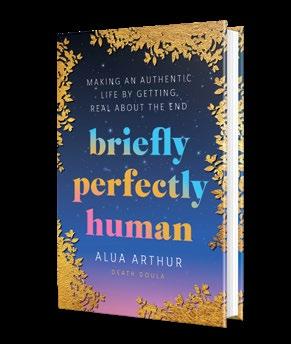
Eglinton, Mark | Permuted Press (272 pp.) | $19.99 paper
May 21, 2024 | 9798888454275

The shadowy man behind the Bitcoin curtain is unveiled—maybe.
Eglinton, known mostly for tracking down the fugitive programmer John McAfee and getting Metallica singer James Hetfield to talk, doesn’t do a lot to demystify the architecture underlying cryptocurrency and its most famous exemplar. He does hit it right, though, when he comments that “Bitcoin, and the players in it, operate in the murky margins where truth and virtue are hard to identify at all.” Like all economies, Bitcoin is driven by scarcity. Unlike most economies, a single inventor lies behind Bitcoin, a figure known as Satoshi. The name conjures up a superhero or supervillain, to play along with Eglinton’s title. However, he notes, it’s not a V for Vendetta thing; instead, the Australian techno-wizard who took up the name explains that “it was meant to be a funny reference to Pokémon.” The name, legendary within the secretive Bitcoin community, reflects the putative inventor’s interest and training in electrical engineering, computer science, cryptography, and all things Japanese. While the technology behind Bitcoin differs in key respects from earlier systems, writes Eglinton, the inventor drew on such things as “the distributed electronic cash system B-Money” and peer-to-peer communications protocols. Operating from the Australian outback, the inventor slowly built a network that bypassed traditional internet channels, its adherents busily “mining” new coins and, with luck, “winning what amounts to a giant lottery” in the race to capture a market that, with scarcity built into the system, is theoretically limited to 21 million Bitcoins. Whether Eglinton’s subject is the real Satoshi or not, he revolutionized at least a corner of the financial world—no easy task.
Fans of cryptocurrency, and perhaps forensic accountants, will want to give this a read.
Kirkus Star
Ford, Christine Blasey | St. Martin’s (320 pp.)
$30.00 | March 19, 2024 | 9781250289650
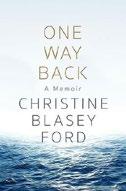
A hero of the #MeToo movement tells her full life story in her own words in this revealing, confident memoir. Ford grew up in the suburbs of Washington, D.C., in the 1960s and ’70s. “Living in the land of our founding fathers,” she writes, “built on a system of power that was created by and for men, of course men and women were treated differently and kept conveniently separate.” It was in this environment that she first encountered future Supreme Court Justice Brett Kavanaugh, who, she writes, sexually assaulted her at a party when she was 15. (He was 17.) The experience had a profound effect on her, but as she demonstrates in this courageous text, it was hardly the driving force of her life. For graduate school, she moved to Southern California, where she learned to surf, began her work in psychology and biostatistics, and became a mother. She never imagined she would end up back in D.C. as an adult, testifying during Kavanaugh’s tumultuous nomination hearing. Though she had supported #MeToo, she writes, “even when considering coming forward, I saw myself more as a whistleblower than an activist. I didn’t even identify as a ‘survivor’ at that point (but after enduring the testimony and its aftermath, I would change my view).” Ford offers a cleareyed description of the personal, professional, financial, and emotional fallout, with which she’s still reckoning five years later. She partially attributes her survival to the thousands of letter writers who reached out with thanks, support, and their own assault
stories. It is to them she dedicates her memoir, which extends far beyond the hearing that made her a household name. “My story can’t just be about the three months in 2018 when my life exploded in front of the world’s eyes,” she writes. “My life weaves together surfing, statistics, motherhood, friendship, and politics.”
An artful and honest account of sacrifice and survival.
Fowler, Corinne | Scribner (400 pp.) $30.00 | June 11, 2024 | 9781668003978

A historian of colonialism examines its effects on the quietest corners of rural Britain. Colonialism, writes Fowler, reshaped every inch of the British Isles, “from small Cumbrian ports and Scottish islands to rural Norfolk and the depths of Cornwall.” As the subtitle promises, she hits the hiking trails and backroads in the company of scholars, descendants, and activists, turning up evidence of the kind that drives the Tories crazy: Knowing that a country manor was built on the backs of enslaved people can “guilt-trip visitors into feeling ashamed of British history,” as one querulous commentator objected. Of course, countless country manors were funded by the slave trade. For example, the island of Jura, Scotland, was an important entrepôt for a sugar trade controlled by members of the Campbell clan, who intermarried with other sugar barons and, living in splendor around Glasgow, organized resistance to reform: “Unsurprisingly, given the money to be made, Glaswegian businesspeople supported the slavery system.” Slavery meant that Welsh wool went to make plain cloth with which to clothe the enslaved people on sugar plantations in the Caribbean. Providing pasturage for the textile industry meant enclosing the
land, which meant wresting the commons from country people and building walls and fences. Fowler’s essays tend to run a touch too long, but she turns in some fascinating tidbits, including the role of William Wordsworth’s colonializing brother in paying William’s way so that he could write at leisure (and, in the bargain, opening the door to the opium trade, whose fruits William’s pals de Quincey and Coleridge so enjoyed); the subtle critique of slavery in Jane Austen’s descriptions of the English rural gentry; and the ongoing effects of a new kind of empire, financial and globalist, on Britain’s byways and hedgerows. A deftly critical, readable contribution to the historiography of empire.
Goodall, Ashley | Little, Brown Spark (288 pp.) $30.00 | May 7, 2024 | 9780316560276
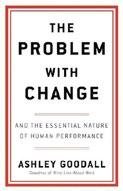
A senior executive reflects on the importance of stability in the workplace.
Goodall, a former executive at Cisco and Deloitte and co-author of Nine Lies About Work, is sick of the workplace upheaval he calls “life in the blender.” As he notes, “life inside many companies today feels like an endless procession of upheavals, each unleashing another torrent of change and rearrangement and reconstruction, each once again reshuffling all the pieces into some supposedly more desirable configuration.” Rather than improving company culture, this constant flux makes companies less humane—and therefore more difficult—places to work. “Work today uproots us, in many cases needlessly, and in many more cases carelessly,” writes the author. “We are suffering from the human version of transplant shock.”
Drawing on two decades of personal experience and a plethora of research, he argues for a series of practices companies can use to support stability. These
A sturdy, well-informed treatise about trading change for care in the workplace.
THE
include implementing and valuing rituals like weekly check-ins, seeking out opportunities to make space for spontaneous input, encouraging bonding through work in small groups, creating an organizational identity through shared secrets, and fostering personal autonomy as a way of building resilience. Throughout, Goodall insists on prioritizing predictability and human connection over buzzwords like “innovation.” Indeed, he devotes an entire chapter to the importance of eschewing corporate jargon for verbal clarity. Goodall’s insistence on humanity is a refreshing alternative to the current trend of treating corporations—rather than workers—as people, and his emphasis on collaboration over competition is a significant departure from mainstream business-speak. However, techniques such as “space-making” have been practices in activist communities for years, which the author does not acknowledge. Overall, though, the book’s clear language, deep research, and clarity of concepts make it a useful read for managers and employees alike. A sturdy, well-informed treatise about trading change for care in the workplace.
Hart, Kevin | Paul Dry Books
(242 pp.) | $19.95 paper
June 11, 2024 | 9781589881891

A poet mines his past to discover who he once was.
“Now, over sixty, I find myself at the center of a storm of feelings I have not known for more than fifty
years,” writes prolific poet Hart (b. 1954) in this intimate narrative, which begins in a “grimy part of London” in a “dark council house.” As the author writes, “the reptilian eyes of teachers” ruled over his school. He recounts being bullied regularly, even berated for writing with his left hand, and caning was common. For Hart, “childhood had been an immense plane without perspective.” Gifted a Parker fountain pen, his “talisman,” in his final year of primary school, he created imaginary creatures in his alphabet book and listened to the BBC’s performance of The Pilgrim’s Progress . “Ever so slowly the world was changing,” he writes, “and ever so quietly pulling us along with it, as though by a single hair.” An outsider looking in, the author “would have to chisel my way through time.” At Eastbrook Boys School, he was “so ordinary and so insignificant.” Hart lovingly recalls getting dressed up for their twoweek caravan vacation in Folkestone, even as he confesses that he “lived deep within myself.” When his parents told him they were moving to Australia, he “felt as though I was being led to the very brink of the map of all I knew.” In hot, mosquito-infested Brisbane, they lived in a camp before they got a small house. An athletics test, high school, suddenly enjoyable algebra, ticks, fruit bats, religion, poetry, family secrets—Hart is excellent at capturing his misty inner life and his many experiences and adventures adapting to a new environment and “dreams so florid, so rich, and so elusive that when I woke up, I was shaken by them.”
Vivid, anguished memories abound in this poignant memoir.
Hemingway, Ernest | Ed. by Spanier, Sandra & Verna Kale & Miriam B. Mandel
Cambridge Univ. (700 pp.) | $39.95 May 31, 2024 | 9780521897389
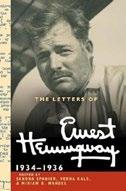
The latest volume in the canonical writer’s private correspondence. This installment, which covers two years of Hemingway’s letters in the mid-1930s, offers extraordinary insights into the author’s personal and professional life. The book includes a remarkable range of textual material, including cables, postcards, assorted jottings, and unsent correspondence. We follow Hemingway’s passion for fishing, increasing involvement with leftist politics, and ongoing dedication to the craft of writing. His keen observational skills and rhythmic expressiveness are abundantly apparent in these letters, which often reflect the developing style of his fiction, as well as his experiments in blending fiction and nonfiction in Green Hills of Africa , which he worked on during this period. In her engaging introduction, editor Kale aptly points out that this volume “is a book about fish. It is about other things as well, of course: writing and art, friendship and fatherhood, the ongoing Great Depression and the rising threat of fascism in Europe. And fish—so many fish.” Hemingway’s accounts of fishing adventures—an activity that seems to have formed the spiritual center of his life during this period—are indeed numerous, strikingly detailed, and highly memorable. Another prominent topic involves the commercial dynamics of writing. The author frequently explains how he views his “serious” writing in relation to his journalism for publications such as Esquire, his awareness of the allure and perils of artistic
complacency, and his delight and disgust with his burgeoning celebrity. Clearly emerging in this collection, too, is Hemingway’s difficult personality. The letters testify not just to his wit and charisma, but to his vanity, insecurity, and peevishness. The unfiltered revelation of this complexity makes for highly entertaining reading. Though the eclectic material arranged here may seem chaotic, the author’s torrential personality ultimately grants it a satisfying coherence.
A revealing and enchanting window into Hemingway’s life and work.
Hernandez, Zeke | St. Martin’s (320 pp.) $30.00 | June 4, 2024 | 9781250288240
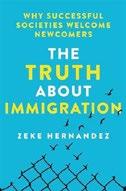
A fresh, plainspoken take on the perpetual immigration controversy, upending many assumptions. Hernandez, a Uruguayan immigrant, is a professor at the Wharton School. “There’s no way that I would be a professor at Wharton without all the opportunities this country gave me,” he writes. “Seeing this requires long-term thinking, framing people as an investment rather than a cost.”
Arguing convincingly for a more complex approach to the issue than current fevered debates suggest, the author delivers well-reasoned analyses of how the social diversity broadened by immigration directly benefits communities and how a well-managed immigration system contributes to subtler yet longer-lasting economic strengths. “The triangle of immigration, investment, and jobs is one of the great untold stories of immigration,” he writes. Immigrant-rich
communities create a “conveyor belt” of trust and opportunities, which leads to innovation, as exemplified by the unexpected growth of the Pollo Campero chicken chain. Local economies become more diversified and complex, while similar evidence shows a relationship between immigrants in the workplace and product innovation. Following his intriguing discussion of economic benefit, Hernandez offers an “unflinching look at the hot-button issues,” beginning with the tragic story of how nativist surges quashed reasonable reform for decades: “We have compelling evidence that the 1924 [National Origins Act] decimated America’s capacity for innovation, investment, and job creation.” The author speaks to our current political climate with chapters countering accepted narratives that immigrants steal jobs and amplify crime rates, and he concludes with “How To Fix Our Broken Immigration System.”
Hernandez writes with passion and clearly enjoys the sense of “reaching across the aisle” to those with negative preconceptions, and he offers affecting personal stories that illustrate both immigrant motivations and societal benefits. He ends with a “provocative but true conclusion: the real national security threat is not allowing immigrants in.” A highly readable, potentially influential contribution to the literature on immigration.
Other Rivers:
A Chinese Education
Hessler, Peter | Penguin Press (480 pp.) $32.00 | July 9, 2024 | 9780593655337

An American writer working in China as a teacher navigates a careful path through a complicated, changing culture. Beyond the headlines of strategic rivalry
and military confrontation with China are countless stories of real people trying to live in a complex country. In his previous books, especially River Town and Country Driving, Hessler, a veteran staff writer for the New Yorker, recounted his experiences of China, focusing on his work as a university-level instructor. In his latest book, he continues the theme, tracking the huge changes that have taken place in the past three decades. The first part of the book is set in the 1990s, when he taught mostly students from poor families. They often struggled with the university experience but worked to make the most of their opportunities. Hessler left after several years. In the second part of the book, he chronicles his return to China in 2019 to teach journalism and nonfiction at Sichuan University. He found that competition between students was intense and that the educational environment had changed significantly. There were surveillance cameras everywhere and an army of bureaucrats issuing opaque orders. There were rabidly nationalist students called “Little Pinks,” who seemed determined to root out any sign of dissent, as well as the ever-present danger of jubao, an anonymous complaint against a teacher that could end their career. Hessler was fired after a few years, effectively expelling him from China, and he was never able to establish why. However, he built solid relationships with a number of students, and he tells their stories with empathy and affection. The text is not an antiChina diatribe; though Hessler is clearly distressed at the country’s direction, he offers an informative, respectful story.
Writing from personal experience, Hessler shines a valuable light on the reality of life in today’s China.

Holstein, Alizah | Viking (368 pp.) | $30.00 June 25, 2024 | 9780593490082

For a scholar of Roman history, the struggle to understand Rome’s inhabitants and cultural norms “expanded [her] as a scholar and as a person.”
Rome that an actual living, breathing Roman did not?” She turns up plenty. An intriguing history of Rome as reflected in a scholar’s life.
Hughes, Kathryn | Johns Hopkins Univ. (432 pp.) | $29.95
June 4, 2024 | 9781421448145
For more on the history of Rome, visit Kirkus online.
In 2005, Holstein, an independent editor, earned a doctorate in medieval history from Cornell. Although she sketches out a timeline of Rome from the first Republic through Empire to modern times, the author is particularly interested in the 14th century, a “rather gloomy period of Roman history” when the papal retinue under Clement V left the city for a 70-year residence in Avignon. Holstein’s thesis centers on the question of how medieval Romans understood their city’s storied past and how a “mythologized memory of a ‘golden age’ of the past was used in the struggle for political and social power.” The author describes her lifelong education in Italian language and culture, as well as her struggles with paleography, the study and deciphering of historical manuscripts. The book’s title signals that the narrative will be a personal reflection on what Rome has meant to her and how her life and learning led her to its centuries-long story. Consequently, along with the history, Holstein offers reflections on apartment hunting, rock-climbing clubs, and learning Latin. We follow along as the author jumps through the many hoops necessary to gain access to the treasures of the Vatican Library, and we get a good sense of what living in Rome was like for her during her many research trips. More heartfelt memoir than dry history lesson, the product of Holstein’s lifelong fascination with Rome answers her primary questions: “What can an American tell anyone about Roman history? What could she say that an Italian had not already said? How could I know anything about
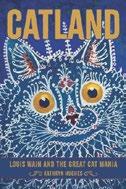
A surprisingly engaging study of an eccentric late-Victorian illustrator whose work “transformed [cats] from anonymous background furniture into individual actors with names [and] personalities…of their own.”
Upon his death in a British mental hospital, Louis Wain (1860-1939) was a household name, but he is largely forgotten today. Known for his distinctive style of drawing cats mimicking the mannerisms, poses, and aspirations of Victorian society, many of his feline characters wearing the era’s latest fashion styles, Wain managed to eke out a respectable living for decades as a freelance illustrator for periodicals and postcard designers. Born with a cleft lip and largely home-schooled and retiring by nature, he had to support five younger sisters and an unstable mother nearly to the end of his life. His proclivity for cat characters emerged at a time when people in Britain began to shift their focus from dogs to cats.
Hughes, a literary critic for the Guardian and author of Victorians
Undone, is marvelously knowledgeable about the era’s famous cat people, including Charles Dickens, Edward Lear, and T.S. Eliot, and about the period’s massive societal changes. “It is no coincidence,” writes Hughes, “that the modern cat emerged during what historians call ‘the second industrial revolution,’ that period between 1870-1920 which was marked by
electrification, machine production, geographic mobility, mass culture, and the fracturing of class relations.” In 1907, Wain traveled to New York to work on a syndicated cat cartoon; he was able to reinvent himself at the end of World War I with dazzling avantgarde cat designs before his hospitalization, probably for schizophrenia, in 1924. This consistently fascinating book includes a generous selection of Wain’s illustrations, which became increasingly bizarre during his later years.
A tremendous literary feat in which we learn about Victorian sociology through the work of a remarkably unique artist.
Admiral Canaris: How Hitler’s Chief of Intelligence Betrayed the Nazis
Johnson, David Alan | Prometheus Books (256 pp.) | $32.95 June 4, 2024 | 9781633889989

A new biography of the man who “did as much to save Jews and other prisoners from Nazi death camps as Oskar Schindler.”
Prolific historian Johnson, author of The Last Weeks of Abraham Lincoln and Decided on the Battlefield , recounts how Wilhelm Canaris (1887-1945), Hitler’s chief of intelligence, grew to despise his boss and attempted to warn the Allies of his plans and, with some success, mislead him.
Enlisting in the German navy in 1905, Canaris impressed superiors and became an intelligence officer at the onset of World War I. He served with distinction and remained in the shrunken navy after 1918. Fiercely nationalistic and conservative, he hated the Weimar Republic, cheered the Nazi takeover, and was appointed chief of the Abwehr, Germany’s military intelligence service, in 1935. Johnson fares no better than other scholars in explaining
why Canaris turned against Hitler after a few years. Many Nazi officials disliked him, but Canaris was among the few who took action. Through smuggled papers and leaks, he regularly informed the Allies of Hitler’s plans. Sadly, they were generally dismissed as misinformation. Hitler grew to take a dim view of his discouraging intelligence. Perhaps Canaris’ greatest achievement was convincing Spanish dictator Franco to refuse Hitler permission to march Nazi troops through Spain to capture British Gibraltar. More than most biographers, Johnson recounts his subject’s rescue of hundreds of Jews by ordering their release from concentration camps, smuggling them out of the country, and even sending them abroad as Abwehr agents. It turns out that rescuing Jews was a minor industry among Nazi officials, especially if they were influential or had friends among them, but Canaris stands out. A suspicious Hitler dismissed him in 1944, and he was executed in the aftermath of the assassination attempt, although he was probably not involved. A solid portrait of the iconic Nazi.
Junger, Sebastian | Simon & Schuster (176 pp.) | $27.99
May 21, 2024 | 9781668050835
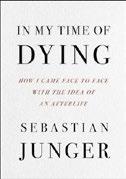
A distinguished author and filmmaker reflects on how a near-fatal emergency caused him to rethink the relationship between life and death.
Throughout his life, Junger, author of The Perfect Storm and other acclaimed books, courted injury—and his own untimely demise—through high-risk activities like surfing and work as a climber for tree service companies and, later, a war correspondent. Intellectually, he always understood that “death is the ultimate consequence [and] reality” that gives human existence meaning. However, it was not until he almost lost his life to a pancreatic aneurysm, caused by an undiagnosed case of median arcuate ligament syndrome, that his understanding became more viscerally meaningful. By that time, Junger, then in his late 50s, had settled into a more quiet life with his second wife and two small daughters. One morning, sudden abdominal pain “different from any pain I’d ever known” ripped through his body and then continued on and off until the day “the floor reeled away from me as if I were standing on the deck of a ship” and he could not walk unassisted. At the hospital, doctors first thought that he had ruptured his aorta. They later pinpointed the problem as pancreatic, all while Junger lost blood and cycled in and out of consciousness. Just as he felt himself being “pulled…sternly into the darkness,” he saw his dead physicist father. Haunted by the visitation, Junger researched near-death experiences in the period after his recovery, and this luminous book is the result. The “answers” he found at the intersection of religion, philosophy, and science—that human consciousness may be woven “in the very nature” of matter that can never be fully known—intrigued him, but they also made him even more grateful for the love that bound him to the living and the dead.
Intelligent and poignantly probing.
Karmel, Ian & Alisa Karmel
Harmony (304 pp.) | $28.00
June 11, 2024 | 9780593580929

Being fat is like the punchline in one of life’s cruel jokes. It doesn’t have to be.
Ian Karmel, who has spent much of his life dealing with weight problems, recounts how he became a comedian, first in stand-up and then as a writer, as a response to his size. Early on, he notes that he will be using the term fat throughout the book. “It’s a loaded word,” he writes, “but I don’t think it’s the word’s fault that we treat fat people like garbage.” His sister and co-author, Alisa, who also struggled with her weight, took a different path. She gained a doctorate in psychology, aiming to help others deal with body image issues. Ian engagingly recounts the wonderful meals, drinks, and snacks he has consumed, but he also chronicles the difficulties of dealing with snide comments and bullying. His defense mechanism was to tell the joke before someone else did, and this is the element that makes this book remarkable. After a string of funny stories, he often slips in something painful or even angry. After several health scares, he realized that he had to lose weight—and did. He acknowledged that much of his overeating was due to stress and insecurity and that confronting those issues was essential. At this point, Alisa enters the text, and in the closing chapters, she bolsters Ian’s journey of self-discovery with an examination of the psychological underpinnings of weight problems. The book could have easily turned into a clumsy plea for sympathy or a bad-tempered rant, but Ian and Alisa tell their interlocking stories with grace and humor. Ultimately, the book is about resilience and growth; for this reason, it has something to say to everyone.
The Karmels serve up a comic and philosophical exploration suffused with hard-won wisdom and charming wit.
Unsettled: American Jews and the Movement for Justice in Palestine
Kroll-Zeldin, Oren | New York Univ. (288 pp.) $30.00 | June 11, 2024 | 9781479821457

A Jewish academic and activist delineates the history of Jewish social justice activism and solidarity with Palestinians.
Kroll-Zeldin, a professor of theology and religious studies at the University of San Francisco, examines the important tradition of speaking out against Israel’s oppressive practices against Palestinians, especially among Jewish American millennials and the Gen Z cohort. This activism emerged well before the Hamas attack of Oct. 7, 2023; indeed, the author’s research emerged years before. Throughout, he highlights the significant work of grassroots organizations whose aims are generally “to end Israel’s occupation of the Palestinian Territories, abolish the mainstream Jewish community’s support for the occupation, and call attention to the freedom, dignity, and justice that Palestinians demand.”
Kroll-Zeldin focuses on the strategies of four groups, “each integral to Jewish Palestine solidarity activism in the United States”: Jewish Voice for Peace, IfNotNow, the Center for Jewish Nonviolence, and All That’s Left: Anti-Occupation Collective. They “engage in direct actions in the United States that target the American Jewish Establishment, are deeply immersed in co-resistance [Boycott, Divestment, and Sanctions] and solidarity activism with Palestinian communities in Palestine/ Israel, and have become the subject of widespread media reporting in Israel” and the U.S. In the last chapter, Kroll-Zeldin champions the successful strides of the BDS movement and how
associating with it has resulted in a “red line” being drawn by the Israeli government and caused considerable backlash for the participants. While some of the groups are anti-Zionist, Kroll-Zeldin asserts they are not antisemitic. Given the current conflict in the Gaza region, readers will hope for an updated edition of this study. A solid demonstration of why unconditional support for Israel is no longer acceptable to many young Jewish Americans.
Kushner, Jacob | Grand Central Publishing (288 pp.) | $30.00
May 7, 2024 | 9781538708118

A disturbing, eye-opening look at the neo-Nazi murder spree that took place in Germany in the early 2000s.
Kushner, a foreign correspondent and professor of international reporting and migration, turns his attention to a disturbing series of racially motivated murders in Germany’s post–World War II history. He begins by tracing the rise of neo-Nazism in East Germany before the fall of the Berlin Wall, when three teenagers in the small town of Jena became increasingly involved in the far-right movement. In the early 1990s, Beate Zschäpe met Uwe Mundlos, a bright youth who was enamored with Germany’s dark 20th-century history. “To many Germans,” writes the author, “pride in the past wasn’t just taboo—it was unthinkable.” Zschäpe and Mundlos became a couple, and in 1994, they met the third member of their trio, Uwe Böhnhardt. If Mundlos was the brains of the National Socialist Underground, the neo-Nazi terror group they formed, Böhnhardt

The legendary actor will tell the story of his life and career in Sonny Boy.
Al Pacino will tell the story of his life and remarkable career in a new memoir.
Penguin Press will publish the legendary actor’s Sonny Boy this fall, the press announced in a news release. It describes the memoir as “an astonishingly

revelatory account of a creative life in full.”
Pacino was born in Manhattan, raised in the Bronx, and started acting as a teenager. He joined the Actors Studio, where he studied under Lee Strasberg, the Method acting pioneer, and appeared in a variety of stage productions before making his film debut in 1969 with Me, Natalie.
He went on to become one of the most recognizable actors in the world, with iconic roles in films including Dog Day Afternoon, The Godfather and its two sequels, Serpico, Glengarry Glen Ross, Heat, and The Insider He has been nominated for nine Academy Awards, winning in 1993 for Scent of a Woman.
His book, Penguin Press says, “is the memoir of a man who has nothing left to fear and nothing left to hide. All the great roles, the essential collaborations, and the important relationships are given their full due, as is the vexed marriage between creativity and commerce at the highest levels.”
Sonny Boy is slated for publication on Oct. 8. —M.S.

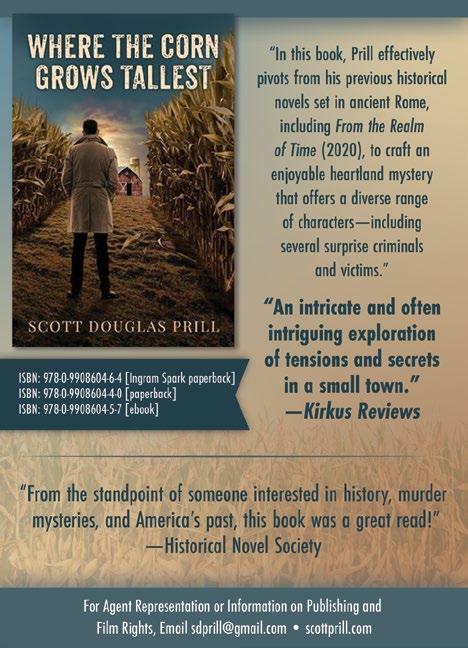
ISBN: 978-1-7361733-3-6 (Paperback)
ISBN: 978-1-7361733-2-9 (Hardcover)

—
and why more women in government could be the solution.
“The broad range of scien1fic grounding that Evans brings to his specula1ons makes for a very compelling reading experience.” — Kirkus Reviews
[
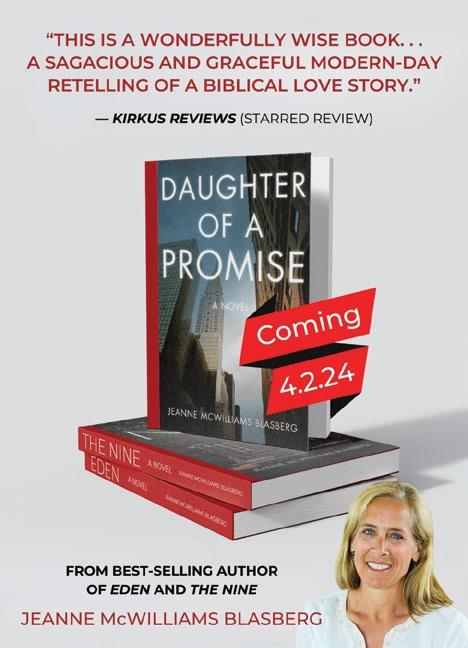
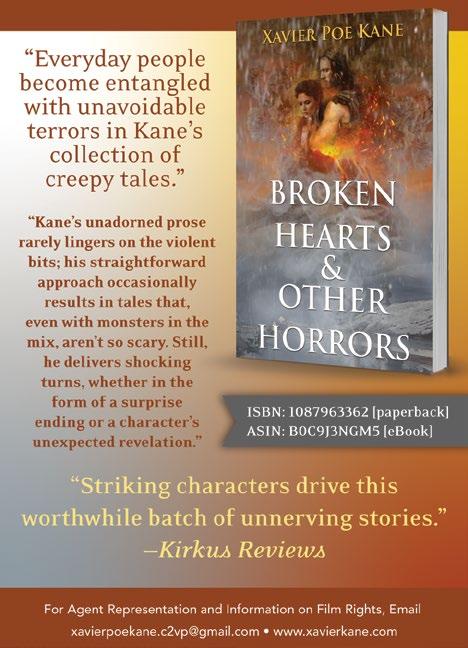


The entertainer was known for his soap opera roles and two memoirs.
Malachy McCourt, who went from an actor known for his roles on soap operas to an author who told the story of his life in Ireland and the U.S. in a pair of memoirs, has died at 92, the New York Times reports.
McCourt was born in Brooklyn and raised in the Irish city of Limerick. He moved back to the U.S. when he was 20. He started his career as an actor, appearing in films including The Molly Maguires , Brewster’s Millions , The January Man , and She’s the One , but he was best known for his roles on the soap operas
Ryan’s Hope and One Life to Live .
McCourt published his first memoir, A Monk Swimming, in 1998, two years after his brother Frank McCourt came out with Angela’s Ashes, his Pulitzer Prize–winning autobiography. Both
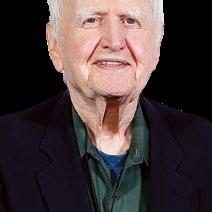
books recounted the authors’ childhoods in Ireland; a critic for Kirkus wrote of A Monk Swimming, “Sporadically amusing, but just as often infuriating. Malachy is the entertainer in the family, but Frank is the writer.”
Malachy McCourt followed up A Monk Swimming in 2000 with another memoir, Singing My Him Song. In 2006, he ran for governor of New York as the Green Party candidate, garnering almost 1% of the vote. On X, formerly known as Twitter, journalist Dan Barry wrote, “The great Malachy McCourt, author, actor, raconteur, and fierce advocate of justice and equality, has died at 92. In his honor, live the hell out of your life. As he would say: ‘Sing it, children!’”—M.S.

For a review of A Monk Swimming, visit Kirkus online.
An account of World War II codebreaking focused more on action than brainwork.
CODENAME NEMO
brought an element of reckless violence. A beloved youngest son, Böhnhardt was in and out of juvenile detention as a teen, and he became a “sadistic… fighting machine.” Kushner moves nimbly among the personal relationships of the three young extremists, who would go on to commit a series of ethnically motivated murders from 2000 to 2011, and he effectively shows how and why German officials often ignored signs of white supremacist terrorism, even mistakenly blaming immigrants for acts of violence.
“Germany’s failure to recognize its first white terrorist spree of the twenty-first century—much less stop it—is a chilling warning for other nations that are failing to fight extremists at home,” writes the author. “Having briefly earned a reputation as a haven for the world’s refugees, Germany is now struggling to protect them from violence by native-born whites.”
A perceptive and engrossing examination of a horrifying chapter in Germany’s recent history.
Codename Nemo: The Hunt for a Nazi U-Boat and the Elusive Enigma Machine
Lachman, Charles | Diversion Books (320 pp.) $29.99 | June 4, 2024 | 9781635768718

An account of World War II codebreaking focused more on action than brainwork.
Lachman, executive producer of Inside Edition and author of The Last Lincolns and Footsteps in the Snow, explains that the typewriterlike enigma machine
generated critical Nazi communication by scrambling input in billions of ways, and German experts never doubted that its code was unbreakable. However, by 1941, the British were deciphering many messages by ordinary codebreaking brilliance, aided by the earliest computers; despite these successes, actual possession of an enigma machine would make their work easier. All U-boats carried one, but crew invariably destroyed it when threatened with capture. No history of the enigma program—including perhaps the best, Stephen Budiansky’s Battle of Wits —neglects the story of how the Allies hit the jackpot on June 4, 1944, but Lachman tells the fascinating story from the beginning. Opening the book with the U-505 launch in August 1941, the author describes its German crew, the often grotesque conditions inside a U-boat, and the nearly three years of campaigning that featured far more tedium and terror than successful attacks. Lachman does the same with significant American ships and sailors, including Daniel V. Gallery, leader of the antisubmarine task force who, unlike other commanders, had publicly vowed to seize a machine. Few readers will object as Lachman recounts the background, and they will perk up just past the halfway point, when he chronicles how sonar detected U-505 . In earlier years, the Allies had captured U-boats, though never fast enough to prevent destruction of its secrets, but Gallery had a trained team ready to go. The author delivers a rousing account of its success. Though Lachman doesn’t claim that the capture of U-505 shortened the war, it was a genuinely heroic act that the author recounts capably. A satisfying World War II history.
The Uptown Local: Joy, Death, and Joan Didion: A Memoir
Leadbeater, Cory | Ecco/ HarperCollins (224 pp.) | $28.00
June 11, 2024 | 9780063371576

An emerging writer makes sense of his past while working for Joan Didion on Manhattan’s tony Upper East Side.
For the last years of Didion’s life (1934-2021), Leadbeater was her personal assistant. The experience thrust him into the world of Manhattan’s wealthy elite during a time when his father was convicted of mortgage and wire fraud, his best friend unexpectedly passed away in his sleep, and his mother was diagnosed with cancer. Under these pressures, Leadbeater sunk into addiction and continued his lifelong battle with suicidal ideation. At the same time, he was writing one novel about a character named Billy Silvers, who possessed the author with a frightening strength, and another about a girl named Ward, whose story of surviving a flash flood was inspired by an article that, later, Leadbeater was unable to locate. Throughout, the author struggles to limit his fiction to the page. “I would begin to see that my own penchant for dishonesty wasn’t my imagination battling for a release at all; instead, it was me trying to leave behind my old life,” he writes. Ultimately, Didion helped him understand that he must accept—rather than deny—all his strange and disparate histories in order to become whole and authentic. “She did not try to reduce life down to a more manageable size in order to understand it....She rejected orthodoxy so as to better see the real,” he writes. At the line level, the text is expansive and poetic, full of vivid imagery and small, well-voiced epiphanies. However, Leadbeater as the protagonist barely changes throughout the book, partly because the plot’s unifying revelation occurs in the final five pages, leaving
little time for readers to see the effect this realization had on his journey. A beautifully written but unevenly paced memoir about family, history, and creative writing.
Lim, Audrea | St. Martin’s (320 pp.)
$30.00 | June 25, 2024 | 9781250275189

A journalistic account of the impact of private land ownership on the environment and on people’s quality of life.
“America is synonymous with private property,” writes Lim, a Brooklyn-based freelance writer. And, she states more boldly, “the commodification of land is driving many of America’s most intransigent problems.” Historically, Native Americans were dispossessed by European settlers and, later, by the federal government, and former enslaved people were promised and then denied land reparations, condemning them to sharecropping servitude. Today, developers purchase land in low-income and working-class neighborhoods and erect luxury buildings, fueling gentrification and its accompanying high rents and shrinking supply of affordable housing. Lim asserts that the public will be served and the environment protected only when land is publicly owned, such that governments are accountable, or placed in community land trusts. She builds her case on evidence from events in the country’s history and stories of grassroots organizations such as the Indian Creek Community Forest in Oregon; the Somali Bantu Community Association (concerned with farmland security) in Lewiston, Maine; the Dudley Street Neighborhood Initiative in Roxbury, Massachusetts; and the Northern Farmers of Color Land Trust in Minnesota. Lim’s reports from her journalistic travels through the U.S. and Canada are woven with stories of growing up in
Calgary, her family history, and her current life in Crown Heights, Brooklyn. The accounts she presents, though, belie her claim “that land is rarely talked about as a social or economic issue today.” And her assumption that many of America’s intransigent problems are attributable to land ownership and to how the country’s opportunities and resources are distributed would have been more credible if tempered by discussion of their entanglement in matters of race, class, and political ideology.
Lim is a single-minded and enthusiastic advocate for the common and public ownership of land.
Lyon, Banning | Open Field (384 pp.) $29.00 | June 4, 2024 | 9780593657133
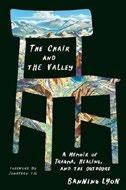
A once-institutionalized psychiatric patient exposes a flawed, corrupt system.
Now in his early 50s, Lyon, a backpacking guide and instructor, was an ordinary kid, torn between divorced parents who lived in different states and didn’t know what to do with him. “My life wasn’t perfect. I still missed California,” he writes. “But settling in Dallas was better than being bounced from house to house like an unwanted package.” His parents’ solution was to move the understandably disaffected kid into a psychiatric facility for a few weeks, only to watch as a few weeks turned into a year. As the author notes, the standard mode of treatment was to force the teenager to sit in a chair day in and day out, the better to ponder the error of his youthful ways. Lyon serves up sharp portraits of his wardens, from the bureaucratic head who placed him in the worst unit in the place to the supposed therapist who imposed one meaningless punishment after another. Placed in a halfway house, he confronted what passed for the real world—and eventually won a legal
judgment for psychiatric malpractice, a short-lived victory that preceded a series of spirit-killing defeats. “I hated being the poster boy for psychiatry gone wrong,” he writes; still, he did much to expose that malfeasance then, just as he does in these well-considered pages. One feels for Lyon as he describes coping with inconceivably terrible loss. Years later, he learned the true, and truly indefensible, reason for his having been confined in the first place. The author, who went on to become an outdoor guide, is also gracious about his difficult life, writing, meaningfully, “today is a very different place than I ever could have imagined.”
A heartfelt memoir and an urgent demand for higher standards of juvenile mental health care.
Markel, Howard | Norton (400 pp.)
$35.00 | June 11, 2024 | 9781324036746

A deeply satisfying new account of two crucial years in Darwin’s life. Science historian Markel, author of The Secret of Life, The Kelloggs, and An Anatomy of Addiction, illuminates a short period beginning in 1858, when the 48-year-old naturalist suddenly realized that he needed to get his act together. An obscure researcher, Alfred Russel Wallace, had mailed Darwin a paper proposing that species evolved, thrived, or vanished according to their success in obtaining limited resources such as food. (For more on Wallace, turn to James T. Costa’s Radical by Nature.) This “struggle for existence,” wildly controversial because divine creation was not involved, had preoccupied Darwin for 20 years. Too squeamish to follow tradition—i.e., dump Wallace’s article and quickly publish his own— Darwin took the advice of friends and
submitted Wallace’s paper, along with one of his own, to a local scientific society. They produced little controversy, but Darwin immediately set to work writing On the Origin of Species , “a book that would change the world.”
In the final 200 pages of Markel’s book, the author delivers an entertaining account of Origin’s initial reception upon publication in 1859. Friends wrote enthusiastic reviews, while opponents wrote nasty ones; all of the criticism appeared anonymously, but the critics’ identities were usually not a secret.
Darwin either agonized or rejoiced, and his recurrent digestive upsets became crippling. Historians tend to dismiss them as hypochondria, but Markel, a physician, concludes that Darwin “most likely suffered from systemic lactose intolerance.” The author concludes with the epic June 1860 Oxford meeting of the British Association for the Advancement of Science. Many historians have argued that pugnacious Darwin defender Thomas Huxley crushed antiDarwinist Samuel Wilberforce.
Examining contemporary accounts, Markel intriguingly wonders if this may be a case of history-by-the-winners because both pro- and anti-Darwinists claimed victory. Darwin’s two iconic years rendered masterfully by a highly knowledgeable chronicler.
Marquis, Christopher PublicAffairs (352 pp.) | $30.00
May 14, 2024 | 9781541703520
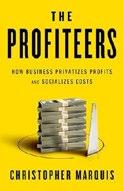
How profits can follow responsible business practices. Business professor, lecturer, and Forbes columnist Marquis mounts a sharp critique of businesses that have hidden the negative social and environmental impacts of the ways they produce and
deliver their products and services. “Behind a smoke screen of rhetoric about individual responsibility and personal choice,” writes the author, “corporations and their leaders ruthlessly pursue their own interests, shifting the blame for the harms they cause onto society at large.” These businesses typically use two strategies to deflect responsibility for environmental pollution, labor exploitation, and systemic discrimination: gaslighting, which presents “a false view of reality with the aim of convincing the ‘victim’ (i.e. us) that they are responsible for a wrong that the gaslighter committed,” and greenwashing, whereby companies publicize an ecologically sound image—a new logo or advertising slogan—“while continuing to operate in the same dirty way they always have.” Marquis points out, for example, the “big lie” told by the Plastics Industry Association about recycling: Most plastics are not recyclable, instead ending up in landfills. In presenting practical ideas for reform, Marquis sees a growing movement from “a linear ‘take, make, waste’ orientation to one where virtuous cycles drive positive change.” Among many companies working to eliminate pollution and reduce their carbon footprints are the shoe manufacturer Allbirds, furniture superstore IKEA, personal care enterprise Dr. Bronner’s, household cleaning supply company Seventh Generation, and clothing manufacturer Patagonia. The establishment of benefit corporations and B-corporate certification has spread internationally as a result of shareholder activism and corporate collaboration. In addition to programs for recycling and reuse, many companies are actively promoting reduced consumption. “Doing well by doing good,” Marquis reveals, “is an easy pill for the public to swallow, and companies know this.” A forceful argument for genuine business accountability.

Marriott, Sue & Ann Kelley | Harper/ HarperCollins (352 pp.) | $29.99
April 30, 2024 | 9780063334557

For more on responsible business practices, visit Kirkus online.
A survey of strategies for self-discovery. Marriott, a group psychotherapist and clinical social worker, and Kelley, a psychologist, co-host the podcast Therapist Uncensored . In this collaboration, they offer thoughtful, well-supported advice for fostering personal growth and nurturing social bonds. Identifying themselves as a white, cis-gendered, middle-aged, same-sex married couple, the authors aim to be inclusive and supportive of all readers. As they point out, people of color or those who are neurodiverse or genderqueer have been shaped by distinct, sometimes traumatic, experiences. “Plumb your various identities,” the authors advise, and think about “the impact of your experiences on the protective and connective strategies you’ve developed, weighing their current usefulness.” Drawing on modern attachment theory and relational neuroscience, Marriott and Kelley look at how unconscious defensive patterns can be transformed into conscious strengths. The Modern Attachment-Regulation Spectrum (MARS), depicted as rainbow-colored images, serves as a colorful illustration of one’s state of mind, with green being a safe zone, gradations toward red indicating emotional activation, and gradations toward blue indicating defensive withdrawal. In an appendix, the authors provide a detailed analysis of the spectrum and its connection to behavior and emotion. The MARS, they write, can prove useful for readers “to recognize where you are and turn your focus toward scooting back towards the green zone rather quickly.” The authors present ways to reflect on behavior, recognize patterns, and work “to pause and try different
strategies,” a process they call rewiring. “A secure state of mind,” the authors assert, “enables you to care about, advocate for and be generous with people close to you and those you’ll never meet. In this way, making the deliberate choice to prioritize secure functioning over falling back into defensive self-preservation is a powerful action that can disrupt, and even reverse” divisiveness and polarization. An encouraging guide to a healthy mindset.
Kirkus Star
Adventures in Volcanoland:
Mather, Tamsin | Hanover Square Press (320 pp.) | $32.99
June 18, 2024 | 9781335080851

A surprising sojourn into an unknown field and a paean to the mysterious sentinels of the planet’s history.
Most people, when they hear a volcano start to rumble, run away as fast as possible. Not Mather, whose instinct is to run toward it with a pack of scientific equipment and an obsessively inquisitive mind. Now a professor of Earth sciences at Oxford, she first became interested in volcanoes during a childhood encounter with Mount Vesuvius. Since then, she has climbed crumbling escarpments, hacked through jungles, and slogged across ice fields to study them. In this fascinating text, the author tracks through the history of volcanology as it unraveled the different types of volcanoes and eruptions. The rocks ejected during an explosion or left behind after a magma slide provided a wealth of information, once scientists worked out how to read them. Careful analysis of fumes also offered important clues. Slowly, the picture of how and why magma broke through a mountain crest was pieced together across decades
An instructive engagement with the world of travel writing.
THE NEW TOURIST
of meticulous study. These days, most of the potentially dangerous volcanoes are monitored for warning signs, but these are cantankerous and unpredictable beasts. Mather notes that they are a constant source of surprises, even for people who have studied them for decades. They have been shaping and reshaping the terrain for millennia and will continue to do so for millennia to come. Mather finds them inspiring and humbling, and her love of the subject— of “the majesty of Etna, the beauty of Villarrica, or the understated intrigue of Masaya”—shines brightly on each page. Readers who are interested in popular science will find that this book is hard to put down, a remarkable journey with an entertaining guide. Mather combines a personal story with an era-spanning scope, turning esoteric information into a colorful, engaging account.
McClanahan, Paige | Scribner (288 pp.) $30.00 | June 18, 2024 | 9781668011775
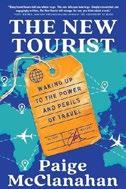
An appeal for more responsible tourism replete with respectful and inquisitive travelers.
An American journalist and travel writer based in France, McClanahan, a regular contributor to the New York Times, believes that contemporary global tourism should turn away from commercialization, which is often insensitive to the harm caused to local communities and the environment. In her estimation, contemporary
international tourism is destructive and self-indulgent. Reform, though, will require a proportional expansion in tourists who value diverse cultures and learn from their tourist experiences. This “new tourist” could counterbalance the many people who visit tourist enclaves solely to consume theatrical versions of local culture. The author chronicles the rise in the 1970s of travel books that appealed to less affluent and more adventurous travelers and the impact in the 2000s of social media on print-based travel writing. She examines the post-1970s commitment to tourism as an integral component of government economic development policies, the emergence of “tourist traps” that cater to fantasy versions of a place, and the inevitable backlash when tourism drives up rent, takes over beaches, damages the local environment, and undermines traditional culture. McClanahan also tells stories of local groups and local governments working to better manage tourism. She illustrates these themes with descriptions of her visits to such places as Angkor Wat, downtown Liverpool, Barcelona, the French Alps, Hawaii, Amsterdam’s red-light district, and Disneyland Paris (formerly Euro Disney). By deftly weaving together her impressions of these places and stories of the people she interviewed, McClanahan creates an engaging and thoughtful assessment of international tourism. She offers few recommendations beyond more community involvement and stronger governmental regulation, however. Rather, her goal is to provide a “framework” for readers to ask pertinent questions about other places.
An instructive engagement with the world of travel writing and a first-class exemplar of its practice.
McIndoe, Peter & Connor Gaydos
St. Martin’s (272 pp.) | $29.00
June 4, 2024 | 9781250288899
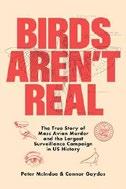
Two young writers satirize the American obsession with conspiracy theories by offering “insights” into a fictional governmental plot.
During the Trump era, the far-right fringe groups, including QAnon—which posited that elite Satan-worshipping pedophile democrats controlled politics and the media—developed a robust following, to the chagrin of many, including then teenage McIndoe. He responded by disseminating a joke conspiracy theory claiming that, in the 1970s, the U.S. government “killed off the entire bird population and replaced them with robotic bird replicas that are used for mass surveillance.” In this book, McIndoe and Gaydos move to the next parodic extreme by offering an in-depth history of this fictional movement— which they claim has been “brutally suppressed” by the government—and other absurdist gems, including a field guide to major bird drones such as pigeons, seagulls, bluebirds, and vultures and a “real history of America” that claims the apex of the American Revolution was in 1812, when “Washington led his colonial army across the Delaware ocean.” For fellow “Bird Truthers” seeking to spread the word, the authors deliver sage advice on everything from how to hold rallies— complete with instructions on ways to make the best use of speeches, moments of silence, and bagpipes—to how to hypnotize every member of the armed forces for effective government overthrow and how to create shelters and societies by digging interconnected backyard holes. Illustrated throughout with black-and-white sketch-style
drawings, the text presents its own alternative-fact universe that ridicules the bizarre distortions that have become an embedded part of American sociopolitical reality. “This book,” write the authors, “is intended for readers with an IQ over 250....If your IQ is under 250, please close this book immediately and read something more suited to your sensibilities, such as Goodnight Moon or Frog and Toad.” Quirky and humorously provocative.
White Bonus: Five Families and the Cash Value of Racism in America
McMillan, Tracie | Henry Holt (464 pp.) $32.99 | April 23, 2024 | 9781250619426
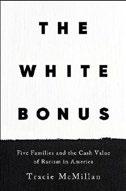
The cost of being Black in America. Award-winning journalist McMillan, author of The American Way of Eating, combines investigative reporting and memoir in a penetrating look at the material advantages of racial privilege. “For a very long time,” she writes, “I thought race and racism ‘happened’ only to people who were not white.” Using her own family as one example, and profiling four others, she investigates the impact of whiteness on individuals of different generations, from different parts of the country, who have one thing in common besides whiteness: “Each subject has spent most, if not all, of their life in America’s shrinking middle class.” In an appendix, she tallies each person’s monetary “bonus,” which includes expenses such as a family’s coverage of ACT prep courses, car insurance, subsidized rent, and direct inheritances. Money alone, though, does not account for whites’ “unearned power.”
One woman, for example, was offered a nursing scholarship by a counselor who told her Black co-worker not to bother. Racial prejudice, McMillan notes, often takes the form of implicit bias, “assumptions people make about others without much conscious thought”—in this case, the assumption that a Black woman lacked the ambition or ability to “bother” about furthering her education. A teenager arrested for dealing LSD was helped by having both of his parents in court, showing solidarity. He avoided a jail sentence, McMillan asserts, because he was white: “the constant association in news accounts of Blackness with dysfunction and hardship could lead a judge in Waterbury to see a Black family and assume they faced poverty and hardship and could not manage their child.” Among many advantages that McMillan examines are fair labor laws that exclude agricultural workers and service workers; housing covenants prohibiting sales to Black families; and lack of access to well-funded public schools. A well-researched, disquieting examination of inequality.
Vows: The Modern Genius of an Ancient Rite
Mendelson, Cheryl | Simon & Schuster (240 pp.) | $28.99 May 7, 2024 | 9781668021569
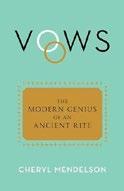
The author of Home Comforts traces the history of marriage vows in Western society and argues for their continued relevance. Making frequent references to her own two marriages—one unhappy and short-lived, the other happy and
A well-researched, disquieting examination of inequality.
THE WHITE BONUS
long-lasting—Mendelson analyzes the evolution of traditional marriage vows from their beginnings as a variant on the feudal vows held between lord and vassal in medieval times. The author clearly favors the traditional Anglican vows, crafted by “prose master” Archbishop Thomas Cranmer in 1549 and still in wide use today, largely unchanged except for the excision of the vow by women to “obey” their husbands. “The very act of taking marriage vows in a ceremony has a powerful psychological effect,” writes Mendelson, and “the traditional vows are short and dramatic,” as opposed to vows crafted by the couple, which she believes evoke more chuckles than deep-felt tears. The author dives deeply into each element of her subject, from the commitment to staying together “in sickness and in health,” which is “the oldest, the clearest, and, one supposes, the most likely to be fulfilled,” to the vow to “forsake all others,” a more recent and less universal vow. As she segues from historical analysis to broader philosophical discussions of contemporary marriage, Mendelson also shifts to optimistic blanket statements—e.g., “Western-style monogamy, with its equal genders and social freedoms, is an institution honed into workability and high satisfaction after a few millennia of trial and error and insight gathering”; “almost everyone wants unending love, which means that they want marriage, even if they don’t understand that they do”; the number of marriages that end in divorce says very little about the staying power of love.” Questions about the shortcomings of matrimony find no place in this chatty survey.
An essentially conservative book that will fortify the opinions of fans of marriage.

Kirkus
Metzl, Jamie | Timber (434 pp.)
$34.00 | June 11, 2024 | 9781643263007
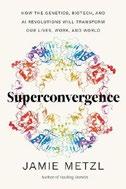
A clear examination of a “transitional moment in the story of life on Earth, a new Cambrian explosion with a new biological driver—us.”
Managing one technological revolution would be hard enough, but our society is now facing three at once, writes Metzl, a wellknown futurist and the author of Hacking Darwin. Genome sequencing and editing, biotechnology, and artificial intelligence have all moved out of the theoretical stage and into practical reality, and navigating the mechanics and possibilities of these new technologies is a massive challenge. Metzl capably describes recent developments in genetics and biotech and looks at how AI is providing an analytical engine of unprecedented power. It is easy to get swept away by the promise of these technologies in everything from medicine to industrial productivity, but there are also great risks. Several agreements and protocols aim to regulate the emerging tech, but they are limited in scope. The author proposes a new international agency operating through the UN to provide a framework for coordinated regulation and information exchange around the world. Its role would extend to conducting exercises to test the world’s ability to respond to crises. Metzl understands that this would be difficult to create, especially when one of the major players, China, has announced that domination of these areas is a national goal—and is already charging ahead with little apparent regard for the wider consequences. Nevertheless, Metzl believes that the rest of the world should take a cooperative
approach. As he notes, we must “speed up our pace of social organization to better match the speed of our technological innovation....All of this is a task greater than each of us but not greater than all of us.”
An important book in which the author sets out a path for the future based on his experience and expertise.
Miles, Tiya | Penguin Press (336 pp.) $30.00 | June 18, 2024 | 9780593491164

A keen investigation of Harriet Tubman through a womanist lens.
In this first installment of the publisher’s Significations series, National Book Award winner Miles chronicles and contextualizes Tubman’s work to lead enslaved people to freedom in the North, spotlighting her subject’s spiritual conviction and naturalistic know-how. The author mines existing biographies and places familiar Tubman anecdotes alongside the spiritual narratives of lesser-known Black women contemporaries. Miles seeks to rescue Tubman from the solitary, superhuman portrayals, laced with mysticism and oddity, that have defined her legacy and to show how she belonged to a larger tradition of Black women whose “fully felt, richly interpreted, environmentally informed faith tradition” led them to radical notions of freedom and resistance in the latter half of the 19th century. The author shades Tubman’s early life with rich details about the distinct shape of slavery and the labor market in Maryland. As she turns to Tubman’s more iconic moments as a conductor on the Underground Railroad, Miles admits to the elusiveness of her subject. It’s no simple task to humanize such an iconic figure, with her multitude of accomplishments in the material realm, her steadfast presumption of God’s partnership in her works, and her own conscious


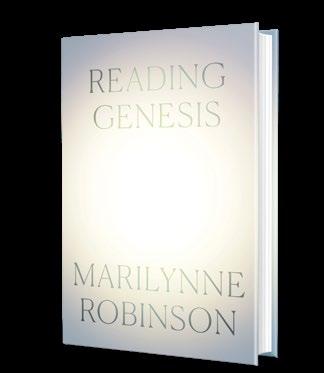
In this highly learned yet accessible book, Robinson offers believers fresh insight into a well-studied text.
An important dialogue at a fraught time, emphasizing mutual candor, curiosity, and respect.
Thought-provoking, self-effacing, and at times blunt—a life story not yet complete.
4

A brave and challenging message for 21st-century Muslims and non-Muslims alike.
Through the lens of her personal and professional experiences, an American journalist describes the rapidly growing social movement abandoning fundamental evangelicalism.
For more book lists, visit Kirkus online.




construction of her narrative. The author’s painstaking work proves the necessity of her task to reconfigure the reductive historical canon surrounding Tubman, offering accessible inspiration to future actors and leaders of liberation and resistance in a world still marked by racist and sexist oppression. In a fitting conclusion, Miles writes, “I have tried to hold Harriet Tubman up—tenderly and honestly—in her genius, courage, vulnerability, faith, and flaws. And here at the end, I release her story back to the worldwide well of wise women, knowing she will not tolerate our scrutiny for long.” A notable, discerning contribution to the understanding of an American legend.
Mithen, Steven | Basic Books (544 pp.)
$36.00 | June 18, 2024 | 9781541605381
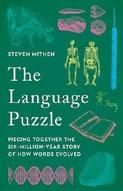
Readers of this book likely know at least 50,000 words and speak around 16,000 every day. Mithen provides the story of how they came to do it.
Language, like history or biology, is a massive field of study, and a one-volume overview is no mean feat. Mithen, a professor of early prehistory and author of The Singing Neanderthal, combines lucid prose with a lifetime of experience in this compendious exploration of linguistics, anthropology, neuroscience, geography, genetics, and philosophy. The author explains that modern languages (there are around 7,000) arrange words into “meaningful utterances using rules to modify and place them into a particular order.” Without languages, we would still be living as Stone Age hunter-gatherers. “Unlike toolmaking, walking on two legs, and complex patterns of social relations,” writes Mithen, “language has remained stubbornly aloof from the primate world, becoming the last bastion of human uniqueness.” The term
miraculous, a shopworn word in science writing, remains a universally accepted description of how infants learn one or even several languages perfectly in a few years. Adults find it much harder. Raised as human children, even the most brilliant chimpanzee never attains the proficiency of a 2-year-old human. In 15 lengthy chapters, the author explores such a wide range of topics that the book serves well as a popular, definitely not dumbed-down account of human evolution. Some chapters—e.g., on primate communication, or the vocal tract—contain more information than many readers may want to know. Others (fire, toolmaking) are informative, despite covering areas well served by entire books. Dramatic advances in neuroscience and genetics haven’t turned up a brain area or genes specific for language, but there is no doubt that the words we use influence how we perceive the world.
An expert education into “the most fundamental aspect of the modern mind.”
Murgia, Madhumita | Henry Holt (320 pp.) $29.99 | June 18, 2024 | 9781250867391
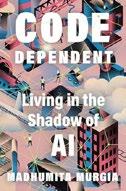
A study of how artificial intelligence “is altering the very experience of being human.”
Murgia, a British Indian tech journalist with the Financial Times, has been investigating AI for a decade (previously for Wired magazine), and her exploration takes readers to Nairobi, Amsterdam, the rural Indian village of Chinchpada, and the city of Salta, in Argentina, among other destinations. Defining AI as “a complex statistical software applied to finding patterns in large sets of real-world data,” of which generative AI tools such as ChatGPT are a “subset,” the author looks at how it affects the
people who train it, use it, and are victimized by it. Among the first category are low-wage workers who label and describe images that may train, for instance, self-driving cars; among the second are health care providers in underserved areas who use AI-powered apps to assist with diagnoses. AI’s victims are many: women whose deepfaked images proliferate on pornographic websites; Uber Eats drivers whose pay is shorted by the algorithm; young people stigmatized by statistical software as likely to commit crime or to become pregnant; Uyghurs who live in China’s surveillance state; and content moderators forced to engage with hateful, violent material for hours on end. With chapter titles that illuminate AI’s effects on the self—e.g., Your Livelihood, Your Body, Your Freedom, Your Safety Net—the survey is peopled with vividly drawn subjects who help readers understand AI and its impact on a deeply personal level. Murgia has consciously reached beyond Silicon Valley to focus on the “global precariat,” a strategy that is valuable in its own humanizing right and also drives home how thoroughly implicated the developed world is in the continuing harms endured by the developing one. Throughout, the author writes with clarity and compassion in equal measure. A fascinating, sobering, wide-ranging examination.
Newitz, Annalee | Norton (272 pp.) $27.99 | June 4, 2024 | 9780393881516
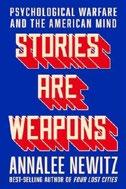
A long-view denunciation of today’s avalanche of disinformation, fake news, and propaganda.
Newitz, journalist, host of the Our Opinions Are Correct podcast, and author of Four Lost Cities, among works of science fiction, argues that
“weaponized storytelling” has been an American tradition throughout its history. During the Revolution, Benjamin Franklin published a fake newspaper article describing a fictional British officer’s delight at boxes of scalps from colonial settlers, women, and children, delivered by Native American allies. Reprinted widely, it produced universal outrage. The author moves on to examine what some scholars proclaim was America’s “foundational moment”—not the Revolution but the Indian Wars, when white settlers replaced Indigenous communities with their own. Readers long familiar with the deplorable treatment of Native Americans during the 19th century may be inclined to skim these sections, but matters will not improve as Newitz recounts other outrages. They join the steady stream of debunkers of Charles Murray’s The Bell Curve (1994), the bible of scientific racism—though they warn that the audience for deeply satisfying fables is largely impervious to the facts. The author makes a convincing case that the 21st-century epidemic of intolerance, invective, and authoritarian movements is as American as apple pie. In the obligatory how-to-fix-it conclusion, Newitz emphasizes tolerance, agreeing to disagree, and promoting evidence over emotion. They do not ignore traditional pleas to reform public education and the internet, but admit that they haven’t caught on. Searching for alternatives, the author promotes spreading democratic ideals through storytelling in “applied science fiction” or a transformed, “rejuvenated” public library. “When we immerse ourselves in the silence of the library,” writes Newitz, “we learn the most fundamental defense against psyops. Our minds belong to us.” A cogent history and analysis of today’s toxic national discourse, joining a host of recent titles in a burgeoning genre.
O’Neill, Tracy | HarperOne (288 pp.)
$28.99 | June 25, 2024 | 9780063309869
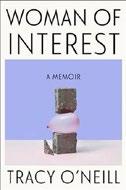
An account of the author’s search for her biological mother in 2020.
“I was thirty-three, adopted, Korean born, New England bred. Profession: writer. And because no one made a living writing anymore, profession: professor….I had not evaded taxes, but I had evaded children.” O’Neill clearly lays out the situation at the beginning, noting that her desire to find the woman who birthed her and gave her up is twofold. First, she writes, “my life depended on this missing person. I mean she had been one of my mothers.” Second, she sought “confirmation that I was a woman still able to write a new narrative into her life.” The two-time novelist and Vassar professor filed a missing person’s report for her biological mother. The ensuing conversations with a private investigator are entertaining. At the end of the year, O’Neill traveled alone to Korea for a few weeks to meet her mother. “I did not know what I was really doing,” she writes, “but perhaps a person of interest never did.” The narrative sometimes gets mired in the author’s self-focus, and the latter half describes meeting her mother in person. “She was there,” writes the author. “Right there. And the impression she gave was of an idling Xerox machine. To reach her seemed impossible.” The author’s details and nuanced layers of longing feel genuine, vulnerable, and vivid. Even after the end of the search, her investigation continued: “As it turns out, autobiography can’t be abandoned as easily as a bad alibi, or a
An expert exploration of the title question.
WHY WAR?
child. At a certain point, the question is not, What will you do next? It is, once more, How did I do what I did?” This is not a story of redemption, but it is heartbreakingly human.
A propulsive, occasionally meandering memoir.
Overy, Richard | Norton (304 pp.)
$27.99 | June 4, 2024 | 9781324021742

An expert exploration of the title question.
Veteran military historian Overy— author of Blood and Ruins, RAF, A History of War in 100 Battles, and many other acclaimed books of military history, begins in 1932 when Einstein put the title question to Freud, who, the author writes, maintained that violence was “characteristic of the animal kingdom” and “could see no effective way of inhibiting the urge to fight and destroy.” Freudian explanations persisted until the 1970s before vanishing in favor of science and history, which had never been absent but never conclusive. Evolutionary biologists maintain that “warfare was one way…for humans to adapt to behavior that maximized survival.” They cannot resist explaining human behavior as homologous with that of animals, but this remains tenuous. Despite a similar lack of hard evidence, historians maintain that lethal violence increased as primitive hominins settled into communities, tribes, chiefdoms, and states. That prehistoric societies were pacific was widely endorsed until the 1960s, when four areas of evidence tipped the balance: skeletal trauma from innumerable massacre sites with remains of whole communities, cave drawings and iconography, fortified sites, and a surfeit of weapons. Readers expecting Overy’s usual vivid battlefield fireworks will be disappointed. This is a
work of ideas. Overy asks a big question and queries other thinkers, who deliver confidently, perhaps overconfidently, expressed answers. Other scholars disagree, but Overy sees no end to war. The USSR’s collapse was a false dawn as an assertive China challenges American hegemony. Wars to obtain loot (i.e., “resources”) retain their appeal with lithium and rare earths in the wings to replace oil’s long-delayed decline. Perhaps most disheartening are hubristic wars launched by aggressive autocrats (Alexander, Napoleon, Hitler) who wreak massive but fleeting destruction. Readers may pray that “fleeting” applies to Vladimir Putin. Astute if uncomfortable insights.
Kirkus Star
Parker, James | Norton (288 pp.)
$23.99 | June 18, 2024 | 9781324091639
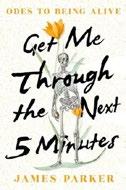
A collection of short pieces encompassing the whimsical, the meditative, and the tragicomic. Is the world a big place full of small things, or a small place stuffed with big things? Parker, a staff writer for the Atlantic and author of a biography of Henry Rollins, would probably say it is both, judging from this compilation of his essays and poems. His subjects veer from the philosophical to the very strange, from quantum physics to “the psychedelic locusts that run the universe.” The author explains why Jason Bourne (“poor human suffering the essential questions”) is better than James Bond and discusses which movie star has the best running style—he settles on Tom Cruise, who runs “with the face of an angry Christ.” Parker is not shy about getting personal. He might be the only person to have written a poem about constipation, which includes a cat. He
A superb addition to the history of the late colonial era and Revolution.
admits to a misspent youth, with too many party drugs and too much literature. However, both gave him odd insights into the way the world works. Is it possible that the hum of a refrigerator, heard in the insomniac hours, is really the hidden song of the eternal? What do hypervigilant squirrels know that we don’t? Parker’s writing is carefully polished, with the humor often hiding dark undertones, which in turn obscure deeper absurdities. (Consider a mixture of Cormac McCarthy’s shade and Steve Martin’s offbeat comedic spirit.) It all makes for enjoyable reading that can be consumed at once or piecemeal; many of Parker’s essays deserve serious contemplation. Among numerous other topics, he pens odes to the “Farting Horse,” “Crying Babies,” “Bad Reviews,” “My Dog’s Balls,” “Being Dead,” and “Wanting to Be a Great Poet.”
Parker is articulate and provocative, seeing the poetry in the ordinary and the wonderful in the world.
Heart of American Darkness: Bewilderment and Horror on the Early Frontier
Parkinson, Robert G. | Norton (448 pp.) $35.00 | May 28, 2024 | 9781324091776
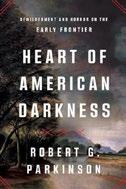
A scarifying, blood-soaked portrait of savagery on the early frontier— much of it committed by European settlers. Parkinson, a historian of the American Revolution and the author
of Thirteen Clocks , is a careful reader of Joseph Conrad’s Heart of Darkness , which, as the title suggests, he transposes to the mid-Appalachian frontier. There, Conrad’s vision of heads impaled on stakes and relentless massacres would slot in neatly as a study in terrors committed out of sheer greed. The Kurtz of the piece is a settler named Thomas Cresap, who lured a family of Mingo men, women, and children to a meadow alongside the upper reaches of the Potomac River and murdered them. Doing so made Cresap a sort of colonial folk hero, but it entangled him and his family with the families of his victims for decades and led to his being called out explicitly in a famed piece of Indigenous oratory known as “Logan’s Lament.” If Cresap, who “would later be nicknamed the Maryland Monster,” stands at the dark center of the Appalachian colonial universe, Parkinson’s story extends to include dozens of people drawn into the fight, from Thomas Jefferson and George Washington to British generals Thomas Gage and Edward Braddock. The author also uncovers little-known moments in colonial history: a proto-civil war, for instance, between residents of Delaware and Pennsylvania, and a horrific episode in which Indigenous allies of the French captured one loyal to the British and “killed, boiled, and ate him.”
Parkinson’s players, Native and European alike, are “bewildered,” the ground constantly shifting under their feet, alliances forming and crumbling, friends indistinguishable from foes. In the fog, other slaughters followed—and in them, intriguingly, Parkinson locates the first glimmer of the colonists’ decision to shake off British rule by force.
A superb addition to the history of the late colonial era and Revolution.
Polchin, James | Counterpoint (368 pp.) $28.00 | June 11, 2024 | 9781640096004
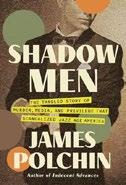
The still-unsolved mysteries surrounding a Jazz Age murder offer a fascinating window into class, privilege, media influence, and criminal justice.
In 1922, the body of Clarence Peters, a 19-year-old “penniless sailor” dishonorably discharged from the Navy for stealing, was discovered by the side of a suburban road with a bullet through his chest. Days later, Walter Ward, the scion of a successful bakery empire, confessed to the shooting. He claimed self-defense, arguing that Peters was one of a gang of blackmailers, “shadow men,” who were pursuing him. However, his lurid confession—“as one newspaper noted, the entire tale of blackmail and murder read ‘like a thriller in a dime store novel’”—left out the motive for the alleged blackmail operation. The murder became a local sensation and then a headline story in the national press. Polchin’s engaging tale unfolds throughout New York City, in Gatsby-worthy mansions, impoverished tenements, racetracks, underworld nightspots, and pool halls. Peters hung around Bryant Park, where sailors and soldiers met up with wealthy men willing to pay for sexual favors. Had Ward been entangled in a “muzzle” scheme, leading to blackmail attempts? “Those who have explored the case have usually concluded that queer sexual blackmail was at the heart of the murder,” writes Polchin, and he seems to agree with those conclusions. His previous book, Indecent Advances, concerned the cold-blooded killings of gay men in 20th-century America. If the author doesn’t definitively prove that sexual relations between Peters and Ward drove the latter to murder, neither did the courts. Regardless, Polchin’s investigation yields a
compelling social history that makes clear the power of the press, wealth, political clout, and influence in determining legal outcomes and obfuscating the heart of scandalous affairs. A sensational crime provokes thought about class privilege and injustice in the American legal system.
Prasad, Aarathi | Morrow/ HarperCollins (304 pp.) | $32.50 April 30, 2024 | 9780063160255
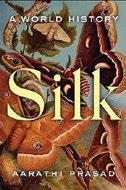
The past and future of a coveted fabric. Geneticist Prasad, author of In the Bonesetter’s Waiting Room, delivers a vibrant cultural and scientific history of an amazing natural fiber: silk. From a diet of mulberry leaves, the caterpillars that Linnaeus called Bombyx mori extrude threads that form a cocoon, protecting them as they transform into moths. The extraordinary properties of this thread became the basis of cloth-making by Neolithic Chinese farmers, who bred and harvested the silkworms and also used the eggs, larvae, pupae, and feces in traditional medicines, dyes, fertilizers, and flavoring. However, silk-making did not originate only in China. Archaeological expeditions to India have found evidence of silk in artifacts made between 2450 and 2000 B.C.E.—not from Bombyx mori, but from other distinct types of moths across the subcontinent. Besides tracing the earliest evidence of silk production, Prasad creates richly detailed portraits of the many 17th-, 18th-, and 19th-century naturalists who devoted themselves to investigating the mysterious process of metamorphosis, the anatomy of silkworms, and the properties of silk threads, making intrepid journeys in search of caterpillars. Although prized for the shimmering luster that made it a hugely profitable commodity in international trade, silk—especially spider
silk—is also extremely strong, making it useful for suturing and dressing wounds and for military use, including creating crosshairs, parachutes, and bullet-proof vests. The forcible silking of spiders gave rise to various contraptions whereby spiders would be immobilized and stimulated to produce extrusions 52 times finer and “nearly three times stronger, more elastic, and more durable than the moth’s.” Prasad reports much scientific interest in producing synthetic spider silk proteins that could offer a “biodegradable antidote to plastic”; thus far, it has been a daunting challenge. The book is generously illustrated with scientific drawings and photos.
A colorful, wholly absorbing narrative tapestry.
Psaki, Jen | Scribner (256 pp.) | $30.00 May 7, 2024 | 9781668019856

A former White House press secretary mines her career to outline a set of best practices for communication.
As Joe Biden’s press secretary, Psaki began her term on Inauguration Day 2021 waiting for a bus at the National Zoo. Although a comical image, the author explains that this humorous start reflects a far more serious situation. For the first time ever, the White House would hold a briefing on Inauguration Day in an attempt to reestablish a positive relationship with the press corps after four years of animosity and dysfunction, as well as a violent insurrection just two weeks prior. Although the press ruled Psaki’s public debut a success, she attributes her ability to navigate such a tense situation to her willingness to learn from her mistakes. Throughout the book, Psaki mines her most sensitive moments for lessons on communication to impart to her readers. Whether learning how to
A personal look at the toxic underbelly of a successful corporate career.
AMBITION MONSTER
criticize former Secretary of State John Kerry, accidentally copying the entire Iowa press corps “on an email about a political opponent,” weathering the Russian government’s personal bullying tactics, or carving out time to attend her daughter’s kindergarten open house on a major news day, Psaki sees all of her experiences as opportunities to learn and grow. “Becoming a strong communicator,” she writes, “means being open to screwing up, and improving after making mistakes; it requires listening to feedback both good and bad; and it requires a lot of practice.” The narrative shines brightest when Psaki approaches her personal and professional past with circumspection, infusing her words with humor and vulnerability. Her advice to readers, however, feels like a profound tonal shift that not only jolts readers out of the interesting story, but also interrupts the otherwise fluid narrative flow. A combination of memoir and self-help book that should have just been a memoir.
Quiñones, John & María Elena Salinas Hyperion Avenue (240 pp.) | $29.99 May 7, 2024 | 9781368107013

Two ABC News journalists report from a small town stricken by mass murder throughout its long aftermath. “What happens when we leave?” write veteran reporters Quiñones and Salinas. “That’s a
real part of the story, and we’re missing it simply by not being there.” Uvalde, Texas, is the site of a horrific school shooting on May 24, 2022. “The fact that the shooter was, in so many ways, one of them, a member of the community, a kid from town, a product of Robb Elementary, shocked many,” write the authors. Yet the facts remain: that the shooter was alienated from everyone, the product of a fatherless home with a mother with “a history of drug abuse”—in short, a walking warning sign. That nothing was done doomed 19 children and two adults. However, there were other warning signs that the investigative team turned up. For example, the chief of school police had been demoted from an earlier position, his former boss testifying that if anyone had ever called him, he would have warned the school system against hiring him. The authors’ comment is rather bland here: “Records show that the Uvalde Consolidated Independent School District (UCISD) might not have fully reviewed Arredondo’s records prior to hiring him.” Arredondo, who accrued authority and decision-making power to himself, seemed not to realize that he was in charge on the ground—nor, it seems, was anyone else. The better parts of the text are the sensitive, sometimes heartbreaking inquiries into the effects of the deaths of the children on families and the community as a whole. If there’s a little too much self-regard by the intrepid journalists, the book will be of interest to counselors and educators, among other readers.
Vivid testimony on how violence both tears a community apart and pulls it together.
Romolini, Jennifer | Atria (304 pp.) $28.99 | June 4, 2024 | 9781668056585
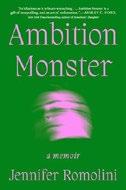
A personal look at the toxic underbelly of a successful corporate career.
Romolini is the host of the Everything Is Fine podcast and author of Weird in a World That’s Not: A Career Guide for Misfits, F*ckups, and Failures. In this debut memoir, she guides readers through the dark alleyways of corporate life, confronting the problems of viewing self-worth through the lens of a career. Born to teenage parents in 1973, the author experienced a difficult childhood; in adulthood, insecurity— both emotional and financial—drove an ambition that led to toxicity in various areas of her life. “Inside me,” she writes, “is a hungry, terrified, security-craving goblin in the presence of whom I feel powerless; an ambitious monster who wants it all....I’m hard-charging toward a life I think I want, in a race to make something of myself, afraid that if I slow down even for a second, I might never be able to start up again.” Looking back, Romolini examines her relationship to work as something of an addiction to external validation. “I believed a career was the only thing I could count on, the thing that would save me from the unreliable parts of life, what would save me from myself,” she writes. This isn’t a book for readers seeking to critically analyze the impact of toxic hustle culture and the changing-work narrative that continues to be redefined. It’s an intimate story for those who wish to learn more about Romolini’s life and feel a sense of comradery with a fellow burnt-out professional forced to pull back for their health. “It took me years,” she writes, “to discover there’s no dream job to chase, no have-it-all fairy tale, no happy ending in which to escape.” A clear picture of a life yearning for a specific sense of accomplishment forever out of reach.
Scales, Helen | Atlantic Monthly (352 pp.)
$28.00 | July 16, 2024 | 9780802162991
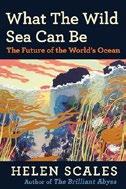
A passionate look at how saving the seas is an essential part of saving ourselves. Scales is a highly respected marine biologist, and her books, including The Brilliant Abyss and Spirals in Time, are authoritative and entertaining. In her latest, the author turns her attention to the many problems facing the planet’s oceans, from warming water temperatures to resource exploitation to pollution. Oceans have always been a dynamic system, but now, writes Scales, change is happening faster than marine animals and plant life can adapt, putting key species in danger across the world. Underlining the link between the ocean environment and human life, she examines unusual subjects such as kelp forests, which have a critical role in carbon absorption and are now under significant pressure. Increases in temperatures are affecting plankton growth, which will echo through the food chain. Limits on fish catches, and even outright bans, have proven to be effective in rebuilding stocks. Reintroducing animals such as sea otters in areas where they have disappeared has been successful, and the approach has had the added effect of regenerating kelp forests. There are also promising experiments in which corals have been cross-pollinated to create more heat-resistant types, which could have widespread positive effects for reefs worldwide. The collection of floating plastic garbage is underway, but the cleanup is a massive undertaking. Scales is pleased to see these measures, but she sees them as treating symptoms while the fundamental causes remain. She notes that she is half-pessimistic and half-optimistic about the future. “Living together on this blue planet, we are all ocean people,” she writes.
“We all depend on healthy seas for the air we breathe, for the falling rain, for the livable world we inhabit.”
The author’s writing is lucid and compelling, featuring a nice mix of personal experience and convincing scientific data.
Scheer, Paul | HarperOne (256 pp.)
$29.99 | May 21, 2024 | 9780063293717

The comedian and actor wasn’t kidding around when he titled his memoir.
Scheer, best known for his work on The League, Black Monday, and Veep, begins with some harrowing tales of abuse from his stepfather that he balances by recognizing how they helped make him the successful father, husband, and entertainer he is today. “All the chaos and abuse were so normalized that only in the retelling do I realize just how abnormal they were,” he writes, adding that there were moments when he felt victorious, “like the time I outran a pitchfork he threw at my back.” It’s these triumphs, cut with his self-deprecating humor, that makes Scheer’s memoir so charming and uplifting, despite the often difficult subject matter of his childhood on Long Island. Given his storytelling experience as an actor and a podcaster on How Did This Get Made? —which he co-hosts with his wife, June Diane Raphael, and fellow League actor Jason Mantzoukas—the author manages to make it all entertaining. Even his story about learning that he was lactose intolerant after a serious health scare at Disney World becomes hilarious in retrospect. Scheer also writes about his love of improv, especially with the Upright Citizens Brigade; the auditioning process; and his enjoyment of movies and working at Blockbuster Video. However, the author treats his higher-profile jobs,
like his regular gig on VH1’s Best Week Ever, as asides to his life with his wife and family. It’s part of the serious point Scheer wants to make, despite the humor. He chronicles his journey through abuse and into the life he dreamed of to show how he did it: through therapy, self-acceptance, and prioritizing his family. An endearing underdog story that will have readers cheering for the author from a troubled beginning to a sweet, happy end.
Schjeldahl, Peter | Abrams (304 pp.)
$30.00 | May 14, 2024 | 9781419773242

Notes on dying from a man who did an excellent job of living.
Schjeldahl (1942-2022) was best known as an art critic, a role he held at the New Yorker right up until his death at the age of 80. He made the East Village his home for most of his life, but his roots were in the Midwest—a fact that perhaps explains why he was able to make art accessible without dumbing it down or pandering. The title essay was published after he was diagnosed with incurable lung cancer. The author writes about his life in a discursive style that he has, as an elderly man facing death, surely earned, but these vignettes hang together and offer a portrait of a life spent in search of beauty in an era largely defined by cynicism. Always a keen observer, Schjeldahl manages the neat trick of seeming to place himself outside the frame even when he serves as his own subject. For example, he recounts winning a Guggenheim grant to pen a memoir that never happened because he used that money to buy a tractor—rather than time to write. Relating this story, he quotes Susan Sontag, whom he recounts meeting in another anecdote that seems
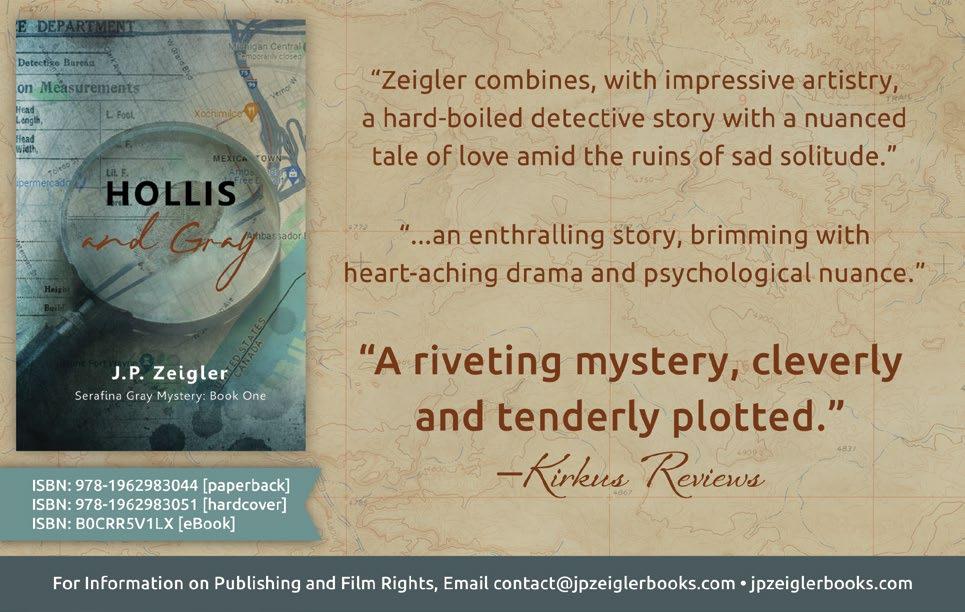

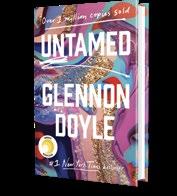
Warner Bros. TV is adapting Glennon Doyle’s bestselling 2020 memoir.
Glennon Doyle’s Untamed is headed to the small screen, with Sarah Paulson attached to star in the
Doyle shared news of the Untamed adaptation on Instagram, shouting out Tabitha, a cheetah she planned series, according to the Hollywood Reporter.
Doyle’s memoir and self-help book, published in 2020 by Dial, tells the story of her relationship with soccer star Abby Wambach, whom she met when Doyle was married to then-husband Craig Melton. A critic wrote of the book, which became a No. 1 New York Times bestseller, “Doyle offers another lucid, inspiring chronicle of female empowerment and the rewards of self-awareness and renewal.”
It is the third book by Doyle, following her bestsellers Carry On, Warrior and Love Warrior.
Paulson, known for her roles in series including The People v. O. J. Simpson: American Crime Story and Ratched and films such as 12 Years a Slave and Bird Box, will star in the series, which is being developed by Warner Bros. TV. The series will be written by Krista Vernoff, whose previous credits include Station 19 and Grey’s Anatomy

writes about in her memoir. “You have all been so patient. Now, Tabitha’s ready to run. UNTAMED the TV show is coming! SARAH PAULSON IS ME. I feel funnier, classier, and better dressed already. Ok, y’all, who should play: Abby? Sister? Craig?”—M.S

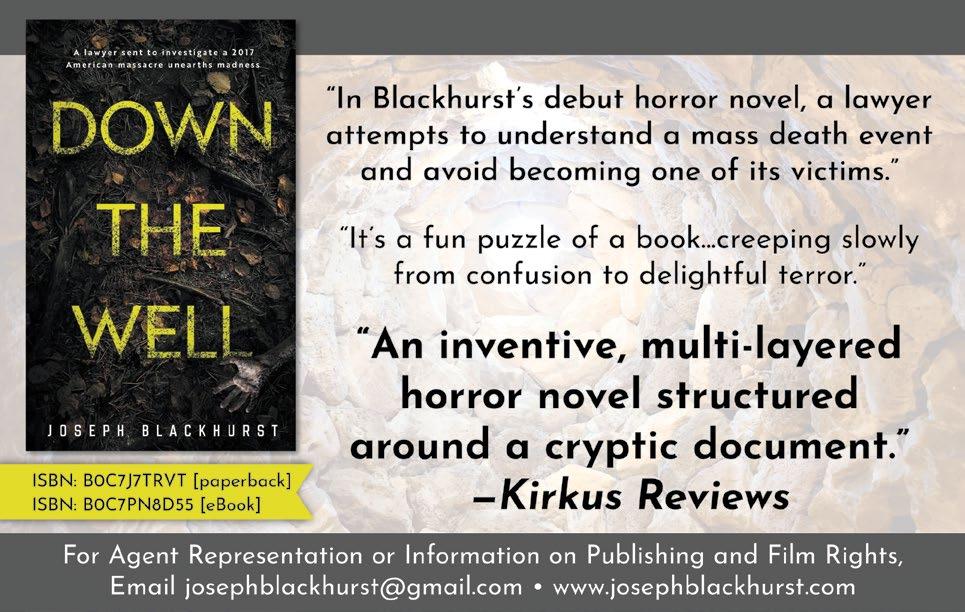
more self-effacing than it is. This author knows his place in cultural history, and he wants us to remember it; he just doesn’t want to brag about it. The rest of this volume includes Schjeldahl’s final pieces for the New Yorker, many written during the global pandemic, a time when the author was uniquely equipped to talk about how we might think about art in the face of death. In the foreword, Steve Martin notes, “It’s easy to think you can write like Peter, intrepidly flinging words around, but it’s dangerous.”
A gorgeous memento mori from a singular writer.
Sharma, Ruchir | Simon & Schuster (384 pp.) $30.00 | June 11, 2024 | 9781668008263
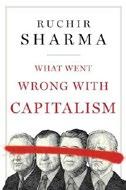
A book-length assertion that capitalism’s woes can be traced to government interventionism.
Sharma, an investments manager, financial journalist, and author of The 10 Rules of Successful Nations, The Rise and Fall of Nations, and other books, opens with the case of his native India. The author argues that it should be in a better position in the global marketplace, possessing an entrepreneurial culture and endless human capital. The culprit was “India’s lingering attachment to a state that overpromises and under-delivers,” one that privileged social welfare over infrastructure development. Much the same is true in the U.S., where today “President Joe Biden is promising to fix the crises of capitalism by enlarging a government that never shrank.”
Refreshingly, Sharma places just as much blame on Ronald Reagan for the swollen state that introduced distortions into the market. Moreover, “flaws that economists blame on ‘market failures,’ including wealth inequality and inordinate corporate power, often flow more from government excesses.”
One distortion is the government’s bloated debt, as it continues to fund itself by borrowing in order to pay for “the perennial deficit.” As any household budget manager would tell you, debt is ultimately unsustainable. Wealth concentration is another outcome of government tinkering that has, whether by design or not, concentrated wealth into the hands of a very small number of people, “a critical symptom of capitalism gone wrong, both inefficient and grossly unfair.” Perhaps surprisingly, Sharma notes that in quasi-socialist economies such as the Scandinavian nations, such interventions are fewer and shallower, while autocratic command economies are doomed to fail. “[T]oday every large developed country is a fullfledged democracy,” he writes, and the more freedom the better—but that freedom, he argues, is undermined by the U.S. government, which has accrued “the widest budget deficit in the developed world.” Sure to generate debate, and of special interest to adherents of free market capitalism.
Sileo, Tom | St. Martin’s (256 pp.)
$27.00 | June 4, 2024 | 9781250286116
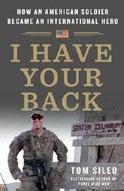
The inspiring story of a boy who yearned to be a soldier, achieved his dream, served three tours with distinction, and died a hero.
Military historian Sileo, author of Three Wise Men and Brothers Forever, chronicles the life of Army Staff Sgt. Michael Ollis (1988-2013), who idolized his Vietnam veteran father, played soldier obsessively in childhood, and enlisted in the Army at age 17 with his parents’ approval. For a school assignment at age 13, he wrote, “I want to join the US Army. I want to jump out of airplanes and helicopters.” He clearly
loved the life of an infantry grunt, impressing superiors as well as those who served with him. The author delivers an entertaining account of Ollis’ service, including tours in Iraq and Afghanistan. The end came in the summer of 2013 when Afghan insurgents invaded his base, and he saved the life of a Polish officer by shooting an attacking suicide bomber but died when the bomb exploded. The final 50 pages describe what followed: delivery of the tragic news; funeral ceremonies; testimonials from friends, fellow soldiers, and high officials, including then-President Obama; many awards; and subsequent memorials. Readers may be inclined to skim Sileo’s long excerpts from personal letters, speeches, and official condolences. The author narrates his tale with evenhandedness and a refreshing lack of empty declarations of patriotism, so pacifist readers curious to experience the life of an American warrior, the nuts and bolts of training, family life, horseplay, camaraderie, and battlefield fireworks will be satisfied. “Not only was I in awe of the young soldier’s willingness to sacrifice his life to save a foreign service member he had only just met,” writes Sileo, “but also by the way his story had quickly inspired so many, both in Poland and the United States.” A well-deserved eulogy for an American warrior.
Kirkus Star
Simon, Ed | Melville House (336 pp.) $28.99 | July 9, 2024 | 9781685891046

Devilish deals always end badly, but people continue to make them, according to this wide-ranging study of the Faust legend. Most readers are familiar with the story of Faust, the scholar who makes a pact with the devil, trading his soul for knowledge, power, and riches. Simon, an
essayist and editor-in-chief of Belt Magazine, believes that many people don’t fully understand the story’s depth and complexity, and this extensive cultural history goes a long way to prove his point.
While the first appearance of Faust as a character was in 1592, in a play by Christopher Marlowe, the idea goes back much further, and Simon tracks through the antecedents, including the temptation of Christ. Goethe’s version, the first part of which was published in 1808, was enormously influential, sparking many other tales that picked up the theme.
Thomas Mann reinvigorated the story as a novel in 1947, using the concept of a satanic pact to try to explain why the German people followed Hitler. In Roman Polanski’s 1968 movie, Rosemary’s Baby, a struggling actor offers his wife to be the bearer of the devil’s child in return for fame. Simon argues that the Faust legend draws its modern resonance from the idea of the contract—not just as a legal agreement, but as a moral choice. In the closing section of the book, the author suggests that some of the problems of the contemporary world, from screen addiction to climate change, represent Faust-style bargains. In this section, the logic is unclear, and there is a sense that Simon might be stretching the metaphor too far. Nonetheless, the book is an undeniably fascinating read, as the author weaves literary and intellectual strands into a colorful tapestry.
Simon is an erudite, insightful guide to a story that spans centuries but still speaks to our times.
Solomon, Susan | Univ. of Chicago (312 pp.) $26.00 | June 13, 2024 | 9780226827933

issue of climate change is common. However, according to veteran atmospheric chemist Solomon, it is a waste of energy that could be productively employed. She has won acclaim for her four decades of work in her field, and in this book, she examines how a range of environmental crises have been addressed. She was directly involved in some, such as repairing the hole in the ozone layer; regarding other projects, she has drawn together extensive primary and secondary research. Compiled in this way, the list is surprisingly long, including the removal of lead from paint and gasoline, the banning of dangerous pesticides, and reductions in air pollution and acid rain. The ban on chlorofluorocarbons, writes the author, provides a framework for effective cooperative action. Beginning with scientific research, the process moved to policy changes in a few countries, followed by global agreements and workable regulation and action. Problems bring forth answers, which might be new technology or a change in thinking. Trying to bully people into acceptance of painful reform is usually counterproductive. Explanation and persuasion might be slow but will be more effective in the end. In relation to the climate change debate, Solomon does not underestimate the problems, but she believes that a tipping point for dynamic action has been reached. “If we seize the day within this decade, we can craft a better future for life on Earth,” she writes. “Understanding the basic science, the global politics, key economic factors, and the essential roles of the public and of technology-steering shows that the world is on the cusp of a brighter future.”
Kirkus Star
Specter, Emma | Harper/ HarperCollins (208 pp.) | $30.00
July 9, 2024 | 9780063278370
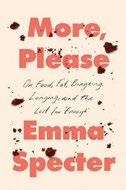
A study of how successful campaigns to curb dangerous chemicals and pollution point to a way forward on climate change.
Apocalyptic despair over the
Solomon’s review of answers to big problems displays her expertise and optimism in a pragmatic, inspiring package.

For more on climate change optimism, visit Kirkus online.
In this “hybrid memoir-in-interviews,” Vogue culture writer Specter blends her own struggles with binge eating and body image with the voices of prominent body-positive writers, including Carmen Maria Machado and Roxane Gay, to show how representation can be a healing agent. “The fat influencers and artists and writers and actors and musicians I sought out on social media when I first began to exceed the sizes that most stores kept in stock (or even manufactured) provided the road map that pointed me toward my current identity as a fat, mostly happy, out-andproud dyke and decidedly fat-positive human being,” she writes. The author takes readers through relatable phases of her life in chapters titled “Watch,” about how so many girls learn from media presentations what the “ideal body” looks like; “Gorge,” detailing the struggles of living with binge-eating disorder; and “Move,” about finding joy through exercise of all kinds, not just the calorie-burning forms. Specter dives deep into her personal experience, but she never loses track of the far-reaching, societal factors that contribute to and arise out of diet culture and the shaming of fat bodies. “At a certain point,” she writes, “when we’re still selling diet plans to kids and rewarding grown women for fitting into sample sizes, I think we have to admit that our national obsession with being small isn’t just some tragic holdover from the aughts; its affirmation of white supremacist, cis-heteropatriarchal notions about physical appearance and intrinsic worth.” Though the author covers a lifetime of body image issues, her
emphasis on the difficulty of the pandemic years for disordered eating is a fresh, timely take, which readers of all sizes will appreciate. An inspiring personal account of living with an eating disorder and finding joy in a fat body.
Under a Rock: A Memoir
Stein, Chris | St. Martin’s (304 pp.)
$30.00 | June 11, 2024 | 9781250286727

A memoir by the Blondie co-founder and guitarist. Founded in 1974 by Debbie Harry and Stein, Blondie was a leading light of the American new wave music scene. In this no-holds-barred memoir, Stein (b. 1950) shares his memories, from his childhood in Brooklyn to his present life, including his early musical and artistic interests, how he and Harry met, the formation and rise of Blondie, his breakup with Harry, his struggles with substance abuse, and details regarding his wife, Barbara, his children, and his enduring friendship with Harry. With a stream-of-consciousness writing style and a talent for storytelling, the author recounts with intriguing specificity the trajectory his life has taken, replete with wild, sometimes unbelievable stories of crazed fans, exhausting gigs, a “disrespectful and borderline abusive” manager, and the many excesses of fame. Among the many notable celebrities that make an appearance are Jimi Hendrix, Tony Sirico, Boz Scaggs, David Bowie, and Andy Warhol. A common theme through much of the narrative is the ever-presence of drugs and alcohol. As Stein contends in the epilogue, “Going into writing all this I hadn’t considered writing about so much addiction and death, but it was unavoidable.” He goes on to candidly discuss his feelings about his daughter’s recent death from an accidental overdose. Acknowledging his “glamorization of addiction” throughout the text, Stein sorrowfully
states, “I thought that I presented my own drug experiences in a negative light to our kids, but I’m wracked with guilt that any discussions might have been misconstrued.” The book features a foreword by Harry, in which she describes her feelings and memories regarding her friendship with Stein and being a part of Blondie. “Chris has written a many-layered view with his tireless memory,” she notes. A fascinating yet cautionary account regarding the hazards of rock ’n’ roll and celebrity.
Sturkey, William | Basic Books (464 pp.) $35.00 | June 11, 2024 | 9781541600263
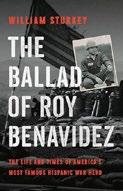
The life and times of a Mexican American Special Forces soldier from the 1950s to the end of the Vietnam War.
On the surface, this book appears to be a straightforward biography of Master Sgt. Roy Benavidez (1935-1998), who served in the Army from 1952 to 1968. However, Sturkey, a history professor and author of Hattiesburg, also provides a broader cultural narrative about the Hispanic and Latino experience (“those are the terms Roy himself used most often to describe his racial and ethnic identity”) in the war era. Before enlisting in the military, Benavidez physically and figuratively fought his way through school, and he shined shoes and worked in cotton and beet fields to make money. With few options for employment, he signed up for the Army and was eventually sent to South Vietnam. In 1968, three years after he stepped on a landmine and recovered, Benavidez jumped again into the line of fire, saving multiple lives and bringing home the dead. He suffered 37 puncture wounds, lacerated arms, a broken jaw, and exposed intestines, and shrapnel
littered his body. For his sacrifices, he received the Distinguished Service Cross, “the second-highest medal for combat valor available.” When further information became available about Benavidez’s extraordinary sacrifice and remarkable survival story, he was awarded the Medal of Honor in 1981. In the second half of the book, the author writes powerfully about the ardent racism in the military, as well as the problematic bureaucracy that held back Benavidez’s honors. Later in his life, Benavidez became a writer (The Three Wars of Roy Benavidez , etc.) and a public speaker and was an advocate for the American military until his death. Sturkey delivers a solid true story about a man who loved his country and all those he protected. A robust account of a true American hero and his ability to overcome many different obstacles.
Swisher, Kara | Simon & Schuster (320 pp.)
$30.00 | Feb. 27, 2024 | 9781982163891
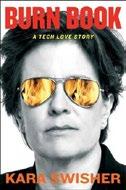
An essential explanation of how tech has changed the world, from a truth-teller who has witnessed it at close range. Years ago, someone interviewing Swisher for an internship told her she was too confident. Her reply: “I’m not too confident, I’m fantastic. Or I will be.” It could be annoying, but most readers will agree with her. Swisher, who began as a journalist covering the rise of the internet and has since become a thought leader via conferences, publications, podcasts, and an opinion column in the New York Times, offers an account of her career that is fun to read, enlightening, and sometimes frightening. She’s been ahead of her time since the 1990s, when she supported a colleague in lodging a then-unheard-of sexual
harassment complaint against talk show host John McLaughlin, and she has a clear talent for “scenario building, which is a fancy way of saying I’m a good guesser.” This is evident in her narration of the rise and fall of companies from AOL to Uber and the careers of “man-boys” like Sergey Brin, Mark Zuckerberg, Elon Musk, and many more. With regard to social media, Swisher writes that “engagement equals enragement,” and she predicted the Jan. 6 insurrection; in fact, she posed it as a hypothetical to see if Twitter would kick Trump off the platform. The tech world, she writes, is a “mirror tocracy, full of people who like their own reflection so much that they only saw value in those that looked the same,” people who “ignored issues of safety not because they were necessarily awful, but because they had never felt unsafe a day in their lives.” Though the book lives up to its title with scathing portraits of jerks and gross excesses, one of the most memorable aspects is Swisher’s deep respect for Steve Jobs, whom she laments as one of a kind. Swisher for president.
Taylor, Michael | Liveright/Norton (416 pp.)
$29.99 | July 16, 2024 | 9781324093923
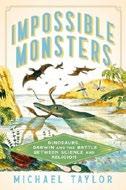
A remarkable look at how sweeping social changes can come from strange and small beginnings. Anyone who thinks that the culture wars of contemporary times are being fought with unprecedented ferocity should take a look at this book, “a history of the geologists, paleontologists, and biologists who… discovered dinosaurs, expanded our knowledge of the earliest ages of Earth, and transformed our understanding of humankind’s descent.” Taylor, a
well-regarded historian and author of The Interest, focuses on Britain in the 19th century and how the absolutes of fundamentalist religion were upended by discoveries of dinosaur bones and other fossilized remains. Until that time, the authority of the church was largely unchallenged. Consequently, the early-18th-century discovery of ancient bones of unknown creatures raised serious questions. At this time, Britain was undergoing a development boom, and the construction of new mines and railways soon revealed more bones. As the evidence of prehistoric animals continued to mount, the religious authorities found themselves on the defensive. There were many efforts to reconcile the emerging sciences with biblical history, but clearly there was no going back, despite fierce debate at every level. The speed of all this is striking: Essentially, within two generations, the basis of society shifted from religious certainty to scientific inquiry. “Few if any transformations in intellectual history have been more profound,” Taylor concludes. It’s telling that when Darwin, who had once been pilloried as a crank and a fraud, died in 1882, he was buried with honors in Westminster Abbey. Taylor ably conveys the ferment of the time, and he does so with respect to all concerned. This is an intriguing and accessible book, featuring many useful insights into how one age ended and another began. With careful research, Taylor unravels how the discovery of the past pointed the way toward a new future.
Townsend, Alan | Grand Central Publishing (256 pp.) | $29.00
June 4, 2024 | 9781538741184
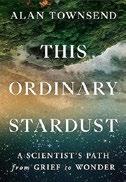
in this probing memoir, he confronted the gravest of news: Both his wife and daughter had developed brain cancer. In his account of navigating these circumstances, he explains that an understanding of the interconnectedness of all creation, one that bridged strictly rational and religious perspectives, proved salvific for him. Drawing on his own knowledge as an environmental scientist, Townsend juxtaposes descriptions of ecological cycles with his own evolving understanding of loss and grief. A crucial consolation, he reveals, emerged in becoming more aware of the ways in which he and all other humans belong, quite literally, to one another: Since all of us are involved in a perpetual exchange of material elements—“stardust”—we “may well contain some part of every human ever” in the trillions of cells that make up our bodies. In frank and moving terms, the author sets forth how properly reckoning with this truth and its myriad implications prompted a spiritual transformation in him, marked by an urgent awareness of the humble significance of every human life. It also underscored a need to acknowledge the importance of transcending mere materialist thinking: “[A]n evangelistic belief in science as the source of all answers is both limiting and dangerous.” Townsend’s appeals for the broader relevance of his experience are compelling, and his writing drives home, in clear and often heart-wrenching terms, how our understanding of human suffering might benefit from a certain kind of spiritual reframing. This is not a book that provides easy answers to life’s most difficult questions, but one that suggests plausible means of reconceiving our place within a relentlessly fluid universe. An insightful exploration of loss and the role of intellectual curiosity and spiritual openness in addressing it.
A memoir about the family, tragedy, and the spiritual possibilities of radical ecological sensitivity. A decade ago, Townsend reveals


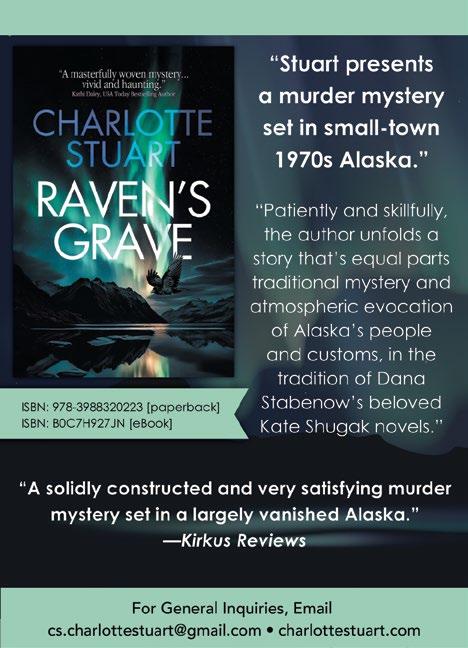
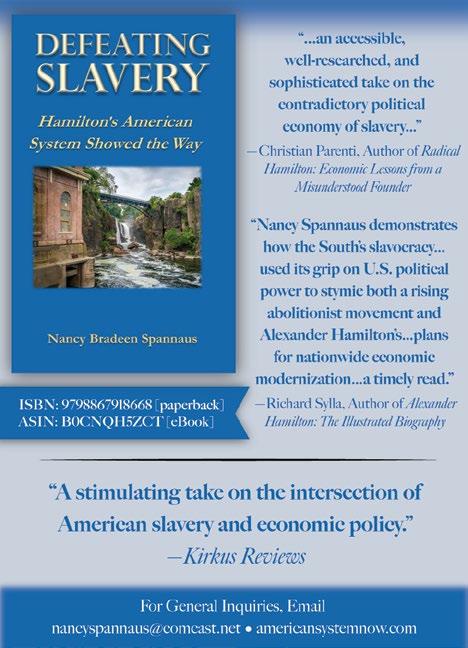



The U2 frontman received the audiobook of the year prize for Surrender.
The winners of the 2024 Audie Awards were announced last month at a ceremony in Los Angeles, with Bono, Patrick Stewart, and Michelle Obama among the recipients of the annual prizes for audiobooks.
U2 frontman Bono won the audiobook of the year award for his narration of Surrender: 40 Songs, One Story, a memoir told through reflections on songs he wrote for the iconic Irish rock band. Dan Zitt of Penguin Random House Audio accepted the award on his behalf, saying, “I want to start by thanking Bono, because what a great life he’s had,” to laughter from the audience.
Patrick Stewart won the autobiography/ memoir prize for his book Making It So; the title is a nod to his catchphrase from Star


Trek: The Next Generation. Obama received the award for business/ personal development for The Light We Carry : Overcoming in Uncertain Times, the audiobook for which she won her second Grammy Award last month. The fiction prize went to the audiobook edition of Tom Lake, written by Ann Patchett and narrated by Meryl Streep, while the nonfiction award was given to Poverty, by America, written by Matthew Desmond and narrated by Dion Graham. Graham also won best nonfiction narrator for King: A Life, written by Jonathan Eig. The Audies, presented by the Audio Publishers Association, were first awarded in 1996. A full list of winners is available at the APA website.—M.S.

Toynton, Evelyn | Delphinium (176 pp.)
$26.99 | May 14, 2024 | 9781953002389

A poignant memoir of displaced German Jews and their struggle to find a home.
“While no one in my grandparents’ or parents’ generation attempted to pass as Gentiles,” writes novelist and biographer Toynton, “their whole culture, their entire sense of their identity, was German.” This self-identification extended in all directions: Apart from an occasional word, they spoke German and not Yiddish; German patriots, they scorned the “peasant” Jews of the Eastern European shtetl, so much so that a friend of the author’s asserted that the German Jews supported Hitler as a bulwark against Bolshevism. Their German world crumbled when Hitler came to power, and Toynton’s parents made their way to America, followed by some survivors who still believed “that Germany was a superior country to every other, perhaps to America most of all.” The author’s sensitive portrayal of these newcomers reveals different ways of contending with the past: the father who often traveled to Germany for business after the war, confident that the Nazis were no more; the uncle who accepted the promise of acculturation only to have it torn away from the Jews, “leaving them with nothing at all.” In that broken promise, Toynton finds reason to repudiate her family’s snobbish rejection of the Ostjuden, which “amounted to a hatred of what we were.” The author’s tone is often elegiac, and some of her episodes are strikingly gaunt; for instance, she hazards, walking among the broken residents of a geriatric home, that each would ask her to kill them if given the chance. Toynton also finds large insights in small incidents, as when, extolling the virtues of LSD, she is brought up short by an aunt who objects to the unearned shortcut to enlightenment.
A thoughtful, notable addition to the literature of the Holocaust and those survivors who started anew in America.
Turban, Jack | Atria (320 pp.) | $28.99 June 4, 2024 | 9781668017043
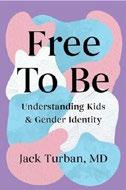
A psychiatrist specializing in the mental health of transgender youth offers support, encouragement, and education.
When he was 14, Turban, founding director of the gender psychiatry program at the University of California, San Francisco, witnessed his gun-toting father’s vehement homophobia. As a gay youth, he dressed and behaved in a way that wouldn’t expose his true nature. He has carried that experience with him throughout a career working with gender-diverse youth who don’t “fit into the gender boxes people expected.” The author discusses his visits to clinics designed to help transgender youth, speaking with unhoused young people rejected by their families, and how he integrated support models and protocol from Amsterdam into American clinics. Among many moving personal stories, Turban writes about a New England family and their child, whom they initially perceived was a “cisgender boy with feminine interests” but whose identity evolved into something more complex with the aid of puberty blockers and engaged, compassionate parenting. In other sections, the author pragmatically explores the terminology and real-world language of gender expression, radical enhancements in modern gender science, surgical interventions, and the push by some to identify a “transgender gene.” Turban diligently follows an array of transgender youth whose personal journeys with gender-affirming counseling and
medical interventions reflect the real-life struggles and challenges they continue to face in the U.S. Turban insists that societal stigma and divisive gender politics can be quelled with open-minded encouragement and, most importantly, consistent education. Due to his work at UCSF, the author views his subject through both clinical and compassionate lenses. His informative text provides essential encouragement and a proactive, supportive resource for transgender youth, their questioning peers, and anyone in marginalized populations who finds themself lacking support, uplifting stories, and peaceful interconnection. An insightful, important, and well-researched study on authentic gender expression.
Upholt, Boyce | Norton (352 pp.)
$29.99 | June 11, 2024 | 9780393867879

A lively survey of Old Man River, born of extensive research and travel. The Mississippi River, writes New Orleans–based journalist Upholt, is contested on many fronts. One is why the river bears the name of a continent-wide system when the Missouri is almost twice as long and the Ohio contributes more water. Another is whether to allow the river anything of its wild self. “The only longer humanmade landform on the planet is China’s Great Wall,” writes the author about the river-taming levee that runs to “the headwaters of the Atchafalaya.” Levees keep the floodplain from doing its work, and Upholt shows how before the engineers got to it, the floodplain would be frequently submerged as the river flowed and overflowed, yielding the richest of soil. Many other things have changed, including invasive species displacing river natives such as the
buffalo fish. Upholt builds a natural and human history along the template established by the Rivers of America series of yore, a blend of anecdote and observation. His account is more politically charged than all that, though, with an environmental twist that soon turns to economics. In the economy of enslavement, for instance, riverine malaria felled captive workers, and only the richest of plantation owners, “able to afford the workforce needed to make this landscape work,” could cultivate the river’s fertile bottomlands. Naturally, it’s just that class of wealthy owner that the levee system protects. Pulling back those levees, Upholt writes, could refresh the bottomlands while also enriching the river. In one example, where the river widens along its plain, “Corps of Engineers fish surveys found a record-breaking number of juvenile sturgeon.” It would cost billions to do so, but for any Mississippi River aficionado—and clearly, Upholt is one—it would be worth every cent. A fluent addition to the literature of America’s rivers.
Kirkus Star
Valosik, Vicki | Liveright/Norton (368 pp.)
$28.99 | June 25, 2024 | 9781324093046
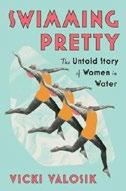
The long path to female equality has involved many byways, and one of them has been in the pool.
Valosik is editorial director at Georgetown’s School of Foreign Service, and she is also a masters synchronized swimmer, so she is well situated to tell the story of women swimmers from the late 19th century to the present. Swimming for women first became popular in Britain in the mid-late 1800s, and several women became famous in vaudeville acts. Some moved to the U.S. and attracted
Valosik provides an engaging, energetic history.
SWIMMING PRETTY
huge crowds. An Australian woman called Annette Kellerman became famous for acrobatic swimming but was also a strong voice in the drive for equal rights. There were popular group performances in the string of world fairs in the 1930s, although the key evolutionary step was adding music, which set synchronized swimming apart from other forms. Many male commentators were dismissive, partly because they did not understand the demands of it and partly out of straightforward sexism. However, as the author shows, Hollywood saw the potential, especially with the emergence of Esther Williams, a former swimming champion. She invented many of the crucial moves, and the aqua-ballet movies in which she starred became more and more spectacular. Williams, hugely popular in her heyday, demonstrated the capability of women, a critical issue when most women were confined to the home. Synchronized swimming was finally acknowledged as an Olympic sport in 1984 (the publication of this book marks its 40th anniversary). Valosik notes that the sport has recently become even more difficult, requiring feats that are increasingly complex and dangerous. Throughout this fascinating narrative, the author emphasizes the necessary blend of physicality, creativity, and grace, making readers want to pay special attention to the sport in the forthcoming Paris Olympics. With firsthand knowledge, diligent research, and colorful prose, Valosik provides an engaging, energetic history.

For more on the Olympics, visit Kirkus online.
Kirkus Star
Villarreal, Vanessa Angélica
Tiny Reparations (368 pp.) | $29.00
May 14, 2024 | 9780593187142
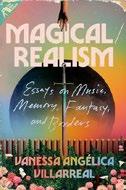
A political, personal, and immensely readable collection about the intermingling of fantasy and reality. With brilliant insight and masterful writing, Villarreal examines fantasy at close range, blending personal essay with intellectual criticism. The author ranges widely, examining racism, her childhood as the eldest daughter of Mexican immigrants, the gender performances of Kurt Cobain and Selena, and the fraught circumstances of her divorce. At the heart of the narrative is a significant question: “What does the constant state of loss after colonization, enslavement, and dispossession do to the collective imagination?” Furthermore, who has the privilege of imagination, and how does that shape our collective reality? In this memorable narrative, fantasy is involved in many different things: the video game where becoming a witcher is a means to heal after the betrayal of divorce; the Sphinx Gate in The Neverending Story; the American dream, “a fairy tale, after all”; Villareal’s search for her grandmother’s records, lost from national archives due to gendered violence; movies in which an all-white cast is still the norm; the author’s own mental health struggles; and Latine writers being forced to carry the label “magical realism” no matter their genre. Where there is fantasy, there is also magic, and the magic of this collection is the elasticity and brilliance with which Villarreal is able to take critical analysis
and connect it to her own experiences. Magic itself, as the author indicates, is often treated as “a feminized, infantilized, racialized practice done by primitive or unwell people, despite its history in the healing arts. Ancestral knowledge is reduced to ‘magic’ to strip it of legitimacy, shamed, ridiculed, or framed as dangerous because it is how disempowered people… have historically healed, rebelled, and reclaimed their narratives.” Villareal expertly reclaims those narratives here. A wondrous book that will change the way you think about fantasy and magic.
Wagner, Kim A. | PublicAffairs (416 pp.) $35.00 | May 7, 2024 | 9781541701496
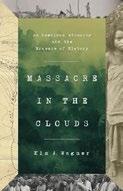
A historian resurrects a shocking, forgotten piece of American military history.
Bud Dajo—the site in the southern Philippines where, in 1906, American soldiers massacred hundreds of Moro men, women, and children—should ring in Americans’ ears as loudly as My Lai and Wounded Knee do. So argues Wagner, a professor of global and British imperial history and the author of The Skull of Alum Bheg and Amritsar 1919, in this impressively researched book. Throughout this powerful narrative, which is occasionally difficult to read given the bloody subject matter, the author seeks to rectify the fact that what happened at Bud Dajo has “faded into complete obscurity.” Inspired by a grotesque photograph that shows U.S. soldiers posing proudly among the Moro dead, this work offers a rich accounting of the events leading up to, and following, the moment captured on camera. In exhaustive—and sometimes exhausting—detail, Wagner chronicles the U.S. occupation of the Philippines, the battle at Bud Dajo, and the stateside response to the massacre, including outrage by the likes of Mark Twain and W.E.B. Du Bois, among others. Along the
way, the author makes sure to place the tragedy in context, drawing connections both to the U.S. Army’s campaigns against Native Americans and to the European powers’ colonial wars in Asia and Africa. The historical importance of retelling this event in the fullest possible detail sometimes takes precedence over narrative flow—as when, on the cusp of the beginning of the battle, Wagner pauses to relate that “the troops being deployed wore tan, wide-brimmed slouch hats with a center crease” alongside “a khaki tunic and trousers, with canvas leggings and leather boots.” Still, a surfeit of details is a small price to pay for an important historical excavation. A vital work of history that breaks a century-old silence.
Whitlock, Craig | Simon & Schuster (464 pp.) $30.99 | May 14, 2024 | 9781982131630
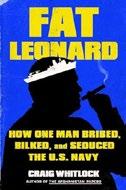
A vigorous investigation into the life of a con artist and swindler who had half the leadership of the U.S. Navy in his pocket.
Leonard Glenn Francis (b. 1964) was a high school dropout with few visible prospects. However, according to one of his former nemeses, he was “smarter than anyone he ever met.” Francis, a former street hustler in Malaysia, made no effort to conceal himself: He was heavy and uncommonly tall, and he threw himself around on the principle that “with a little luck and the right connections, you could pretty much get away with anything.” Washington Post reporter Whitlock, author of The Afghanistan Papers, capably chronicles how Francis did just that. Starting a seat-of-the-pants naval resupply business, which “faced scant competition in what was then a niche market,” Francis serviced ships of the U.S. Seventh Fleet in the Pacific. Soon, as what the Navy calls a “husbanding contractor,” he was gouging
prices and cooking the books, such as when he billed one visiting missile destroyer $2.8 million for fuel and port services: “More than half the amount was fraudulent, based on fake invoices from fictitious subcontractors.” To enable his bilking, he bribed Navy officers and officials with prostitutes, booze, and baubles, playing on weaknesses—drinking problems, failing marriages—as deftly as the KGB. He also had spies everywhere, including inside the Navy’s vaunted NCIS. It all came crashing down when a few honest sailors began to doubt “Fat Leonard,” who grew grotesquely obese as the dollars accumulated. By 2018, 90 Navy admirals came under investigation for illicit dealings with Francis. The close of Whitlock’s account is the cat-and-mouse game of Francis’ trials before U.S. judges, an unlikely escape to Venezuela, and now, in 2024, extradition and resumed judicial inquiry. Maddening and astonishing in its revelations of a crime spree that cost taxpayers untold millions.
Wu, Simon | Harper/HarperCollins (224 pp.) $27.99 | June 25, 2024 | 9780063316201

A young writer riffs on family, race, fashion, dancing, and relationships.
Wu, who is involved in a variety of museum-curation projects, weaves himself in and out of this bold collection of seven densely packed personal essays. The title comes from a song by Swedish singer Robyn, who also appears throughout the text. “A Model Childhood,” focusing on his mother, ranges widely: clutter in his family home and the need to organize it and let stuff go; getting along with relatives; video games; family shopping at Costco; Maggie Lee’s film Mommy, about her mother’s passing; Ken Okiishi’s photographic collage Wish I Were Here; and an installation Wu put together of stuff from his parent’s house
and his imagining of the closing party he’d give with dancing and Robyn singing. “For Everyone” is about “cultural consumption” and the author’s experience working with art and living artists as an intern at the Whitney Museum, while questioning whom museums are for. In the same piece, Wu expresses his desire to get a popular unisex Telfar bag made by a young Liberian American designer whom Wu then profiles. In “Vaguely Asian,” the author delves into what it means to be Asian through the lens of the art fashion collective CFGNY. At a music festival in New York City, Wu describes the dance floor environment as a “place you couldn’t resist and the one you attempted to avoid at all costs.” Among numerous other topics, the author explores his experiences with drugs; clubbing in Berlin; dating apps, Ching Ho Cheng’s psychedelic painting Chemical Garden and its place in “queer ecology”; and Tseng Kwong Chi’s “selfie’s” photo art. Wu closes with a wistful piece on his visit to Istanbul and James Baldwin’s time there. These smart, sly essays will appeal to lovers of both pop and museum culture.
Yong, Sable | Dey Street/ HarperCollins (256 pp.) | $29.99
July 9, 2024 | 9780063236486
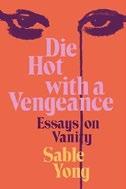
A vibrant essay collection about beauty, identity, and cultural acceptance. Is beauty only skin deep, or is it in the eye of the beholder? A social construct, or part of human nature? All of the above, writes Yong in this enjoyable book. The author examines the subject of beauty from a range of perspectives, including as a former senior editor of Allure, a bible of the fashion industry. She also looks back on her personal history as an Asian kid in a mostly white school. Yong has a clever, self-deprecating sense of humor, and she
Yong’s take on beauty and fashion is revealing, playful, and heartfelt.
recounts her career as a procession of stumbles, steps forward and back, and lucky breaks. The author is conflicted about beauty: On one hand, she loves its aesthetic qualities, while on the other, she hates the way it promotes surface over depth. Even after leaving Allure, she continued to explore the nature of beauty, emphasizing how social media has radically increased the tempo of fashion cycles. Keeping up with the trends is an exhausting process, and many women (and men) become lost in the labyrinth of influencers, brands, and celebrity endorsements. Yong has a good time puncturing some of the wilder bubbles of the fashion business, and several of her essays are comically droll. Though she doesn’t reach any definitive conclusions about the concept of beauty, she makes clear that the fashion industry is a business first and foremost, and its goal is to make profits. Consequently, women should bear its manipulative nature in mind, and perhaps get away from it every now and then. Ultimately, writes the author, “there is no inherent shame in taking pride in your appearance or wanting to look good, just as there’s no shame in coming just as you are.” Yong’s take on beauty and fashion is revealing, playful, and heartfelt.
Zieman, Mimi | Falcon Guides (244 pp.) $22.95 paper | April 2, 2024 | 9781493078431

Recollections of a courageous journey.
In 1988, Zieman, then a 25-year-old medical student, signed on as the medical officer for a team of
climbers aiming to ascend the challenging East Face of Mount Everest. As she recounts in a lively, gritty memoir, the project was daunting: “Our small team of six had four climbers, a photographer, and me.” Besides taking a route that had been climbed only once before—with a large team and more guides—her team “were purists, nimble, using no oxygen or Sherpa support.” Her decision to go confounded family and friends. However, as the author demonstrates, it was consistent with her other bold, if unconventional, decisions. For example, as a high school student, despite her mother’s disapproval, she took tap dancing lessons with Broadway as her goal; in college, she spent summers at the Rocky Mountain Biological Laboratory; and in 1985, she took off for Nepal, a rugged trip that ended with a bout of shigella dysentery. “I had felt confined by various boxes and expectations,” writes Zieman, including “cement apartment building, immigrant family, Jewish Orthodox community, and my own list of shoulds .” But if being a child of Holocaust survivors instilled her with “shoulds,” it also gave her the example of reinvention. “Perhaps,” she muses, “part of my birthright was to wander.” It also instilled in her an ethos of hard work, daring, and determination. Daring certainly was a requirement for the risky, arduous Everest expedition, which confronted her with physical, medical, and emotional challenges: getting to base camp, for example, which was supposed to take five days but took 22; daily avalanches; and the heart-stopping fear that three of the climbers had perished. Zieman’s brisk narrative conveys both the tension and triumph of a wild adventure. An engaging memoir about “taking risks” as “a path to growth.”

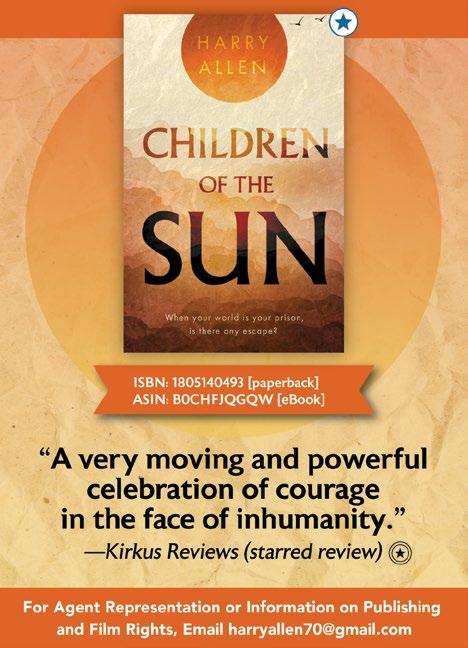
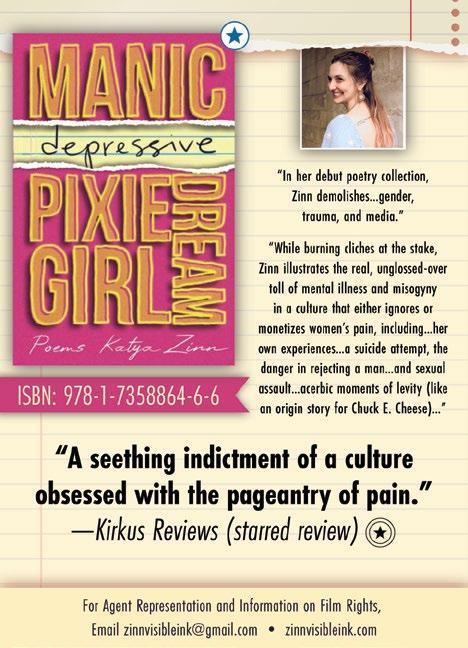
EDITORS’ PICKS: Bunt!: Striking Out on Financial Aid by Ngozi
Ukazu, illus. by Mad Rupert, color by K Czap (First Second)


Out of many, one: A new book captures the brilliant gestalt of the Village Voice
BY MEGAN LABRISEThe Partition Project by Saadia Faruqi (Quill Tree Books/HarperCollins)
3 Shades of Blues: Miles Davis, John Coltrane, Bill Evans, and the Lost Empire of Cool by James Kaplan (Penguin Press)
Anita de Monte Laughs Last by Xochitl Gonzalez (Flatiron Books)
ALSO MENTIONED ON THIS EPISODE:
The Check, Please! series by Ngozi Ukazu
Stealing Green Mangoes: Two Brothers, Two Fates, One Indian Childhood by Sunil Dutta
Ninth House by Leigh Bardugo
THANKS TO OUR SPONSORS:
Forgetting Me by Katherine Tirado-Ryen
The Starflower by K.A. Kenny
Finding Miss Fong by James A. Wolter
Reasonable by K.T. Carlisle
Arctic Revelation: A Thousand Lifetimes in the Blink of an Eye by Hugh Finch
Fully Booked is produced by Cabel Adkins Audio and Megan Labrise.

On this episode of the Fully Booked podcast, Tricia Romano discusses The Freaks Came Out To Write: The Definitive History of the Village Voice, the Radical Paper That Changed American Culture (PublicAffairs, Feb. 27), an enthralling oral history of the country’s first (and best) alternative weekly newspaper. A former staffer who began as an intern in 1997 and became an award-winning contributing writer and nightlife columnist, Romano draws from more than 200 interviews with fellow writers, editors, photographers, cartoonists, proofreaders, critics, columnists, politicians, and activists, offering a sonorous history of the trailblazing paper founded in 1955 by Dan Wolf, Ed Fancher, and Norman Mailer.
Here’s a bit more from our review of The Freaks Came Out To Write: “‘Our philosophy,’ said Richard Goldstein, who served as editor, ‘was you do not hire an expert; you hire someone who is living through the phenomenon worth covering.’ Poets were hired as poetry critics, dancers as dance critics; Jules Feiffer became the resident cartoonist. From the outset, the Voice celebrated and encouraged personal journalism on issues that mattered to Greenwich Village and beyond, including civil rights, off-Broadway theater, jazz clubs, hip-hop, AIDS, gay activism, the women’s movement, and independent films.…Romano’s interviewees reveal internal squabbles and rivalries, as well as changes resulting from a succession of owners: wealthy man-about-town Carter Burden, New York magazine founder Clay Felker, irascible mogul Rupert Murdoch, New Times Media, and billionaire Peter Barbey.…Eyewitness testimony makes for a vibrant media history.”
Romano discloses that she got the title for the book from longtime Village Voice critic Greg Tate, whose brilliant career influenced countless critics. We then

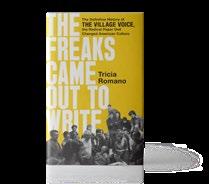
The Freaks Came Out To Write: The Definitive History of the Village Voice, the Radical Paper That Changed American Culture
Romano, Tricia PublicAffairs | 608 pp. | $35.00 Feb. 27, 2024 | 9781541736399
discuss why oral history was the right way to tell this story; how Romano found her way to the Voice in 1997, and the shape her career took over the next eight years; some differences in approach between the Voice and the New York Times; the Voice’s founding in 1955, the major players and the cause that united them; and whether there was a time in 20th-century American history when the pen was indeed mightier than the sword. We touch on the common refrain by which Voice editors answered calls of You need to be writing about this (i.e., Then you do it); the career of cartoonist Jules Feiffer; whether Romano believes there was a golden age of the Voice; how publishers produced an audiobook featuring 200-plus voices; and much more.


WITH EARTH DAY around the corner, I sometimes find myself consumed with worry about the state of our planet. Last June, smoke from wildfires in Canada affected air quality in cities across North America. Rising temperatures are rendering regions of the world uninhabitable. Melting glaciers are leading to increased flooding around the globe. All of this is affecting kids. A study last year by Earth Rangers, a Canadian organization focused on environmental education, surveyed 1,000 children between the ages of 6 and 11; 80% of them were experiencing anxiety related to climate change.
How do we reassure children while still being honest with them—especially when grown-ups are feeling equally uncertain? In times of trouble, I often turn to literature, and I’ve found inspiration in several picture books. These works of fiction don’t directly discuss climate change; instead, they speak to the sadness and fear that children and adults are experiencing. They don’t provide easy answers, but they will spur conversations and give readers an opportunity to grapple with complex emotions.
What if the worst came to pass and the human race as we know it faced destruction? This may not sound like the stuff of picture books, but Caldecott Honoree Aaron Becker pulls off the premise in The Last Zookeeper (Candlewick, March 26), a wordless masterpiece inspired by the biblical story of Noah’s Ark. He imagines a waterlogged world populated by a few zoo animals…and a giant robot named NOA, who builds a boat and attempts to ferry the creatures to safety. Images of buildings submerged in water and overgrown with plants make clear that humanity is long gone. But the story thrums with hope as NOA cares for the animals and persists despite setbacks. Readers will emerge convinced that no matter
how bleak things become, we must never stop working toward a better world.
In 2020, a record number of wildfires raged on the West Coast, caused in large part by global warming. In Simone (Minerva, May 7), Pulitzer Prize winner Viet Thanh Nguyen offers a child’s-eye view of the fires as a mother and child flee their San Jose home. Simone’s mother tells her about the devastating flooding she witnessed in her homeland, Vietnam. Though frightened, Simone is heartened by her mother’s words, and as everyone takes shelter in the high school gym, the girl encourages other children to express their feelings through art. Minnie Phan’s gentle illustrations convey Simone’s turmoil and courage. This tender but empowering tale will especially resonate with little ones facing upheavals of their own.

Science writer Lauren Redniss’ Heatwave (Random House Studio, May 21) portrays an urban landscape whose inhabitants languish on a sweltering day until a sudden downpour provides much-needed relief. Employing spare text (“100 degrees, in the shade”) and a saturated palette of fiery reds and cool blues, Redniss captures characters’ frustration, fatigue, and uncertainty. Details in the art imply that these soaring temperatures are the result of global warming. Caregivers and educators will find many opportunities to spark discussions: What would experiencing such heat feel like? And can it be prevented?
Mahnaz Dar is a young readers’ editor.
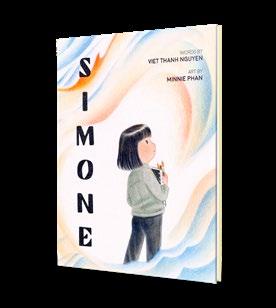
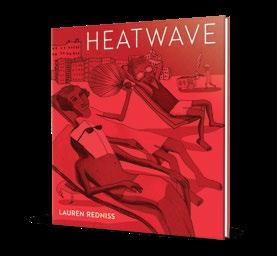 Illustration by Eric Scott Anderson
Illustration by Eric Scott Anderson
Acclaimed husband-andwife team Henkes and Dronzek present an ode to noticing the little things. “If you found a little ball on the grass and it was there for days, you could take it home.”
Using “if” statements like this, similar to those found in beloved books such as If You Give a Mouse a Cookie (1985), Henkes relies on far simpler storytelling. The book zeroes in on four objects: a ball, a flower, a box, and a kitten, in that order. With each acquisition, we learn under what circumstances the “you”
of the story could take it home (the kitten in particular requires the most caveats), and in the end, the box, flower, and ball all turn out to be things that serve the kitten very well. The final sentence is a succinct, “Everyone would be happy.” And everyone is. Using no more words than you might find in a beginning reader, Henkes once again demonstrates his mastery for boiling a story down to its most essential parts. Dronzek depicts a cast of three (a child with light tan skin, a dog, and the small,
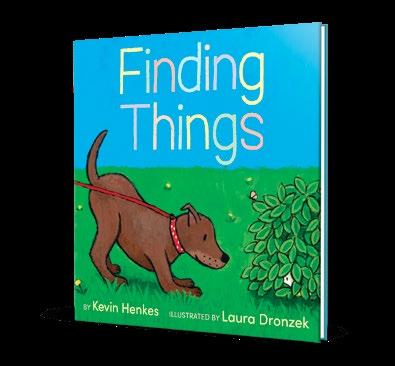
white kitten); each of her images is compartmentalized into neat boxes and panels, all painted with bright acrylic colors that pop off the page. Each element is as accessible as it is ripe for speculation. Found objects sometimes yield the simplest pleasures. Consider this book one such example. (Picture book. 3-6)
Kirkus Star
Adusei, Denise Rosario | Illus. by Priscila Soares | Roaring Brook Press (40 pp.) $18.99 | June 4, 2024 | 9781250824967
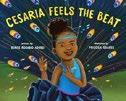
A Deaf dancer learns to assert herself. Preparing for the Carnival dance, Cesaria blissfully twirls barefoot on the beach: “She sings lyrics with her fingers. She raises her hands to the sky, to the birds, to the clouds.” When it’s time to perform, she dons her peacock costume: tutu, feathers, headdress…but no shoes (the better to feel the beat of the music). Perfect! But the director doesn’t think so. Though Cesaria protests that peacocks don’t wear shoes, he insists she wear them. Dismayed, Cesaria escapes to the shore: “The Earth radiates its heartbeat through her bare feet. Its tempo tickles her toes.” Reluctantly, she decides she can’t let down the other dancers. But when she rejoins her troupe, the Earth feels too still beneath her sandal-clad feet. Cesaria freezes, too… until she feels a sea breeze. Moved by “music only she can hear,” Cesaria “flaps her wings, stands proud,” and kicks off her shoes, urging her troupe to do likewise in a triumphant finale. Lyrical text evokes the rhythm of Carnival drums and lapping waves. Soares, who herself has hearing loss, poignantly expresses Cesaria’s joy, frustration, and pride. Lush jewel tones convey the bustle of Carnival and the peace of Cesaria’s beloved seashore. All characters are Black, with varying shades of brown skin; the setting appears to be Brazilian. An author’s note explains that the book was inspired by the experiences of Adusei’s Deaf cousin. A vibrant, poetic celebration of Deafness, dance, nature, and selfadvocacy. (Picture book. 4-8)

A vibrant, poetic celebration of Deafness, dance, nature, and self-advocacy.
CESARIA FEELS THE BEAT
Ahlberg, Allan | Illus. by Bruce Ingman Candlewick (40 pp.) | $18.99
June 4, 2024 | 9781536231519

What’s that hiding under the table?
Aldridge, Ethan M. | Quill Tree Books/ HarperCollins (240 pp.) | $24.99
June 25, 2024 | 9780063247215
For another picture book about dancing, visit Kirkus online.
Elsie is an active, blondhaired young girl who lives with her parents, brother, dog, and cat in a world much like this one, with some key differences. Seemingly inanimate objects— forks, knives, ketchup, a teapot—can move by themselves, and, more importantly, Elsie keeps finding animals (an elephant, a mother kangaroo with a joey) under the table…as well as a pair of penguins in the fridge and on the counter. Sketchy illustrations blend well with the off-the cuff feeling of the text as, playing against type, her family embraces her very real discoveries. The elephant helps them wash the car, the kangaroo helps take in the groceries, and the penguins’ presence leads to a camper trip to the beach for people and animals alike (the table comes, too), where they frolic, swim, eat, and meet an army of ants, all with names starting with the letter A. It’s off to bed, and the story seems to be over, but what’s that hippopotamus doing under the table? Young listeners will be tickled by the pleasingly nonsensical plot; they’ll giggle through this quirky and imaginative tale of a lively girl and her warm, supportive family before drifting off to sleep themselves. Main characters are light-skinned. A whimsical, rib-tickling good-night book for the very young. (Picture book. 2-6)

Bookish Agatha lives in a pastoral village where a silky-furred black dog lurks in the shadows. The dog’s slitted yellow eyes follow Agatha as she moves through the peaceful pastel tones and rounded edges of her everyday world; the illustrations evoke a Victorian English village. Agatha tutors a brown-skinned boy named Peter Garcia, helps her parents with the upkeep of their modest cottage, and fends off unwelcome advances from shop owner’s son Claude. All the while, she dreams of studying astronomy but despairs of the barriers she faces. Agatha steps into a trap laid by the dog, who transforms into the Lady of the Hills (a dapper, pallid woman with the dog’s yellow eyes and flowing black locks), who claims that Agatha owes her a favor. Despite Agatha’s sweet developing romance with Heather Garcia, Peter’s blond cousin, she’s still enchanted by the Lady, who pulls her into magical adventures that are by turns dreamy and upsetting. While Agatha loves the Lady’s starlit dance party in a stone circle, she abhors the consequence she metes out in response to Claude’s persistent attentions. When the Lady’s antics affect Heather, Agatha must take the initiative. Agatha’s curiosity makes her an engaging hero, and the tale’s events unfold at a satisfying pace. The story tempers genuine fear and horror with lighthearted gentleness. Agatha is
biracial, with a white father and a brown-skinned, black-haired mother. An enchanting spin on the proverbial cautionary tale of Faerie. (character sketches) (Graphic fantasy. 9-14)
Alemagna, Beatrice | Trans. by Jill Phythian
Thames & Hudson (48 pp.) | $17.95
March 19, 2024 | 9780500653623
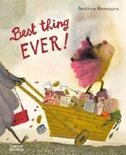
A young bat gets a bit greedy on a grocery store trip but eventually learns what truly matters. As this story translated from French opens, Pascaline and her mother (anthropomorphic bats) are off to the forest supermarket. “It’s an amazing place, tucked inside a huge oak tree.” Charming illustrations, rendered in watercolor, pastel, pencil, and fluorescent pink crayon, depict the setting in a cross-section showing the various animals who go there to shop. Once inside, Pascaline ends up confusing needs with wants. She pleads for various items, all of which befit her chiropteran nature (“locust lollipops!” and “crispy crickets!” and “wing glitter!” and “sparkly slug slippers!”), and declares each the “best thing ever!” When her mother wisely doesn’t relent, a somewhat puzzling twist ensues as Pascaline’s “weeping and wailing” turns her into a sluglike creature. Transformed, she proves irresistible to a passing bluebird, who seizes her and flies away. She wriggles free while in flight over a field, drops to the ground, and meets some snails. After finding a shell to cover her slug body, she tags along with them, yet though she may look the part, she can’t agree that a lettuce leaf is the “best thing ever,” and she becomes homesick. All’s well that ends well when Pascaline is reunited with her mother, whose embrace is the “best thing ever,” after all. The adventure is enjoyably surreal, and the conclusion is heartwarming, though some readers may be confused by Pascaline’s transformation.
Sweet storytelling, with something perhaps lost in translation. (Picture book. 3-5)
Allende, Isabel | Illus. by Sandy Rodríguez Philomel (32 pp.) | $18.99
June 4, 2024 | 9780593623596

In renowned Chilean American author Allende’s picture-book debut, a benevolent dog teaches a young boy a new trick.
Perla, a small, scraggly shelter dog wearing a pearl necklace, possesses two so-called superpowers: the ability to “make anybody love me” and, even more impressive, given the dog’s tiny stature, an enormous roar. The Rico family arrives at the animal shelter intending to adopt a formidable guard dog, but Perla manages to impress them with that immense roar and an assist from bespectacled young Nico Rico, whose insistence seals the deal. Perla proves vital to the Rico family—the canine even helps the family’s lazy house cat, Lucy, banish mice. If only Perla could help Nico with his bullying woes at school! After Perla confronts a ferocious, dragonlike dog at the park one day, Nico asks the mighty mutt to “teach him the lion roar.” Perla obliges—with hilarious results. Allende has crafted a winsome portrait of a miniature, magical dog whose droll commentary makes for a fab read-aloud, often elevating the central theme—finding the courage to stand up to one’s bullies—above tepid familiarity. Rodríguez’s vivid watercolor-and-ink artwork focuses on dynamic body movements and close-ups amid lush backdrops, pulling readers along in the fun from page to page. Nico and his dad have light tan skin, and his mom and teen sister read white.
Paws up for this personable pooch. (Picture book. 4-8)
Anderson, Justin | Illus. by Clover Robin Candlewick (32 pp.) | $18.99
May 28, 2024 | 9781536231489
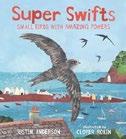
Learn about common swifts and their remarkable journeys.
The author of Narwhal (2022), illustrated by Jo Weaver, turns his attention to a bird well known in his native Great Britain. Swifts, he notes, fly faster and stay in the air longer than any other birds, migrating from central Africa to northern Europe. Some say the young remain in the air as long as four years, coming down only when they’re ready to raise a new brood. Following a foraging female as she travels north, this colorful title offers fascinating facts about these tiny, long-distance fliers. They can drink, preen, and sleep while flying. They have raucous gatherings known as “screaming parties.” Their spit keeps their nesting materials together “like superglue.” Both parents feed the nestlings. Text in a larger font provides a smooth narrative, ideal for a read-aloud, while text in a smaller font offers intriguing facts. A series of text boxes describe the swifts’ symbiotic relationship with the louse flies that ride north in their feathers, lay eggs in swift nests, and send a new generation of swift lice south in the fall. Robin’s mixed-media illustrations show the changing scenery in double-page spreads; smaller vignettes depict nesting details and a thrilling scene in which our protagonist must evade an attacking falcon.
A quick look at a super-speedy bird. (more about swifts, map, index) (Informational picture book. 4-8)

A powerful argument for seeing and celebrating color. I
Arnold, Marie | Versify/ HarperCollins (288 pp.) | $18.99
June 11, 2024 | 9780063251755
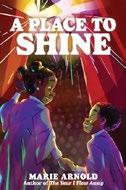
A 10-year-old Black girl goes on a quest to try to reunite her family.
Sundae Williams lives in Chicago with her little brother, Miles, and Nanna Jo, their grandmother, who’s been losing her memory lately (their parents died in a car accident). Sunny’s walking home with Miles and Folake Musa, her Nigerian American best friend, when the kids notice a police car outside the Williams’ apartment building. They overhear an officer telling a concerned neighbor that Nanna is being taken to a nursing home following a wellness check. Surprisingly, an officer says that the grandchildren have been put in emergency foster care. Before the mix-up can be sorted out and social services show up, the siblings try to secretly live at school. Inspired by her favorite fantasy story, Sunny decides that to save Nanna, they must go on a quest, just like the book’s hero, Luna. When their hiding place is inevitably discovered, Sunny decides (based on a sign connected to the fantasy) that new music teacher Darrious Evens is supposed to help them—and Mr. Evens does ultimately agree to foster them. The siblings must navigate a new living experience while trying to complete their quest. Sunny is a funny and relatable character, and readers will identify with her gumption and loyalty. Quirky Miles and Folake add another layer of fun to this story, whose pacing and humor make for an enjoyable read.
A compelling look at familial support that comes from unexpected people and places. (Fiction. 8-12)
Badua, Tracy & Alechia Dow
Quill Tree Books/HarperCollins (320 pp.) $18.99 | June 11, 2024 | 9780063254589
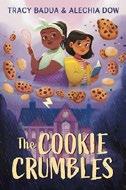
Best friends combine their baking and sleuthing strengths to try to solve a baking competition mystery. Middle school students Laila and Lucy are inseparable, but thanks to the school district lines, they’ll be attending different high schools unless they can achieve their dream of getting scholarships to exclusive Sunderland Prep. Ever since her father’s death, Laila and her mother have been struggling to make ends meet, and Lucy’s parents can’t afford the tuition, either. Aspiring “cookie tycoon” Laila enters the Golden Cookie baking contest—the winner gets a full ride to Sunderland— while Lucy, “journalist extraordinaire in training,” is hoping her article about the competition will win her Sunderland’s journalism scholarship. Laila is competing against kids from wealthier backgrounds, as the show’s coordinator points out at the start, shaking Laila’s confidence slightly. But the tension among the contestants quickly escalates and accusations start flying once a celebrity chef judge collapses after eating one of Laila’s cookies. A storm that isolates the competitors rachets up the tension even more. The girls’ journal entries are interspersed between chapters told from their alternating perspectives, providing texture to the story. Readers
will resonate with the relationship dynamics between the two friends, who seem to see the best in each other despite various points of interpersonal tension throughout the story. Laila is Black; Lucy has black hair, brown skin, and the surname Flores.
A lighthearted read that effectively combines reality television drama with a page-turning mystery. (Mystery. 10-14)
Bernstrom, Daniel | Illus. by Brandon James Scott | Hippo Park/Astra Books for Young Readers (40 pp.) | $18.99
May 14, 2024 | 9781662640698
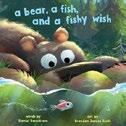
The big-eyed bear from A Bear, a Bee, and a Honey Tree (2022) returns— still hungry. Perched in a tree, a bear spots a very small fish in a stream nearby. The “homesick” tiny pink-and-blueish fish is attempting to migrate upstream. After the bear, in hiding, adroitly catches the little fish, countless larger, angry-looking fish surge up in a wave, overpowering the bear. The bear loses its balance—and its grip on the small fry—and falls backward into “a world of silver fish.” On shore again, as the tiny fish gasps in a puddle, the drenched bear decides to let it go and places the fish back in the water. The bear’s still hungry, but our hero catches sight of a sign with a picture of a picnic table; the bear is last seen peeking through bushes, wordlessly eyeing some abandoned burgers. The all-lowercase text consists of very few words (in a rather small font). The soft but saturated watercolorlike illustrations employ varied perspectives for a cinematic effect; readers will feel as though they’re right there in the water with the fish or far above the stream, looking down. Words like snatched, squiggling, wriggling, unaware, and thoughtful might prove difficult for beginners, but the many rhymes and repetitions will help. Thrilling, immersive fun. (Picture book. 4-8)
Blue, Beatrice | Frances Lincoln (40 pp.)
$18.99 | May 7, 2024 | 9780711295315
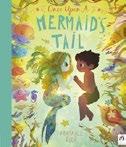
Find out
why mermaids have tails. A dark-skinned boy named Theodore rows his boat around a pastel-colored world filled with anthropomorphic sea creatures. He brings a hefty selection of fish back to his skylit home so he can watch “the way their scales shimmer… in the sunlight like jewels.” Bright flecks in the illustrations provide a dreamy, enchanted quality—the book’s biggest strength. When Theodore captures a mermaid—a tiny humanoid creatures with legs, surrounded by a clear shell—a booming voice tells him that “she belongs to the ocean,” but he ignores it. Calling the mermaid Oceanne, he drops her into a suffocating, filterless fishbowl. As the mermaid sickens and her shell breaks, scenes darken and lose saturation. If an omnipotent voice hadn’t already broadcast the story’s moral, Theodore and readers might now put it together themselves in a satisfying exercise of agency and meaning-making. Instead, the loud voice repeatedly insists that Oceanne “belongs to the ocean” until Theodore finally brings her back. The sea is subdued and empty, but eventually fish after fish reappears, each giving Oceanne a sparkly scale until she revives and grows a tail. “All mermaids have tails,” the narrative declares, “to remind us of something very important”: that animals belong in the wild. While it’s an important lesson, the preachy narrative talks down to readers rather than engaging them. Too didactic to be much fun but certainly pretty. (Picture book. 3-6)

The angst and agonies of early adolescence are magnified when you’re the new girl.
THE NEW GIRL
Bolling, Valerie & Kailei Pew | Illus. by Laylie Frazier | Harper/HarperCollins (40 pp.) $19.99 | June 4, 2024 | 9780063234260

The love and appreciation of color shines through this vibrant retrospective on activism, courage, and resistance.
Patrisse Cullors, who founded the Black Lives Matter movement. Each color that’s emphasized, from “powdered oak” to “gleaming stardust,” not only paints a rich portrait but also provides texture to a cause or cultural context. Backmatter includes authors’ notes and brief bios of the illustrious figures included throughout to guide further research. A powerful argument for seeing and celebrating color. (Informational picture book. 5-9)
For more by Beatrice Blue, visit Kirkus online.
As an emphatic corrective to the oft-repeated but misguided phrase “I don’t see color,” luminous digital illustrations offer an unabashed education in race, culture, and the history of hard-fought social justice wins. An omniscient narrator sees a full palette, from the “smoky quartz” of Elizabeth and Roy Peratrovich, Tlingit activists whose advocacy led to the United States’ first antidiscrimination laws, to the “golden embers” of Native Hawaiian protesters such as Haunani-Kay Trask, who pushed for the U.S. government to acknowledge its role in overthrowing the Kingdom of Hawaii. Using color as a framework that goes beyond skin and race, this picture book celebrates well-known people and their accomplishments, including Dr. Martin Luther King Jr.’s speeches or the labor activism of Dolores Huerta and Cesar Chavez. The book also illuminates often-overlooked figures, such as Fred Korematsu, who brought a Supreme Court case against the U.S. government in 1944 over the incarceration of Japanese Americans; Madonna Thunder Hawk, who fought tirelessly against the Dakota Access Pipeline; and Ay.o Tometi, Alicia Garza, and
Calin, Cassandra | Graphix/Scholastic (272 pp.) | $24.99 | June 4, 2024
9781338762464 | Series: The New Girl, 1
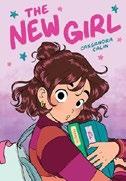
The angst and agonies of early adolescence are magnified when you’re the new girl. Twelve-yearold Lia Iordache experiences the excruciating pain of heavy cramps as she gets her first period at the airport shortly before the flight that will take her family on their emigration journey from Romania to Canada. They settle in Montreal, but Lia doesn’t speak French, and it’s hard to see how she’ll make friends at her new school. But as a member of the school’s immersion program for French language learners, Lia quickly learns that first impressions aren’t everything. Before long, she and her classmates find the rocky rhythms of tweens everywhere who are navigating schoolwork, extracurriculars, friendships, crushes, rivalries, and
changing bodies. While Lia certainly feels the stigma of being the new girl, this work is a gentle exploration of what could be a devastating time. The adults in Lia’s life are generally kind and supportive, and her diverse classmates from around the world ultimately make the experience of integrating into a new environment positively delightful. If only all middle school students had such a class! Calin’s illustrations flow effectively and provide humor; her text bubbles also creatively visualize, through color coding for different languages and scribbles to represent French words Lia can’t understand, the process of acquiring a new language. A few loose narrative threads and a relatively abrupt ending hint at future installments. Fans of Raina Telgemeier, Victoria Jamieson, and Svetlana Chmakova will rejoice. Funny, awkward, and exuberant. (glossary) (Graphic fiction. 8-12)
Camacho-Church, Adriana
Illus. by Carmen Lop | Piñata Books/ Arte Público (32 pp.) | $18.95 May 31, 2024 | 9781558859890

In this bilingual story told in English and Spanish, a child sees magic, beauty, and wonder in a beloved grandmother’s hair. The child loves Grandma’s flowing, ankle-length black-and-white tresses and imbues them with magical qualities, comparing them to “a towering waterfall tumbling down a mountain,” the moon, and the wings of a dragonfly. One image depicts Grandma’s hair spreading against the night sky, the strands wrapping around the moon; another depicts her hair as a field of wildflowers. In the
eyes of her adoring grandchild, Grandma seems like an otherworldly goddess. Eager to inherit Grandma’s confidence and power, the child asks, “Will my hair have stories to tell?” “It already does,” Grandma responds. “It holds the whispers of your ancestors.” Beauty, the story suggests, is not just an external quality; rather, it’s the love and kindness that shine out from deep inside. This lyrical story makes clear that self-love can be passed down and taught through generations. With time and encouragement, young people can become as strong and powerful as those they admired when they were young. Vibrant and expressive illustrations filled with swirling, vivid linework emphasize the bonds between family members and make references to Mesoamerican ancestry and gods. Both characters are brown-skinned and cued Latine.
A gentle lullaby: poetic, sweet, and moving. (Picture book. 4-7)
Capetta, A.R. | Illus. by Charlene Chua Candlewick (96 pp.) | $16.99
May 28, 2024 | 9781536224924
Series: Hocus and Pocus, 1

Two pups seek their forever home. Jinx, a friendly witch, finds an abandoned litter of precious—and “slightly magical”—puppies and takes them to the Shelter for Slightly Magical Pets, where they’ll find homes with witches, wizards, and warlocks. The middle pups—Double, Toil, and Trouble—are quickly adopted. But the oldest, Hocus (who can see two minutes into the future), and Pocus, the youngest, who can make bad feelings disappear, refuse to be separated and so have a harder time finding homes. When Jinx decides to help them by making a potion that will guarantee that they’ll be
adopted, the pups plot to modify it to ensure they’ll both go to the same owner. They sneak into Jinx’s bag and secretly go home with her. Hocus usually leads the way, but now shy Pocus must keep Hocus, who’s more interested in meeting new friends, on track. Things go awry—will their plan work? This lively chapter book is engaging, with unexpected and entertaining developments. A few words such as unacceptable, dueled , and cauldrons add a bit of a challenge. The colorful, cartoonish illustrations add verve and unquestionable cuteness. Brown-skinned Jinx wears glasses and has rippling raspberrycolored hair; she states her pronouns before introducing herself to the pups, as do other characters. These magical, mischievous pooches prove irresistible. (Chapter book. 5-8)
Casimir, Arlène Elizabeth | Illus. by Ken Daley | Candlewick (40 pp.) | $18.99
April 23, 2024 | 9781536223200

A young girl reflects on her father’s memories of Haiti.
Lune loves hearing Daddy’s stories of his homeland. He tells funny tales about falling out of a mango tree, insightful tales about the medicine man who knew just what sickly children needed, and poignant tales of a young boy dreaming of a new life. But now Daddy works extra shifts so the family can save up for a new house and so Daddy can send money back to relatives in Haiti. Lune stays up extra late one night and sees Daddy as he’s coming back, and he tells her a story before sending her back to bed. The next morning, inspired, Lune resolves to tell her own stories. Suffused with color, each page teems with life and verve, weaving stories together across place and time. Many of the tales begin with “lakay” (Haitian Creole for
“back home”) or “krik!” “krak!”
Some are tinged with sorrow, as when Daddy recalls his own father’s garden, before Hurricane Flora washed away the vegetables and flowers that grew there. Though Lune has never been to Haiti herself, Casimir and Daley make clear that stories have the power to transport; as Lune says, “It’s like we’re looking in a mirror that takes both of us back home.” Readers who have deep roots in a familial homeland they’ve never visited will feel buoyed.
A feast for the eyes and the spirit. (glossary, author’s note for caregivers and parents, author’s note for kids) (Picture book. 4-8)
Chan, AY | Aladdin (288 pp.)
$17.99 | June 4, 2024 | 9781665937320
Series: The Legendary Mo Seto, 1
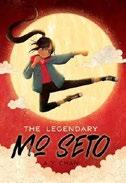
A 12-year-old Chinese American girl discovers an ancient martial arts book that could make her dreams come true.
Modesty “Mo”
Seto has dreamed of finally winning a taekwondo tournament and making her father—her biggest supporter—proud. But at her latest tournament, she loses to her archrival, Dax Washington, just as her dad heads out to take a phone call. If only she were stronger, faster—and taller than 4 feet, 6 1/2 inches. When Mo discovers that her martial arts idol, Cody Kwok, is holding open auditions for his latest film, The Protégé, she knows this could be her moment. She might be able to finally beat Dax and show the world that her height doesn’t define her abilities. After finding a book in her basement depicting Xiăoxi Fu, a secret martial art, Mo trains to set herself apart from her competition with the help of her best friend, Ignacio “Nacho” Garcia. As she learns more of this ancient, dancelike
style, strange things begin to happen. Mo’s father vanishes, someone seems to be sabotaging the auditions, and a mysterious figure starts to follow her around. Chan has created a brave, athletic girl whose realistic struggles with her identity and what she’s capable of will resonate. Readers will find themselves rooting for Mo’s success and enthralled with the relatable characterization that fills the pages.
An exciting mystery-adventure story that packs a punch. (Adventure. 8-12)
Chavez, Sarah | Illus. by Annika Le Large Neon Squid/Macmillan (64 pp.) | $14.99 March 5, 2024 | 9781684493753
Series: We Need To Talk About
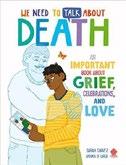
An overview of select funerary practices and customs worldwide, offered in hopes of giving bereaved young readers some comfort or perspective.
Introducing herself as a “psychopomp,” or spirit guide for her (living) readers, Chavez opens with soothing remarks about how death is a part of life. She quotes an expert’s savvy insight that grief can’t be “fixed” but with sympathetic help can be “carried.” From there, she touches on a series of helpful, informative topics from funeral home embalming and the stages of physical decomposition to food, flowers, and festivals
associated with funerals, as well as memorials of both the physical and virtual “necrotech” sorts. Her wide-ranging discussions of burial practices “green” and otherwise include descriptions of cremation, composting, and aquamation: “People are always inventing ways to make death care more meaningful, accessible, and environmentally friendly.” If some of her glancing claims about many beliefs and practices tend toward the general—“special devices” delivered “libations” to the dead in ancient Rome—they may spur readers on to further research. Sharp comments about archeological grave robbers and racially segregated cemeteries, for example, serve as occasional reminders that the topic has controversial issues. In brightly hued cartoon images, Le Large scatters a racially and culturally diverse cast of corpses and survivors, along with death-related artifacts from hearses and caskets to columbaria and catacombs.
Likely to help normalize a universal experience. (glossary, index) (Informational picture book. 7-10)
Crespo, Ana | Illus. by André Ceolin
Neal Porter/Holiday House (32 pp.)
$18.99 | June 25, 2024 | 9780823452293

A mother and child navigate the depths of memory amid the beauty of a picturesque wood.
Every time the two of them hike together, the mother whispers, “Que
Readers who have roots in a homeland they’ve never visited will feel buoyed.
In her debut children’s book, the author and illustrator asks kids to pay attention to the everyday.
BY CHRISTINE GROSS-LOH
THE PROTAGONIST OF Magnolia Wu Unfolds It All (Philomel, April 23) is a 10-year-old Chinese American girl living in New York City whose parents own a laundromat. During summer vacations, she stays in the city while her classmates go to summer homes or on vacation. This year, though, she meets a Vietnamese American girl her age, Iris Lam, and together they decide to search for the owners of all the stray socks that have accumulated at the laundromat. Miller’s charming illustrations add dimension to Magnolia and Iris, the people they encounter, and the lively, riotous city environment that surrounds them. This is Miller’s debut middle-grade novel. Her first book was the award-winning memoir Know My Name (2019), a powerful account of her sexual assault—and its aftermath—while a student at Stanford University. Kirkus recently spoke with Miller via Zoom from Los Angeles; this conversation has been edited for length and clarity.
What inspired you to write this story?
I was living in New York during the pandemic and was always excited to run errands, because it was my one opportunity for social interaction. I remember how exciting it was when people at the post office, at the laundromat, or at the grocery store started registering my reoccurring presence and asking my name. Something about experiencing that while living in a big city was so existence-affirming, because these people
made me feel like I was not just an ant—that they cared about my well-being and wondered where I was when I wasn’t there. I wanted to emphasize how life-sustaining these interactions can be.
I love how you write about the wonder to be found in the ordinary.
I really want to encourage kids, especially, to pay attention to their daily lives, to learn that adventure isn’t out there, far away. You don’t have to wait until you’re grown up for

adventure. Your daily life is extremely rich. What I love about this story is that Magnolia doesn’t go on a grand adventure; [instead] she unlocks a new layer of all these people she already knows. She’s still in her ordinary life at the end, but it’s transformed, and that’s the reward.
Which characters did you relate to most, if any? Magnolia embodies some of the characteristics I love most about my younger sister. She has this decisiveness, and as soon as she decides to do something, she acts on it. Whereas for me, I really marinate and dwell and think about all the options; it takes me a really long time to take action. I identify more with Iris. I love that Iris is the support-
er while Magnolia is really willing to make decisions and go. Iris is not as vocal; maybe when you meet her for the first time, you won’t get a clear read on her personality. But it’s very clear that she’s paying attention. It shows through little details, all these little gifts she accumulates because she cares a lot for people but has a quieter way of communicating that care. I think that’s me.
Your talents are so broad, both as an artist and as a writer of creative nonfiction and children’s fiction. When did you first know that you wanted to be an artist and a writer?
Ever since kindergarten, I’ve loved writing and drawing. We had to make postcards, and I drew a postcard of a poodle
You don’t have to wait until you’re grown up for adventure. Your daily life is extremely rich.
surfing. There it was, a poodle in the water, and I wasn’t copying that from anything. I remember how impressed [the other] kids were, and I thought , I can do this . I was also drawn to stories. I was always writing, and I still have so many notebooks from my childhood. I was repulsed by math.
Since [that time], I’ve just been plotting: How do I draw and write more and do less math? Then my grandma took me to a book signing by Remy Charlip, who wrote Arm in Arm, and that was the first time I understood that human adults were creating these books. Until then, books had seemed like something that just existed, like apples, like objects I just got to interact with. That was unbelievable for me. Suddenly [I saw] a human
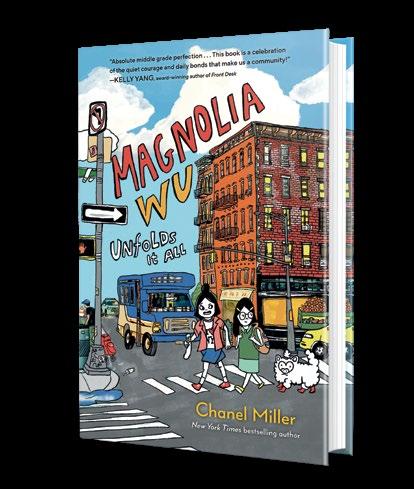
Philomel | 160 pp. | $17.99 April 23, 2024 | 9780593624524
form that I could embody someday; I would just have to grow up a little bit more.
My second grade teacher, Mrs. Thomas, also encouraged us to write books, and then she laminated our covers. These were legitimate books she was producing, books that we could read, that my parents came in and read. I think that’s when I was growing into my own consciousness that I really could become a writer full time.
How did working on your memoir figure into your development as a writer?
Writing the memoir was a product of responding to life. [Sometimes life] is so intense that the only way I can move forward in my own existence is to process what’s happened. And when I look back, my
and reflect on what feels monumental to you—not just external milestones like your graduation. When do you feel the most successful—and not just when successes are imposed upon you?”
I’d always thought I’d have to be much older and more seasoned to write something like a memoir. But that’s not true. [Anyone’s] experiences are so rich, and people want to hear about them.
favorite part about writing the memoir was being able to highlight really miniscule moments from my daily life.
I had a scene where an older man shared a bell pepper with me on a park bench. The scene is about trust. But because I was [involved] in this public case that was in the news, it felt like so many people had an idea of what moments were most important and formative in my life—dramatic moments, those were the moments [that were] reported on. But I actually had so many sacred, private, nourishing moments of my own that I wanted to highlight.
I think it’s important to bring attention to the everyday and ask kids—I ask a lot of university students this, too—”What moments are most important to you? Really sit down
What did you love most about Magnolia’s story? What I love is that the story ended up being about the combination of effort and chance. It was all about Magnolia’s willingness to go out into the world; all she needed was one sock to begin the journey. Like Iris said, you don’t need the answer; you just have to begin.
That applies to writing, too. I don’t know where this project is going to end. I don’t know how many copies will be sold. All I know is that I had this idea. And I wanted to begin. It began with a penguin sock I saw in my laundromat. And I love that it started so small. [The story shows] motivation and desire, but there’s not a lot of attachment to outcome. Outcome is determined by the natural propulsion of the universe and is a result of different relationships and conversations happening. I love that combination between effort and chance because I think it applies to everything that we do.
Christine Gross-Loh is the author of Parenting Without Borders and The Path.saudade!” At first the young narrator is hesitant to ask what it means. When the little one finally asks, Mamãe tries to put the feeling into words to help the child understand. She describes a sense of nostalgia and the memories that bubble up when scents, feelings, or places remind her of growing up in Brazil. Saudade is “a strong longing for something you can’t have.” While Mamãe enjoys reminiscing, she also feels heartache; she misses her homeland and loved ones. The child remembers a recent visit to Brazil, where the little one had fun adventures, hiking with cousins and swimming with grandparents. But now the child must use a laptop to communicate with those relatives. Memories are bittersweet when family members are so far away. The term “saudade” lets the little one name the feeling, and while these emotions are painful, they help the child feel connected to culture and family. Softly rendered digital and watercolor illustrations aptly bring to life the fond memories recalled throughout the story, while the text exudes tenderness. In an author’s note, Crespo discusses this Portuguese and Galician word further and speaks to her experiences as a Brazilian immigrant. Mamãe and the child have tan skin and brown hair; a broad range of skin tones are depicted throughout. A poignant exploration of longing and connection. (Portuguese glossary) (Picture book. 5-9)

For more by Ana Crespo, visit Kirkus online.
Crowley Redding, Anna Illus. by Robbie Cathro | Candlewick (208 pp.) | $17.99 | May 24, 2024
9781536213416 | Series: The Danger Files
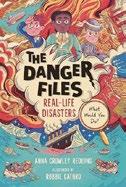
Fact-file inserts and eyewitness accounts help readers understand the causes, courses, and aftermaths of five historical calamities. Confirmed disaster fans will likely already be familiar with the examples Crowley Redding has chosen, but they’ll be pleased with her selection. The disasters vary widely in type and scope—the flu epidemic of 1918 killed roughly 50 million people worldwide, whereas 21 people died in Boston’s Great Molasses Flood of 1919—and for each catastrophe, the author includes a broad assortment of background facts and accounts of actual young survivors, such as Werner Franz, a cabin boy aboard the Hindenburg. Along with systematically analyzing causes and long-term effects, Crowley Redding highlights the impact of anti-immigrant prejudice in both the Great Chicago Fire (no, Mrs. O’Leary’s cow wasn’t the culprit, contrary to a news story that stoked anti-Irish, anti-Catholic sentiments) and the sticky flood in Boston’s North End. She also profiles rescuer Anna Elizabeth Hudlun, the “Fire Angel” of Chicago, as well as other Black people involved in the catastrophes. Though the occasional demonstrations of such topics as freezing chemistry and static electricity are woefully perfunctory, the blow-by-blow narratives make for absorbing reading, and the substantial bibliography at the end should please
even the most demanding young documentarians. Final art not seen. Catastrophically engrossing. (source notes, index) (Nonfiction. 10-12)
Daywalt, Drew | Illus. by Mike Lowery
Clarion/HarperCollins (224 pp.) | $15.99
June 4, 2024 | 9780358612902

A dog who sees the world th rough his own unique lens battles evil forces to protect his newfound family and inadvertently succeeds.
In a “Dear Diary” format, Sam the pug relates his adventures over the course of 20 eventful days, during which he runs away from “naked-monkey-thing” owner Mike, ends up at the shelter, and gets adopted by the Peterson family, who have a 12-year-old son named Justin. Meanwhile, Sam is suspicious of Justin’s new friend, Phoebe, but perceives actual villains Drago and Grisha as his friends, even though they’re trying to steal the Peterson parents’ lab secrets. Many of Sam’s fears will be humorous to readers, such as the “deadly assassination robot” (the vacuum) and the Ghost Wolf (Sam’s own reflection in a sliding glass door). No matter how misguided and oblivious he is, Sam’s heart is in the right place, however, and he manages to protect his family. He’s also able to smell people’s emotions, knows when Justin is lonely, and tries to be a good companion. Readers will find plenty of humor—and a few gross-out moments, as when the Petersons’ cat makes “little snack treats” in his “magic sand oven.” The grayscale cartoon illustrations throughout are especially funny and often spotlight the difference between Sam’s worldview and reality. Most main characters read white; the bad guys are coded as Eastern Europeans who speak a language other than English.
Silly, swift, and a surefire success. (Adventure. 8-12)
Dentler, Minda | Illus. by Stephanie Dehennin Sourcebooks eXplore (48 pp.)
$18.99 | March 5, 2024 | 9781728276533
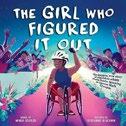
An Indian American polio survivor explains how in 2013 she became the first female wheelchair athlete to complete an Ironman World Championship.
Born in a village near Mumbai, Dentler contracted polio before her first birthday; her legs were paralyzed. Unable to afford her care, Dentler’s loving single mother put her up for adoption. Adopted by an American couple, Dentler moved to Spokane, Washington. She endured multiple surgeries, and her adoptive parents encouraged her to achieve seemingly impossible goals, such as learning to walk with crutches and leg braces: “You can do it...Just figure it out.” But classmates sometimes excluded and taunted her because of her mobility aids and dark skin. Undaunted, Dentler grew up to accomplish much, including backpacking solo through Europe and becoming a White House intern. But ultimately, she wanted to be an athlete. After practicing handcycling, she competed in the New York City Marathon and, feeling “unstoppable,” set her sights on triathlons. Dentler tackled difficulties, such as learning to swim and adjusting to a racing wheelchair. She follows disappointments, such as being disqualified at her first Ironman attempt, with refreshingly concrete details of how she trained harder and, above all, believed in herself, punctuated by the refrain: “Just figure it out.” Ultimately, she completed an Ironman in Kona, Hawaii, swimming, biking, and running 140.6 miles. Dehennin depicts Dentler’s endeavors with bright hues and vivid expressions; fluid curves impart a sense of motion.
An uplifting ode to persistence. (author’s note, information about polio and wheelchair sports) (Picture-book memoir. 6-8)
Downing, Erin Soderberg | Scholastic (256 pp.)
$26.99 | Feb. 6, 2024 | 9781338851304
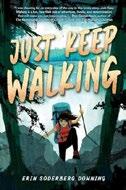
A two-week mother-daughter backpacking trip on Minnesota’s Superior Hiking Trail brings both insight and misery.
Twelve-yearold Jo was looking forward to a promised backpacking trip with her father, when he abruptly abandoned the family for another woman and her children. Jo’s mother, newly divorced and unhappy—and not a hiker—nevertheless gamely volunteered to make the trek with Jo. As the two inexperienced hikers set out with everything they need in heavy backpacks on their backs, Jo’s primary motivation is to go farther than the 100 miles that her dad hiked with Jake, her older brother, when he was 12. Authentic in its depiction of the exhaustion, blisters, wrenched knees, boring dehydrated food, gross latrines, and wildlife dangers that make up a multiday backpacking adventure, the story also deftly contains a nuanced storyline as Jo struggles with not only her physical discomfort but her emotional discomfort as well. She lacks confidence in herself, feels she needs to protect her overwhelmed mother, and has deeply conflicting emotions about her dad. Jo’s love of
reading (she brings The Hobbit with her, and other classics feature in the plot) gets a clear shout-out, and her sometimes funny, sometimes gritty, and ofttimes just plain miserable outlook avoids giving the neatly wrapped-up insights a preachy feel. Jo and her mother read white; important secondary characters include an interracial lesbian couple.
Nimbly plotted and deftly insightful. (maps, author’s note, glossary with photos) (Fiction. 9-12)
Durfey-Lavoie, Lee | Illus. by Veronica Agarwal | Random House Graphic (320 pp.) | $22.99 | June 4, 2024
9780593125519 | Series: Just Roll With It, 2
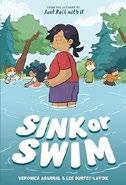
Camp was going to be amazing for Tyler de Lugo and his best friends, Max and Heather Allen, in this stand-alone follow-up to Just Roll With It (2021). But then Ty broke his arm and missed an entire season as captain of the swim team. Afterward, Ty ghosted the siblings, so their arrival at Silver Falls is fraught with hurt feelings. Ty, who has brown skin and wavy black hair, can’t bring himself to go in the water, let alone participate in a swimming competition. Yet camp also brings Ty a new group of friends and advice from a quirky counselor. He hunts for bugs and develops an interest in tabletop role-playing games. Ty, along with Max and Heather, who have light skin and red hair, take on the challenge of building a canoe
A two-week mother-daughter backpacking trip brings both insight and misery.
from scratch. All these experiences buoy him as he feels like he’s drowning, but Max’s forgiveness is still in question—and so are the feelings of Ty’s secret crush. Agarwal’s loose designs and casual, sketchy, bright style express both poignancy and humor, and her characters’ facial expressions are adorable. Ty’s overwhelming feelings of depression are shown by waves washing over him and blurred text in speech bubbles. After his injury and subsequent weight gain, Ty’s self-loathing is clearly evident, but readers may be left wanting a stronger impression of who he is outside of his struggles. Earnest summertime adventures and lessons on self-love. (Graphic fiction. 9-12)
Ebrahimi, Payam | Illus. by Reza Dalvand
Trans. by Caroline Croskery
Greystone Kids (40 pp.) | $18.95
April 2, 2024 | 9781778401190
Series: Aldana Libros

A black sheep makes his mark. Abtin Moleski’s an anomaly in his family. His forebears—whose stern-faced, medal-draped portraits hang on the walls—were trophy-winning athletes, while Abtin’s poor at sports and doesn’t care about winning. And unlike the other Moleskis, Abtin doesn’t have a mole above his upper lip. Abtin’s father reminds him that he must train, win trophies, wear a gold medal around his neck, eat certain breakfast foods, and sleep, dream, and walk in a prescribed manner. Throughout, the hyperbolic illustrations highlight the stark comparison between diminutive Abtin and his overbearing, glowering, red-faced father. But Abtin’s brushes, paints, and easels make clear his talents lie elsewhere. Troubled, Abtin wonders how to please his father. Finally, he has the solution. Wielding a red-saturated paintbrush, Abtin
turns the scowls on his ancestors’ portraits into red smiles; acquiring a mole takes only a daub of black paint. Translated from Farsi, this reassuring, quirky tale mocks outrageous parental demands. Kids will chuckle at the conclusion; those whose parents have high expectations will recognize that the comic, over-exaggerated illustrations are sardonic commentaries. Readers will appreciate self-confident Abtin, an actual champ because he recognizes his own worth and, as an artist, creatively “fixes” his humorously outrageous situation. Abtin is light-skinned and dark-haired, while his family members vary in skin tone; at times, characters are depicted with fancifully red hues. A winning reminder that those who believe in themselves are true champs. (Picture book. 5-8)
Erlandsson, Karin | Trans. by Annie Prime Young Dedalus (252 pp.) | $12.99 paper
June 6, 2024 | 9781912868735
Series: Song of the Eye Stone, 1

A child with a special gift comes between two rivals searching for a cursed stone that grants wishes in this award-winning series opener from Finland that’s been translated from the original Swedish.
Pearl diver Miranda, who lost an arm to a rose-shark when she was 11, becomes utterly obsessed with finding the elusive eye stone, much like her long-gone parents and many others. Syrsa, a similarly abandoned child
who’s also missing an arm thanks to a shark attack, tags along willy-nilly. At first, Syrsa only seems like an annoying obligation, but when the laughing, cheery urchin turns out to have a rare ability to hear the pearls (and perhaps the eye stone itself), their seagoing quest takes on the character of a frantic flight as Miranda tries to keep her young charge out of the clutches of Iberis, a scary, ruthless, relentless stranger who’s even more bent on securing the prize. The pearls in this world do not come from oysters but are precious items of various colors, formed from mud, guarded by sharks, and scattered along riverbeds and seabeds. Syrsa’s sometimes comical stream of chatter gradually breaks down Miranda’s stiff-necked reserve, such that by episode’s end, their relationship has become closer and warmer. The quest is also transformed, but only after a separation and a mutual rescue that comes at a devastating cost. Characters read white. A sturdy start, with adventure, heartbreak, and touches of magic. (Fantasy. 9-12)
Erlandsson, Karin | Trans. by Annie Prime Young Dedalus (312 pp.) | $12.99 paper June 6, 2024 | 9781912868742
Series: Song of the Eye Stone, 2

The scarily unstable possessor of a stone that grants wishes threatens an entire realm in this second volume in the Song of the Eye Stone quartet from Finland, which is translated from Swedish.
A sturdy start, with adventure, heartbreak, and touches of magic.
THE PEARL WHISPERER
In an entry whose events at times feel too convenient, flocks of suddenly savage birds menace former pearl fisher Miranda (who lost an arm to a shark) and her young charge, Syrsa, as well as the inhabitants of the northern coastal town they now call home. The normally timid dagpies turn out to be commanded by Iberis, a cruel foe who’s using the wish-granting eye stone that the girls have sought to direct both the birds and a cohort of brutal minions. Iberis’ forces are terrorizing the inhabitants of the Queendom; the only hope is that the Queen and her army in the capital will continue to hold strong and save the day. Miranda, who now works as a woodcutter, is tough-minded enough to only be delayed in pulling off a rescue after being paralyzed from the neck down in a bird attack. With aid from Syrsa (who also lost an arm to a shark when she was a toddler), Miranda recovers sufficiently to use Iberis’ own power-hungry behavior against her before setting off in pursuit of the eye stone once Iberis retreats. Get set for a race in volume three, The Scaler of the Peaks . The characters are pale-skinned. A sequel marked by escalating stakes and terror. (Fantasy. 9-12)
Erlandsson, Karin | Trans. by Annie Prime Young Dedalus (264 pp.) | $12.99 paper
June 6, 2024 | 9781915568144
Series: Song of the Eye Stone, 3

The search for a wishing stone takes three searchers deep into a mountain’s mines and caves.
The eye stone, “the mother of all pearls,” will satisfy one’s desires, but it also bears a curse: It’s said that those who seek it will be consumed by this goal, just like the parents of traveling companions and former pearl fishers Miranda and Syrsa. As the only one
who can hear the fabled pearl call out from where it’s been hidden by Iberis, its evil possessor, Syrsa leads the way through a dark tangle of tunnels and caverns as Miranda and medicine woman Lydia struggle to keep up. They must barter for supplies from the mountain’s residents. Meanwhile, deeper struggles are brewing: Lydia and Syrsa seek the stone to destroy it, but though she denies it to herself, Miranda is consumed with a burning desire to own and use it that sometimes seems stronger than her love for Syrsa. Erlandsson’s worldbuilding and the characterization of the supporting cast are just sketched out; the plot has slow stretches, too. Still, as a narrator Miranda continues to be refreshingly prickly, and despite heartbreaking events, the climax sets up terrible conflicts to be resolved in the next and final volume of this quartet from Finland that’s been translated from the original Swedish. Both Miranda and Syrsa lost an arm to sharks when they were younger; the cast is cued white. Moves the quest along, notwithstanding a mild case of middle-volume-itis. (Fantasy. 9-12)
Erlandsson, Karin | Trans. by Annie Prime Young Dedalus (204 pp.) | $12.99 paper
June 6, 2024 | 9781915568359
Series: Song of the Eye Stone, 4
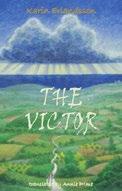
The elusive magical stone at last comes into the hands of those who have most desired it.
Taking on a vaguely metaphorical cast, the four-volume
quest, translated from the Swedish-language original from Finland, at last brings tough, grieving Miranda and beloved young charge Syrsa to the pearl-paved Queen’s City. There Miranda and Syrsa—both pale-skinned former pearl divers who have lost an arm each to sharks—witness how intense longing for the fabled stone has warped their Queen, their raving nemesis Iberis, and all those who have abandoned homes and families over the years to join obsessively in the great hunt. When they finally see the pearlescent prize (which supposedly grants all desires), the interested parties must confront their consuming desire to possess it, an obsession cast in a new light by the pearl whisperer Syrsa’s cleareyed perception and conviction about the harm it does. Her steadfastness causes most adults to rally around her in support of the eye stone’s disposal, although some are too far gone to shake off its grip. Readers who seek robust, detailed worldbuilding may be disappointed by some loose ends and the ultimate lack of explanation of just what the eye stone and smaller pearls are made of. Those of a more philosophical bent will appreciate the exploration of Miranda’s observation that “desire can be a good thing, but not when it becomes so great that you lose sight of everything else.”
A quest to save the world from unbridled greed comes to a close.
(Fantasy. 9-12)

A strikingly original look at a most unusual marine creature.
Esbaum, Jill | Illus. by Bob Shea
Putnam (32 pp.) | $18.99
May 7, 2024 | 9780593532010

What makes the parrotfish so special?
The creators of Stinkbird Has a Superpower (2023) have produced another informative, funny, and engaging tale centered on a bizarre animal fact.
Boastful Parrotfish really wants to tell a hammerhead shark about its superpower, but the shark keeps interrupting. Parrotfish builds suspense by revealing other fun facts: Some parrotfish sleep in a mucus sac; they have about 1,000 hard teeth, which resemble a beak; they eat algae and polyps; and they have even more teeth in their throats! As amazing as these facts are, however, they aren’t the parrotfish’s superpower. Finally, our hero points out a sandy shore and says, “Guess who made that beach? Me!” The shark is skeptical (“You’re saying you eat coral, then poop it out as white sand…Which washes ashore….And becomes that beach?”), surprised, and finally impressed— and, as he demonstrates that he has a useful ability of his own, a friendship is born. As in Stinkbird , Shea’s colorful cartoon illustrations add greatly to the humor. Dramatic expressions and body language convey emotion, and the backgrounds provide a reasonable sense of the animals’ habitat. Parrotfish is bright eyed and vibrantly colored; the shark shows off sharp teeth. Colorcoded speech bubbles convey the characters’ conversation, making it easy to identify who’s saying what.
The lively presentation and ick factor make this a winner. The beach scene depicts racially diverse humans. A strikingly original look at a most unusual marine creature. (list of true/ false statements about parrotfish) (Informational picture book. 4-7)
Fang, Vicky | Candlewick (96 pp.)
$16.99 | June 4, 2024
9781536229691 | Series: Ava Lin, 1

Ava is ready to find her best friend! Six-year-old Ava Lin has the best snacks for lunch, pockets filled with treasures, and a list of 117 animals that might make a good pet. She does not, however, have a best friend. Luckily, she can look to her cousin Nikki for guidance; Nikki met her best friend in first grade, and as a fifth grader, she now has someone who’s always there for her. As Ava gets ready for her first day of first grade, she knows that she’ll find her best friend this year, just like Nikki. At first, things go well. Ava is seated next to generous Kushi, whose backpack features a picture of a fox (Ava loves foxes!). Then things take a turn. The rules of friendship are hard to decipher, Ava upsets her mom when she leaves a crayon in her pocket and ruins the laundry, and she makes a mistake that necessitates a trip to the doctor. Though Ava is realistically impulsive, she’s also emotionally perceptive and creative, both qualities that help her find solutions to her problems. Told
through a combination of prose and grayscale illustrations (some in graphic novel–style panels), Ava’s story is a wonderful combination of laughs and drama that will keep young readers engaged—and eager to read future books in this new series. Ava and her family are of Chinese descent, while the artwork depicts Kushi as darker-skinned than Ava; other characters are illustrated with a range of skin tones.
A funny, charming series opener. (Chapter book. 5-8)
Fawcett, Heather | Rocky Pond Books/ Penguin (176 pp.) | $17.99
May 28, 2024 | 9780593530559
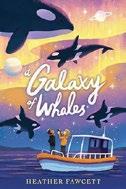
Eleven-year-old
Fern’s summer is full of surprises and change. Fern’s father, who died three years ago, was a professional photographer who helped her discover that she could capture the world any way she wanted. Now she has her sights set on a local photography contest. To Fern’s dismay, her classmate Jasper wants to win the contest, too. Their parents run rival whale watch businesses, and the two families are “mortal enemies.”
Meanwhile, Fern feels frustrated that she’s drifting from her best friend, Ivy. To make Ivy jealous, Fern asks Jasper to team up on the photography contest and finds her world expanding. Fern’s grandfather takes the pair out on the family’s boat, the Zenith, to observe a pod of orcas; later, when the kids learn that one of the orcas has had a calf, they become determined to get a photo. When Ivy does something that devastates Fern, Fern impulsively heads out on the Zenith —a night that winds up being both frightening and oddly comforting. Fawcett gracefully blends the immediate experiences of her awkward but determined protagonist
with a warmhearted, humorous look at a small Salish Sea community. She effectively draws parallels between Fern’s sadness at the realization that Ivy has moved on from their friendship and a great loss experienced by the orca pod. Jasper’s mother is described as having brown skin; most characters read white.
Funny, tender, and engagingly poignant. (author’s note) (Fiction. 9-12)
Finan, Sarah | Candlewick (32 pp.)
$17.99 | June 18, 2024 | 9781536227703

A primer on goggles, helmets, and other safety equipment.
“What do we wear when we need to take care?” asks Finan. Using minimal text and vibrant art, she explains that “sometimes we wear helmets to protect our heads in case things clatter, clonk, bump, or crash!” Action verbs are large and bold against backdrops of helmeted adults doing construction work and helmeted children using skateboards and other vehicles—including a wheelchair—at a skateboard park. The child who’s just fallen off a bike is obviously not badly hurt, and the other characters are smiling and cheery. The text continues with other safety gear: “headphones to protect our ears from sounds that boom, rumble, bang, or whiz,” “goggles to protect our eyes from things that fizz, spark, splish, or splash,” and “masks to protect from germs when we ahhh, achoo, cough, and chatter.”
Finan’s minimal yet energetic text conveys information effectively; it’s easy to imagine preschoolers acting out the text, using safety equipment as props. For each piece of equipment, we see adults and children alike at work and at play. Dynamic hand-painted, digitally colored art uses a pleasing palette of neon yellow and multiple shades of blue. People depicted are diverse;
laudably, we see adults of color in a variety of jobs, from beekeeper to doctor to firefighter. Rudimentary information in a perfect package. (Informational picture book. 2-5)
Flett, Julie | Greystone Kids (44 pp.) $19.95 | May 7, 2024 | 9781771646109

A young skateboarder rolls with the punches. Looking out the window, an Indigenous child watches a skateboarder roll past every day and imagines “riding…on the path that winds like a river.” Mom gives the young narrator her old skateboard, and the little one eagerly tries it out at the playground, the basketball court, and Auntie’s place. Like any novice skateboarder, the child takes a few tumbles; developing skill, coordination, and balance requires lots of practice. Finally, the protagonist is ready to hit the skatepark. Watching a “waterfall of skateboarders crashing down,” the child is initially intimidated. After the protagonist befriends several other new and uncertain skateboarders, they all gain enough confidence to take part. As time goes by, they motivate one another, forming tightknit bonds and encouraging other newcomers. Lacing her spare text with onomatopoeia (“cacussh!” “swoosh”), Flett (Cree-Métis) captures the rhythm of skateboarding. Her signature minimalist illustrations brim with energy, immersing readers in the action of the park. Swirls of color fill the page as skaters whiz by. Throughout, the Cree phrase “haw êkwa! Let’s go!” punctuates the tale, each refrain encouraging the child to take action. The artwork depicts a racially diverse group of skaters.
An exhilarating story of discovering a unique passion and building a caring community. (author’s note) (Picture book. 4-8)
Fournet, M.R. | Feiwel & Friends (352 pp.) | $17.99 | June 18, 2024
9781250876041 | Series: Marius Grey, 2
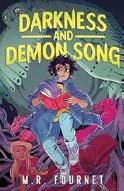
Marius was warned that people “don’t come back right” after they’ve died; his mom’s no exception.
Having saved his mom from Hell in Brick Dust and Bones (2023), Marius is glad to have her back and hoping for a return to normalcy—well, as normal as it gets for “fringe people” like monster hunters. But his mom suddenly isn’t doing so well; she’s sick, cold, and haunted by dark figures. Worse, though, are her odd behaviors and the gaps in her memory. It will take Marius’ support network and some new allies to unravel what’s happening to her and how to fix it. The hints and foreshadowing are well placed, and all have narratively satisfying payoffs. In a side storyline, Marius ponders the ethics of monster hunting—after all, his best friend, the mermaid Rhia, technically counts as a monster. Though some of the monsters he faces (such as demons) are purely predatory in an evil way, where does that leave the ones like Rhia? The variety of monsters in the story results in high-stakes action sequences. Throughout, the Deep South setting is as vivid and authentic as the interpersonal relationships, and many of the decisions characters make have to do with the bonds of trust (or lack thereof) among them. The resolution is hard fought, and the epilogue provides a sinister hint of what’s to come. A delightful deep dive into a swampy world of hunters and prey. (Horror. 9-13)

For more by M.R. Fournet, visit Kirkus online.
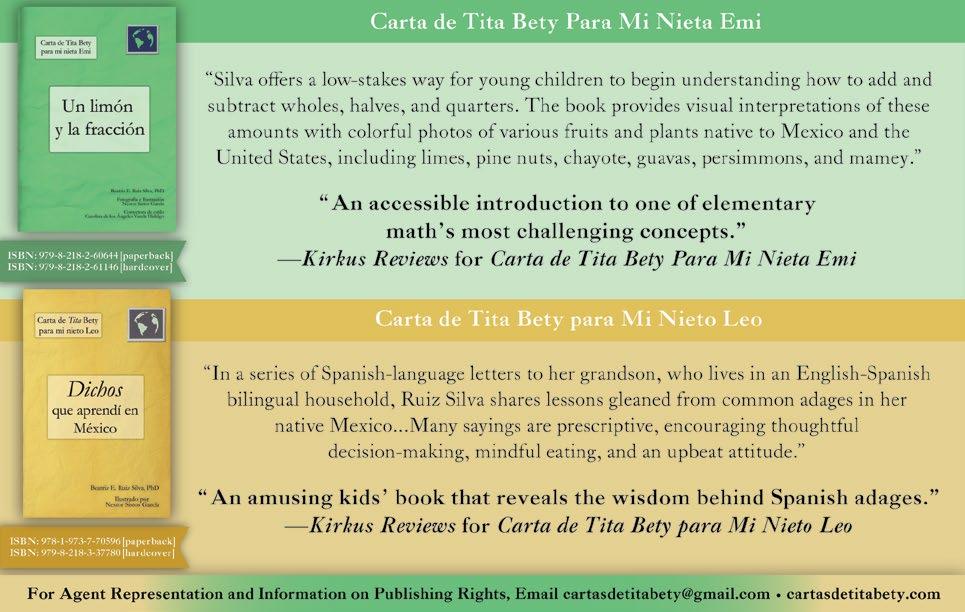

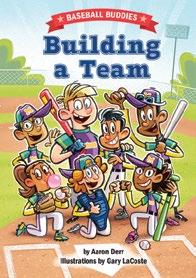
978-1-643712840

“Readers follow Luis as he learns leadership skills in a smooth, well-paced narrative that models good communication and perseverance.”
“A wonderful narrative for readers who love baseball that also offers valuable lessons to those who don’t.”
–Kirkus Reviews
“...an extremely fun, gripping story... with epic moments of baseball...” –Independent Book Review
“Whatever
your level of play, it’s a perfect tale of building a team”
–Scott Franzke, Philadelphia Phillies Play-by-play Voice

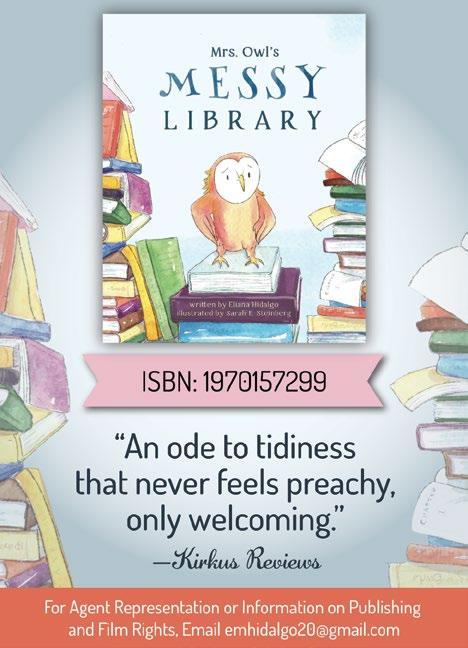
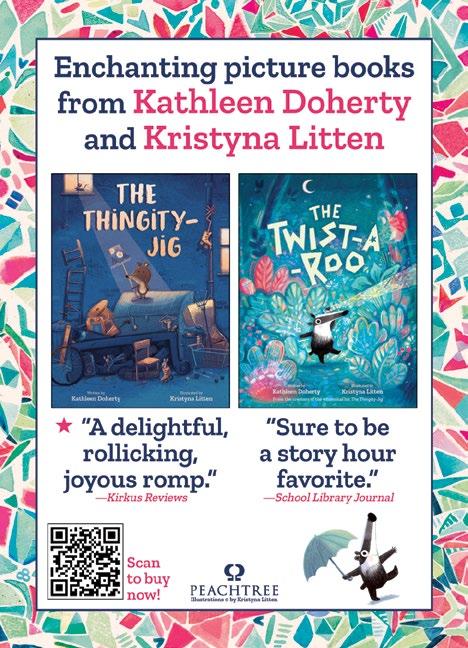
Frawley, Katie | Illus. by Alex Willmore
Flamingo Books (32 pp.) | $18.99
June 11, 2024 | 9780593620991
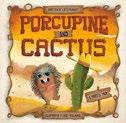
Sometimes the best friend is the one who’s willing to listen.
A friendly but solitary young porcupine rises. After saying good morning to the sun, sky, and dirt, this quirky youngster heads out in hopes of finding someone to talk to. What’s that in the distance? A cactus! Pleased to encounter “another spiked specimen” and eager to chat, our hero isn’t bothered by the cactus’s inability to respond. Perhaps the cactus is “the strong, silent type,” the porcupine hypothesizes. Bright, funny, cartoonish illustrations complement the bubbly text as the porcupine enjoys a picnic with the unresponsive cactus, performs magic tricks, and chats on, oblivious. When a bird lands on the cactus, the porcupine asks, “Aren’t you going to introduce me to your plumed pal?” But the bird flies off after pooping on the porcupine, and the protagonist is peeved: “First you won’t even talk to me, and now your friend is rude!” Will the chatterbox porcupine figure out that the cactus is unable to speak? Maybe not, but this cactus may be just what the porcupine needs, and maybe words aren’t everything, after all! Children will delight in the realization that they know more about the cactus than the porcupine does and will laugh out loud at the misunderstandings that ensue. A silly, entertaining tale of a very prickly friendship. (Picture book. 3-7)
Frawley, Katie | Illus. by Ben Mantle
Quill Tree Books/HarperCollins (32 pp.) $19.99 | May 28, 2024 | 9780063114234
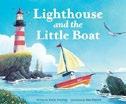
Perched in an idyllic harbor, Lighthouse keeps a watchful eye over all the ships that pass by. Along comes a young boat named Brightness, and Lighthouse has all the more reason to glow as she watches out for the newcomer. After a summer of testing nearby waters in the harbor, Brightness disappears, much to Lighthouse’s dismay. Seasons pass, and on a stormy night, Brightness finally returns, and Lighthouse guides the boat back to safety. “Even after I left you to see the whole wide world…you led me back home,” says Brightness. “That’s as it should be,” responds Lighthouse. Mantle’s illustrations are rich with bright nautical tones; characters are lightly anthropomorphized. Some scenes evoke emotion, especially the one depicting the thrashing, stormy waves, set against a vicious-looking night sky. Rich vocabulary (“rusty trawlers and stately sloops, crusty shrimpers”) might intrigue boat enthusiasts. Overall, though, the text is a bit wordy, and the story drags. Readers never find out where Brightness goes all autumn—a missed opportunity to add some drama or complexity to the narrative. Lighthouse serves only to support and calm her community; it’s a one-dimensional portrayal of caregiving, in the vein of Shel Silverstein’s The Giving Tree (1964) and other stories across the kid-lit canon. Sweet but underwhelming. (Picture book. 4-8)
Garyn, Alexandra & Bryan Reisberg
Illus. by Susan Batori | Random House (40 pp.)
$19.99 | May 7, 2024 | 9780593642917
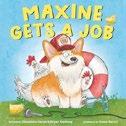
A young boat ventures off while a nurturing lighthouse worries and waits.
A corgi sets out to find the right career.
“Maxine had always known she was talented. She just didn’t know what her talent was.” Searching the internet, the perky pooch learns about dogs with jobs and decides to follow suit. First she talks to her best friend, Lady, who works as a lifeguard at the beach. Maxine is sure she could be the fluffiest lifeguard in the world—although she
forgets something important: her aversion to swimming. Next, she consults her friend Toby, a guard dog who watches over the chickens on a farm. Maxine is certain she could be the fiercest chicken protector on the planet…but the wolves laugh at her tiny, fluffy body and her less-than-impressive bark. Maxine considers her other working friends—Rosie the sled dog, Dale the racing dog—but knows she wouldn’t be well suited to those jobs, either. Then she realizes that they’re all doing what they love. What does Maxine love? She enjoys playing funny characters and shaking her fluffy butt… could that be a career? Turns out the answer is yes, and Maxine becomes a stand-up comedian! Based on the authors’ actual dog, who has a huge social media following, Maxine’s a winning protagonist who learns a sound lesson: Following your passion is a surefire recipe for success. Batori’s digitally created illustrations of adorable employed cartoon pooches are a perfect comedic match.
Doggie devotees will be clamoring for further adventures. (Picture book. 2-7)
Gigot, Jami | Paula Wiseman/ Simon & Schuster (32 pp.) | $18.99 May 21, 2024 | 9781665935128

It’s amazing what you’ll see when you step outside.
Whether you live in the country, the suburbs, or even the city, you’ll find plenty to explore in your backyard. There are forests to hike through (an accompanying image depicts a child gazing at backpackwearing insects journeying through the grass) and workers making their way through busy streets (a cutaway illustration depicts an underground city populated by ants). You’ll find mountains (a child stares at a pile of dirt) and oceans, too, courtesy of a kiddie pool. Music? Just listen to the birds singing in the trees. Waterfalls? Turn on the
hydrant in the summer. There are farms (community gardens), secret caves (tents made from quilts), and art galleries (sidewalk chalk drawings), too. When you think about it, almost any place can be a backyard—no matter where you live and regardless of the size of the space. As this story demonstrates, you don’t even need grass; all you really need are yards of imagination and a desire to see and do. And every backyard—no matter where—is filled with possibility. Sprightly, colorful digital illustrations and spare but stirring text brim with childlike creativity and wonder. Characters are diverse. There’s lots of fun to be had in your own backyard—and in this lively book. (Picture book. 4-7)
Gilbert, Leah | Bloomsbury (40 pp.)
$18.99 | May 14, 2024 | 9781547605620

A family takes a walk hoping to see bears but finds other treasures instead. Clad in a bear hoodie, young Bruin is desperate to see a real bear while he, his mother, and his baby sibling, Pip, are exploring the Bear Creek Trail. Along the way, Bruin finds pine cones, flowers, stones, and other bits of nature—but no bears. At least that’s what he thinks. Pip notices something that Bruin and Mama don’t: a bear and two cubs! The creatures are just a step behind the family on every page, carefully sneaking away objects dropped or accidentally left behind by the humans: Bruin’s telescope and Pip’s cup, for example. Though the family never actually has a bear encounter, readers will delight in noticing just how close they get to the animals throughout the walk. The illustrations completely sell the story, thanks to the sneaky bears, of course, but also details that adults will appreciate, such as Mama’s haggard, tired appearance when she finally gets two sleepy children home. The book celebrates the little pleasures of childhood, such as the joy to be found in a sparkly rock or a prickly pine cone. And
Recognizes—and creates—a little childhood magic.
preschoolers will love the realization that they know something the characters don’t. Mama and Bruin have light tan skin, while Pip has dark brown skin. Recognizes—and creates—a little childhood magic. (Picture book. 3-5)
Gutman, Dan | Illus. by Kelley McMorris Holiday House (224 pp.) | $18.99 June 4, 2024 | 9780823454846
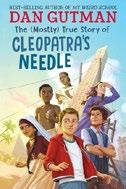
An unnamed boy could be watching the ball game but instead must sit in Central Park, listening to his professional storyteller mom spout facts about Cleopatra’s Needle. To pique his curiosity, Mom invents diary excerpts from five fictitious children whose lives intersected with the obelisk’s creation and journey. First, Zosar Zuberi, an enslaved Syrian boy in Aswan, Egypt, in 1461-1460 BCE, writes about the grueling labor required to cut the obelisk from a piece of granite. In Heliopolis in 1459 BCE, Lateef Jabari’s artistic dreams are realized when the pharaoh praises his drawings of the hieroglyphs for the obelisk. Fast-forward to 1879-1880: The obelisk has moved to Alexandria, and Panya Hassan, a 14-year-old girl, details the controversy and logistics of its transfer to America: “If foreigners want treasures so badly, they should create their own.” Thomas Brighton is an English boy who ran away from a troubled home; he stows away on the ship transporting the obelisk to New York. Finally, young inventor Rebecca Watson conveys the excitement and
challenges of its installation in Central Park. Between the diary segments, the contemporary boy’s first-person narration resumes, successfully smoothing the transitions. Readers will be drawn into the mystery of why and how an ancient Egyptian artifact stands in Central Park; they’ll marvel at the feats of engineering and learn tidbits of history through the clear, detailed text and plentiful photos and illustrations. Vividly and accessibly resuscitates an ancient monument’s forgotten history. (photo credits, historical note) (Fiction. 9-12)
Harari, Yuval Noah | Illus. by Ricard Zaplana Ruiz | Bright Matter Books
(208 pp.) | $24.99 | March 5, 2024
9780593711521 | Series: Unstoppable Us, 2

The bestselling science writer explains why human history is rooted in inequality.
The gist of Harari’s Unstoppable Us (2022): Humans have thrived by creating fictions such as religion and money, a situation that has facilitated cooperation via shared belief in intangibles. In this follow-up work, Harari argues that stories have cemented inequities introduced by the agricultural revolution. Though the domestication of plants and animals led to great innovation, it also made life more stressful. Property made it necessary to keep track of who owned what, which spurred the Sumerian invention of writing and, eventually, bureaucracy and schools. Surveying
ancient Egypt, the author discusses concepts such as taxation, ownership, and slavery—“one of the worst things ever invented.” Stories and rituals, he notes, reinforced societal stratification; Brahmin priests, for instance, perpetuated the idea that Dalits were being punished for misbehavior in past lives. Stories also served as justifications for war, as well as racism, sexism, and other forms of discrimination. This simplified narrative doesn’t address matriarchies, egalitarian societies, or retreats from settled farming. Still, overall it’s cogent and thought provoking, expressed in humorous, conversational prose. Underscoring the power of stories, fictional conversations (identified as such) interspersed throughout make the author’s arguments more comprehensible—and entertaining. As in the previous book, Zaplana Ruiz’s vivid illustrations round out the work. Ultimately, Harari invites young people to rewrite these harmful narratives. An engaging, informative work of history sure to draw in readers even as it serves up harsh truths. (timeline, author’s note, map) (Nonfiction. 11-14)
Harvey, Jeanne Walker | Illus. by Melodie Stacey | Cameron Kids (32 pp.)
$19.99 | June 4, 2024 | 9781949480283
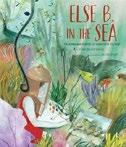
An artist’s remarkable work brought undersea life to wide public notice. German immigrant and artist Else Bostelmann (1882-1961) painted life under the ocean while working for renowned marine scientist William Beebe; while taking part in expeditions for the New York Zoological Society (now the Wildlife Conservation Society) in the 1930s, he dove beneath waters off the coast of Bermuda in a bathysphere. Few had investigated the mysterious world under the seas; fewer still had painted it. Else B., as she was known,
not only painted the glorious plants and bioluminescent animals found beneath the ocean but, wearing a copper helmet, took her art supplies (steel pencils, zinc plates) underwater with her to record the magical, almost unimaginable world below. The extraordinary images she produced, published in National Geographic magazine during the Depression, were well worth it. The book pays homage to some of Bostelmann’s beautiful, detailed, accurate paintings. Stacey’s conceptualizations of them, rendered in gouache, watercolor, pastel, and colored pencil, are lovely; the backmatter includes reproductions of Else’s art. The works are dazzling and convey how extraordinary undersea life is. The text isn’t quite as captivating, though readers will likely be interested in how Else fared underwater and what she discovered during her explorations. Unfortunately, some terms used in the text are neither defined nor pronounced for readers’ benefit.
A little-known female artist receives well-deserved attention. (author’s note, more information on topics explored in the book, math conversion table, map of Bermuda and environs, photo of Else Bostelmann, selected sources) (Informational picture book. 6-9)
Kirkus Star
We Who Produce Pearls: An Anthem for Asian America
Ho, Joanna | Illus. by Amanda Phingbodhipakkiya | Orchard/ Scholastic (48 pp.) | $19.99
April 16, 2024 | 9781338846652

Eyes That Kiss in the Corners (2021) author Ho reflects on Asian American history.
“We who dream / mark time by the moon, / a heavenly
body containing multitudes, whose many faces mirror our own.” Writing in verse, Ho notes the diversity of the Asian American community. She alludes to the many reasons that people took the risk of immigrating to America: the wounds of colonization, unfair labor practices, and dreams of opportunities. Affirming that the Asian experience is an integral part of U.S. history, she acknowledges the oppression that Asian Americans have endured, but, she stresses, “We are not our pain.” “We who prosper / hold injustice / in our mouths, / encircle it with tenacity / and audacity, / roll it around on our tongues… // and spit it out.” The resulting pearl is a potent metaphor for Asian Americans’ ability to create beauty and meaning out of sorrow. Despite the picture-book format, this work is better suited for older readers. Laced with references to historical figures, movements, and events, Ho’s rich, mesmerizing text begs to be discussed; educators will appreciate the detailed backmatter, which unpacks each stanza, offering historical context and guiding questions. Ho’s verse is brought to vivid life by Phingbodhipakkiya’s arresting, vibrant images of people set against backdrops teeming with traditional cultural motifs.
Striking and defiant: an unabashed declaration of hope. (author’s and illustrator’s notes) (Informational picture book. 7-12)
Hong, C.J. | Illus. by A.J. Smith | Kids Can (32 pp.) | $19.99 | June 4, 2024 | 9781525307232
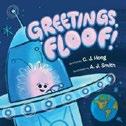
Readers make contact with a most adorable little alien. Brown-skinned Dr. Greta Goodnote, whose hair is shaped like a DNA double helix, coaches readers through a meeting with
Floof. A pink and blue puffball with blue sneakers, round black eyes, and antennae, Floof hails from the planet Ploof. Dr. Goodnote instructs readers to “give a Ploofian hello. Raise your arms and jiggle them.” Floof likes animals, so Dr. Goodnote encourages readers to point out any that they see. Look! Bunnies. Floof eagerly embraces them. But the next animal is a skunk!
“Quick—hold your nose and turn the page.” When it rains, Dr. Goodnote asks readers to “take a deep breath and blow the clouds away.” Uh-oh. Floof has gotten wet. He shakes off some of the rainwater and poofs up. Opening and closing the book slowly pumps the water out of the little alien. When Floof bumps his head on a tree, readers are told to blow him some kisses. Floof has never had a kiss, and he’s thrilled. Finally, he jumps back into his spaceship and, with a little more help from readers, takes off to teach his fellow Ploofians about kisses. Hong’s tale, told entirely by Dr. Goodnote, will entertain and engage audiences of one or many.
Floof’s both goofy and endearing, brought to life by Smith’s pastel-colored, thick-outlined cartoon illustrations. Interactive, intergalactic silliness, sure to please. (Picture book. 2-6)
Horáček, Petr | Candlewick (32 pp.)
$17.99 | June 18, 2024 | 9781536233995
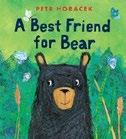
Two bears set out in search of friendship. “Finding a friend is not easy,” but Black Bear is up for the challenge. As he makes his way through the woods, he meets Brown Bear, who’s also seeking a pal. The two decide to work together, combing through the forest to find a buddy and pausing for a game of hide-and-seek. Along the way, they realize that their search is easier because they’re together, and in the end, they discover they’ve found a friend in each other. Horáček’s signature illustration style is on display in this sweet story,
featuring elements such as the heavily textured fur of the bears and the richly colored forest. The two bears are an irresistible pair; they’re each initially oblivious to the prospect of friendship when they meet yet are open and willing to find it. Attentive readers and listeners may even find it silly that both bears look elsewhere instead of at each other in their search for a companion. The book offers a lovely show of kindness as the bears actively display the hallmarks of good friendship: supporting one another, lightening a heavy load, and sharing excitement. A sweetly funny tale of burgeoning friendship. (Picture book. 3-5)
Hoying, Scott & Mark Hoying
Illus. by Steph Lew | Henry Holt (40 pp.) $18.99 | May 21, 2024 | 9781250853332

Singer/songwriter and Pentatonix vocalist Scott Hoying and his husband, Mark, a writer and marketing professional, tell the story of a mayfly learning to seize the day.
“Good morning, Mayfly! / It’s your time to meet the sky! / Spread your wings, / ’cause life is not to be wasted!” Words of wisdom from two older mayflies inspire a youngster to explore and appreciate the world. He zips through the air, observes colors and smells, and notices other mayflies. “How lucky am I!” he enthuses at each turn. But as nearby mayflies begin to pair off, our winged hero watches, lonely, wondering if he’ll end up alone. “Why oh why…isn’t luck on my side?” He tries to be philosophical. But before all hope is lost, the perfect partner appears, and mayfly-style romance abounds. Everything comes full circle as the two spot a new youngster and advise that “life is not to be wasted.” Brightly colored, cartoon illustrations nearly overwhelm with extreme cuteness, while exuberant text traces the mayfly’s journey. Well intentioned but a
bit saccharine, this tale concludes with backmatter about the species’ all-toobrief (one-day) life cycle and an explanation that the mayflies in the story are same-sex partners (which, the authors note, are common throughout the animal kingdom). A QR code links to a song version of the book, performed by Scott Hoying.
A super-sweet tale of living in the moment. (Picture book. 4-8)
Islam, Farhana | Illus. by Nabila Adani
Salaam Reads/Simon & Schuster (32 pp.)
$18.99 | May 21, 2024 | 9781665957854

A young girl wonders why the women in her family wear headscarves. Noor knows that her mother’s hijab isn’t her hair, a towel, or a hat. It looks similar to the headscarves worn by Noor’s aunt and sister, though it differs from her maternal grandmother’s niqab and the loosely draped scarf worn by her paternal grandmother. Why do they all wear hijab? Noor wonders if they’re storing snacks underneath. Or maybe they’re trying to avoid catching lice? Her busy family members dismiss her inquiries. Finally, Noor’s mother tells her that the hijab is part of who she is as a Muslim woman: “We are believers. We are dreamers…My hijab is where I find peace, and it is where I dare to find power.” Though it’s a poignant explanation, some readers may wonder if the omission of religious doctrine is deliberate. Some of Noor’s questions echo the invasive queries Muslim women often encounter (“Is it so nobody can see when you’re having a bad hair day?”). Noor’s description of her niqabi grandmother as mysterious and “secretive” feels like an othering portrayal of Muslim women. Vibrant illustrations depict a variety of textiles, patterns, and decor, and Adani pays special attention to how context influences
A warm charmer that will help readers reflect on life’s most important things.
when characters wear hijab. Noor and her family are cued as Bangladeshi. A sweet but slightly lacking exploration of hijab. (Picture book. 4-8)
Kapit, Sarah | Illus. by Genevieve Kote Henry Holt (112 pp.) | $7.99 paper
June 18, 2024 | 9781250880925
Series: Rachel Friedman

For 8-year-old Rachel Friedman, life feels like one long list of rules. Finish your homework. Don’t throw food at the table. Don’t fall asleep in synagogue. Rachel, who has ADHD, doesn’t understand the reasons for these directives, and she doesn’t always follow them. After nearly a full week of good behavior, she breaks one of her father’s most important rules—never cross the street alone—to rescue her escaped cat. As punishment, Rachel’s father refuses to take her to see her favorite gymnast. So Rachel decides to make her next transgressions purposeful and public: wearing pajamas to synagogue and doing handstands in the sanctuary. Readers will sympathize with Rachel’s frustration and applaud when the surprised rabbi validates her frustrations, though Rabbi Ellen’s explanation of Jewish tradition may not scintillate. Energetic Rachel is a relatable protagonist, and her exasperated, protective father feels well realized, but secondary characters, such as her brother, Aaron, and her best friend, Maya, are only briefly sketched. The depiction of the family’s Judaism is
nuanced, however; Kapit captures the reality of many contemporary practicing Jews who balance their faith with the rest of their full lives. Rachel and her family appear light-skinned in Kote’s grayscale illustrations, while Maya is darker-skinned. An enjoyable tale of a flawed yet deeply sympathetic protagonist. (Fiction. 6-9)
Kazmi, Faith | Illus. by Christine Almeda Harper/HarperCollins (32 pp.) | $19.99 May 7, 2024 | 9780063251366

A child helps pack a balikbayan box, a package of presents sent by members of the Filipino diaspora to family back home.
“Balikbayan” means “return to home,” explains Mama to the young narrator. A large cardboard box sits on the floor of their living room, surrounded by canned food, cookies, shampoo, chocolate, and other items. This box is “how we share our blessings with our family” and “feel closer to them, even though we’re so far away,” Mama says. The child excitedly examines the pasalubong, or gifts. The yellow pencils spur Mama’s happy memories as a schoolgirl in the Philippines; readers see a scene of Mama skipping around rice paddles against the backdrop of the cone-shaped Mayon Volcano and trees filled with sweet mangoes. Inspired, the child wants to contribute, too. After gathering a shirt covered with gold stars, a rainbow ruler, and a sparkly jacket, the little one returns to find Mama reminiscing about beloved foods that her family will make with their gifts. As the duo tape up the
box, the child slips in one last thing: a wish to visit the family in the Philippines. Almeda perfectly matches the cozy tone of Kazmi’s evenly paced, tender tale with warm colors and expressive cartoons that fill each page. This is one big package of love and joy. (author’s note) (Picture book. 5-8)
Killian, Alex | Illus. by Brooke Smart Greystone Kids (36 pp.) | $18.95
May 28, 2024 | 9781771645829
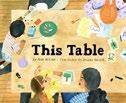
A table is at the center of a home. This cozy book about a handhewn wooden table starts and ends evocatively: “This table began as a seed.” The seed grows into a “great strong tree” that’s felled by a lumberjack…or perhaps by lightning…or, possibly, a windstorm. Later, a skilled, brown-skinned carpenter cuts and measures the timber, sands it, attaches legs, stains and seals it, and leaves it to dry in the sun. Now it’s a “strong and stable” table, ready for use. And what stories the table could tell as it stands “in the middle of a room, in the middle of a house, and [as] life grew up around it.” It serves as a dining space, as well as a place to play and draw, to do puzzles and schoolwork, and, mostly, “for gathering, sharing stories, and being together.” Readers learn that this table, the “heart” of a home, centers people and families—a nice thought. This simply told Canadian import is quite lovely; children may wish to volunteer thoughts about how tables in their own homes compare with the one in the book. The inviting, homey watercolor illustrations, especially those of the table, have an appropriately grainy appearance, and the racially diverse characters also have an air of sturdiness, giving them not only a slightly “woodsy” appearance but also suggesting strength of character and purpose. A warm charmer that will help readers reflect on life’s most important things. (Picture book. 4-7)
Hero Wataru Misaka
Kim, Cheryl | Illus. by Nat Iwata
Lee & Low Books (40 pp.) | $20.95
June 18, 2024 | 9781643796031

Remembering his father’s words of wisdom, Wataru Misaka, who broke the color barrier in basketball, persevered despite obstacles. The child of Japanese immigrants, Wataru Misaka (1923-2019) grew up in Ogden, Utah, where his talent for basketball was apparent early on. Wat, as he was known, played on intergenerational Japanese American leagues, as the local sports leagues were for white people only. His father taught him a Japanese word: “Gambatte. Do your best.” It became Wat’s motto while enduring discrimination. Soon after the U.S. entered World War II, hundreds of thousands of Japanese Americans were incarcerated; though Wat and his family were safe, the experience took an emotional toll. In college, a segregated dorm system forced him to sleep under the bleachers, and racist spectators heckled him during games. AntiJapanese sentiments proliferated after the war ended. Undaunted, Wat fought for opportunities to show he belonged; in 1947, he was drafted by the New York Knicks and became the first player of color to join the Basketball Association of America (later renamed the National Basketball Association). Wat gave back to his community, too, bringing a championship blanket to Utah’s Topaz War Relocation Center, where his teammate’s family was imprisoned. Kim’s straightforward, at times stiff text is well supported by Iwata’s bold, appealing artwork, which
alternates full-page illustrations with action-packed vignettes. An author’s note provides additional biographical details.
Solid, stirring fare for sports fans. (sources) (Picture book. 4-7)
Kraegel, Kenneth | Candlewick (32 pp.) $17.99 | May 7, 2024 | 9781536204667
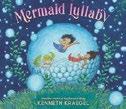
Mermaid children explore a beautiful world, both above and below the waves.
With a beguiling flash of a tail, readers are invited on a dusky, pre-dawn ocean tour. Three young mermaids sleepily awaken: “Today is a good day…A good day for exploring the colors of this world.” And what colors! As the day begins, the trio sit on the rocks and gaze up at a glorious, bloodorange sunrise. The mermaids move through the day, encountering a different color in each scene. They glide through an orange-hued school of fish, dive through green “underwater gardens,” and leap through blue skies and waves. The three enjoy a wonder-filled day until twilight, when at last the sky and the water turn violet, completing the rainbow and reminding them that it’s “time for quiet.” The mermaids head for bed—a cozy nest of bubbles—perhaps to dream of vibrant days ahead. The rich, jewel-toned illustrations are appealing and provide a welcome opportunity for discussion about the different colors of the rainbow.
Sparkling wordplay and inspired use of alliteration (“Blooming bright skies surprise our eyes,” “a swimming school of jewels down under”) make for a lovely read, perfect for a
A delightful, rainbow-colored way to spend the day.
MERMAID LULLABY
bedtime tale or a storytime readaloud. One of the mermaids is pale-skinned and blond-haired and has a limb difference; the other two are tan-skinned.
A delightful, rainbow-colored way to spend the day. (Picture book. 2-6)
Lewers, Nedda | Putnam (368 pp.) | $18.99
June 11, 2024 | 9780593619339
Series: Daughters of the Lamp, 2

One year after the events of Daughters of the Lamp (2024), Sahara’s journey continues amid the bustling streets of Cairo, where ancient magic collides with modern-day dilemmas.
Back in Egypt to visit family for the summer—this time with her best friend, Vicky Miller—Sahara Rashad meets up with both familiar faces and new allies and uncovers the truth about the hamsa necklace and its connection to the magic lamp. Supplementing the modernday story are chapters from the perspective of 13-year-old Maghrebi Princess Husnaya from 965 C.E., which build the lore of the magical artifacts and the origin story of the “greatest sorceress of all time.” Burdened by the weight of her mystical duty, Sahara grapples with keeping secrets and the looming threat of the witch El Ghoula, who seeks to awaken an ancient evil. A crisis forces Sahara to confront her jealousy over the new friend Vicky has made in Cairo. Throughout the tension, Sahara’s personal growth shines, culminating in a compelling climax during which she realizes the true power of trust, teamwork, and asking for help. While the pacing initially lags, the narrative swiftly gains momentum, delivering a satisfying blend of adventure, intrig ue, and heartfelt lessons.
Enriched by historical lore, Arabic words and phrases, and Muslim elements, Lewers’ tale weaves past and present into a captivating tapestry of magic and destiny, setting the stage for further escapades. An engaging adventure set in an enchanting world. (author’s note) (Fantasy. 8-12)
Lim, Aimee | Feiwel & Friends (304 pp.)
$17.99 | June 4, 2024 | 9781250886194
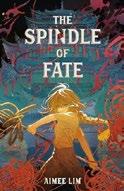
California 12-year-old Evie Mei Huang ventures into the depths of Dìyù, the Chinese netherworld, to save her mother and reunite her family.
It’s been 10 days since Evie’s mother disappeared and was declared dead. The first time she returns to her family’s tailor shop (just downstairs from their apartment), Evie encounters talking monkey Monk, who’s really a yāoguài, or demon. He delivers a mysterious birthday gift containing a scroll with an embroidered message from her mother: “Help me…Find me in Dìyù.” Evie soon discovers a whole world she knew nothing about: Not only was Mom a member of a secret society of magical weavers, but she was also “the master of the Spindle of Fate, which can change a person’s destiny.” Armed with the famed demon-repelling Staff of Mùlián and a magical spool of red thread to lead the way, Evie embarks on a treacherous, actionpacked race to find her mother in the multilevel underground labyrinth that is Dìyù. Detailed and descriptive both in characterization and scene-setting, Lim’s evocative language builds a fun modern fantasy that draws from Chinese mythology. She doesn’t shy away from the macabre, with her tween protagonist swimming through a pool of blood, navigating knife-covered mountains, evading pursuit by desperate dead penitents, and fending
An immigrant story that heals wounds present and past.
BAO’S DOLL
off demons of various forms. This debut, which explores grief, a complicated mother-daughter relationship, and family dynamics, also has a lot of heart. An enthralling adventure. (Fantasy. 9-12)
Lombardo, Constance | Illus. by Micah Player Hippo Park/Astra Books for Young Readers (40 pp.) | $18.99 | June 4, 2024 | 9781662640148
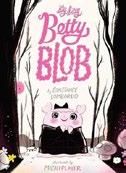
As her name suggests, Itty Bitty Betty Blob is a small, amorphous monster, but that’s not what sets her apart.
It’s Betty’s cheerful demeanor that makes her different from her peers. What kind of monster “rejoice[s] at rainbows” and “dance[s] among the dandelions”? Betty’s pink hue also distinguishes her from her classmates, who are rendered in a black-and-white palette, and makes her stand out in her rather somber, expressionistic setting. Brief, alliterative sentences keep the pages turning as readers learn about her trouble fitting in at school: While the other students faithfully reproduce a still life of dead flowers on a table, hers is a vibrant image of a living, yellow daisy. The crisis comes to a head on picture day. Despite the dreadful outfit her mother selects, Betty can’t grimace fiercely enough. As she travels through the spooky forest to school, the diminutive monster is distracted by a pink puff. Following it, she encounters an entire fluffy community that encourages her to be true to herself. Her frightful frock becomes an extravaganza of flowers. The climax
involves a mood transformation for the entire class as puffs emerge from Betty’s dress, tickling everyone as the flash goes off. Children will enjoy the humor in the reversal of expectations around classroom culture—and will be heartened by Betty’s willingness to embrace what makes her different— although subsequent readings don’t yield much more.
A light touch delivers an increasingly common but important message. (Picture book. 4-6)
Lu, Bo | Abrams (40 pp.) | $18.99
June 18, 2024 | 9781419769214
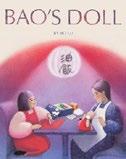
A girl and her mother bridge a seemingly insurmountable gap.
Other girls have the things that Bao wants: beautiful, blond-haired dolls and mothers who joke and snuggle with their daughters. But Bao, a young Asian child with straight black hair in a bowl cut, has neither. There’s a palpable distance between her and Mama; on one spread, the two look in opposite directions as Mama explains, “When I was a little girl in Taiwan, we had nothing.” Bao has stopped listening; clearly the two don’t understand each other. Desperate, Bao takes matters into her own hands and shoplifts a coveted doll, but she’s caught immediately. A spread depicting a huge boulder between the two makes clear that the distance separating them has grown. But when Bao apologizes, Mama tells her about how she grew up in an orphanage, and Bao
begins to understand her mother better. Mama shows Bao a box of items “filled with bittersweet memories,” and as mother and daughter open up, they find common ground in sewing a new doll “from Mama’s memories and Bao’s hopes.” Lu’s illustrations are colorful and soft, with stylistically plump figures and airy textures. The red of Bao’s overalls and the blue of Mama’s dress dominate, with accents, colors, and sketchy grays bringing details into the fore- or background. Generational trauma looms large but is tempered by the optimistic ending. An immigrant story that heals wounds present and past. (author’s note) (Picture book. 4-8)
Lucianovic, Stephanie V.W.
Illus. by Chris Park | Carolrhoda (32 pp.) $18.99 | May 7, 2024 | 9781728460451

How far can YOU go?
Vern loves the playground swings, but he usually sits, letting the chains twist and spin him around, or lies stomach-first on the seat. He can’t soar like the other kids. When other children taunt him, he contorts his body in vain, ordering his legs to pump. Then a girl named Gretchen asks if he wants to learn. He painstakingly follows her instructions, and she stays with Vern, not letting him quit, until she finally must leave. Though tempted to give up, Vern persists—and then…he PUMPS, touches the sky, and joins the birds! Earthbound again, Vern hears a small boy wistfully tell him he wishes he could pump. Guess who’s the expert
now? Aiming skyward on a swing is, of course, a metaphor for attempting to reach any goal; the reassuring message in this dynamic, fast-paced tale: Don’t quit, keep trying, and you’ll succeed. Throughout, Lucianovic demonstrates a keen, child-friendly understanding of what it’s like to master a new skill: “It feels hard until you get it, and then it’s not.” The energetic, loosely drawn mixed-media illustrations zing with color. Amid all this fun, characters’ hair and skin shades are fancifully depicted, though hair textures suggest that some characters might be people of color. Creative typesetting wizardry, with words and action lines “swinging” everywhere, emphasize the action. Swing by the zesty endpapers. It’s swing, hit, and no miss with this rip-roaring charmer. (Picture book. 4-7)
Macurová, Katarína | Trans. by Mark Worthington | Albatros Media (48 pp.)
$17.95 | April 2, 2024 | 9788000070841
Series: Katarina’s Small Wonders

There’s nothing friends can’t accomplish together. Chicken pals Pipo, Bud, and Kenny create ingenious playthings from found objects: A box becomes a pirate ship; a bag becomes a kite. Above all, they love being together. One day, they find half a watermelon. While Bud and Kenny immediately start devouring the succulent fruit, Pipo is more interested in the nearby earthworm whose head temptingly rises aboveground. But, as hard as Pipo pulls, he can’t dislodge it. Finally, Pipo uses a fishing rod to yank it out: success! Except…this worm’s no worm. Pipo’s actually extracted a bootlace attached to a huge boot, which
An uplifting tale about being the wind beneath someone’s wings.
turns out to be a jolly plaything. (Sharp-eyed readers will spot something very interesting peering from the boot’s hole.) Meanwhile, Bud and Kenny have been closely observing Pipo’s activities from the now-empty watermelon rind, to which they’ve added inventive touches. The friends, realizing they miss each other on this hot day, reunite and, pulling out their most creative (and wettest) stops, devise their best project yet—“something the whole neighborhood could enjoy.” Originally published in the Czech Republic, this joyous romp about friendship and cooperation is a comic delight. Kids will savor both the narrative and the winning illustrations and the endearing, adorable characters; they’ll also marvel that the friends’ found objects seem always to be readily handy.
A juicy, entertaining charmer. (Picture book. 4-7)
Macurová, Katarína | Trans. by Andrew Oakland | Albatros Media (32 pp.)
$14.95 | April 16, 2024 | 9788000070773
Series: Little Stories for Little Readers
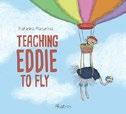
Real friends help pals fly in more ways than one. Arthur, a small bear, is friends with Eddie, an ostrich. After Arthur asks Eddie why he doesn’t fly, Eddie explains that he wasn’t taught. Solicitous Arthur decides to play teacher. He enjoys giving lectures and illustrates aeronautical principles on a chalkboard. Next, Arthur instructs Eddie to flap his wings, but nothing doing. More lessons ensue. Eddie is lifted in a hot-air balloon, jumps off a diving board, tries stilts, and dangles from a parachute. Arthur decides to ask some birds how they learned to fly. It’s a good idea, except Arthur ends up questioning a series of flightless birds and a parrot who talks nonstop—but not about flying. Discouraged, the pair walk home; the tired Arthur rides atop Eddie’s back. Eddie’s legs move faster; Arthur marvels at Eddie’s lightning pace. Perhaps Eddie already has a great
skill. Originally published in the Czech Republic, this winning story about friendly, supportive encouragement soars, even if Eddie doesn’t. Sweet Eddie never questions where Arthur, who obviously can’t fly, gets his expertise from; readers may want to ponder and discuss this. The charming illustrations are lively and comical. The protagonists are adorable, their size differential making their friendship especially endearing.
An uplifting, high-flying tale about friendship and being the wind beneath someone’s wings. (Picture book. 4-7)
Márquez, Melissa Cristina
Illus. by Rocío Arreola Mendoza
Penguin Workshop (48 pp.) | $19.99 May 28, 2024 | 9780593523605
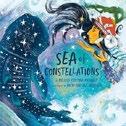
When the ocean is suddenly plunged into darkness, a whale shark embarks on a quest to put things right.
Maren loves living in the deep blue sea and traveling the world with her best friend, Remy the remora. Fear and confusion grip Maren and the other ocean creatures when they find themselves lost in their home after the light in the ocean goes out. Remy suggests that they seek help from Huixtocihuatl, the Aztec goddess of salt and salt water. They set out, Maren lighting the way with her soft, glowing scales. On the way, the pair encounter a scared fish, and Maren gives him a scale to use as a light source. Maren has a good heart and a generous spirit, and she gives most of her scales away to other frightened fish along the way. She and Remy end up in the dark again before reaching the goddess. Maren is ultimately repaid for her good deeds by her friends and is rewarded for her altruism by Huixtocihuatl herself. Bright-white highlights stand out against shades of deep blue, which make the illustrations sparkle and shine as readers follow Maren’s journey across the ocean. The adorably
An exceptionally lovely exploration of change, memories, and relationships.
COUNTDOWN TO YESTERDAY
anthropomorphized sharks, anglerfish, and other creatures cut endearing figures. This gentle aquatic fable reminds us that friendship and selflessness can be powerful beacons against fear and hopelessness, even in times of darkness.
A visually appealing tale with a sound message sure to resonate with readers. (information on Huixtocihuatl and the animals featured in the book) (Picture book. 4-8)
Marr, Shirley | Simon & Schuster (272 pp.) $17.99 | June 18, 2024 | 9781665948517

An Australian boy embarks on a time-traveling mission in an attempt to return to simpler times.
Eleven-year-old James Greenaway’s Chinese Australian mom and white dad are separating, and the news makes him feel like an untethered astronaut in space. He can’t help but fixate on happy memories from his past as he grapples with having two homes. One day, a change in James’ routine leads him to meet Yan, a Chinese girl whose love of retro computers and unique way of thinking open up the possibility of time travel. All he must do is decide on which of his six favorite memories he’d like to return to. But did things really happen the way he remembers? Could he have reasons to stay in the present? Marr’s captivating prose imbues the story with heart, humor,
and hope for the present and the future. The author deftly weaves multiple themes of family, friendship, nostalgia, and growth into a richly layered and thought-provoking tale that will linger in readers’ minds long after it’s over. Cultural references (such as to an iconic Australian birthday cake cookbook), an original take on time travel, and perfectly imperfect characters just doing their best all create a vivid sense of place and will make this title resonate with children and adults alike.
An exceptionally lovely and uplifting exploration of change, memories, and relationships. (Fiction. 8-12)
Martin, Laura | Harper/HarperCollins (368 pp.)
$19.99 | June 25, 2024 | 9780063326217

Fun and games can be life or death.
Life has been anything but usual for 12-yearold twins Rhett and Nash Benson. Their mother, Natalie, moves them around constantly, has unusually draconian rules (like banning board games), and keeps them estranged from their grandfather. The twins’ lives become an unbelievable adventure when Natalie suddenly ends up in danger. Newly reunited with their grandpa, who goes by Ace, the brothers learn that they’ve inherited an ability to jump in and out of board games. Whenever they enter a game, however, a character changes places with them and enters our world—and now the ruthlessly evil Ogden, from the game
The Pirate’s Wrath, is here and determined to make trouble. Martin’s rollicking novel is deftly paced and thoroughly entertaining. An easy crowd pleaser that reads like a clever mix of Jumanji meets Wreck-It-Ralph with a dash of the Mr. Lemoncello’s Library series, this imaginative stand-alone title has something for everyone, from animal lovers (thanks to the lovable giant dog and wily guinea pig) to action aficionados, fairy-tale fanatics, and video game devotees. Martin’s worldbuilding is carefully and intricately plotted, creating an immersive experience, much like gaming. A not-to-be-missed author’s note explains her approach to board and video games—and may just inspire brave readers to pick up a board game for themselves. Rhett and Nash read white. Readers will never look at family game night the same way again. (Adventure. 8-12)
McKinnon, Bob | Illus. by Thai My Phuong Penguin Workshop (48 pp.) | $19.99
June 4, 2024 | 9780593658796
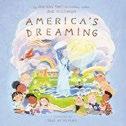
A child named America feels out of place at a new school. America is clearly nervous. Though the child isn’t visually depicted (each scene is viewed from the young narrator’s perspective), America confesses, “My hands are shaking so bad, I drop my backpack.” As class begins, the teacher, Mr. Downs, invites the students to introduce themselves and share their dreams, which include scoring the winning World Cup goal and singing on Broadway. But when it’s America’s turn, the child freezes up, and the other students giggle and sneer. During recess, America stays inside, buried in a biography of Abraham Lincoln. Mr. Downs offers America books about historical figures such as Martin Luther King Jr. and Sojourner Truth, people who sometimes felt they didn’t belong.
That night, these larger-than-life people visit America in a dream and share words of wisdom. The next day goes better: America speaks up, and the other students welcome America into the fold. McKinnon tells a heartfelt yet didactic story, accompanied by Phuong’s earth-toned illustrations. The legendary figures America meets are reduced to flattened, simplistic depictions. McKinnon offers a one-sided view of friendship and acceptance; while America does plenty of soul-searching, the other students don’t reflect on their unkindness—which may inadvertently leave readers believing that the onus is on bullied children to work harder to fit in. The other kids’ ultimate willingness to embrace America also seems unrealistically rushed. The class is diverse; Mr. Downs is light-skinned. An earnest but less-than-convincing attempt at fostering inclusion. (author’s note, information on historical figures) (Picture book. 4-8)
Medina, Belen | Illus. by Natalia Rojas
Castro | Atheneum (40 pp.) | $18.99 June 11, 2024 | 9781665931427
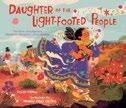
A Rarámuri runner’s strength and pride in her roots lead the way to triumph.
In 2017, Lorena Ramírez won the Ultra Trail Cerro Rojo, a 31-mile race. Since then, she’s won races all over the world, including ultramarathons that are more than 60 miles long. Running is an integral part of her heritage; Medina explains that the very word “Rarámuri” means “the light-footed people” or “those who run fast” and that the Rarámuri—Indigenous people who live in Chihuahua, Mexico—are known for their great endurance. Medina follows Lorena as she runs day and night across rugged terrain, against “hundreds from other countries.” She stands out because of her huaraches, which are “cut from
rubber tires,” and her home-sewn skirt. Unlike the other athletes, Ramírez competes “without fancy gear or gadgets.” Swirling images of animals, flowers, and family members appear in the background, highlighting the grit and fire that fuel Lorena. When the dark-haired, brown-skinned runner crosses the finish line ahead of her competitors, her family is there to cheer her on, among her many fans. This tale of endurance, ancestral pride, and remarkable athleticism culminates in backmatter about Ramírez that provides more context for her accomplishments and information about her Rarámuri heritage. Brought to life by vivid illustrations and reverent, energetic prose, Ramírez’s story will delight readers.
A vibrant homage to a celebrated athlete, her supportive community, and Indigenous resilience. (Informational picture book. 4-8)
Mikai, Monica | Nancy Paulsen Books (32 pp.)
$18.99 | May 14, 2024 | 9780593531181
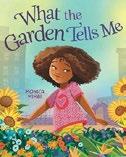
An urban garden serves as a teacher and guide to a Black child.
A golden gate in the young narrator’s city leads to a beautiful garden. It’s a place full of “wonder and wisdom,” where each flower is a teacher. Daylilies teach the girl how to “greet the morning with joy.” The willow shows the child “the beauty of loving myself.” As “its branches blow freely, like my hair,” the child gazes admiringly at the image reflected in a nearby pond. Roses demonstrate that, “along with life’s beauty, there will also be thorns,” and that “both have a purpose.” An accompanying illustration depicts the child staring beyond rosebushes as a friend moves away. Birds-of-paradise remind the child of the wonder to be found all around.
Mikai’s attractive digital illustrations pair well with her soulful prose. The
A touching
the healing of old wounds and family relationships.
THE LAST APPLE TREE
cityscape is depicted in muted purples and blues, allowing the vibrant flowers to truly pop. Urban dwellers may well be inspired to seek nature in their own backyards. In an author’s note, Mikai discusses the rewards of slowing down and seeking solace in nature; she encourages readers to learn more about flowers. A lovely book that speaks volumes. (Picture book. 4-8)
Kirkus Star
The Last Apple Tree
Mills, Claudia | Margaret Ferguson/ Holiday House (272 pp.) | $17.99 June 18, 2024 | 9780823457106
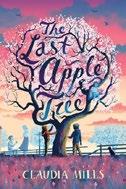
Two tweens and an old apple tree uncover a family secret.
Sonnet and her younger sister, Villanelle, move with their single mother from Colorado to live with their maternal grandfather in Indiana. Anderson Granger is struggling to process his wife’s recent death and is showing worrying signs of forgetfulness. Twelve-year-old Sonnet always wondered why they rarely visited Gramps and Nana, but Mom avoided answering her questions. Meanwhile, neighbor boy Zeke Morrison feels disconnected from his environmental journalist father. Zeke’s vegan family eschews technology, which he finds frustrating. After years of home schooling, Zeke just wants to fit in at the local middle school. Both Sonnet and Zeke choose Anderson Granger as the subject of
their seventh grade oral history project (much to Sonnet’s annoyance). Initially unwilling partners, they grow closer as they work together, and their interviews reveal the secret behind Sonnet’s mom’s family estrangement. The mystery in this deftly characterized novel unravels from three different points of view—those of Sonnet, Zeke, and an old apple tree that witnessed the whole story. The personified apple tree, the last one standing in the orchard, faithfully interprets the family’s story in moving poems that are interspersed throughout the novel. The tree’s relationship with the family opens Zeke’s eyes to the deep connection between humans and the natural world, helping to heal his relationship with his father. Main characters are coded white. A touching homage to the healing of old wounds and family relationships. (author’s note) (Fiction. 8-13)
Murray, Lily | Illus. by Sam Caldwell Buster Books (32 pp.) | $9.99 paper June 4, 2024 | 9781780558301

A crab searches for new digs. Finding beach real estate’s hard, but hermit crab Sheldon’s shell has become very snug, and he must locate a roomier home. He has no time to lose; hungry seagulls are circling overhead. One possibility—a tin can—appears, but it’s noisy and smelly. Sheldon’s sad: A homeless crab is a sunbaked, driedout crab. Myrtle the turtle escorts him to her beach shop, which is filled
with fancy outfits. Sheldon gleefully tries on numerous, ultimately unsuitable styles, then spies a sturdy-looking plastic bottle: It’s perfect! Uh, no. Scuttling inside, Sheldon gets stuck. Myrtle watches helplessly as Sheldon rolls away and lands in a hole. Happily, a young girl named Kaia frees him, then shows him the bucket of shells she’s collected. Sheldon finally selects his perfect new home, and Kaia realizes that the shells belong to the beach, not her. Going forward, she’ll help with beach-cleanup efforts, and she organizes a group of eager kids on the spot. They work hard and clear the beach of human detritus. This lively U.K. import, written in bouncy, present-tense verse, is a loud clarion call to keep beaches free of carelessly strewn human clutter. Sheldon’s full of personality; his plight will arouse children’s empathy and hopefully inspire a “let’s get working” mindset. The colorful, lively cartoon illustrations depict both messy and pristine beach vistas. Kaia is brown-skinned; background figures are diverse. An upbeat tale laced with a clear, much-needed message of environmental stewardship. (how can you help the environment? note on “Surfers Against Sewage”) (Picture book. 4-7)
Nolte, Katherin | Random House (288 pp.) $17.99 | June 4, 2024 | 9780593565148

Ten-year-old Beatrice Corwell
will do anything to make her wishes come true in this quirky, magical tale. Grieving her recently passed grandma and missing her best friend who’s moved to Florida, Beatrice desires to become a Tin Man who doesn’t have a heart so she can stop feeling difficult emotions. When Caleb Chernavachin, a new boy in their Ohio town, tells Beatrice his granny is a witch, Beatrice
is hesitant at first to seek out her magic, but desperation wins out. A porcelain doll Beatrice calls “Bright Baby” has been the vessel for magically appearing one-word messages, and Beatrice wishes for the doll to come to life and become her sister. Wishes and magic don’t always go as expected, though, and soon a special visitor arrives, complicating matters further. With the help of her eight intelligent rescue cats and a community of larger-than-life characters, Beatrice grows to figure out who she truly wants to be. This story’s whimsy and big heart are enchanting, although sometimes the narrative’s quaint cleverness seems to hide a lack of depth in the characters and their emotions. While it might not be the most affecting read, the novel still has plenty of charm, and the quick pace makes it a cute, breezy read. Beatrice’s precocity will endear her to some readers. Characters read white. A pleasant and lightly fantastical story that will satisfy twee tastes. (Fantasy. 8-12)
Okogwu, Tolá | McElderry (336 pp.)
$17.99 | May 14, 2024
9781665952446 | Series: Onyeka, 3
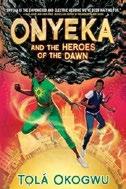
Onyeka faces new challenges with her friends and a mysterious boy in this third series entry. Following the thorough defeat of Dr. Dòyìnbó, Onyeka, a British Nigerian girl with superpowers, is ready to ease back into the steady rhythm of schoolwork and missions
with the Nchebe, the guardians of the Academy of the Sun. Onyeka attends this school for Solari, who are genetically enhanced humans. A poorly executed rescue mission reflects some rocky relationships: Guardians Niyì and Zahrah constantly squabble, the Òmìnira (new arrivals formerly labeled Rogues) struggle to adjust to academy life, and now Onyeka has been asked to be a buddy for Tobi, the 8-year-old Solari boy rescued from England and brought to Nigeria. Aunt Naomi (or Principal Uduike, as everyone else calls her) holds an election for Olórí, or Nchebe team leader. Onyeka’s dad, Aunt Naomi, and teammates Adanna and Hassan all encourage her to run for Olórí. As the pressures mount from all sides, Onyeka worries if she can live up to everyone’s expectations, especially her own. She focuses on Tobi, who was isolated by Dr. Dòyìnbó for unknown reasons. Okogwu satisfies yet again: The political and historical layers of Nigeria’s past and imagined present complement Onyeka’s emotional journey, and the concepts of enemy and ally evolve as each character’s motives become clear. Readers will hope to see more of Onyeka. Well-crafted fantasy fun. (pronunciation guide, glossary, Nigerian Pidgin English guide) (Fantasy. 9-13)
Otis, Chad | Rocky Pond Books/ Penguin (40 pp.) | $18.99 May 7, 2024 | 9780593530658
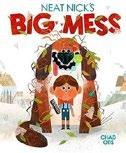
A dog challenges a young boy’s need for tidiness.
Nick is super, super neat, and has been all his life. If something
A dog challenges a young boy’s need for tidiness.
is messy, he just has to fix it. Of course, there are some things Nick can’t change, such as other people’s untidy clothes, odd smells, or loud noises. Often, Nick prefers to be on his own, where he can keep things just so, until he starts to feel lonely. One day, Nick’s parents bring home a surprise—a huge, floppy-eared, bushy-tailed, covered-in-leaves-andslobber, reddish-brown dog! After the initial shock, Nick sets out to “fix it” by giving the loving dog a vigorous bath and hair trim. The two of them go to sleep all neat and tidy, but the next morning, the pooch is somehow a mess again. Soon, the chaos gets to be too much for Nick, but he discovers that “there’s nothing neater than love.” Nick appears to have an anxiety disorder, though that’s never explicitly mentioned. His story could have come across as saccharine, but his happy ending feels genuinely earned. The dog is obviously enamored with Nick from the start, and Nick eventually reciprocates. Otis imparts a gentle lesson that letting go of some control can be good. Some of the mixed-media illustrations depict neat, carefully composed scenes, while others explode with raggedy swirls; whether readers prefer order or mayhem, they’ll enjoy this tale. Nick and his parents are tan-skinned, while background human characters are racially diverse.
Thoughtful and empathetic. (Picture book. 4-8)
Pa, Mikolaj | Illus. by Gosia Herba | Trans. by Scotia Gilroy | Greystone Kids (56 pp.)
$18.95 | May 14, 2024 | 9781778400629
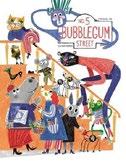
The animal residents of No. 5 Bubblegum Street are an eclectic bunch. An insect narrator offers readers a peek into apartments filled with baking monkeys, a houseplant-hoarding panther, a family
How comforting to read about the book as an object so worthy of adoration.
of musical spiders, an adventure-loving hippo, and many more creative creatures, all living side by side as friends and neighbors. Translated from Polish, this slice-of-life story sequentially introduces the inhabitants of each household, all of whom contribute their special talents to a party at the end. Young readers may lose interest with the slow pace and sometimes wordy descriptions. Still, it’s worth taking the time to pore over the lively, detailed illustrations, rendered in bold colors in a charmingly childlike hand-drawn style. Each apartment is as unique as its residents, and many characters have a signature color or two, such as Mouse’s bright red-orange decor, the soothing blues and greens of Panther’s plants, and the gray and black hues used to depict Bat’s home. Everything comes together in a riot of color and pattern at the party. Many pages feature multiple small, labeled vignettes reminiscent of Richard Scarry’s Busytown books. The book also makes fun use of sound; birds squeak and tweet, Hippo snores, and the spiders play a homemade “accordiohorn.” In their joyful coexistence, these very different neighbors gently model acceptance and kindness.
A leisurely tale brought to life by illustrations that vibrate with color, sound, and movement. (Picture book. 5-8)

For more by Mikolaj Pa, visit Kirkus online.
Palmer, Caroline | Atheneum (256 pp.) $22.99 | June 11, 2024 | 9781665930383

Friendship, identity, and self-discovery take center stage in this musical summer camp graphic novel for tweens. Tate Seong can’t get the hang of the viola but is excited to attend Camp Prodigy, a summer string orchestra camp for middle schoolers. There, Tate meets nonbinary fellow camper Eli Violet, a viola virtuoso with stage fright. With Eli’s behind-the-scenes support, Tate’s viola skills quickly improve, and the bond between the two grows even stronger when Eli supports Tate’s realization that they’re also nonbinary. Tate’s skills rocket them all the way to first chair viola, but Eli becomes engrossed in other camp activities, enjoying themself for the first time all summer. This new friendship and increasing musical tenacity give Tate the confidence to come out to their close friends at camp—and ultimately, their parents. The story begins in a rush, but it hits its stride as Tate arrives at camp, compensating for some early pacing issues. Tate’s journey of gender discovery is delicately wrought and joyfully celebrated without major conflict. Bold, jewel-toned, manga-style illustrations propel the story forward with movement and expression. Tate reads biracial, with parents who are cued white and
Korean American; Eli reads Black, and the campers represent a range of races and body types.
An immersive and affirming story that hits the right notes. (concept art) (Graphic fiction. 8-12)
Park, Linda Sue | Illus. by Chris Raschka
Red Comet Press (36 pp.) | $18.99
June 4, 2024 | 9781636550947

Stand aside, dogs. A book is a true best friend.
“This is my book. My favorite book. I carry it with me wherever I go.”
A parade of different children grace these pages as we hear the myriad ways that they adore their own particular books. We see children reading with their grown-ups, to their pets, on the subway, and more. They’re moved to dress up as beloved characters or memorize the words. Throughout, Caldecott winner Raschka includes two-page wordless spreads featuring scenes from some of these favorite books. Newbery winner Park’s language has a rhythmic, lyrical quality. Though the words don’t always rhyme, they have a cadence that’s pleasing to the tongue (“This is my book. My favorite book. I wake and I take it. I sleep and I keep it”). Brightly colored watercolor art displays children diverse in terms of skin tone and ability. For all its earnestness, occasionally the art slips in a bit of wry humor for adults (as when a child discovers a “missing” book in a high, out-ofreach place, presumably put there by desperate grown-ups tired of endlessly reading this one aloud). Though it may be preaching to the choir, there’s no denying the power of this paean to books and reading. With book banning on the rise, how comforting to read about the book as an object so worthy of adoration. (Picture book. 3-6)
Plourde, Dorson | Illus. by Isabella Fassler Kids Can (32 pp.) | $21.99
June 4, 2024 | 9781525307089
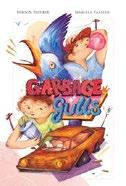
Two kids tempt gulls in a contemplative exploration of a hot summer day.
Hiding from the sun in an abandoned car in a parking lot next to the Sea Hotel, two youngsters hatch a plan. Contending with boredom on an endless day and the sticky heat, they decide to surround the car with French fries to attract sea gulls. They “salt The Sea” with littered fries and spread globs of strategically placed ketchup (“The garbage gulls can be picky,” after all). Then they wait, quietly listening for impending wings. “A few crunched bags summon squawks,” and suddenly the air is filled with gulls. “Our constellation of crumbs gathers beasts of the streets.” The flapping cacophony suddenly lifts the car and takes it to the beach! The Sea Hotel becomes the sea itself, and the youngsters’ imaginations take flight. With curved edges and rusted orange tones, Fassler’s art melts in the heat, while Plourde’s languid text both lulls and delights. The book is a dazzling debut for this author/illustrator duo. While the wonderfully surreal tale may perplex very young or more literal-minded readers (although they may be most in need of its charms), it’s a beautiful meditation that slips the audience directly into one sticky, summer moment in time. Both kids present white. Lyrical, absurd, and full of wonder. (Picture book. 4-8)

A captivating, exquisitely penned story of hope and survival.
RED BIRD DANCED
Ponweera, Thushanthi | Illus. by Maithili Joshi | Simon & Schuster (40 pp.)
$18.99 | June 11, 2024 | 9781665921718

For more summertime picture books, visit Kirkus online.
A cherished friendship is rocked by jealousy. Selvi and Divya do everything together. They bike to school, play dress-up, and share meals; they both deeply miss their mothers. The children’s ammas work overseas as domestic helpers, returning home once a year. One day, Selvi notices Divya’s new rainbow bangles—a present from her mother, who’s just come home. The clinking bangles remind Selvi of Amma’s absence. When Divya tries to share her bangles, Selvi yells and throws them away. Remorseful, Selvi later approaches Divya’s house, but the sound of laughter makes Selvi wonder if Divya really needs a friend now that she has her mother. Selvi is starting to bike away slowly in the falling rain when Divya suddenly shows up. Selvi apologizes: “I just wish my amma came back too.” Divya slides some of her bangles onto Selvi’s hand: “Now we’ll each have our own rainbow for gloomy days.” Sensing the quiet note in Divya’s voice, Selvi asks if her mother is leaving. As the sun comes out, Divya smiles and says that Selvi’s mother will be home soon with presents to share. This lyrical story, set in a Sri Lankan tea plantation, reflects the reality of many children who grow up with a parent who works far away. The children’s deep bond, briefly
fractured by feelings of jealousy, shines throughout the thoughtful writing. Colorful illustrations capture their lush surroundings and moments of joy and sadness. A moving story about friendship, heartache, and making amends. (author’s note) (Picture book. 4-8)
Kirkus Star
Red Bird Danced
Quigley, Dawn | Heartdrum (176 pp.)
$18.99 | June 4, 2024 | 9780063223622
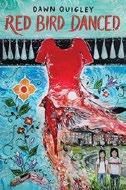
In this novel in verse, two urban Indigenous children persevere despite sorrow. Eleven-yearold Ariel’s Auntie Bineshiinh has gone missing, leaving the Turtle Mountain Ojibwe girl unable to pursue the ballet lessons she loves; the family needs the money to search for her aunt. Twelve-year-old Tomah, who lives in the same Intertribal Housing Complex as Ariel, uses humor to mask insecurities about his struggles at school. Years ago, Auntie Bineshiinh babysat Ariel and Tomah; she taught them to “see / past / what / others might / see,” and both children now confront their problems with sensitivity and perceptiveness. Ariel decides to do a school project on the crisis of Missing and Murdered Indigenous Women, and as Tomah’s grandmother teaches Ariel to perform the Jingle dance, she learns that the dance can help heal both her and
her community. Meanwhile, Tomah finds inspiration in observing the nearby birds and realizes that while he may have a reading disability, he’s a gifted storyteller nevertheless. Quigley (Turtle Mountain Band of Ojibwe) employs ample white space and inspired formatting as her potent, eloquent words dance across the page. She makes deft use of imagery: A bird motif underscores Auntie Bineshiinh’s absence (indeed, her name is Ojibwe for bird ), while Tomah uses a red dress, a symbol for missing Native women and girls, to raise awareness. The protagonists’ dual perspectives convey a mix of hurt and optimism; above all, the power of community comes through. A captivating, exquisitely penned story of hope and survival. (Ojibwe glossary, author’s note, information on Missing and Murdered Indigenous Women and jingle dancing, note from author and Heartdrum curator Cynthia Leitich Smith) (Verse novel. 10-16)
Rae, Rowena | Illus. by Paige Stampatori Orca (96 pp.) | $29.95 | April 16, 2024
9781459836945 | Series: Orca Timeline, 6

The story of vaccines and why it’s vital to get them. In her introduction, Rae notes that she was motivated by a desire to understand not only how vaccines have been developed and tested, but also the reasons why people refuse to get them. She briefly covers philosophical and religious motivations for not getting vaccinated, and while she acknowledges that vaccines sometimes have unexpected side effects, she stresses that they are extremely rare. Retracing well-traveled territory, particularly since the onset of Covid-19, Rae offers young audiences a detailed but standard-issue account
Kids save the day in this story filled with mystery, magic, and small-town mythos.
JUNEBERRY BLUE
of the historical development of biological counters to diseases and epidemics from smallpox and polio to recent advances against malaria. Throughout, she makes equally familiar appeals to logic based on comparative death-rate statistics and like scientific studies. Along with nods to Lady Mary Wortley Montagu, Louis Pasteur, and other notable figures of the past, she briefly profiles a dozen racially diverse modern medical workers and researchers. Before closing by urging readers to become “vaccine ambassadors,” she also discusses basic ways to identify misinformation and disinformation on the web and elsewhere. Dark-skinned figures are generously represented in the mix of children and scientists who appear in the paintings and photos. Injects a little fresh content but likely to be lost in the crowd. (resources, index) (Nonfiction. 11-13)
Ransom, Candice | Peachtree (304 pp.)
$17.99 | June 18, 2024 | 9781682636695

A sentient plant, hereditary magic, and a dilapidated town in the Blue Ridge Mountains set the stage for this folksy story steeped in fairy tales and local history and snaked through with tendrils of magic.
It’s the summer of Andie’s 11th year, which means it’s time for her to face her Test Day, when she’ll
demonstrate her family’s gift, one that’s passed down generationally to the eldest girl. Using key ingredients—notably “juneberries picked from the seven old original trees by the spring at true dawn”—she should be able to create a magical, life-changing recipe. For Andie, that means bringing her truck driver father home for good. But fate has other plans for her. Rather than inheriting this culinary gift, Andie finds that instead she can see and hear spirits. These ghosts have deep connections to the once-thriving factory town that’s covered in morning glories and the special soda, Juneberry Blue, that was produced there. When a property developer with dubious intentions makes an appearance, it’s up to Andie (and some otherworldly helpers) to save the town. Though the story has some loose threads and convoluted plot points, it’s charming and moves quickly. Fairy-tale aficionados will delight in the parallels and references to well-known stories peppered throughout. The intermingling of magic with everyday life adds interest, although this element, too, raises some unanswered questions. Most characters are coded white. Kids save the day in this story filled with mystery, magic, and small-town mythos. (Fantasy. 8-12)

For more by Candice Ransom, visit Kirkus online.
Riley, Ronnie | Scholastic (272 pp.)
$19.99 | June 4, 2024 | 9781339027647

A nonbinary middle schooler experiences the highs and lows of friendship.
Twelve-yearold Eden Jones is lonely. Even after switching schools, they haven’t made any friends, but they’ve been lying to their mom to keep her from worrying. This ruse works fine until Mom excitedly announces she’s throwing Eden their first birthday party with other kids. Now, socially anxious Eden, who’s white, must approach the classmates they’ve claimed were friends and invite them to the celebration. Outgoing Duke Herrera, a popular Filipino American basketball player, befriends Eden right away, bonding over being trans, while white lesbian Tabitha Holt and genderqueer Jackie Marshall, who’s Black, take a little more effort to grow close to. Even trickier to approach is pansexual Ramona Augustus, whom Duke warns Eden against. Eden finds themself with a group of friends for the first time, but as their lies pile up, their newfound social acceptance is threatened. The book’s depiction of social anxiety rings true; Eden refuses to raise their hand in class and uses breathing exercises to cope. The characters are lovable if a bit smooth around the edges; even when they mess up, each has good intentions, and conflicts are handled in a textbook-perfect
way. But Riley’s fictional world is one in which queer joy always triumphs, and that alone is a breath of fresh air.
A slightly saccharine deep dive into queer friendship. (author’s note, queer glossary, resources) (Fiction. 8-12)
Rogers, Andrea L. | Illus. by Madelyn Goodnight | Heartdrum (40 pp.)
$19.99 | May 7, 2024 | 9780063076792
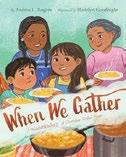
A Cherokee community observes the beginning of spring with a feast.
As the nights get shorter, “the frost melts,” and “the dark clouds flee,” it’s time to get ready for a big meal. Everyone has a job to do.
Mama puts the finishing touches on a basket, while Agilisi (Cherokee for Grandmother ) sews a dress. Meanwhile, Daddy and Agiduda (Grandfather) are busy in the garage. The young child who narrates replenishes the henhouse with hay. Soon, family and community members head into the woods to forage for wild onions. The next day, they gather at the community center to prepare the meal. “Mama stirs and cooks. Agilisi tastes and seasons. Daddy kneads and shapes. Agiduda fries and turns.” Finally, Agilisi gives thanks to the Creator, and everybody enjoys corn soup, wild onions and eggs, and grape dumplings. Rogers (Cherokee
Nation) imbues her text with warmth and playfulness; readers will smile when the narrator describes trimming wild onions as giving them haircuts. The pacing picks up in the kitchen scenes; word choice and the use of alliteration speak to the senses and heighten the excitement. Goodnight’s (Chickasaw Nation) gentle illustrations depict a supportive, tightknit community. Cherokee values—reciprocity, cooperation, respect, and kinship— are on full display. In an author’s note, Rogers reflects on the history of the Cherokee Nation and discusses the cultural significance of wild onion dinners.
Serves up a delicious story, rich in culture and community, that will bring readers back for more. (about food and recipes, glossary, a note from Heartdrum author-curator Cynthia Leitich-Smith) (Picture book. 4-8)
Rothman, Scott | Illus. by Pete Oswald Random House Studio (40 pp.)
$18.99 | June 11, 2024 | 9780593702956
Series: The Bison Family
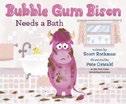
Bison avoids bubble baths… until that becomes impossible.
Bubble Gum Bison is having a great day, playing with her brother (whom readers may recall from 2022’s Blue Bison Needs a Haircut ), conducting science experiments at school, and chewing bubble gum and blowing bright-pink bubbles with her friends on the playground. Even slipping in a big mud puddle is fun until her mother insists that Bubble Gum Bison take a bath. No way! A muddy Bubble Gum Bison escapes out the bathroom window and heads to the playground, but all her friends have gone home. She accidentally falls into a giant pile of chewed-up bubble gum and then lands in a heap of feathers. Now she
Encourages kids to use their imaginations and think outside the box.
desperately wants a bath, but for some reason, the whole town is out of water. In anger, Bubble Gum Bison nearly rams her head into a rock, but she hears her brother Blue Bison ramming his head into a nearby metal pipe surrounded by a puddle of water. Could that pipe have something to do with the town’s dwindling water supply? Working together, the siblings find a way to put things right. Digitally created illustrations dominated by bubble gum pink depict an adorably anthropomorphic animal cast with big eyes and rounded features; Bubble Gum Bison’s mood shifts— from unfettered exuberance while rolling in the mud to pure irritation when she learns the water’s all gone—are a delight. Readers will wish all bad days were as fun as the one depicted here.
(Picture book. 4-7)
Kirkus Star
Seales, Stephanie | Illus. by C.G. Esperanza
Abrams (48 pp.) | $18.99
June 11, 2024 | 9781419760815
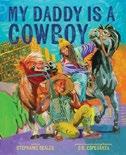
An Afro-Latine father and child awaken before sunrise for an early-morning horse ride together. The child, who narrates the story, kisses Abuelita goodbye. Then Daddy and the little one head to the ranch on his motorcycle. They greet their horses: a shiny black mare called Power for Daddy and a spunky brown pony named
Clover for the child. They ride their horses through the quiet streets of the city, and the child relishes Daddy’s undivided attention as well as the thrill of being the only ones awake. Daddy tells stories about learning to ride as a child, and they see the city begin to wake up. Feeling safe, strong, and happy, the child beams with pride. As the sun rises, painting the sky in hues of pink and gold, the bond between father, child, and their beloved horses is illuminated, and the narrator declares them both cowboys. Seales’ quiet yet energetic text brims with details sure to resonate with children, while Esperanza’s richly textured oil paintings breathe life and movement into each page. Vibrant colors and abstract design embellishments convey the immense pleasure and freedom felt by both father and child as they connect over horseback riding.
A magical celebration of family, freedom, and Black joy. (Picture book. 4-8)
Semenya, Caster | Norton Young Readers (240 pp.) | $19.99
May 28, 2024 | 9781324030973
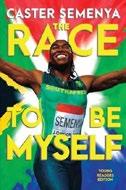
The life story of a two-time Olympic gold medalist runner from South Africa who’s faced scrutiny and prejudice. Semenya pulls no punches in the prologue to the young readers’
adaptation of her memoir. “I have what is called a difference of sex development,” she explains. “To put it simply, on the outside I am female and I have a vagina, but I do not have a uterus.” These details become relevant as Semenya describes, in painful detail, her experience with medicalized discrimination as she underwent invasive exams, hormone replacement therapy (with terrible side effects), and legal battles to be allowed to race in the 2012 Olympics. The beginning of the narrative struggles with cohesion, but Semenya tells her story in an intimate, loose, conversational tone that will make readers feel close to her. Her story is frustrating and tragic, providing an early example of attitudes displayed in the anti-trans movement currently spanning the globe. Semenya, who writes that her Pedi community always “accepted me as I was and never made me feel like an outsider,” asserts her own understanding of herself and her gender in ways that sometimes don’t align with Western medical or activist frameworks and language. While she was assigned female at birth and asserts that she’s a “proud Black woman…a daughter, a sister, a wife, and…a mother,” this story will resonate with anyone who’s felt like their gender and their body are right for them but wrong for the world. Informative and inspiring. (Memoir. 11-16)
Sicuro, Aimée | Random House Studio (40 pp.) $18.99 | May 14, 2024 | 9780593650998
Series: If You Find a Treasure

In this rhythmic concept book, seashells transform into everything from bathing caps to rocket ships.
“If you spot a shell, it could be your ride, cruising along a winding trail,” the omniscient narrator muses. Children pedal by on
bicycles whose wheels have been replaced by seashells. Sicuro incorporates photographs of shells into her mixed-media illustrations. They stand out on each page—this book is less about seeking and finding and more about expanding the imagination. It succeeds at every turn. Each scene playfully suggests what shells could become, from beach umbrellas and headphones to a Ferris wheel and kites. The book follows a tan-skinned child, out for a day at the beach with a grown-up. Racially diverse background characters populate most scenes.
Nature lovers can cross-check shells from each scene with the endpapers, which depict neat rows of photographed whelks, scallops, and more, accompanied by labels in cursive. Others will revel in wondering what else shells could be used for. Either way, they’ll enjoy this tale, which encourages kids to use their imaginations and think outside the box. The book concludes with instructions for making a sand art project and creating shell rubbings. Almost as fun as a day at the beach. (craft instructions) (Picture book. 3-6)
Smith, Jennifer N.R. | Thames & Hudson (40 pp.) | $24.95 | June 4, 2024
9780500653340 | Series: Wild Wonders, 1

Earthly phenomena in all their glory shine from the pages of this oversized celebration.
Smith’s first title in this series, Glow (2023), shone a spotlight on luminescent animals; in this vibrant introduction to earth science, she explores everything from the planet’s structure to geology-related myths and legends. A science illustrator by training, Smith aims to inspire a sense of wonder in readers; to that end, she fills her
Earthly phenomena in all their glory shine from the pages of this oversized celebration.
BANG
pages with spectacular artwork and intriguing examples. She begins by defining the word phenomenon and goes on to examine volcanoes, geologic layers, mountains, earthquakes, geysers, caves, glaciers, hydrothermal vents, auroras, clouds, storms, light, and even careers in geoscience. Each color-filled spread focuses on a single topic, with short explanations and, often, an image with carefully labeled examples. The text, set in a relatively small font and filled with appropriate but perhaps unfamiliar terms, may challenge young readers, but the imagery is striking. Neon colors grab readers’ attention. Smith fills many of her images with tiny dots, which adds depth and shading and also hints at the atoms within. The humans who appear are racially diverse. Though the book lacks notes, a bibliography, or suggestions for further reading, it includes a useful glossary and index. A work brimming with natural marvels, sure to entrance burgeoning geologists. (Informational picture book. 7-10)
Sonenshine, Randi | Illus. by Anne Hunter Candlewick (32 pp.) | $18.99 | May 21, 2024 9781536226546 | Series: Animal Habitats

Octopus makes her home under a ledge near the shore.
Detailing the life and habits of a common octopus, Sonenshine relies on the cumulative rhyme pattern that she used in The Nest That Wren Built
(2020). Once again, words and illustrations work together to introduce an intriguing and popular creature; each page ends with the titular phrase. The opening page features the colorful habitat, with the octopus inside her den, barely visible. Subsequent spreads depict the octopus excavating her den, disguising herself as she hunts a crab, evading a hungry seal, guarding her eggs, and blowing her hatchlings out into the ocean. As the book closes, the sole surviving hatchling returns to the seafloor to start another generation. Ink, watercolor, and colored pencil artwork portrays a reef filled with other sea creatures. The text and images are set on paper tinted in a light yellow-green, which complements the blues and greens of this watery environment. The verse—triplets, with pleasing alliteration and internal repetitions of vowel sounds—rhythmically describes what’s going on in each scene, cleverly conveying important octopus facts. Though there are many, many picture books about octopuses, this one will be a particular delight for reading aloud. The backmatter includes further information and an author’s note about the hard-bottom reef off the coast of Georgia that inspired the setting.
A lyrical addition to the oceanic bookshelf. (glossary) (Informational picture book. 3-7)

For more by Randi Sonenshine, visit Kirkus online.
Sad, funny, and thematically rich; loaded with feels and appeals.
Kirkus Star
Stout, Shawn K. | Peachtree (272 pp.)
$18.99 | June 18, 2024 | 9781682635872

Changes and altered perspectives come to three young people with fractured families. Deftly laying down individual nuances of disposition and character, Stout follows three preteens through and past crucial points in their lives.
Florida hurricane refugee Nell Evetts McDonough, still grieving the death of one mom, is desperate to overcome the reluctance of her other one to leave Maryland and return to their old life in Florida. Traumatized Tildy Gubbers has lost trust in her mom, who’s just come back to their Maryland town after suddenly taking off to New York City for several months. And Leon Monteforte, along with nursing a painful crush on Tildy, yearns to comfort the grieving, recently widowed grandma who raised him—by contacting his grandpa in the spirit world. Punctuated with comic relief in the form of occasional screams and chaos caused by David Attenborough (Leon’s large, scene-stealing Madagascar hissing cockroach, whose character is just as artfully animated as anyone else’s here), friendship grows in natural, organic stages as events lead to crises and, ultimately, brighter futures. Meanwhile, through flashbacks and inventive tweaks (including a hint of fantasy), the author also unfolds a thoughtful subplot about how, even though inanimate objects can become
invested with meaning, just letting them go might sometimes be best. The two-legged cast registers as white. Sad, funny, and thematically rich; loaded with feels and appeals. (Fiction. 9-13)
Hike It: An Introduction to Camping, Hiking, and Backpacking Through the U.S.A.
Tazz, Iron | Illus. by Martin Stanev Magic Cat (96 pp.) | $30.00 June 25, 2024 | 9781915569851
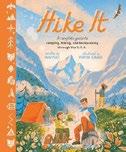
Glimpses and descriptions of 20 national and state parks and mountain ranges, woven through with information on hiking and backpacking.
With the exceptions of Acadia National Park, Great Smoky Mountains NP, and the Appalachian National Scenic Trail, all the featured destinations are significantly west of the Mississippi River, including Olympic, Yellowstone, Denali, and Sequoia National Parks. Featured topics include the 10 Essentials and the Leave No Trace guidelines; how to relieve yourself in the wild; snow, fire, and bear safety (about bears in general; specifics aren’t provided about black versus grizzly); backpacking gear and food; hydration (the author uses the term wild water for natural water sources); wild berries; extreme conditions; navigation and what to do if you’re lost; and mindfulness and Hike Your Own Hike, a phrase used to remind people not to compare themselves to others and to respect others’ choices
as well. The information is useful and will help outdoor adventurers stay safe, have fun, and ensure the preservation of each destination. Stanev’s illustrations highlight the scenery of each locale and often include common wildlife. The people enjoying the hikes are diverse, and there’s often diversity within each family or friend grouping. Spot art effectively highlights equipment, directions, and important tips. A map is noticeably missing. Solid info combined with amazing destinations make this a good intro to hiking and backpacking. (further reading) (Nonfiction. 7-14)
ten Boom, Corrie with Elizabeth Sherrill & John Sherrill | Adapt. by Mario DeMatteo | Illus. by Ismael Castro Chosen Books (240 pp.) | $23.99 April 9, 2024 | 9780800762544

A compelling account of the remarkable true story of Dutch watchmaker
Corrie ten Boom, who sheltered Jews during World War II.
Amid the chaos, she courageously became part of the underground resistance and endured the horrors of the Ravensbrück concentration camp. Rooted in her unwavering Christian faith, this graphic adaptation of ten Boom’s 1971 memoir for adults, co-authored with the Sherrills, beautifully captures the essence of sacrifice, bravery, and love for others. Each section commences with either a Bible quote or a religious reflection from ten Boom herself. The narrative paints a vivid portrait of her life before, during, and after the war. The illustrations, both powerful and evocative, showcase the prewar Netherlands and the gradual descent into extremes of human cruelty and the
harsh realities of wartime existence. A variety of techniques are employed in the visual storytelling, including dramatic cutaways, split panels, close-ups, layered cells, and panoramic views, enhancing the plot’s dynamic nature. Ragged-edged panels paired with scenes of violence and pain add a visceral element to the storytelling. To convey the sinister nature of Nazi-inspired dialogue, Castro skillfully utilizes angry, red-rimmed speech bubbles. The narrative unfolds as a sometimes tragic, often heartbreaking, and ultimately triumphant journey. The epilogue features photographs and an update on ten Boom’s postwar life, highlighting her missionary work worldwide until her death in 1983. This accessible adaptation portrays a story of resilience, faith, and enduring impact. (Graphic biography. 11-14)
Topolanski, Joséphine | Trans. by Johanna McCalmont | Blue Dot Kids Press (32 pp.) $18.95 | April 9, 2024 | 9798985849479

The ocean’s wonders enthrall a curious explorer in this immersive French import.
In distinctively vivid white-on-dark-blue illustrations, Topolanski depicts seabeds teeming with marine life, from tiny eels poking out of a sandy patch to swirling drifts of jellyfish and squid amid coral gardens and thick forests of kelp. All this abundance surrounds Kai, a fascinated diver with paper-white skin who provides a sense of scale and whose heavy-duty orange suit supplies the only notes of color other than her diminutive yellow submersible Nessy , which disappears after a few pages, once Kai ventures out to explore. In the brief narrative, basic facts and Kai’s strong responses to each moment’s encounters lyrically intertwine: “Kai is mesmerized. Jellyfish don’t have
The ocean’s wonders enthrall a curious explorer in this immersive French import.
KAI’S OCEAN OF CURIOSITIES
hearts or heads, yet they have existed for almost five hundred million years. These strange-shaped, transparent creatures look like visitors from another planet. They dance on the currents.” Kai’s “walk beneath the waves” soon comes to an abrupt end, but the author gives young readers thirsty for knowledge a final gift with a visual key identifying all the previously seen flora and fauna; aspiring explorers will be enchanted. A quick but intense tour of a world beneath the waves. (Informational picture book. 6-8)
Tordasi, Kathrin | Trans. by Cathrin Wirtz Simon & Schuster (352 pp.) | $17.99 June 4, 2024 | 9781665910194
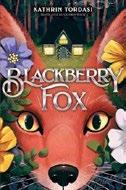
Two children embark on a once-in-a-lifetime quest in this translated title from Germany. When London girl Portia Beale visits her aunts—Rose and her partner, Bramble—in the countryside of North Wales, she isn’t expecting the adventure of a lifetime. Really, following the fox who appears one day seems like a harmless thing to do. But when the animal leads her to a mysterious door in a stone wall, Portia can’t help seeing whether there’s a magical world on the other side. Soon Rose and Ben Rees, a quiet local boy, are racing to close the door that Portia so innocently opened, beginning a quest to save both the human and faerie worlds from the powerful
Gray King, whose sinister fog threatens to suck the memories and life from all it touches. Pulling characters and inspiration from a variety of sources, including Welsh mythology and Shakespeare’s A Midsummer Night’s Dream , this fantasy relies on classic quest tropes as it meanders to the inevitable culminating battle between good and evil. The dual perspectives follow Portia’s and Ben’s journeys, which diverge at times, but this structure sadly doesn’t speed up the slow pacing. Both protagonists have strong backstories, yet their motivations fail to inspire an emotional connection. It’s unclear whether the unfortunate use of problematic terms such as spirit animal and chop, chop reflect connotations in the original text or were introduced in the translation process. All characters read white.
A traditional fantasy for patient readers. (cast list, Welsh glossary) (Fantasy. 8-12)
Turnbull, Jenny | Illus. by Izzy Burton Crown (40 pp.) | $18.99 June 18, 2024 | 9780593569078
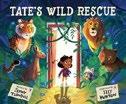
Tate would love to have a wild animal in the house…but for some reason, they’re not interested in moving in.
Determined to “rescue” the creatures she loves, Tate—a small, brown-skinned child with big, soulful eyes—writes letters to a variety of animals, declaring, “I want to save you from the wild!”
A gentle story of family environmental stewardship. AQUA BOY
Discouragingly, the lion responds to her offer of a safe home, a bath, and free meals with a “Proud Pass,” while the orca turns up its nose at the idea of living in Tate’s kiddie pool (“Sometimes I swim forty miles a day”). The grizzly bear emphasizes that it needs a den far bigger than Tate could provide (“I’ll be 800 pounds in no time”). Though some readers may question whether the trash-picking raccoons depicted in the story are really living in the wild, the author’s point about forcing wildlife into unnatural habitats is well taken, as is her closing suggestion that supporting animal conservation and rescue organizations is a better way to go. As for Tate, readers will be happy to see her connect at last with the stray dog that’s been shadowing her from the beginning and quickly becomes the perfect recipient for the promised home, bath, and meals.
An appealing invitation to consider the nuances in there being “no place like home.” (ways to help animals, websites for animal rescue organizations, author’s note) (Picture book. 6-8)
Varon, Sara | First Second (208 pp.)
$14.99 paper | June 11, 2024 | 9781250348401
Series: Detective Sweet Pea, 1
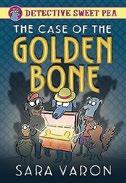
When the Golden Chew Bone mysteriously goes missing, Sweet Pea the dog is on the case.
Sweet Pea resides in the town of
Parkville, where several animal species live harmoniously… mostly. She enjoys painting, eating out of the garbage, and learning about her family history. She’s never solved a mystery before, but when the Golden Chew Bone disappears before the Parkville Art Museum’s celebration of its return (the bone had been on loan to another museum), Sweet Pea is asked to use her strong sniffing abilities to find it. Dogs regularly visit the museum to chew on the bone; it keeps their teeth clean but somehow never gets any smaller. Dental problems among Parkville dogs are now on the rise, but with the help of newcomers Jelly and Casper and insight from her great-aunt Petunia’s stories, Sweet Pea gets to work. These characters and this town feel bursting with more stories to tell; readers will be grateful that this charming and smartly crafted mystery is just the start of a new series. Varon’s cute, brightly colored, bold-lined, and immediately recognizable art style is inviting and appealing, while chapter breaks make the story accessible and contribute to the narrative’s momentum. While the mystery is delightful, this story goes deeper thematically—which is made clear when Sweet Pea exclaims, “Everyone has a different perspective based on their own experiences.” Sniffing around for an adorable, exciting, and thoughtful tale? This doggy detective delivers. (information

on Varon’s character inspiration) (Graphic mystery. 7-12)
Vrabel, Beth | Atheneum (304 pp.)
$17.99 | June 18, 2024 | 9781665918640
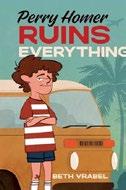
The summer after eighth grade, Perry Homer is focused on entering a prep school where he can turn over a new leaf.
For more by Sara Varon, visit Kirkus online.
Perry learned about “the rush” from his father—it’s that feeling that you’re above the rules. From Uncle Manny he learned to maximize loopholes and, from his mom, to watch for tells. But Perry longs to leave his con artist family behind, and with the help of a supportive teacher, he sets his sights on winning a scholarship to New York’s Ithaca School for Scholars, where he can be “Good Perry” from now on. Unfortunately, the Homer family must pull a few more swindles to get back home to Pittsburgh from their summer vacation, and Perry, desperate to get back in time for the interview, is quickly drawn in. A pawnshop deception and a hotel room scam keep Perry engaged in the family chaos. While the Homers are lying low at a wildcat sanctuary, Perry observes his family members finding their own measures of honest contentment. Yet he feels empty, so he sets about apologizing to the people he’s wronged. As summer ends, Perry takes off for a last-ditch chance at the scholarship interview. The Homers are antihero protagonists, and even well-intentioned Perry’s actions can seem questionable. Serious themes sometimes feel awkwardly dropped in amid the over-the-top antics, although they do support Perry’s growth. Most main characters are cued white.
An
Sniffing around for an adorable, exciting, and thoughtful tale? This doggy detective delivers.
THE CASE OF THE GOLDEN BONE
Wadhwani, Zenia | Illus. by Avani Dwivedi Tundra Books (48 pp.) | $18.99 May 7, 2024 | 9781774880944

A child of South Asian descent is mesmerized by the colorful saris in Mama’s closet. When Mama calls out to Avani, the child worries about getting in trouble; the little one is surrounded by a pile of Mama’s saris. But Mama smiles gently as she recalls her own childhood fascination with her mother’s saris. As she folds and packs away the garments, she tells Avani the story behind each sari. From her first sari—a minty chikankari sari from Lucknow given to her by her father—to a bright Gujarati bandhani sari covered by tiny, twinkling mirrors to a golden kanjivaram from Tamil Nadu to her glittering red wedding sari, each one evokes fond memories. When Avani spies a carefully wrapped sari, her mother becomes wistful as she unfolds her own grandmother’s faded sari. She recalls how Avani’s great-grandmother had to flee her home during the Partition of India and make the perilous journey to safety. She passed on the sari to Avani’s mother as a reminder of their family history. The narrative flits quickly from one sari to the
next, and though it’s heartfelt, the lighthearted tone set up as Mama recounts fun personal memories makes the jump to the Partition feel a little jarring. Stylized, comic-style illustrations feature traditional sari colors and designs; the artwork is laced with hints of the rich variety of handcrafted saris. A celebration of culture and memory. (Picture book. 4-8)
Wilson-Max, Ken | Candlewick (32 pp.) | $17.99 | May 21, 2024
9781536236644 | Series: Wonder Kids

A gentle story of family environmental stewardship.
Aaron and his sister, Angel, live by the ocean, where they and their parents serve as ocean guardians, volunteers who take care of the beach. Angel, a strong swimmer for whom the ocean is a second home, has nicknamed herself “Coral Girl,” but Aaron fears going underwater. Mom and Dad reassure him that one day he’ll be ready. Later, a big storm litters the beach with trash, which the ocean guardians clean up. The children fantasize about finding a way “to clean up the ocean for good”: with a huge vacuum cleaner, perhaps, or a robot fish. When Aaron finds an octopus stranded on the shore, Dad encourages it to wrap itself around a branch and puts it back into the water. Mesmerized, Aaron watches the octopus as it
stares back at him. Aaron dons his goggles and goes underwater to watch his friend swim away. His fear banished, Aaron embarks on a new relationship with the ocean as he observes wildlife—and always keeps an eye out for his friend the octopus. Wilson-Max’s deeply saturated, thickly outlined acrylic paintings depict vibrant scenes of ocean life and effectively capture the love between Aaron’s family members, their passion for this coastal habitat, and their frustration upon witnessing ocean pollution. Aaron and his family are brown-skinned. Certain to instill a passion for the ocean and its many wonders. (information about octopuses, the impact of trash on marine life, and the role of ocean guardians) (Picture book. 4-7)
Windness, Kaz | Simon Spotlight (32 pp.) | $17.99 | May 7, 2024
9781665944274 | Series: Ready-To-Read
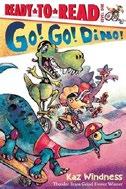
This early reader follows four friendly-looking dinosaurs as they embark on a race. A unicycling T. rex, a skateboarding Brontosaurus, a roller-skating Stegosaurus, and a tricycle-riding Triceratops (of course)—all wearing helmets, some with kneepads—compete in a competition that might not be exactly fair but is clearly fun. Apparently unaware of the fable of “The Tortoise and the Hare,” Brontosaurus stops off for a leafy lunch and then a nap. The race official, a whistle-wielding pterosaur, cries, “STOP! STOP! STOP!” but is unable to prevent a wildly pedaling T. rex from overrunning the smaller Triceratops. When their wheels bump, all three (awake) creatures land in a tangled heap. Momentarily, Stegosaurus has a free path to victory, but right before
amusing story that asks readers to engage with moral gray areas. (Fiction. 8-12)crossing the finish line, Stegosaurus thinks, “First is such a lonely place without friends to share the race” and turns around. The crash victims climb aboard Stegosaurus’ back and finish the race together. Such generosity elicits rousing cheers from the dinosaur spectators. Their noise wakes Brontosaurus just in time for her stretched-neck finish. It’s a four-way tie! Everyone is happy and eager to do it once again. The dinosaurs’ whole world glows snow cone blue and raspberry. The big-eyed cartoon figures sport colorful shirts, scales, and goofy expressions. The compositions are dynamic, the pace is fast, and the rhythms and rhymes are faultless and funny.
An irresistible, everyone-wins rhymefest. (Early reader. 4-6)
Woodfolk, Ashley | Illus. by Niña Mata Simon & Schuster (40 pp.) | $18.99 June 4, 2024 | 9781665920988
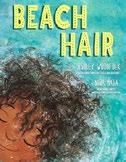
An impromptu beach adventure sprouts from the bed heads of a loving family. A young, curly-haired, brown-skinned child awakens to a hairdo that just screams “beach day,” according to Mommy and Daddy, who sport similar but distinct bed heads of their own. Their skin tones and hair textures (Mommy presents Black, while Daddy is pale-skinned and darkhaired) are a welcome reminder that family members often look different from one another; indeed, highlighting difference becomes a prominent element throughout the book. Woodfolk and Mata celebrate differences, from the hats the family dons to leave home (“Mommy’s is wide and bendy,” “Daddy’s is pulled down low and tight,” “Mine looks like the bucket I’ll shovel sand into soon”) to people’s beach hair they
come across when they arrive (“TWISTY and TWIRLY,” “ORANGEY and OILY”). The trio quickly remove their hats when they realize that everyone else’s hair is “WILD and FREE.” The sun is shining, the water looks inviting, and who can resist the palm trees, birds, and splashing beach visitors, brought to life by spirited, full-color digital illustrations? Woodfolk describes the beachgoers’ various hair textures, colors, and styles with delightful similes that compare hair to everything from “slippery seaweed” to “soft-serve ice cream,” which will elicit laughs in readers, just as with our protagonist. A radiant love letter to family, beachy summer days, and the freedom to let your hair down. (Picture book. 4-8)
Woodward, Megan | Illus. by Risa Rodil Aladdin (40 pp.) | $18.99
June 25, 2024 | 9781665927987
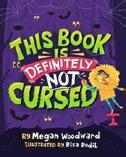
Beware! This book is definitely cursed… with giggles. Clustercrump McTootyboots, an adorable creature with long golden hair, bold green eyes, and a striped blue-green jumpsuit, is the cursed narrator of this cursed book. But if Clustercrump can trick enough people into reading the book, readers will be cursed and Clustercrump will be set free at last. Clustercrump informs readers, “If you have any of the following symptoms, it means the curse is already working: The wiggles.
The giggles. Trouble licking your elbow. A heartbeat.” Uh-oh…could the curse be working already? And what does the curse entail? For starters, it makes everything taste like cabbage, and it makes nose hair grow long and fast. Worst of all, readers will forget their names and begin calling themselves “Clustercrump McTootyboots.” Luckily, the curse can be reversed, and Clustercrump helpfully provides absurd, impossible, and giggle-worthy step-by-step instructions that must be followed to the letter. But even if readers don’t manage to reverse the curse, the bright side is that they’ll have a lifetime supply of nose hair that looks like noodles and tastes like—you guessed it, cabbage. Rodil’s illustrations feature splashes of bold contrasting colors and varied and even bolder font choices that heighten the drama and humor of this story. Goofy, gross, and just plain giggle-worthy. (Picture book. 4-8)
Wynter, Anne | Illus. by Shirley Hottier Little Bee Books (40 pp.) | $18.99
June 11, 2024 | 9781499814460
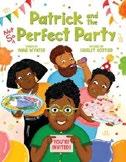
A young boy with perfectionist tendencies throws a birthday party. Patrick loves cooking; he’s meticulous in his slicing and dicing, and the meals he whips up for his parents and his brother, Russ, meet with lip-smacking approval. He’s just as careful with his preparations for his
A radiant love letter to family, beachy summer days, and the freedom to let your hair down.
BEACH HAIR
upcoming birthday party. Patrick gets precisely the decorations and party menu he wants, and Russ types up the invitations as Patrick dictates: Guests are requested to dress as their favorite food. But Patrick’s bewildered when nobody shows up to the party in food garb. Uh-oh. Instead of “favorite food,” Russ typed “favorite foot.” No wonder guests came as socks, skates, and “sparkly toenails.” For Patrick, the best part of the party is when it finally ends. Afterward, Dad compliments the tea Patrick blended; over the next year, Patrick lovingly works on the perfect pot of tea. Next year’s party theme? A tea party! Guests are invited “to wear a fancy hat.” Will they? Hint: Russ makes another typo. Children will laugh over the hilarious ending; indeed, they’ll giggle their way through this uproarious book—and perhaps realize that learning to be a bit flexible can be a lot of fun. The colorful illustrations are a dynamic hoot, and the costumes will spark great ideas. Plump, curly-haired Patrick and his family are brownskinned; note his spiffy green-and-yellow-striped eyeglasses. Guests are racially diverse; one uses a wheelchair. Maybe not a perfect party, but a perfectly entertaining read; no special invitation needed. (Picture book. 5-8)
Young, Judy | Illus. by Sharisse Steber
Sleeping Bear Press (40 pp.) | $18.99
April 15, 2024 | 9781534112773

An alphabetical introduction to common hiking essentials, rules, and practices as well as national parks.
Each letter of the alphabet is devoted to a different topic, though the entries share some similarities. A rhyming verse set against an illustration introduces the letter’s topic:
Take in the images and text...and dream of your next adventure.
T IS FOR TRAILS
backpack, clothes, hydration, leave no trace, urban hiking. Along the left or right sides of each page, lengthy text boxes provide more detail and suggest a trail to hike (the trail or national park name starts with the page’s featured letter), along with its location, distance, and level of difficulty. While Young’s verses are hit or miss in terms of rhythm, the longer texts are solid introductions to topics that are important to hikers: wildlife, what to do if you get lost, and the 10 Essentials to pack with you. Steber’s illustrations are the real stars, bringing to life the wonders that can be found in the national parks (two in Canada, the rest in the United States). Beautiful scenery, rock formations, plants, and wildlife dot the pages; a map would have enhanced the package. People are diverse in terms of race, body type, age, and ability. A final spread introduces the parts of a compass and includes rudimentary instructions on how to use one. Take in the images and text…and dream of your next adventure. (Informational picture book. 5-10)
Kirkus Star
The Pelican Can! Yuly,
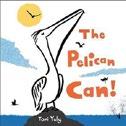
What can pelicans do?
As this lively picture book shows, this large-billed bird with an oversized
pouch can do quite a lot, especially when there’s a hungry mouth to feed back at home. As our protagonist soars through the air, it pays careful attention to marine life swimming below, diving from the sky to “scoop a delicious fish soup.” Naturally, some of this catch ends up being shared with its mate and its chick upon its return to the nest. Repetitive, rhyming, call-and-responsestyle text makes this one a sure bet for the younger set. “Who can fly up in the sky?” “Who can spy small fish with their eye?” “Who can dive down so fast?” Each time, the answer is an enthusiastic “The pelican can! The pelican can!” Though some might have wished for backmatter with more information about pelicans, it’s a small point. Yuly’s torn-paper, ink, and digital-media artwork is the standout here. Each page is saturated with blues, pinks, or purples. On some pages, the pelican is silhouetted in black, while on others, it’s rendered with just a few strokes of black ink. Yuly imbues her subject with verve and energy; readers will be just as eager to see the results of the pelican’s flight as the birds waiting back home in the nest. Will prompt well-deserved appreciation for this unique bird. (Picture book. 4-7)

For more by Toni Yuly, visit Kirkus online.

IN MARCH, award-winning middle-grade author Katherine Marsh set online kid-lit communities on fire with a frank post on the Nerd Daily website about the preferential treatment of—and entitled behavior by—male authors in a largely female-dominated industry. Her remarks reminded me of an exchange I had with Jennifer Sweeney, a librarian in Rosendale, New York, about a type of book that’s all too prevalent. Jennifer wrote to me:
“Personally, I am over books about middle-class white boys characterized as ‘mischievous’ who really

come across as borderline sociopathic. As a mom of boys, I’ve sat them down and (gently) lectured [them] that everyone needs to take accountability for their actions. These types of books seem to quietly validate the insidious notion of ‘boys will be boys.’ If reading fiction is supposed to help build empathy, these books strike me as doing just the opposite and reinforcing white privilege and male entitlement (like it even needs any reinforcement).”
It’s not that middle-class white boys shouldn’t get to be gleefully childish, of

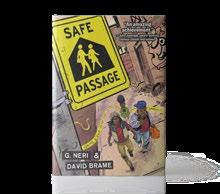
course. But the world too rarely affords anyone else this freedom (in books or in real life). Indeed, I’ve noticed a striking pattern in which the feckless white boy protagonist is kept in check by an uber-responsible, hyper-competent girl sidekick, a dynamic that troublingly foreshadows the unequal division of emotional and cognitive labor in many straight relationships.
releases all the more valuable.
Strong Like You by T.L. Simpson (Flux, March 12): “I haven’t cried one time since you disappeared”: An Arkansas high school football player’s search for his absent father takes him on a profound emotional journey.

YA books such as Louise Finch’s remarkable 2023 Kirkus Prize finalist, The Eternal Return of Clara Hart —which unpacks toxic masculinity in accessible and engaging ways that speak directly to boy readers—are still vanishingly rare. Of course, people of any gender can enjoy any book: I wish I’d been able to recommend Finch’s novel several years ago, when I was speaking with a frustrated teacher who was trying to disrupt boys’ disturbingly misogynistic behavior while some of the girls defended them as “just joking around.” Still, there’s a stark contrast between the abundance of books about girls actively engaging with gender norms and the relative dearth of ones about boys doing the same—books that would hold up mirrors to boys and reflect their emotional lives and relationships. That lack makes the following new
Safe Passage by G. Neri, illustrated by David Brame (Tu Books, March 26): In this graphic novel, a boy navigating dangerous, gang-controlled neighborhoods in Chicago grapples with pressures from his social media–influenced best friend and with his loving stepfather’s advice.
Brock , Pike, Rook , and Lark by Anthony McGowan (Union Square & Co., April 2): These interconnected novels explore with honesty and heart the complex relationships between two brothers, one with developmental delays, and their single dad. (Read an interview with McGowan on p. 146.)
Escape From St. Hell by Lewis Hancox (Graphix/ Scholastic, May 7): This graphic memoir, which follows a teen’s coming out as trans as he figures out how to remain true to himself, unpacks messages about being a “real man.”
Laura Simeon is a young readers’ editor.
LAURA SIMEON Illustration by Eric Scott AndersonA chronicle of the area comprising the present-day U.S. beginning in 1492 and told through the history of the labor movement.
Starting with Christopher Columbus—who “fanboyed [Marco] Polo hard” and set out in search of Asia—and moving forward to the union strikes of 2023, Mann explores the often oppressive, abusive, and bloody history of labor conditions and the merciless rise of capitalism with wit, snark, and comprehensive context. Taking a linear approach and covering colonization, slavery, industrialization, two waves of Red Scares,
economic depressions, and neoliberalism, the text shows how difficult the fight for workers’ rights has been and how capitalism has depended on oppression. Highlighting incidents that aren’t often taught in schools (such as the Thibodaux Massacre of 1887 in Louisiana and the 1914 Ludlow Massacre in Colorado), Mann explains how government agencies were often employed to restrain and even kill workers who were fighting for their rights and how narratives of union corruption have been utilized to breed distrust. Readers learn that white male workers
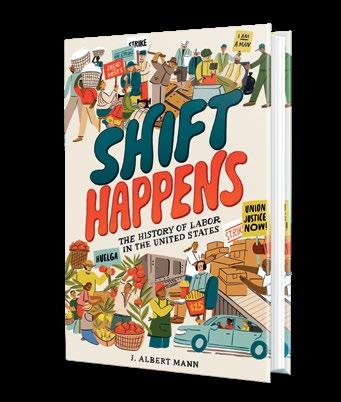
benefited most often from any progress made in assuring better working conditions and pay. The short, engaging chapters keep the narrative moving along at a quick clip, and the conversational tone
makes this a compelling reading that celebrates the ways unions have saved lives. Riveting, enlightening, infuriating, and timely: compulsory reading (source notes, bibliography, index) (Nonfiction. 13-18)
159
Afzal, Zulekhá A. | Rock the Boat/ Oneworld (320 pp.) | $20.00
June 11, 2024 | 9780861545070
Series: Dancers of the Dawn, 1
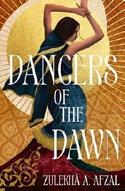
In a magical world of dunes and sea, Aasira is determined to prove her loyalty to queen and country. Once united as the country of Larijaah, Amaar and Mezeer are now two kingdoms in conflict. The dancers of the dawn, girl assassins with rare magical abilities, combat Mezeeri operatives who are spreading lies about Amaar’s queen’s misuse of water magic at the expense of Mezeer’s drought- and famine-stricken commonfolk. Aasira, recognized for her potent fire magic, serves as the executioner among the dancers-in-training, but she’s despised and under constant suspicion—her mother was a turncoat general who’s now mistrusted by Queen Sana. But when a surprising incident leads to Aasira’s competing for a coveted position in the Queen’s Guard, these shifting dynamics reveal long-held secrets and schemes that jeopardize the kingdom’s stability and lead Aasira to question everything she’s ever believed. This duology opener blending magical dance and warfare is set in a South Asian–inspired world that contains Islamic elements and naming conventions. The story’s strengths include an engaging premise, complex and varied plot twists, and intricate attention to cultural and dance elements, but the uneven narrative pacing, occasional repetition, and ever-increasing array of characters (who can be difficult to track) result in a climax that lacks some cohesion and emotional buy-in. Nevertheless, readers will look forward to more developments in the follow-up.
An intriguingly choreographed debut. (author’s note) (Fantasy. 12-18)
A journey with heartwarming highs and heartbreaking lows.
Baldwin, Erin | Viking (304 pp.)
$18.99 | June 4, 2024 | 9780593622698

A teenage girl’s summer camp stay is complicated by the arrival of the popular girl from back home.
Summer camp is supposed to be Juliette BarreraWright’s safe place. At home she has to share the spotlight with her six siblings, and there’s nowhere to escape Priya Pendley, her hometown’s uber-wealthy, social media–famous it girl. Priya is gorgeous, always perfectly polished, good at everything, and, worst of all, extremely likable, which only serves to highlight Juliette’s perceived inadequacies. But at Fogridge camp, people embrace Juliette for who she is, and that allows her to shine. This summer is supposed to be extra special: Not only is it her last year as a camper, but she’s also been voted in as the North Star, a role of honor that grants her privileges, such as a private cabin to be shared with a new camper whom she’ll mentor. Juliette’s satisfaction is cut short, however, when she learns that her mentee is none other than Priya herself. Now the summer is at risk of being ruined unless Juliette can find a way to get along with her biggest frenemy. Priya and Juliette are both biracial (each has one white parent), and the supporting cast is diverse. With a charming, conversational narrative voice and an idyllic camp setting, this light romance hits the right marks for a poolside read. A sunny, Sapphic rom-com. (Romance. 13-18)
Bayron, Kalynn | Bloomsbury (400 pp.)
$19.99 | June 25, 2024 | 9781547609765
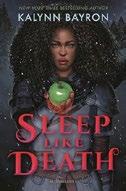
A bewitching rendition of “Snow White” with bold Black women at its heart.
Sixteen-year-old Princess Eve, who’s called “the Queen’s fury” by the people of Queen’s Bridge, was born with magic into a destiny that’s filled with foreboding. She’s been groomed to fulfill her true purpose: to slay the Knight—“a myth made real. A monster”—who haunts and terrorizes the queendom. The Knight becomes Eve’s obsession; while she trains to harness her powers to one day kill the Knight, she collects stories about him and studies them for clues. This enigmatic figure offers wishes to desperate people at a perilous cost, twisting even the most carefully crafted desires to his advantage. After all, Queen Sanaa, one of Eve’s mothers, wished to have “the loveliest voice in all the land” so she could sing to her love, Queen Regina (Eve’s other mother), and Eve, too. The Knight transformed her into a nightingale. Eve and Mekhi, the son of landowner Sir Gregory who has his own reasons for loathing the Knight, attempt to track the monster down. But a shocking revelation leads to Eve’s going into hiding and the Knight’s resurgence. Eve must decide whether to emerge from the shadows and risk everything to end his hold over Queen’s Bridge once and for all. This vividly realized, page-turning reimagining of a
beloved tale includes enticing secrets and a central journey with heartwarming highs and heartbreaking lows. A spellbinding narrative of betrayal, redemption, and the enduring magic of maternal love. (Fantasy. 13-18)
Bradley, Andre L. | Tiny Ghost Press (306 pp.)
$21.99 | June 11, 2024 | 9781915585165
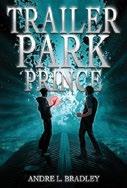
Two royals from the planet Kayda try to get by while living among an alien diaspora based in a trailer park community on Earth.
Kaydans closely resemble humans, although they have supernatural powers and copper- colored tattoos running from their hands to their shoulders, something that’s earned them the slur coppers . They’re also persecuted by a hate group called the Riders in His Holy Name. Kaydan princes and twin brothers Noan and Jormon, who live in a Georgia trailer park, struggle with their identities as outsiders. Noan throws himself into studying Kaydan magic from an ancient text, while Jormon grapples with being a closeted gay teenager. The brothers befriend Dirk, a Kaydan boy raised as a human in Alabama, after they save him from becoming the victim of a hate crime. Even as Noan, Jormon, and Dirk try to integrate with their human peers at the local public school, they’re bullied by the other kids and targeted by the Riders. Bradley has crafted a rich metaphor for racial oppression that’s unflinching in its depictions of prejudice and violence, such as in the opening scene, which features a burning cross outside Noan and Jormon’s trailer. The chapters rotate among the three boys’ perspectives, showing different points of view about what it’s like being Kaydan and how to resist the hate they face. Their narratives question the use of violence and interrogate how leaders ought to respond to it.
An intense ride that raises tough questions. (Science fiction. 14-18)
Bryan, Ali | DCB (304 pp.) | $16.95 paper May 11, 2024 | 9781770867406
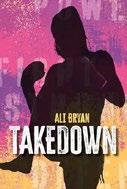
A teenage wrestler battles outsized opponents in all aspects of her life.
Rowan, a Canadian high school wrestler, is feeling helpless and pulled in multiple directions: Her father is suffering from ALS, she’s training for a major tournament in New York City that will attract college recruiters, and her influencer best friend, Pia, her usual sparring partner, is injured. Complicating things even further, she’s caught between two very different boys— Ozzy, her high school boyfriend who’s a budding Shakespearean actor with two dads, and Caspian, an up-and-coming mixed martial arts fighter with a complicated past. After Rowan stumbles upon a new ALS treatment available only in Sweden, she desperately seeks opportunities to make some fast cash, even if that means participating in an illegal underground fighting ring and possibly jeopardizing her college wrestling career. Sports fans and reluctant readers alike will enjoy the detailed, fast-paced wrestling matches and blow-by-blow MMA fight scenes. While Rowan is a fully realized protagonist, the myriad problems she faces leave little room for in-depth development of most side characters. With so much focus on Rowan’s training, love life, and her dad’s illness, the wrestling tournament feels almost like an afterthought. Once it arrives, however, the pacing ramps up from steady to fast and furious. Rowan and Caspian read white; Pia is coded Indian Canadian, and Ozzy is “half Lebanese.”
Visceral and violent yet ultimately hopeful. (Fiction. 14-18)
Callen, Rocky | Henry Holt (272 pp.)
$19.99 | June 25, 2024 | 9781250861894

Leticia Rivera is a pro at outracing her problems— until she isn’t.
Sixteen-yearold Leti is a street racer in Maryland, something her older brother and primary caregiver, Santos, taught her—from driving at age 11 to mastering auto mechanics. Santos wanted her to be confident and know that the road was hers. Attending the fancy Philmore Academy on scholarship, Ecuadorian American Leti sticks out at the private school—“my body doesn’t fit into this uniform just like I don’t fit into this school”—and she’s not interested in the sexual advances of wealthy, popular Derek O’Neil, school quarterback and her rival on the underground racing circuit. Leti endures sexism, fat shaming, a barrage of microaggressions, and being abandoned by her best friend in favor of the popular kids, effectively solidifying her status as an outcast. She’s falling for fellow outsider Jacob Fleckenstein, an autistic boy who’s full of kindness and has a passion for outer space. Leti’s dreaming of getting an invitation to the Underground Race, with “winnings so big they could carry me far away,” when tragedy strikes. The novel starts out strong with its compelling setting, no-nonsense protagonist, and cast of quirky side characters, but it falters in melding together a love story, a tale of redemption, an underdog storyline, and a plotline about grief. Readers might stay for the action but become overwhelmed by the number of elements, some of which are executed less skillfully than others. A bumpy but largely enjoyable ride. (Fiction. 14-18)
Cast, Kristin & Pintip Dunn
Delacorte (336 pp.) | $19.99
June 11, 2024 | 9780593649305

Ten promising young Oklahomans board a yacht to celebrate their induction into a prestigious society—but not all will reach their destination alive.
Naya doesn’t fit in with the wealthy clique of inductees into the Yates Society, but she plans to do her best to enjoy the celebratory cruise to Bermuda anyway. Her fellow passengers include Étienne, her French boyfriend; Taylor, her best friend; Finn, Taylor’s boyfriend; Harvard-bound Amelia; young student teacher Mr. “Call Me Derek” Cunningham; swim team heartthrobs Brett and Gabe; Everly, who writes an online gossip column; and Yana, Naya’s former bestie. Newspaper intern Yana has her own secret motive for being there: An anonymous text tipped her off to a major scandal that she could break open. But when someone turns up dead, Yana’s desire shifts to finding the murderer aboard. The bodies pile up as the yacht encounters stormy waters. Naya and Yana have avoided each other for years, but they’ll have to team up if they want to survive. This locked-room murder mystery is weighed down by weak prose and wooden dialogue. Attempts at humor undermine the sinister subject matter and lend the story an uneven tone. Naya and Yana are well developed as individuals, but the other characters are defined solely by their unlikable traits. Naya is biracial (Black
and white), and Yana is Thai American; both reflect on their experiences as the only non-white inductees. An intriguing but ultimately lackluster whodunit. (Mystery. 13-18)
Cerilli, Matteo L. | Tundra Books (328 pp.)
$17.99 | June 4, 2024 | 9781774882306
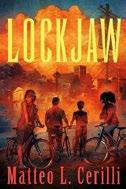
Horror lurks in a small town. People mind their own business in Bridlington. A crew of 11-yearolds, led by spirited Paz Espino, who’s Latina, bike around the forbidden places in town, and the police chief and his son keep everyone in line. When Asher Gordon, a white trans runaway, comes to town, his presence stirs up tragic memories and even more tragic ghosts. Told in multiple third-person perspectives—from major characters to Asher’s dog, Bird, to the town itself—the story experiments with temporality and moves forward in fits and starts, often stopping just when some interesting action occurs to go back to a different character or different timeline. There’s plenty of on-page oppression; while slurs are never written out, they’re described (for example, as “a break in your armor,” for Vietnamese genderqueer Beetle, or adding “a ‘y’ to a known fact,” which requires readers to mentally run through possible insults). Repetition is used to middling effect: A “rotten” smell pervades the town, slushies indicate the presence of a child, and
The cast of characters in this delightful and honest story is endearing.
QUEERCEAÑERA
characters’ experiences of feeling too hot or too cold stand in for other atmospheric descriptions. Supernatural horror and the banality of evil intertwine as the story twists and turns, the bad guys (and gals) get their due, and those who deserve to eventually triumph. A little more challenging than rewarding. (Horror. 14-18)
Chadha, Olivia | Erewhon (384 pp.)
$18.95 | April 23, 2024 | 9781645660279 Series: The Mechanists, 2

In this sequel to 2021’s Rise of the Red Hand , separated teens work together to stand against government control.
Six months after the fall of the Narrows, the members of the rebel group Red Hand face an ongoing threat from the South Asian Province’s government and the Planetary Alliance Commission in the form of an ominous mindcontrolling program called Solace. Ashiva struggles to become an inspiring hero for the Red Hand, despite being unable to fully sync with her new SynGenesis, a deadly and advanced bio-mechanical arm. When their base is targeted, Ashiva, Synch, and Taru, along with the remnants of their Red Hand teams, strive to complete their respective missions and take down Solace. Although the South Asian leads’ individual voices are differentiated, Synch’s and Taru’s character development is lacking. The three different points of view become repetitive, and the pacing builds within each chapter and then slows when the perspective shifts. Social inequality is clearly depicted through technology; for example, in the contrast between the prosthetic limbs required by wounded residents of the Narrows versus the cosmetic neural-synchs
used by those in Central. Similarly, Chadha explores the necessity for human oversight of machines in a well-developed way. The story is grounded in parallels to other real-life concerns, such as worldwide environmental destruction, political truth-spinning, and a space colony that’s “a big escape pod for the rich.” Thought provoking and intriguing despite the slightly repetitive narration and uneven pace. (glossary) (Dystopian. 14-18)
Collins, Abigail | Bold Strokes Books (240 pp.) | $15.95 paper
April 9, 2024 | 9781636795843

A Sapphic romance between a ghost and the girl who can see her.
For high school senior Astra, talking to ghosts is a daily occurrence. She shares this trait with her mother, who was forcibly committed by Astra’s father several years earlier. Astra keeps to herself, hiding her ability from her mom and avoiding close relationships with classmates—that is until the day the cute ghost of 16-year-old Isla asks for help completing what Astra dubs her “anti-bucket list.” Isla’s influence forces Astra out of her shell, opening her up to normal teen experiences, such as attending prom and befriending track team legend Oliver, who’s gay (Astra is cued bisexual). As the girls grow closer, Astra realizes that Isla is hiding significant details about how she came to be a ghost—details that could have major ramifications for the pair’s future. Astra’s mother and Oliver are compelling yet underdeveloped supporting characters. Near the book’s conclusion, a significant plot twist comes to light, and the author unfortunately utilizes harmful disability tropes to propel the story. Astra and her mom are described as having dark skin and
“unruly black hair”; Isla and Oliver read white. Astra is implied to have sensory processing sensitivities. A promising premise marred by ableist tropes and weak character development. (Paranormal romance. 14-18)
Crespo, Alex | HarperTeen (304 pp.) $19.99 | May 7, 2024 | 9780063257405
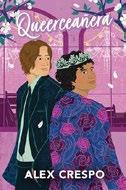
A coming of age in the wake of the coming-ofage party.
Between his best friend, April; his older sister, Carmen; and his divorced dad, Mexican American Texan teen Joaquin has a strong support system. They all adore him and fully accept the fact that he’s gay—but not having his “traditional Catholic” mom’s support still gets to him. It’s not even that she openly rejects him, either; it’s…complicated. To help make up for that difficult relationship, though, Dad and Carmen come up with the idea of throwing Joaquin a queerceañera. Sure, he’s 17 and a boy, but his extended family is into it, and they’re all happy to celebrate him. Planning the event is stressful but also enjoyable—or it is until his mom starts expressing negative opinions, such as “It’s a bit silly to be playing dress-up like this, no?” Enter Felix, her godson who just wants to help. But lying by saying he’s going to be Joaquin’s chambelán, or escort, quickly escalates, and now the whole family thinks they’re boyfriends. The fact that Felix was Joaquin’s best friend and first kiss (who later ghosted him) only makes the situation more awkward. The cast of characters in this delightful and honest story is endearing, and their lively banter helps make for a page-turner. Between the hilarious family antics and the Spanish that’s seamlessly woven throughout, this book doesn’t miss. Impossible to put down. (Romance. 13-18)
Dhaliwal, Aminder | Drawn & Quarterly (400 pp.) | $27.95
May 28, 2024 | 9781770466999
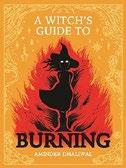
A young witch whose magic has been burned away undertakes healing journeys both physical and metaphorical in this graphic novel that was first serialized on Instagram. Mingling riveting illustrations that incorporate fades, flashbacks, and other cinematic effects with a typographically venturesome narrative, Dhaliwal tells a tale of heroic exploits in which allegorical elements are never far beneath the surface. Burned at the stake but rescued by a pair of helpful (if often annoying) witches on a quest of their own, dark-skinned young “Singe” goes in search of her real name and the rest of her burnedaway memories, as well as her lost magic, while her body slowly recovers. Along the way to a climax on the shores of Perish Lake, she meets other witches—notably Smoke Witch, a collective gathering of burnt but still aware ashes that rides the night wind—and engages in desperate struggles with three powerful, vividly portrayed demons: Disgust, Doubt, and Despair. The author’s imagination and graphic skills outpace her literary chops, but there’s plenty of entertaining friction and bonding in the colorfully wrought cast, and more than enough action in the plot to make it easy to overlook awkward phrasings and inappropriate word choices. Said plot does take some arbitrary turns, perhaps so that the ending can be left conveniently open. Still, it’s a grand adventure in a richly articulated setting, featuring a racially diverse cast and clever twists aplenty. A few rough bits but inventive and visually stunning. (Graphic fantasy. 12-16)
The acclaimed English author’s latest books open doors to all readers.
BY LAURA SIMEONANTHONY MCGOWAN’S remarkable quartet of interrelated but stand-alone titles— Brock , Pike, Rook , and Lark —are being released in the U.S. on April 2 as part of Union Square & Co.’s Everyone Can Be a Reader series of dyslexia-friendly titles for children and teens. In 2020, Lark won a Carnegie Medal, the most prestigious British award given to writing for young readers. These books stand out for their robust character development, vivid sense of place, propulsive plots, and deep emotion. The close-knit brothers at the heart of the stories face family trials and local bullies but also have glorious (and risky) adventures in the wild places near their home. McGowan spoke with us over Zoom from his home in London; the conversation has been edited for length and clarity.


What were you like as a teen reader?
The small town where the boys live is a real town in Yorkshire called Sherburn in Elmet. I was brought up there, but I went to school in Leeds. I was geographically an outsider because I lived 15 miles away, and I was thought to be quite posh—both of my parents were nurses, so not posh in any real objective sense, but [posh] compared to the really poor local kids. Also, there wasn’t a great culture of learning at my school. I liked learning; I was a reader quite early on. So as a bit of a weird character, I should have had a terrible
time. There was lots of violence, but luckily, I was quite good at sports and quite tall for my age. So I didn’t really get sucked into that terrifying inferno—it was a tough school, a dangerous school, but one in which I kind of thrived.
I heard about the tragic death of your former teacher. Back when I was at secondary school, no one ever got really badly hurt, because there were never any knives involved. In the U.S., you have issues with guns; in the U.K., our version is knives, but that’s quite a recent phenome -
non. I did lots of research on this issue for an earlier book I wrote called The Knife That Killed Me. Twenty years ago, knives started to be part of school culture in England, and [in 2014] my teacher was stabbed to death—the same teacher I’d had all those years ago, back in 1976. [She was] near retirement, and then this terrible tragedy happened.
What led you to write for this audience?
The early teenage books I’ve written are quite difficult—they’re intellectually challenging [and] not for reluctant readers at all.
They’re set in my environment, but they’re not the kind of books that will draw in the kids who don’t normally read. But there’s a publisher called Barrington Stoke in the U.K. who produce books for young people with dyslexia. I was asked to write for them, so I decided to adapt my style to become more direct and to spend less time trying to show off and prove to the world how great I am at complex metaphors and similes and how many other books I’ve read. It’s certainly made me a better writer. I’ve always wanted to drag in boy readers, which are a subset of that
reluctant reader group. The Barrington Stoke way is to have quite straightforward language, quite short chapters, quite short books, so that those reluctant readers get that satisfaction of finishing a chapter and then finishing a book and having a lovely moment of silence when the book finishes.
How did these books make you a better writer?
In my early books, a lot of the language is kind of over-the-top comicgrotesque language or exuberantly violent language—and perhaps I just took my eye off the ball about why people really want to read. They fall in love with characters, they care about them, they get invested in them, and they want to find out what happens to them. It made me think about those core issues that make a great book a great book and [made me] stop showing off.
What comments from readers have meant a lot to you?
My favorite responses are from those readers we’re talking about, the people who have perhaps never read a book before: “I’m not a reader, I don’t like books. I liked yours, though—that was all right.” The hairs on the back of your neck stand on end; that’s brilliant. But also, I wanted to make the appeal of the books as wide as possible, so I’ve heard of plenty of more enthusiastic readers who’ve enjoyed them as well. I’m fundamentally a bad person—I like making
I’m fundamentally a bad person—I like making people cry.
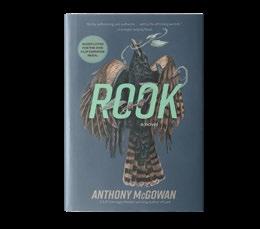
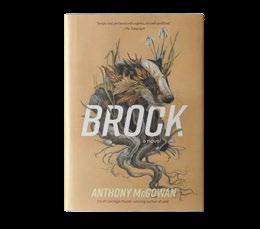
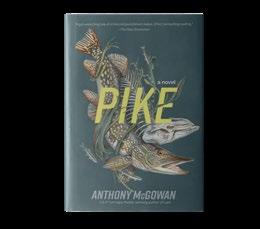
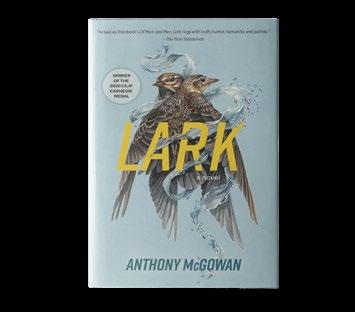
Lark
McGowan, Anthony
Union Square & Co. | 120 pp. | $9.99 paper April 2, 2024 | 9781454954781
people cry. Particularly [while reading] the last one, Lark , people have cried, and that’s given me a great sense of joy. The more serious version is that as a writer, you want to get that strong emotional response from your readers.
The tie between the brothers is really powerful; it made me think about how few representations there are in books of caring male
friendships and family relationships. The relationship between Nicky and Kenny was always absolutely the core for me. I wanted that slightly unusual relationship where the younger brother is the carer for the older brother because of his learning difficulties. They’re so tightly bound together by these bonds of love. I always wanted to make Kenny a proper character—he has his own
growth, his own arc as well. And Nicky has to learn to let him go, in a sense; he’s going to have his own life. But you’re right that male friendships or sibling relationships are underrepresented in fiction. It’s curious, that. I talk a lot to teenagers in schools, and I try to point out that, in fact, what you feel for your friends is love. I think that slightly embarrasses them, but you remember your friends at school forever; you never forget them. And as boys you spend most of your time attacking your friends, taking the piss out of them, but these are manifestations of love. You love your friends when you’re a teenager in a way that perhaps you don’t when you’re older—your feelings are so raw and so intense. All the way through all my YA books, [I’ve written] characters who were burned into my mind as a teenage boy. I loved them, and I still do, and occasionally I’ve had terrible feelings of guilt about not being a good enough friend. Maybe in some way, I partly wrote these books to atone for some of those failings. Genuinely, seriously, I’ve got a younger brother, and I was a terrible brother to him. I was a horror. He wasn’t a bookish kid. He’s been very successful in life. He’s utterly, totally loved by his friends and his family. But he wasn’t like me, and I tried to bully him to be like me. We’ve kind of bonded since, and I’ve begged his forgiveness— but still, I have that guilt, and so I suppose I wanted to make Nicky a better brother than I was.
Farol Follmuth, Alexene | Tor Teen (320 pp.)
$19.99 | May 28, 2024 | 9781250884893
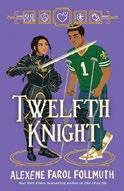
Viola Reyes is a gamer, a fangirl, and a feminist.
Vi plays tabletop games and massively multiplayer online roleplaying games, and she obsessively watches the medieval fantasy TV show War of Thorns . She loves to spend time at Renaissance faires and fan conventions, where she can be herself. Unfortunately, maledominated fandoms aren’t always welcoming to female-identifying and presenting people. More often than not, Vi is forced to defend herself and her right to exist in fandom circles. She plays as Cesario, a boy, in Twelfth Knight, her current MMORPG, so she can actually enjoy the game rather than battle constant harassment. Meanwhile, Jack “Duke” Orsino is student body president (Vi is the vice president) and high school football royalty. When he seriously injures his knee and is benched for the season, he starts playing Twelfth Knight, too—and DukeOrsino12 encounters Cesario. When the two begin chatting and teaming up within the game, Vi panics and pretends to be her twin brother, Sebastian. This engaging modern retelling of Shakespeare’s Twelfth Night has a genderbending plot that’s a perfect fit for contemporary readers. While some of the allusions will be a bit too on the nose for anyone familiar with the source material (and may make
suspending disbelief difficult for some), the slow-burn enemies-to-lovers storyline (and the absence of Twelfth Night ’s sinister subplot) more than carry this successful adaptation. Duke is Black, and Vi is cued Latine. A delightful nerd romance. (dramatis personae) (Romance. 14-18)
Fedel, Sabrina | Delacorte Romance (336 pp.) | $12.99 paper
June 18, 2024 | 9780593705216
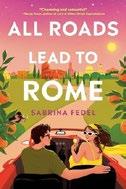
A U.S. embassy lawyer’s daughter fake-dates a Scottish celebrity for a summer. Bookish loner Astoria “Story” Herriot is about to graduate from a private American school in Rome, where she was bullied by the popular clique of diplomatic corps kids. Story’s plans to spend her last summer before Princeton volunteering at a farm sanctuary and hanging out with her single mom are interrupted when she visits a gelateria at the same time as gorgeous Scottish influencer Luca Kinnaird and international queen of pop Jasmine as they evade the paparazzi. After Jasmine escapes through a back exit, Luca pretends Story is his tour guide so the press won’t discover that he’s Jasmine’s new fling when she’s supposedly dating a fellow musician who’s actually in rehab. Wealthy, charming Luca offers Story a fauxmance in exchange for funding a memorial scholarship in her late father’s name, but as the two grow closer, attending countless society
A compelling portrait of the power of teenage girls despite constant mistreatment.
events together, it becomes clear that their class differences can’t curb their opposites-attract chemistry. Some of the dialogue is rough (for example, the overuse of jerk and inconsistencies in Luca’s speech), and some of the characters’ behaviors stretch believability (such as Story’s decision not to Google Luca). The author lightly weaves in mature themes of substance abuse, parental death, and class inequity, but the narrative remains an appealing, younger teen–friendly homage to Roman Holiday. Main characters are cued white. A frothy romance. (Romance. 12-17)
Franklin, Madeline Claire
Zando Young Readers (368 pp.)
$19.99 | June 11, 2024 | 9781638931003
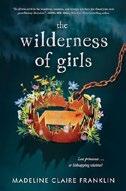
A teenager must discover her role in the lives of four wild girls.
When 16-yearold Rhi moves to Happy Valley in upstate New York to live with her uncle, she’s still raw from the neglect and abuse of her childhood and is hiding from a secret she can’t face. Eager for a distraction, she starts working with her uncle at the local nature preserve, where she stumbles across a shocking sight: a group of four seemingly feral girls who are protected by wolves. Once rescued, they reveal that they believe they’re princesses from a kingdom called Leutheria and were raised in the wilderness by a mysterious man named Mother (“our prophet, our protector, our teacher”). The girls believe that Rhi is the fifth sister, and she, feeling a connection to them, takes an interest in their well-being and is determined to help them. Together, the girls begin to question Mother’s identity and the truth of his stories, while Rhi feels a tug toward the possibilities of their magical origins. Told through varying formats and from different perspectives, the novel’s storylines paint a compelling
portrait of the power of teenage girls despite constant mistreatment. The Wild Girls’ integration into society may require some suspension of disbelief, but overall, the story is satisfyingly executed. Rhi has some Jewish ancestry and reads white, like most of the Wild Girls; one of the girls is Black. A compelling, thoughtful, and original debut. (Fiction. 14-18)
Garrison, Daisy | Flatiron Books (304 pp.)
$23.99 | June 11, 2024 | 9781250348654

Spring of senior year takes an unexpected turn for two best friends in small-town Michigan when new friendships and romances begin to bloom. Mina Stern and Caplan Lewis have been best friends ever since Mina taught Caplan to read in fourth grade. Their friendship has survived high school, despite the separate social circles they inhabit in their senior year. Quiet and academically gifted Mina keeps to herself, self-conscious about the attention she gained after her father died when she was 8 and the panic attacks that subsequently plagued her. Meanwhile, outgoing class president Caplan is captain of the varsity soccer team and “everyone’s favorite person.” With prom and graduation approaching, Caplan draws Mina into his friend group, and Hollis Cunningham, his girlfriend, plays matchmaker for Mina and skater boy Quinn Amick, who’s recently developed an attraction to her. Once Caplan sees Mina with Quinn, however, he begins to realize his feelings for her may have evolved beyond friendship. The complex characters (who explore angst, unconfessed love, the bonds of friendship, and letting go of that which is not meant to be) and the discussions of trauma and mental health add meaningful dimensions to a somewhat pedestrian friends-to-lovers romance. The author
alternates Caplan’s and Mina’s first-person perspectives with each chapter, so readers experience the story’s events from both points of view. Major characters read white.
A solid romance debut that sensitively explores personal growth. (Romance. 14-18)
Hancox, Lewis | Graphix/Scholastic (304 pp.) $27.99 | May 7, 2024 | 9781338824476
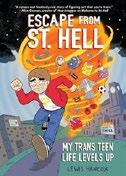
A trans teen on the cusp of adulthood grapples with self-expression and acceptance in this graphic memoir.
The University of Manchester may be only a 30-minute drive away from St. Helens, the English town where white transgender teen Lewis grew up, but he’s so desperate to leave that it feels like traveling a million miles away. With the move fast approaching, Lewis’ anxiety skyrockets and he begins to obsess over finding a new look so that everyone will see him as a “real man.” But Lewis soon discovers that leaving home and transforming his style won’t solve all his problems. Guided by his future self, who drops in to offer advice, Lewis faces his challenges with his emotions, love life, and self-acceptance as if they’re levels in a video game. Convinced that no one understands his struggles, Lewis isolates himself, coping by hyper-fixating on his diet and working out. The more he tries to run from his problems (including academic struggles), the larger they become. The author doesn’t shy away from showing his own flaws and how his internalized transphobia has affected his relationships. Finding community with other transgender people and accepting help have both played important roles in his growth and well-being. Although the text can sometimes be difficult to follow across the page, the dynamic layout of the
black-and-white panels helps communicate Lewis’ angst and discontent. An unflinchingly honest portrayal of coming-of-age. (bonus art) (Graphic memoir. 14-18)
Harlow, Sloan | Putnam (320 pp.) | $12.99 paper May 28, 2024 | 9780593855720

Ella Graham begins her senior year at North Davis High in a waking nightmare. She’s trying to get by without best friend Hayley Miller, who died in a car accident last spring. Ella is besieged by not only grief but also guilt—she was the one driving drunk when their car hit a boulder above a rushing river, though she remembers nothing. Placed in a support group run by school psychologist Mr. Wilkens, Ella must confront fellow attendee Sawyer Hawkins—Hayley’s boyfriend, whom she’s sure blames her—as well as her growing feelings for him. As their relationship blooms, Ella’s guilt intensifies. When she helps Hayley’s mother with the painful task of cleaning out her late daughter’s bedroom, Ella discovers Hayley’s diary, and from its contents, she learns much more about her friend than she ever imagined. Harlow’s debut is full of angst, and readers will be enticed to tear through the novel, which contains surprising twists and quickens in pace toward the end. Ella’s grief and survivor’s guilt are palpable, permeating every page. Ella and Sawyer’s relationship is both fraught and steamy, and romance fans will enjoy the intrigue of their unfolding relationship; their alternating points of view provide glimpses into both their psyches. Ella’s mom is Filipina (her dad’s ethnicity is not mentioned); most other major characters read white. A dark and romantic thriller for those who love sexy suspense. (resources) (Thriller. 14-18)
Hashimi, Nadia | Quill Tree Books/ HarperCollins (336 pp.) | $19.99
June 4, 2024 | 9780063060494

Afghan American twins reckon with a hate crime. Yusuf and Yalda are polar opposites: Popular, outgoing Yusuf plays in a band. Introverted, artistic Yalda socializes with two close friends. After a musician at a local competition makes an Islamophobic joke onstage targeting recent Afghan refugee arrivals, Yusuf pranks the audience. His response goes viral, and tensions in their small Virginia town boil over. When Yusuf suffers serious injuries from a mysterious fall, Yalda tries to determine who hurt him while facing her own insecurities. The inconsistent writing unfortunately distances readers from the unfolding narrative due to awkward transitions, segues that feel random, and pivotal plot points that are relayed after the fact. Yalda’s personal growth and how the community unites against hate crimes would have benefitted from greater exploration. The twins’ immediate family is nonreligious, and religious details are at times absent or presented in ways that may strike some readers as erasure. First-person narrator Yalda struggles with whether “the hyphen sometimes used in my label means a connection between two worlds or if one side is being taken away from the other and leaving me as something less than whole.” This inner battle manifests in part in her unflattering judgment of her religious aunt and her perceptions of a refugee classmate, but the light character development may instead convey a message of assimilation. Introduces critical themes but struggles to address them with sufficient depth and nuance. (author’s note) (Fiction. 13-18)
Hatzopoulou, Kika | Razorbill/Penguin (336 pp.)
$19.99 | June 18, 2024 | 9780593528747
Series: Threads That Bind, 2
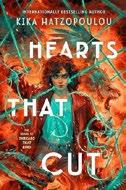
Abandoned by her sisters, Io Ora must trust Bianca—former mob queen, now dying wraith—to help her find the hidden gods and end them forever in this duology closer that follows Threads That Bind (2023).
Io and Bianca cross mudflats that harbor deadly chimerini and dodge the violent, unpredictable tides that flood the Wastelands, where humans have struggled to survive ever since the Collapse shattered the moon into three pieces. The youngest of the Moirae-born (sisters with Fates-like powers), Io is able to see the threads governing every human fate in the Quilt. She can end a life simply by cutting another’s life-thread, but the cost is high: Each time, she must sever one of her own 35 threads. As Bianca traverses anarchic wastes and dangerous urban slums ruled by powerful gangs on the way to their destination, the teeming city-nation of Nanzy, she weakens but pushes on. Despite setbacks and betrayals, the two discover unexpected allies willing to risk their lives to confront the gods. Io’s personal evolution, like the Moirae’s silver threads, is woven seamlessly into the complicated plot. While her romance with Edei is satisfying, the story’s emotional driver is the sisters’ difficult history of loss, longing, pain, and betrayal; each bears scars from their old, set-in-stone rivalries. Io’s world has an epic thematic scope and an intricately imagined setting. The characters are diverse in appearance, gender identity, and sexual orientation. Enticing and original. (Fantasy. 14-18)

Kirkus Star
Adventures of Mary Jane
Jahren, Hope | Delacorte (464 pp.)
$19.99 | June 25, 2024 | 9780593484111
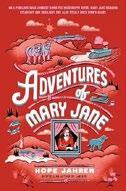
For another story inspired by Greek mythology, visit Kirkus online.
Mary Jane, a side character from Mark Twain’s Adventures of Huckleberry Finn , takes center stage. Celebrated scientist and bestselling adult nonfiction author Jahren has chosen as the subject of her fiction debut the girl Huck Finn describes as “just full of sand…beauty—and goodness too.” Fourteen-year-old Mary Jane is content to live with her mother and grandfather on the Minnesota frontier, shifting from a remote fur-trading outpost in winter to the comforts of Fort Snelling in summer. But when her aunt begs for help, Mary Jane’s mother sends her south via a Mississippi River steamboat, first to Fort Edwards, 400 miles away, and then, in the company of her orphaned cousins, Susan and Joanna, to their new guardian in Greenville, Mississippi. Like her eventual friend Huck Finn, Mary Jane finds adventure, true friendship, and scoundrels on the river. The peripatetic nature of her journey allows for cameo appearances by a wide variety of other characters. White Christian Mary Jane has sympathetic encounters with an Ojibwe family, persecuted members of the Church of Jesus Christ of Latter-Day Saints, and a Jewish peddler, among many others. She meets Sugar and Candy, an enslaved mother and daughter, and her attempts to help them carefully call out white saviorism. Jahren has done a heroic amount of research but most of all has told a cracking good story. This book soars: Huck Finn has met his match in a wildly appealing, smart, and courageous girl. (map, family tree, author’s note, suggested reading) (Historical fiction. 12-16)
A rollicking and thoughtful take on the be-careful-whatyou-wish-for trope.
NOW, CONJURERS
Kirkus Star
Kaylor, Serena | Wednesday Books (304 pp.) $24.00 | June 18, 2024 | 9781250908681

A neurodivergent STEM nerd convinces her emo classmate to tutor her in romance so she can get back together with her ex-boyfriend.
Marlowe Meadows’ senior year starts with the unwelcome confirmation that Josh, her golden-boy boyfriend, has dumped her for being bad at love. Determined to show her ex that she can do better, Marlowe seeks help from Ashton Hayes, her A.P. English project partner, the school’s pierced goth band frontman who moved to their Georgia town junior year. Since Ash has written dreamy song lyrics and works at a romance bookstore, Marlowe believes he’s uniquely positioned to teach her about love. In exchange for help writing four letters, practical lessons in datelike settings, and weekly romance novel reading assignments, Marlowe will revamp Ash’s band’s “crappy” website and update their social media presence. As the tutoring progresses, Marlowe’s supportive, super-smart best friends, Odette and Poppy, also start attending Ash’s band rehearsals, reading romance books, and encouraging her to embrace her potential new love interest. Kaylor thoughtfully portrays Marlowe’s nuanced character growth and weaves a moving subplot about how Marlowe believes autism has affected her relationship with her
seemingly perfect mother and younger sister. Ash is irresistibly kind, charismatic, and loving. The story includes authentically described neurodiverse and LGBTQ+ characters; Marlowe and Ash are cued white. A delightful, richly characterized slow-burn romance about figuring out what you want. (Romance. 13-18)
Kohli, Sonali | Beacon Press (176 pp.) | $16.95 paper June 4, 2024 | 9780807010952

A journalist profiles three young women of color whose activism has reshaped their communities.
Kohli has spent her career reporting on youth activism. She writes, “The reality is that as teenagers you are powerful; you’re also not saviors and shouldn’t be tasked with the burden of saving the world.” In the pages that follow, Kohli traces the trajectories of three young women whose accomplishments would be impressive at any age. Mexican and Colombian American teen Nalleli Cobo, for example, worked with her mother to successfully shut down a toxic oil field in her neighborhood that devastated community members’ health, as well as her own—at the age of 19, she was diagnosed with cancer. Sonia Patel Banker, an Indian American choir singer, fought to bring arts education to California’s public schools. Kahlila Williams, the founder of her school’s
Black Student Union, helped facilitate the reduction of the Los Angeles School Police Department budget. In addition to documenting the ups and downs of these teens’ organizing, the author includes a series of discussion questions intended to help readers apply what they’re reading to their own lives and, by extension, their own potential activism. Kohli’s curiosity, compassion, and strong journalistic instincts combine to create a narrative voice that’s both engaging and insightful. Her writing not only honors her subjects’ strength but also demystifies the process of creating community change.
Empowering portraits of a diverse set of young women who have changed their worlds. (author’s note, endnotes, photo credits) (Nonfiction. 12-18)
Kirkus Star
Kölsch, Freddie | Union Square & Co. (384 pp.) $19.99 | June 4, 2024 | 9781454951599

In 1999, a small-town Massachusetts teen witch coven investigates the murder of one of their own.
Nesbit hadn’t lived in North Dana for long before the North Coven adopted him as a best friend and practicing witch. He also became the boyfriend of coven member Bastion. And when Bastion is found gruesomely murdered in the spooky Stepwood Cemetery, the remaining coven members—Dove, Drea, Brandy, and Nez himself—have no choice but to try to find out what happened to him. In doing so, they discover some harsh truths about the bloody history of their town, their own powers, and the strength of their relationships to one another. With an inventive and well-characterized villain and characters who are differentiated in style, personality, and identity, this debut promises much more from both the author and the cast of

Mamie Gummer, Caitlin FitzGerald, and Candice King will appear in the E. Lockhart adaptation.
Mamie Gummer, Caitlin FitzGerald, and Candice King will lead the cast of Amazon Prime’s upcoming series adaptation of E. Lockhart’s We Were Liars, Deadline reports.
Lockhart’s young adult novel, published by Delacorte in 2014, tells the story of the Sinclairs, a wealthy family fighting for survival after a personal tragedy. In a starred review, a critic for Kirkus praised the book as “riveting, brutal and beautifully told.”
Gummer (The Good Wife) will star as Carrie, the eldest

Sinclair daughter, while FitzGerald (Masters of Sex) will play Penny Sinclair and King (The Vampire Diaries) will take on the role of Bess.
News of the adaptation was announced last year. It will be written by Julie Plec, the Vampire Diaries producer, and Carina Adly MacKenzie, the creator of the series Roswell, New Mexico. Plec, MacKenzie, and Lockhart will be executive producers on the series. Lockhart shared news of the casting on Instagram, writing,

“Here we go! Announcing the most wonderful versions of the Sinclair sisters I can imagine.…More on our amazing cast is coming soon. We shoot this summer on Beechwood Island [the novel’s fictional Massachusetts setting].”
King also posted about the adaptation on Instagram, writing, “I devoured #WeWereLiars and could not be more thrilled to be a part of bringing this story to life as Bess Sinclair.”—M.S.

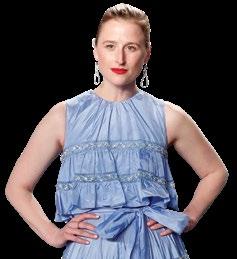

1

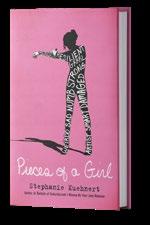
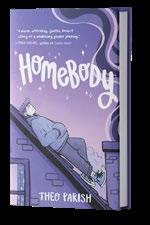
Ruth Asawa: An Artist Takes Shape
By Sam NakahiraAn inspiring, beautifully rendered book about an artistic dream that came true.
2 Pieces of a Girl
By Stephanie KuehnertA raw, deep dive into one young woman’s struggle for wholeness.
3
Homebody
By Theo ParishAn accessible, affirming story that models how anyone— cis or trans—can take steps toward self-knowledge and gender freedom.
4
Just Another Story: A Graphic Migration Account
By Ernesto Saade
Memorably elucidates real experiences in graphic detail through empathetic text and visuals.
5
Lady Sunflower: stories, songs, and poems from the desk of kill.gertrude
BySierra Shuck-Sparer, illus. by Chloe Tyler Haunting.
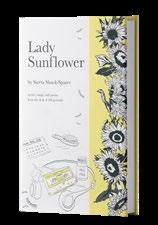
6
American Wings: Chicago’s Pioneering Black Aviators and the Race for Equality in the Sky
By Sherri L. Smith and Elizabeth WeinA fascinating, well-told American story full of compelling innovation.
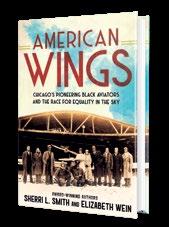

characters, who could easily feature in a future series. This novel is an easy-toread occult thriller inspired by ’90s cult classics with a likable cast of cool, queer, Wiccan goth heroes. Kölsch holistically integrates serious issues, such as grief, neurological differences, religion and faith, parental abuse, and a variety of intersectional queer identities, with a deft touch that keeps the book both eerie and light in pleasantly equal measure. Nez reads Latine, siblings Dove and Bastion are cued as having some Egyptian ancestry, Brandy is Black, and Drea seems to be white. A rollicking and thoughtful take on the be-careful-what-you-wish-for trope. (Horror. 14-18)
Lee, Yoon Ha | Delacorte (352 pp.) $19.99 | June 4, 2024 | 9780593488331 Series: Lancers, 1
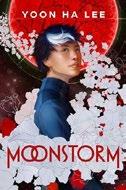
A teen thrust into a space war learns to pilot a robot warrior, but secrets threaten destruction. “Trust the Empress. Move at her will. Act as her hands.” These words keep the Empire of New Joseon strong and unified. Hwa Young, who grew up on a rebel clanner moon in the Moonstorm, must commit this motto to memory and take it to heart. When she was 10, the empire’s lancers (humanoid warrior robots) destroyed her home, leaving her orphaned. The empire took her in, and now, at age 16, Hwa Young is determined to prove her merit by becoming a lancer pilot. She gets her chance two years early, when her boarding school is attacked, and she and her classmates are taken aboard a starship—but something feels wrong. The training is rushed, and the higher ranks seem to be hiding something. When secrets are later revealed, Hwa Young must choose between her rebel roots and conformity to save everyone. This strong series opener features detailed worldbuilding
that describes the clanner and empire societies, as well as the intricacies of the starships and lancers. The central conflict offers an interesting commentary on how different societies uphold faith, unity, and power. Many characters present nonbinary, using the pronouns zie/zir. The empire is rooted in Korean culture, with Korean food, traditions, and language woven throughout. Action-packed space battles and strong worldbuilding will draw readers in. (map, character guide) (Science fiction. 12-18)
Levithan, David | Knopf (272 pp.) $19.99 | April 16, 2024 | 9780593706978
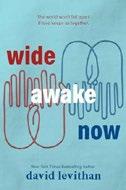
In Wide Awake (2006), Levithan imagined a political gaytopia in a divided nation roughly 20 years in the future; now he reimagines this world during the election of the first gay Jewish president of the U.S. in 2024.
Readers encounter 16-year-old Duncan, who’s Jewish and reads white, and his boyfriend, Jimmy, who’s Black and multiracial. The opposition—fueled by hatred and bigotry—is angry about President-Elect Abraham Stein’s victory (by over 5,000,000 votes) and refuses to concede, demanding a recount in the deciding state of Kansas. When Stein appeals to his voters to come to Kansas to protest, Duncan, Jimmy, and their friends who volunteered with the Abraham Stein / Alice Martinez campaign enthusiastically decide to travel to Kansas to raise their voices. Duncan’s friend group is LGBTQ+ and racially diverse: For them, everything is at stake, democracy included. They understand that indignation is not enough; action is required. In the midst of everything, Duncan and Jimmy are at a crossroads in their relationship, wondering about their future, finding
hope—or is it dying embers?—in each other’s love and lust. Levithan allows his imagination to soar, exploring the possibilities of what if that are grounded in a modern-day reality where identity, religion, and hatred combust, tearing the U.S. apart. He also dares to dream of what could be—what harmony and unity could feel like. What began in Wide Awake as a speculative story is now a tour de force come to fruition.
Emotionally charged, boldly confrontational, and brilliantly executed. (author’s note) (Fiction. 14-18)
Lu, Marie | Roaring Brook Press (320 pp.) $20.99 | June 11, 2024 | 9781250852915
Series: Stars and Smoke, 2

Winter Young is again drawn into the world of secret agent Sydney Cossette in this follow-up to Stars and Smoke (2023).
Though constantly on one another’s minds, Winter and Sydney have resisted making any contact with each other since narrowly surviving a mission in which Panacea, the secret organization Sydney works for, tapped Winter to use his megastar status to infiltrate a wealthy and powerful criminal underworld. Ratcheting up the tension in this enemies-to-lovers romantic thriller is the fact that Sydney is being sent to Singapore to extract Tems, a fellow agent who also happens to be her ex. Winter, who needs a plus-one for a Warcross Championship gala in order to better maintain his cover, invites his former girlfriend. Witty insults and crossed signals abound in the pair’s smoldering relationship, but this second installment is a bit darker than the first. If some of the betrayals and losses involved are easy enough to spot coming, they still pack an emotional punch due to the strong development of Winter’s and Sydney’s respective backstories, told in alternating third-person narratives, both involving
abuse and psychological pain. Winter is Chinese American; Sydney is white, and there’s a diverse cast of supporting characters whom readers will likely see again—Lu has left the ending tantalizingly open for another installment. Another engaging entry in this world of spies and international intrigue. (Thriller. 14-18)
Lubie, Lou | Trans. by Fabrice Sapolsky
FairSquare Comics (160 pp.)
$19.99 paper | April 16, 2024 | 9781960171108
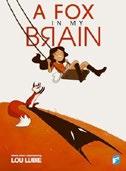
A young woman chronicles her experience with cyclothymia in this translated title from France. This graphic memoir opens with Lou, 16, having just begun to experience symptoms of depression. As she goes on to attend art school and video game school, move in with her boyfriend, and create a video game, her significant mood swings cause her distress, at times leading to suicidal ideation. She’s told by psychiatrists that she’s too young and pretty to be anxious or depressed. Eventually, Lou finds a therapist specializing in cognitive behavioral therapy who helps her realize she has cyclothymia, a mood disorder, and she begins to feel stable thanks to a combination of lifestyle changes and medication. Lou’s story is relatable, particularly in depicting medical gaslighting. The narrative is punctuated with lists and infographics that educate readers about mental health. The illustrations are predominantly executed in black and gray, with orange serving as an accent color, a strategic choice due to the depiction of cyclothymia as an
orange fox. Early in the book, depression is described as the “little black thing” and shown as a messy black spot or a menacing black fox. The art is expressive, with varied and creative panels. Lou is from Réunion and is portrayed with curly black hair and paper-white freckled skin. An instructive story of surmounting many obstacles while grappling with mental health. (Q&A with readers, psychologist’s note) (Graphic memoir. 14-adult)
Malburi, CG | Levine Querido (368 pp.) $19.99 | June 4, 2024 | 9781646143771
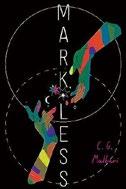
In a world where marks on the skin dictate your social status and indicate the type of magic you wield, a young Markless witch and a princess must join forces to break tradition.
Ruti is Markless, lacking any pattern on her palm that would tie her to elemental magic. Without a Mark, she’s an outcast from society and looked down upon by the Marked. Nevertheless, 18-year-old Ruti is a powerful witch. Through her singing, “she has the favor of the spirits”; unlike the Bonded, whose marks show their mastery over one element, Ruti’s respect toward the spirits grants her broad powers. Princess Dekala’s uncle insists that she must become bonded to a prince or noble before she can claim the throne of Zidesh, and he has scholars at work attempting to find her soulbond. When a purloined ring leads to the young women’s paths crossing, Dekala gives Ruti a choice: use her
Boldly confrontational and brilliantly executed.
magic to help Dekala avoid soulbinding with any of her suitors or suffer the consequences. Though hatred burns between them, Ruti and Dekala find themselves caught up in a whirlwind that could reshape their futures and the future of the Markless forever. Fast-paced and thrilling, this magical fantasy brings the enemies-to-lovers trope to new heights while poignantly examining themes of poverty, discrimination, and sexuality. Ruti has olive skin; Dekala has brown skin, and the supporting cast is fantasy diverse. An immersive, page-turning Sapphic fantasy romance. (Fantasy. 14-18)
Markum, Samantha | McElderry (416 pp.) $19.99 | June 11, 2024 | 9781665955720

A collegiate newsroom rivalry leads to romance. Headstrong Éowyn “Wyn”
Evans is set on landing a staff position on her college newspaper, a step toward one day winning a Pulitzer Prize. Her nemesis and fellow freshman intern, the handsome, privileged, frat pledge Nathaniel “Three” Wellborn III, is equally determined to get the reporter role. (Readers met Three in Markum’s 2022 novel, This May End Badly, but this work stands alone.) The race is on—and Wyn won’t let classes or a miserable campus job stand in the way. When a drug scandal rocks Wyn’s dorm, she pivots from breaking news to human interest with help from her supportive suitemates, Dara and Madison, and the anonymous guy she chats with on a campus dating app. Even as they acquire more bylines, the fiery chemistry between the two intrepid journalists grows. Wyn’s first-person narration refreshingly navigates body positivity and the mental health challenges many young people experience. Other topical subjects, such as dating, drugs, race, and class, are thoughtfully navigated if not wholly explored. The zippy momentum of the
narrative occasionally renders callbacks to subplots and minor characters difficult to follow, although some supporting characters, such as Wyn’s lovably cringe parents, are well developed. Comedic hijinks and campus encounters keep the romantic tension simmering throughout, and message exchanges via the dating app provide nuanced character development that makes the ultimate reveal doubly rewarding. Main characters are cued white.
A headline-worthy romance that addresses topical subjects with gravity and gaiety. (author’s note) (Romance. 14-18)
McCauley, Kyrie | Katherine Tegen/ HarperCollins (320 pp.) | $19.99
June 18, 2024 | 9780063243095
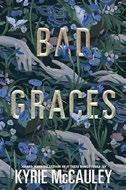
Teen girls must survive on an island that harbors a terrible secret. Twins Liv and Everly have been through more than a dozen foster homes, and Liv is the reason why: She’s set fire to a house and punched a foster brother. When they finally find kind foster parents, Liv, who can tell her welcome is wearing thin, steals Everly’s identity to win an internship on the Alaska set of a film version of The Tempest. Setting out on a fancy yacht with producer Vincent Bellegarde, five teen girl celebrities, and the crew, Liv hopes only to escape her current life. She’s wondering whether she’s out of her element when disaster strikes, and the boat is wrecked in a violent storm. The survivors—the six girls and Vincent—wash up on an island somewhere in the Pacific. Because they sailed off course to look for whales, no one knows where they are—and they
have no way to contact rescuers. Worse still, they’re not alone: Someone or something terrifying is on the island, and they must escape before the experience turns them into monsters themselves. McCauley’s feminist spin on Shakespeare and Greek mythology is both lush and disturbing. Though the plot races forward at a shocking pace, each character feels fully formed, helping to construct a brutally relatable portrait of what it is to be a teenage girl. Apart from one girl who is Puerto Rican and one who is Black, most main characters are cued white. Compulsively readable. (Thriller. 14-18)
McLeod, Ella | Yellow Jacket (336 pp.) $19.99 | June 11, 2024 | 9781499816112
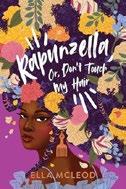
In this fairy-tale remix inspired by Jamaican folklore and Indigenous culture, three girls must learn to harness their power to topple a tyrant. You, the story’s protagonist, are 6 when you first dream of the land of Xaymaca and befriend Kam and Zella, sister witches whose immense power emanates from their hair. The three of you are destined to fight the evil King who enslaved the witches’ coven, but what can you do without magic? Ten years later, that question remains as you—a Black British girl growing up in London— wrestle with insecurities, your feelings for your best friend (a boy named Baker), and your longing for acceptance by your popular white classmates. But with Kam now magicless and Zella trapped in a forest of her own hair, facing the King alone, you must make a choice: Will you run from your power
or finally step into it? Told in verse and second-person prose, this story skillfully balances the whimsy of an enchanting fantasy world with a candid portrait of growing up and an incisive exploration of Black identity. Although opaque motivations at times reduce the characters to pawns of the plot, tempering the emotional impact of their actions, this rich, multilayered story begs for discussion; sophisticated readers will catch many of its nuances. Most named characters are Black; one is trans and part of a loving, on-page lesbian relationship. This imaginative, lyrical coming-ofage story celebrates Black Girl Magic. (author’s note) (Fantasy. 14-adult)
Kirkus Star
The Deep Dark
Ostertag, Molly Knox | Graphix/ Scholastic (480 pp.) | $27.99 June 4, 2024 | 9781338840001

Mags Herrera is bound to her hometown by a dark secret and a tragic accident, but she begins to dream of the possibilities of a new life after reuniting with a long-lost friend. Mags, who has short, spiky black hair, obeys the expectations of her Latine Catholic mother and grandmother. But beneath the floorboards of their home lies a dangerous monster that Mags must make blood sacrifices to in order to keep it fed and dormant. Mags struggles to conceal this secret from Nessa, a trans artist and childhood friend she reconnects with. The two fall in love and help each other out of dire situations. The beast at the center of the story serves as a potent allegory for the struggles of the story’s many queer characters, especially Mags, who shoulders enormous expectations as well as experiencing rejection, loneliness, and guilt. Her story will resonate with teen audiences, especially those grappling with acceptance of their gender or sexual
identity. Ostertag’s illustration style and color palette shift during important moments to convey her characters’ complex inner lives, such as emotional turmoil or strong feelings. Even while delving into difficult subjects, the story’s heart is clearly an optimistic message of acceptance and love that insists that the parts of ourselves we don’t like (or that society doesn’t accept) are inextricable from who we are and should be cared for at all costs.
Well-drawn, deeply realized characters enliven this spellbinding and fantastical queer coming-of-age love story. (author’s note) (Graphic fiction. 13-18)
Persichetti, James | Illus. by L.S. Biehler HarperAlley (336 pp.) | $26.99
June 4, 2024 | 9780358541240
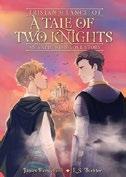
Courtly love is queered in this Arthurian graphic novel. All is not well in Camelot. Merlin is missing, and people suspect foul play; and the fae have begun attacking Camelot, despite Uther long since banishing them. At a loss, King Arthur and Queen Guinevere summon Morgan, Arthur’s half sister. They persuade Morgan, a traveling mage who studied under Merlin, to embark on a rescue mission accompanied by young knights Lancelot and Tristan. They make a reluctant trio, but cheerful, generous Lancelot is determined to get to know brusque, impatient Morgan and taciturn Tristan, whom he’s long had a crush on. As the three outsiders reckon with their origins, burdensome pasts, and possible futures, they become a team; Morgan finds friendship with the knights, who begin to fall for each other in a well-crafted budding romance. The book equally centers Morgan’s journey toward self-acceptance and community. Some of the revisions to Arthuriana work well: Guinevere has a place at the Round Table, and Lancelot’s and
Tristan’s platonic relationships with their traditional lady loves are thoughtfully portrayed. Other elements, such as the portrayals of Queen Mab and primary antagonist Nimue (clad in a notably anachronistic outfit), are clunky. Queen Mab’s brief arc as a power-hungry, vengeful villain leads to a heavy-handed, underdeveloped message about human greed and environmental destruction that feels forced. The art sometimes feels flat, with a visual narrative style that’s akin to superhero comics. The main cast present white.
An intriguing premise hampered by underwhelming execution. (Graphic fantasy. 14-18)
Peterson, Megan Cooley
Holiday House (288 pp.) | $19.99
June 11, 2024 | 9780823457014
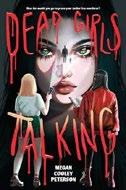
Small-town secrets, dead blonds, and teen sleuths.
In a North Carolina town where social class dominates, wealthy Bettina Jane Holland, who comes from old money, lives under the shadow of her father’s brutal murder of her mother. Trapper McGrath, her father, was a drifter who never finished high school, and Bett’s been raised by her maternal grandparents, the Hollands. Now, on the 10th anniversary of Trapper’s conviction, Bett finds another woman murdered in the same way—and learns that the prosecutor from the original case (an associate of Bett’s powerful grandfather) has died by suicide. Bett, torn between pleasing her old-fashioned grandparents (who employ staff and have formal dinners every night) and rebelling against them, needs to believe in her father’s guilt despite his long-maintained innocence in order to live with the fact that her testimony put him away. She’s consumed by her own drama and pushes away anyone who asks about the murder, including her longtime
best friend, whose financially struggling mother started a “ghost tour” to capitalize on the murder and bring in cash. Clunky dialogue, an obvious red herring that drives the plot, and an ending that shies away from the moral complexities Bett seemed poised to confront detract from the central puzzle. Main characters are coded white. An also-ran in the crowded YA mystery/ thriller space. (Mystery. 13-18)
Ruhlman, Michael | Penguin Workshop (320 pp.) | $19.99
June 18, 2024 | 9780593523445

Sixteen -yearold Theo finds an unexpected job (and a girl to love) at an upscale French restaurant in this novel by James Beard Award–winning food writer Ruhlman.
Theo imagined that the summer of 1980 would be filled with practices in the lead-up to a successful football season playing for his private school in Shaker Heights, Ohio, on the outskirts of Cleveland. After an accident during a game leaves his leg badly broken thanks to a previously undetected benign bone cyst, Theo finds himself out of the sport indefinitely. But he’s distracted from his blues after being hired as a prep cook at Restaurant Margaux. Chef Jackson is tough yet fair. Thanks to his mentoring, Theo comes to love the atmosphere, the cooking, and the profession—as well as server Julia. Ruhlman’s writing is at its best when Theo is in the kitchen. The hustle and passion that flow during service drop readers squarely in the middle of the action. Theo himself is a likable, honest character who’s both earnest and imperfect. Julia, on the other hand, has a surprising character arc that’s puzzling and handled abruptly. Though the two date, their romantic moments aren’t particularly swoonworthy. One storyline ultimately takes a turn that feels superfluous and is less interesting than the
fast-paced action in the kitchen. Most cast members read white. The well-realized foodie elements are the highlight of this uneven story. (Fiction. 14-18)
Sim, Tara | Nancy Paulsen Books (400 pp.)
$19.99 | June 25, 2024 | 9780593407424

A young woman must resurrect a prince whose return to the throne could restore balance to the kingdom. After successfully—with a few caveats—reviving a dead dog, gutsy Kajal is determined to do the same for Lasya, her beloved deceased sister. But when Lasya turns into a bhuta (a vengeful, murderous ghost) and takes out her rage on those around Kajal, the latter is accused by the townsfolk of being a dakini, or witch, and imprisoned. Before a brutal sentence can be carried out, Vivaan and Sezal, two young rebels, approach Kajal; they know she resurrected Kutaa, her undead canine companion. They promise to help her escape and retrieve Lasya’s body, but in return, she must aid them in overthrowing Anu Bakshi, the Usurper King, by resurrecting Dharati’s crown prince, Advaith Thakar. Every time Lasya’s bhuta claims another life, she becomes more powerful, so Kajal hurries to meet her end of the bargain. But after discovering that the boy she brought back to life isn’t actually the crown prince but someone else entirely, she frantically attempts to cover up her mistake and find the real Advaith. Sim’s duology opener is an artful presentation of binaries—evidence and belief, right and wrong—and the complex, gray, in-between areas. This intriguing exploration of certainty is highlighted by a nonbinary character’s perceptions of duality. The worldbuilding, which relies heavily on its infusion of Indian mythology, is both winsome and convoluted. A dark and sinuous fantasy adventure. (author’s note) (Fantasy. 12-18)
Chimes with moments of humor and lots of heart.
BROWNSTONE
Sumrow, Melanie | Balzer + Bray/ HarperCollins (368 pp.) | $19.99
June 25, 2024 | 9780063343283
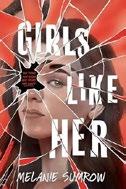
A ripped-fromthe-headlines story shines a light on children who are tried as adults.
On January 7, 2022, millionaire Eric Hanson was murdered. Within hours, 14-year-old Ruby Monroe was arrested for the crime. So begins Ruby’s story, which alternates between narrative chapters, court transcripts, newspaper articles, and letters. Ruby spends months in Dallas County Juvenile Detention Center, but when the judge grants the prosecutor’s request to have her case transferred to adult court, she’s moved to the women’s jail. Ruby’s previous distrust of her public defender and the social worker brought in to help build her defense has stymied their efforts to prevent the transfer. But now, with a July 2023 court date looming, Ruby slowly opens up to the social worker about earlier events in her life. As the layers are peeled away, it becomes clear that the story involves more than a simple robbery that went awry and resulted in a shooting. The events leading up to Ruby’s arrest and the depiction of her time in jail are jarring and graphic. Much of the story reads like true crime, although Ruby’s letters to her friend Maya feel more like a device to fill gaps in the storyline than an authentic teen voice. Main characters are cued white; Maya has brown skin. An eye-opening depiction of the criminal justice system’s treatment of young, vulnerable citizens. (content warning, author’s note, resources) (Fiction. 14-18)
Sutter, James L. | Wednesday Books (320 pp.) $20.00 | June 11, 2024 | 9781250869760

A ghost hunter finds more than she ever expected. With her plans to leave her small Washington town on the fringes of Seattle in shambles, 18-year-old Cara Weaver puts all her hopes into her YouTube channel, “Caranormal Activity.” She heads to a local abandoned paper mill, the site of many tragedies, including as recently as last year, when high school senior Aiden Reyes fell to his death. To Cara’s utter shock, Aiden can communicate with her (and her alone), manifesting as a whispered voice in her ear. But she needs more proof than that to validate her discovery. Aiden, however, wants to focus on what he believes is his ghostly “unfinished business”: helping Meredith, his younger sister, be happy again by having Cara take her to prom. This scenario fortunately manages never to dip too far into manipulative territory, and when it looks like it might, other characters (for example, Cara’s Christian best friend, who’s in on the scheme) thankfully call it out. Meredith and Cara’s intense sexual attraction for one another does a lot of the heavy lifting for their rapidly developing relationship. The novel explores the spiritual at times, but only in passing. Solid pacing will keep the pages turning, and readers will be drawn into the girls’ love story. Cara, who’s bisexual, reads white; Meredith is gay, and she and her brother are cued Latine. A light paranormal story centering on a sweet queer romance and teens navigating big changes. (Romance. 14-18)
Teer, Samuel | Illus. by Mar Julia Colors by Ashanti Fortson | Versify/ HarperCollins (320 pp.) | $26.99
June 11, 2024 | 9780358394754

Fourteen-yearold Almudena reconnects with her estranged Guatemalan father during a revelatory summer. When her white mom gets the opportunity to tour as the star of an international dance show, Almudena must spend the summer in the city with Xavier, the father she’s never met. Further exacerbating her woes, Almudena doesn’t speak Spanish, and Xavier speaks very little English. Xavier nonetheless expects her to help him renovate a dilapidated brownstone and turn it into housing for folks in the community who need an affordable rental. As father and daughter rehabilitate the house, floor by floor (cue Almudena: “Ugh. That all sounds like a metaphor, doesn’t it?”), she learns more about her father, including his beliefs, challenges, and life. Navigating the rapidly gentrifying neighborhood as an outsider, Almudena meets Latine people who inadvertently or purposefully question her Latine status. Almudena slowly discovers how she fits into her new community and pieces together a makeshift familia that’s imperfect but feels right. This coming-of-age tale chimes with discreet moments of humor and lots of heart, all centered around questions of heritage, identity, compassion, and acceptance and exemplified by the scrappy, vivid artwork, which wonderfully captures Almudena’s inner turmoil. Almudena’s blossoming relationship with her father ends on a cheerful note, and her moments of rapport with her summertime neighbors and their stories are frequent highlights that touch upon topics such as prejudice against brown folks and queerness in the Latine community.
Beautifully profound. (Graphic fiction. 12-16)
Williams, Brittany N. | Amulet/ Abrams (304 pp.) | $19.99
April 23, 2024 | 9781419758669
Series: The Forge & Fracture Saga, 2
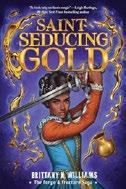
Seventeen-year-old Joan Sands faces off in new fights with the Fae in this sequel to 2023’s That Self-Same Metal.
Joan’s godfather, Baba Ben, is still locked away in the Tower of London, so it’s Joan’s job as one blessed by the Orisha Ogun to protect their people with her power to manipulate metals. Fae creatures that feast on the bones and blood of humans are growing bolder and stronger now that the Pact forged to keep them in their own realm has been broken. Since iron is the only defense against Fae folks, Joan’s gift is critical in the fight against them. But Titanea, queen of the Fae, has risen from the ashes of an explosion that killed England’s real queen, Anne, and she now sits on the throne, having assumed Anne’s identity. Titanea keeps Joan close by, appointing her as one of her ladies-in-waiting, which interrupts the Sands’ plot to restore the Pact. When more tragedy strikes, Joan, her family, and her friends are forced to engage in open warfare with the Fae. The gory outcome is a feast for the senses. Williams’ narrative steadily focuses on the journey of a Black girl in 17th-century England who’s finding her place in an upturned world, and she masterfully emphasizes family bonds and community care as critical to the allies’ small but mighty collective. As various characters continue to explore queerness and polyamory, consent and honesty show up beautifully.
A shining, expansive sequel. (map, dramatis personae, historical notes, cultural note) (Fantasy. 13-18)
Wolff, Tracy | Entangled Teen (496 pp.) $24.99 | May 7, 2024 | 9781649377012
Series: The Calder Academy, 1

Calder Academy, a boarding school for delinquent paranormals, may as well be a prison for Clementine.
Clementine
Calder has spent her whole life on the isolated Texas island campus of the school for paranormal teens whose powers pose a danger to others. Calder Academy houses everyone from witches to vampires, suppressing their magic and forcing them to coexist. Now that her senior year has arrived, Clementine wants nothing more than to graduate and move away. But the headmaster—her mother—is clear that she’s not going to let Clementine ever leave and experience the real world: “Just remember, Clementine, dreams can be prisons, too.” Beyond the issues with her family, Clementine has spent the last three years avoiding Jude Abernathy-Lee, her childhood best friend who ghosted her, seemingly without reason. When a Category 5 hurricane hits the island, Clementine is forced to work with Jude and suddenly finds herself at the center of a waking nightmare that will change the course of her life—and of Calder Academy—forever. Set in the same universe as Wolff’s Crave series, this spinoff is easy to dive into, although the flat, uninspired romance and core narrative leave something to be desired. Clementine is cued white; Jude’s father is Korean (his mother’s background isn’t named), and there’s racial diversity in the supporting cast.
Enjoyable but ultimately forgettable; will appeal to fans of the original series. (content warning) (Fantasy. 14-18)

For another boarding school fantasy, visit Kirkus online.

THE NEW YORK TIMES recently ran an article about the joy of stoop books, or the serendipity of discovering a book you didn’t know you needed. Indieland provides a similar magic; you never know what you’ll stumble across and learn— just take a look at our interviews with indie authors Martin Duberman and Lillian Colón and the illuminating excerpts from some favorite books in the pages that follow. And in the starred picks below, a poet shares his personal observations about Elizabeth Bishop and other legends, a short book reveals the warmth and wisdom of philosopher Martin Buber, and a journalist waxes existential in his novel set in Ukraine.
In Portraits From Life: A Poet’s Mentors (2022), George Franklin talks about how several writers, including Marie Ponsot, Elizabeth Bishop, Robert Fitzgerald, and William Maxwell, as well as choreographer Erick Hawkins, inspired him via their mentorship and work. Ponsot, for example, showed a “gentle authority” throughout her poetry workshops and classes;
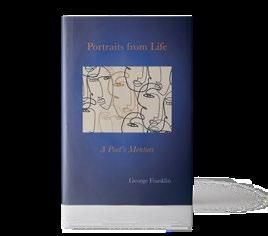
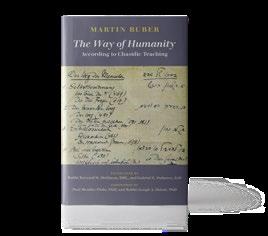
famous New Yorker editor Maxwell befriended him and many other young writers; Bishop’s “late-inlife flowering” was probably caused by a younger female lover. Franklin, an astute essayist and poet, shares numerous details about these literary greats and captures the pleasure of close reading. His own poetry is included throughout. One of my recent favorites is a new translation of Martin Buber’s The Way of Humanity: According to Chasidic Teaching (2023), translated by Bernard H. Mehlman and Gabriel E. Padawer. In this collection of talks given in 1947, Buber provides his take on Chasidic parables, which include rabbis offering their surprisingly Zenlike counsel. Our reviewer observes, “Their philosophy is perhaps best summarized by Rabbi Eliezer when he says, ‘Forget yourself and have the whole world in

mind! ’” So much to glean! One lesson: “Every one of us has been given the task to develop and realize our individual and unique nature; we are not meant to repeat what another, no matter how great, has already accomplished.” To illustrate the point, Buber quotes the famous Rabbi Zusya: “‘In the world-to-come I will not be asked, ‘Why were you not Moses?’ Instead, I will be asked, ‘Why were you not Zusya?’” This concise book rewards multiple readings; our reviewer describes it as “timeless wisdom made fresh and accessible.”
Mstyslav Chernov, the Ukrainian journalist and filmmaker who won an Oscar for his documentary 20 Days in Mariupol , sets his novel in contemporary Ukraine. The Dreamtime (2022) conveys the confusion of wartime. “This is a massive and complicated book, one in which the reader is sometimes lost,”
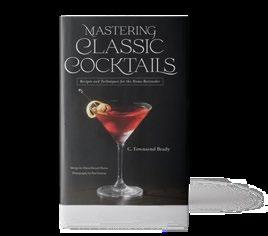
notes our reviewer. “Is it the author who sometimes address[es] the reader directly (‘Is this boring you yet’)? If not, what character is speaking? On the other hand, if this is indeed the ‘dreamtime’ (the author’s term for ‘the generalized discord of our times’), anything goes, chaos becomes not a bug but a feature, and the narrator can be a trickster. Translated by [Peter] Leonard and [Felix] Helbing from the Russian version, the writing is forceful and vivid.…Unfortunately, a book for our times.”
Not all of Indie’s teachings are so heavy: For those who want to learn how to make a good Manhattan or mint julep and stock their home bar, there’s Mastering Classic Cocktails (2022), by C. Townsend Brady.
Chaya Schechner is the president of Kirkus Indie.
Illustration by Eric Scott AndersonA struggle to save California retirees from a massive wildfire leads to allegations of misconduct by an elder-care corporation in Belden and Gullixson’s gripping exposé.
The authors (journalism professor Belden and former Santa Rosa Press Democrat editorial director Gullixson) recap the 2017 Tubbs Fire in California’s Napa and Sonoma Counties, one of a group of wildfires that killed 44 people and destroyed thousands of homes and businesses. They focus on the ordeal of two adjacent retirement communities in Santa Rosa—the Varenna apartment complex and the Villa Capri assisted living facility—both owned by a company called Oakmont Senior Living. The two residences were uniquely vulnerable to the fire that
swept down on them on the night of October 8, fed by bone-dry weather and tropical storm–force winds. Both were full of aged, incapacitated people, many of them stranded on upper floors and unable to climb down stairs when the power went out and elevators shut down, and many of them suffering from dementia. Worse, the authors contend, evacuation efforts by Oakmont managers were slow and confused, company buses went unused because keys were lost, and, after managers and staff drove some residents to safety, they failed to return for the rest because of miscommunications and roadblocks. It therefore fell to family members, who raced to the residences, to improvise evacuations. Later chapters cover the ensuing lawsuits and investigations of
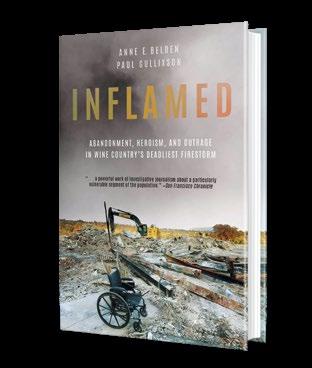
Belden, Anne E. & Paul Gullixson
Permuted Press | 464 pp. | $21.00 paper
Feb. 23, 2024 | 9781642939361
Oakmont, which was accused of negligence, elder abuse, and having no evacuation plan and an inadequately trained staff. There’s cowardice in this dramatic narrative, but at heart it’s about ordinary people displaying extraordinary grace under extreme pressure, all conveyed in intense, atmospheric prose (“The wind howled as it pushed smoke inside, and embers blew through the
open window, landing on the curtains, carpet and decor. It was then, through the dim, spectral light, R.J. saw a figure lying in bed”). The result is a moving re-creation of a nightmarish disaster that tested the character of all those in its path.
A harrowing saga that pits corporate pusillanimity against dogged courage under the most difficult circumstances.
By Richard Swindell, Jolanda Witvliet & Andrew RossAriano, Danielle | Atmosphere Press (282 pp.) | $17.99 paper
April 21, 2024 | 9798891320840
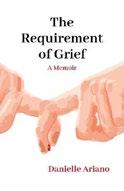
In her memoir, Ariano movingly recounts her sister’s difficult life and death. Ariano writes compassionately about older sister Alexis’ mental illness, which ended with her suicide. Throughout her life, Alexis attempted to end her own life 13 times before finally killing herself when she was 42. Heavily medicated and repeatedly institutionalized, she had regularly cut herself to quell her anxiety and silence the voices in her head. The author loved her big sister, and as a young girl, she copied Alexis in almost every way, including her dress, speech, and, somewhat reluctantly, her drug use. The sisters shared a love of books, and Alexis often read to Ariano at night. As addiction and mental illness took their toll on Alexis’ personality, however, the younger sister was forced to protect herself against the emotional fallout of watching a painful disintegration: “The possibility of suicide hung over us…it was part of the air we breathed and none of us could ever truly relax.” But the boundaries Ariano created also exposed her to Alexis’ accusations of hardheartedness, and the author felt guilty leaving her aging parents to bear the burden of her sister’s worsening mental state. Each time her sister plunged into catastrophe, whether due to addiction, the result of an abusive relationship, or one of the many suicide attempts, Ariano was drawn back into crisis, and she was unable to resist a natural resentment of the constant fear and turmoil her sister’s actions created. Written in clear, vivid language, the book comprises short chapters focusing on key moments in Alexis’ descent into self-destruction and on the ways her life and death affected all who knew and loved her. Ariano is especially insightful in
depicting the conflicted and sometimes excruciating family dynamics that result from the presence of someone experiencing intense mental instability over many years. For those who have felt the paradoxical combination of overwhelming grief and quiet relief at the death of a suffering family member, Ariano’s writing may have healing power. An honest, affecting remembrance of a beloved sister’s descent into self-destruction.
Bird, Charles G. | Self (594 pp.)
$21.95 paper | July 8, 2023 | 9798850891718

Bird’s historical novel chronicles
the New World exploits of Louis XIV–era soldiers who establish a trading port called Detroit. In 1680, 12-year-old Jean St. Aubin, from the French town of St. Aubin de Blaye, is eager to join the army upon hearing the stories of young visiting recruiter Antoine de Lamothe Cadillac. Cadillac signs off on St. Aubin’s enlistment papers but says the boy must wait a few years. Two years later, St. Aubin meets up with Cadillac again, this time in the company of a General Frontenac. By 1683, Jean is finally a soldier and is ordered to go to Nouvelle France, which will come to be called Canada. St. Aubin and his new soldier buddies endure a treacherous sea voyage, then, upon arrival, engage in many bloody skirmishes with internally warring Indigenous tribes, some supported by English forces. Many parties, including local clergy, seek to profit from trading routes. St. Aubin, Cadillac, and Gen. Frontenac converge again when Louis XIV taps the general to gain greater dominance in the region. Cadillac is granted a central role in setting up a strategic port in Detroit, with St. Aubin tasked with the dangerous
mission of bringing Cadillac’s wife and others to this new outpost. Adventure abounds in this fast-paced, fascinating book by Detroit native Bird, which dramatizes the derring-do of historical figures St. Aubin, Cadillac, Frontenac, and others. St. Aubin in particular gets through many suspenseful ordeals, including stepping up as a ship navigator following mass casualties, fending off many wily tribal warrior attacks, and overseeing a fleet of canoes through rapids and over waterfalls. The author, who plans a follow-up book, also showcases the bonds formed by these intrepid soldiers, with wisecracks muttered during tense moments (“Kick him where his brains are if he starts to fall asleep”) and, by novel’s end, a vision of Detroit as a nexus of multicultural harmony.
A rollicking wilderness epic that highlights the camaraderie and conflicts of Nouvelle France.
Bowling, Maria Crofoot | Austin Macauley (198 pp.) | $19.81 | $14.95 paper | May 26, 2023 9798886930429 | 9798886930412 paper

After an attack on America destroys the world as she knows it, a woman struggles to survive alone in the forests of West Virginia in Bowling’s dystopian novel.
Aurora Scott knew just where to go when a coordinated cyber-strike brought the United States to its knees. As the widow of a former National Security Agency employee, she’s long been familiar with dangers that lurk in the shadows. Years ago, her husband suggested they buy property “off-grid” and build a self-sufficient home deep in the West Virginia woods; she doubted its necessity at the time, but for six months now, she’s lived there alone, finding a sort of peace in this new isolated life, despite an occasional “lost day…when I let myself get caught up in
a bout of malaise and melancholy.” As a former teacher at a wilderness school, she’s in a familiar world, even a beautiful one. Her days are ordered, and she tracks them in her journal; she traps animals, maps the surrounding area, preserves food for colder months, and always watches for signs of intruders. But when she’s driven from her home by threatening strangers and finds a seriously injured young woman in the forest, she finds herself unprepared for the choices she now must make. Overall, this is a stirring and often moving account of one woman surviving the unimaginable and building a new life in the rubble. Bowling’s spare, evocative prose vividly captures the cold beauty of the West Virginia woods, and there’s a bald honesty to Aurora’s story, told through journal entries, that resonates deeply. There are no zombies or killer plagues, but the book has something more compelling: the story of a woman who’s trying to get on with the business of living, and of her gradually shifting perceptions of life as it now is. Indeed, watching someone rediscovering the value of community in a changing world is nothing short of riveting. A contemplative and quietly brilliant tale of one world ending and another beginning.
Brooks, Cassie | Illus. by Vaishnavi Dukhande
Primedia eLaunch (32 pp.) | $9.99 paper
Jan. 20, 2023 | 9798886806182
Series: Magick in Me, 2

A mother shares her love of nighttime to help her child feel less alone under the moonlit sky in Brooks’ quiet picture book.
Little Elijah is anxious. When he can’t find his mom inside, he realizes she is sitting on the steps outside. Elijah’s mother thinks looking at the moon is soothing, but Elijah isn’t sure; it looks creepy to him. Elijah’s mother
A highly entertaining romp through high strangeness.
STRANGE TIMING
leads him out into the nighttime, explaining that, to see stars and the moon, it has to be dark outside. When Elijah can’t find the animals he hears, his mother explains, “We may not see them, but the moon does. Just like we see the moon, the moon sees us.” The evening outside with his mother comforts Elijah enough to relieve his fears. Brooks makes the choice to never explain what has Elijah worried, which serves the narrative well, putting the focus not on finding a solution to a problem but on just being together, demonstrating how that kind of support can help children feel secure. Simple, accessible sentences help emphasize the deep love between parent and child. Dukhande’s illustrations do a beautiful job of portraying people and creatures that look real within their environments, with soft-edged, painterly forms. Elijah’s mom has a round figure, tattoos, and an upward-tilted button nose; curly-haired Elijah has darkerhued skin than his pale mother. A comforting celebration of life at night.
Bruce, J.C. | Tropic Press (344 pp.) | $14.99 paper | Nov. 30, 2023 | 9798989008506
Series: The Strange Files, 6

In Bruce’s SF/ thriller series entry, weirdnews correspondent Alexander Strange is set to get married in a time-twisted version of Florida where prehistoric creatures exist.
The countdown to Christmas has already begun on the island of Goodland, Florida, and all Strange wants to do in the next 10 days is file his special Yuletide dispatches to Tropic Press before the deadline. He’d also like to help his private-eye buddy, Lester Rivers, track down the people responsible for stealing the baby Jesus right out of a local megachurch’s Nativity display. There’s a war on Christmas, apparently, and the megachurch’s crooked pastor isn’t above engaging in nefarious shenanigans to prosecute it. Things turn stranger for Strange when a cutlass-wielding mannequin, which he keeps aboard his houseboat, comes to life and somehow starts communicating with him. “Mona” warns Strange that his girlfriend, Gwenn Giroux—an attorney on important business in Portugal—is in grave danger and will be hurt if he doesn’t get to her quickly. Strange doesn’t immediately grasp that he and the people he loves most dearly have become hopelessly entangled in a nasty case of quantum retrocausality—a phenomenon in which the future is affecting the past. In this case, it involves a disgruntled individual and a shady Florida genetics laboratory known as the Lightgate Institute. When Strange finally reaches Gwenn, there’s an airplane, of all things, bearing down on her. One thing’s for sure: Readers will encounter plenty of scenes of peril before the tale is told. (Also, the stolen baby Jesus will return to the narrative.) Over the course of this novel, Bruce delivers snappy dialogue and crackling prose, and he’s clearly having a great time spinning an intriguing and well-paced adventure story. He also gets high marks for deftly managing the thorny time paradoxes that retrocausality invites, as well as reanimated dinosaurs, skunk apes, and an Elvis Presley impersonator. There are even
A deeply imagined fable of faith and revolt.
James Bond references shaken and stirred into the mix. The story also manages to serve as an unexpectedly warm homage to the state of Florida itself.
A highly entertaining romp through high strangeness.
Jenni Rivera: Queen of Banda / La Diva de la Banda
Calderón, Raynelda A. | Illus. by María
Florencia De Luca | Cayena Press (34 pp.) $21.99 | March 1, 2024 | 9781955328081

Calderón celebrates the tenacity and legacy of music star Jenni Rivera in this picture book.
Born Dolores
Janney Rivera
Saavedra, Jenni Rivera made it clear from an early age that she was destined for great things. She was an ideal student who was talented and fearless in the face of bullies and gender norms. Her path to musical stardom was far from direct; she studied business and worked at a bank before she embraced her dream of writing and recording banda (a genre of Mexican music) songs. The author doesn’t shy away from some hard truths: Jenni’s obstacles to success were largely due to her gender in a historically male-dominated genre. But her hard work eventually led her to an audience, and, after achieving success, she contributed to philanthropic causes and remained humble, making her an ideal role model for young readers following the bilingual text in both English and Spanish. De Luca’s colorful
digital illustrations are at their best when showing Jenni’s performances. Calderón’s narrative focuses on Jenni’s career rather than her personal life; even so, readers may wish for more details about Jenni’s creative process and more specific examples of her charitable actions. Still, Calderón’s message reads loud and clear: As Jenni says, “Don’t wait for someone to believe in you. Believe in yourself.”
The inspiring, if somewhat abrupt, story of a Mexican American musical icon.
Canady, Bill | Koehler Books (280 pp.) $18.95 paper | Feb. 27, 2024 | 9798888242469

Canady offers a guide to perfecting a profitable business through better management. In this nonfiction debut, the author, who’s the CEO of OTC Industrial Technologies and Arrowhead Engineered Products, breaks down the philosophy and practical elements of a solid “profitable growth operating system,” or PGOS. He writes that he learned the basics of leadership in the U.S. Navy; began his post-military career in the heating, ventilation, and air-conditioning (HVAC) field; earned an MBA at the University of Chicago in the early 2000s; and joined an unnamed “global tech company” with the aim of rising to its upper echelons: “The fact that the company had urgent problems gave me a greater opportunity to climb faster and
establish myself sooner,” he notes, quipping that “you can’t fall out of a basement.” He moved into private equity, where he repeatedly observed the wisdom of the Pareto principle, from which he takes the title of his book: “Just 20 percent of what you do or spend generates 80 percent of your revenue.” (He sardonically adds, “Don’t get too happy, though, because the other 80 percent of what you spend generates just 20 percent of your revenue.”) In a series of chapters liberally broken up with bullet points, key takeaways, and colored insets, Canady lays out the workings of the Pareto principle as it applies to everything from meetings to workflow. At every stage, he employs a pitch-perfect combination of common sense and wit, clearly informed by long experience. When discussing the essential need to simplify in business procedures, for instance, he notes that his own candidate for the greatest authority in that area would be the esteemed naturalist writer Henry David Thoreau, although he admits that “you probably wouldn’t want him as a customer.” (“In fact,” he adds, “you probably couldn’t get him as a customer because he bought almost nothing from anybody.”) Canady not only effectively demonstrates that the 80/20 principle is “the single most important assumption” in management; he also entertains his readers at every step along the way. A brisk, enjoyable management manual to help CEOs develop “a bias for action.”
Carnes, Megan | Family of Light Books (384 pp.) | $18.95 paper | March 6, 2024 9798988120308 | Series: The Reaching Man, 1
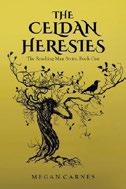
In Carnes’ debut fantasy novel, a willful girl leads a rebellion against the religious status quo. Before Gaelle was a heretical nun being held in a prison cell
suspended high in the air, she was just a girl. Her mother died in childbirth, and her woodsman father raised her with the help of her mother’s sister, her wise aunt Jillian. When Gaelle is 15, her father is killed by a horse. By the law of the Imperial Church of Esaosh, the strict religion that governs Gaelle’s homeland of Celd, the horse is to be put to death, and the horse’s owner, Wilm, is to be beaten. It falls to Gaelle to carry out the punishment herself, and when she refuses, she learns that there are consequences for those who disobey: “If the victim doesn’t immediately carry out the law, the victim becomes a criminal.” Gaelle is willing to live as an outlaw, though she doesn’t yet know what that entails; Jillian, who bears a brand burned onto her chest for her own trespasses against Church law, has a better idea. Together, they question more deeply the tenets of the faith that was forced upon them, eventually discovering a new god to worship. Will the Church suffer these heretics to live, or will they be forced to bring down the Church itself? The narration shifts back and forth between the perspective of an elderly Gaelle in her prison and her younger self. Carnes unspools both threads with entrancing lyricism, as here, when the older woman describes the bird who roosts with her in her cage: “This co-sunning is the closest the bird has allowed me to get to him, so far. What I consider sharing might actually amount to his version of a territory war, but he doesn’t hiss or posture. When the warmth makes him redolent, he smells a little of dust.” It’s a slow, thoughtful book, one that takes both its characters and the systems that ensnare them seriously. While the pacing may be a bit too leisurely for some, patient readers will be rewarded. A deeply imagined fable of faith and revolt.

Corbin, Mal Wrenn | SDP Publishing (284 pp.) | $18.11 paper
Jan. 31, 2024 | 9798988271567
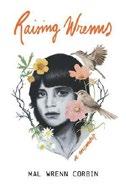
Corbin offers a harrowing account of growing up in a fractured family in a working-class Massachusetts neighborhood.
Throughout this memoir, the author draws comparisons between her family, the Wrenns, and the similarly named, “scrappy little birds renowned for the way they flitter from place to place, building shallow rooted nests wherever they land.” Her family, she says, “never flew farther” than the Main South neighborhood of Worcester, Massachusetts, where “people didn’t fuss with ambition.” After her younger brother David’s suicide in 2018, Corbin decided to write this book to delve into her past; in it, she writes of an early childhood marked by parental neglect and abuse. Organized into roughly chronological sections that often focus on specific family members, Corbin’s account begins in 1980, when she was 6 years old; she tells of having to leave her home to forage for food in the local park after her parents temporarily abandoned her and her siblings. Shortly thereafter, her younger sister, Lisa, was adopted by an aunt, while the author and David were returned to their parents, whose subsequent fights she compares to those of professional wrestlers. Following her parents’ divorce, her mother’s drug use intensified—“something is angrier about the drugs she’s using now”—and she disappeared again, this time for several months; during that time, the author tells of abuse by a boyfriend. The memoir’s few moments of lightness, such as an account of the author’s tender relationship with her best friend, and their plan to escape from their present circumstances together, are complicated and tinged with loss. The memoir’s use of Massachusetts dialect (hawse, trahp) has an authenticity that vividly captures the essence of her environment. Overall,
it’s a raw look at the realities of growing up in poverty and instability, and its unflinching style is complemented by poetic interstitials comparing each family member to specific characteristics of wrens. Although the story is very personal, it also touches on broader systemic issues affecting families in similar socio-economic conditions. A poignant and resonant memoir of loss.
Coulson, Ken | Koehler Books (262 pp.)
$27.95 | $19.95 paper | March 19, 2024 9798888242575 | 9798888242551 paper
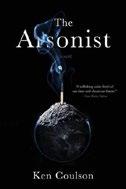
In Coulson’s thriller, the opportunity of a lifetime may redeem a disgraced trader—if it doesn’t kill him first.
Cal Minor was riding high as a star trader, but his life imploded in a miasma of deceit and debauchery that makes Jordan Belfort in The Wolf of Wall Street look like Fred Rogers. Now, he’s “belly-up in every way possible,” a mere “blip on the radar.” His ex-wife, Beth, got a half million in alimony and the house in Charleston. He is estranged from his children. And now, “after five years of unreturned phone calls and near-miss reinventions,” he’s on the verge of suicide. A phone call from the Atlas Company, “a staple of global wealth and opportunity,” offers him a new lease on life. Wall Street titan Hank Henleman runs the firm; from Atlas’ management ranks have come congressmen, Nobel Prize winners, and “not less than 10 percent of Forbes 40 under 40 in Finance for the last five years running.” Fans of John Grisham’s work will anticipate that there’s more to this firm (and to Henleman) than meets the eye. Henleman is a corporate villain out of central casting, a “real bull” with a contempt for “human steppingstones.” Minor’s efforts to extricate himself from Henleman’s machinations and those of other shadowy and sinister characters with their own agendas make for an auspicious franchise starter.
The first Latina Rockette brings passion to everything she does, and that includes her memoir.
BY DONALD LIEBENSONIn all aspects of her life, Lillian Colón comes to dance— whether overcoming a hard-knock childhood and abusive marriage or marshaling her passion to join the legendary kick line at Radio City Music Hall. Her self-published 2021 memoir, Lilly: The First Latina Rockette, takes readers step by step through her wrenching but ultimately inspiring story.
Before she was 4, Lillian’s father abandoned her to an orphanage in the Bronx and had her mother inexplicably committed to an institution. A visit to the orphanage by a dance teacher from the High School of Performing Arts (made famous by the film Fame) changed her life. Celebrity cameos pop up throughout her story—the boy band Menudo (for whom she served as choreographer), Chita Rivera, Bob Fosse, and the late comedian Freddie Prinze, who was a dear and supportive friend—but it’s her perseverance that resonates and makes hers a universal story for anyone who’s ever pursued a dream. She’s also living proof that it’s never too late to achieve: At the age of 65, she was cast in the film adaptation of Lin-Manuel Miranda’s Tony-winning musical In the Heights.
In a starred review, Kirkus calls her memoir “a thoughtful account of personal discovery.” Colón spoke with us on Zoom from her home in New York; our conversation has been edited for length and clarity.


be like me when they grew up. And I was like, I’m not that old! Anthony Ramos, the star of the film…I dressed him when he was a chorus boy at Radio City Music Hall. At that time I’d gone into wardrobe to support my daughter. He looked at me like, “You can dance?” I said, “That’s what I really do.”
Did that experience—seeing people fascinated with your story—inspire you to write the book?
Writing, like dance, is all in the preparation. Did you read other memoirs for inspiration?
I’m getting ahead of myself, but my wife and I recently saw Ricky Martin in concert. He’s 52. You were the choreographer for Menudo when he was 12. Do you think he’s still doing some of the moves you created for the band?
Oh, my God, he sure is. Those hips don’t lie [laughs]!
When you were cast in In the Heights, I imagine the younger dancers came to you for advice and inspiration? That happened to me at the audition. When I mentioned being the first Latina Rockette, the room went crazy. All the kids started coming up to me and saying they wanted to
After I left the Rockettes in 2002, I was looking for a new passion. I’d just had my little girl—that gave me another passion. But I also wanted to reinvent myself and give back for my dance career. It took me 20 years to write the story. The good Lord gave me what I needed to do to get this story out. It was a little tough.
Yes, I read Michelle Obama’s Becoming. I wanted to see what a top-notch book would look like. I read Supreme Court justice Sonia Sotomayor [My Beloved World ] because she’s Puerto Rican, and I read [actor] Rosie Perez’s book [Handbook for an Unpredictable Life] because I wanted something a little funkier. But I needed to find my own voice to tell my story.
Your book is a testament to the indomitable human spirit. How did you develop the tools and the will to become your own fiercest advocate? Because the nuns, for example, didn’t encourage you to attend the High School of Performing Arts.
I watch artists give acceptance speeches where they thank the people in their lives. I didn’t have that support system. I only had me. I only had that voice inside me saying, You can do it. My passion for dance drove me to succeed, because when I’m onstage, no one can touch me. My book is really for the child who doesn’t have that support system and doesn’t believe that they can do it. You really can do it if you believe in yourself. I call it the three P’s: Patience, Perseverance, and the Power within yourself. It’s all we really have. If outside voices tell you you’re not pretty enough, not young enough, not thin enough, not something enough, believing in yourself will push you forward.
Where did this passion for dance come from? How did your dancing dreams begin? From reading the book, it doesn’t seem like you
would’ve seen dance on TV growing up, for example. [It was] the dance teacher the orphanage brought in from the performing arts high school. We didn’t watch a lot of movies in the orphanage. We would watch The Sound of Music, things like that, with nuns in them. We watched Lilies of the Field [laughs]. When our orphanage went on the outing to Radio City Music Hall, I was mesmerized by the perfection of that show. I wanted to be a part of that, a world more perfect than the one I was in.
Which of your experiences have had the biggest impact on you?
Of course, doing Can-Can with Chita Rivera and the Rockettes. I looked up to her as a mentor my entire career. She was who I wanted to be like. She was a dancer, and her father was born in Puerto Rico. I kept in touch with her. The last time
My passion for dance drove me to succeed, because when I’m onstage, no one can touch me.
I saw her was Thanksgiving. I always go to West Bank Café, and she was there. She was always full of life, sweet and supportive. Her passing is such a loss to the community. [Ed.: Rivera died in January.]
Arts education these days is endangered in schools across the U.S., but you’re a shining example of how important it is. It saved me. Coming out of the orphanage and later, when I was in a domestic abuse situation, being able to express myself through dance gave me the passion to keep going. A lot of children are shy, and the arts help bring them out. They help them find community, which means you find yourself and you move forward.
When you auditioned for the Rockettes, were you even aware that you could be the first Latina Rockette?
No, I just wanted to be the best dancer I could be! But I love that title now. It does come with a responsibility, though. I continue to be the best I can be to open doors for other Latinos, so they can live the dream I’ve lived.
How is your story not a movie yet?
I know, I know! That’s where the dream continues. If you can see it in front of you, you can achieve it. I would love to see it as a movie, or a TV series or, because I love live theater, a Broadway musical.
Who would play you?
I get that question all the time. What I would love is to open the door for another young Latina and maybe help her career. It’s great to dance, but if somebody doesn’t give you the opportunity, where do you do it?
Donald Liebenson is a writer in Chicago.
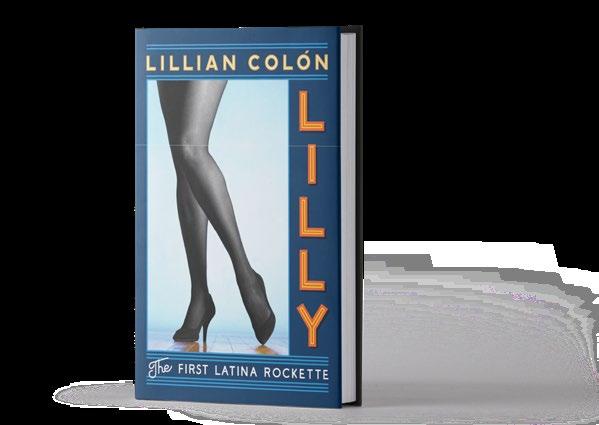
Excerpts from recent Indie favorites.
The opening essay in Sean Enfield’s collection, Holy American Burnout!, written like a letter to himself, sets the scene for life as a newbie teacher.
2015—the president is Black, Young Jeezy’s Lambo is blue, and he’d be goddamned if his rims ain’t too, and you, first-year middle school English teacher that you are, you fixate on a class you’d never taken: “Good Kids, Mad Cities,” taught by Adam Diehl, a professor at Georgia Regents University, and
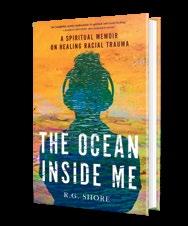
In the memoir The Ocean Inside Me: A Spiritual Memoir on Healing Racial Trauma , R.G Shore, who was born in Calcutta, recounts his stint in a prison “surrounded by large, angry, muscular White men.” While incarcerated, he discovered meditation techniques that changed his life.

centered on the Kendrick Lamar album, Good Kid, M.A.A.D. City. You teach eleven-to-thirteen-year-olds, an all-boys class, children of wealthy Pakistani immigrants, in a small North Texas town.… You’re just a few weeks into the job. You need ideas. Inspiration. Guidance. Control. Yesterday, as the class read aloud from To Kill a Mockingbird, two students fell asleep, one snored, and another ended every line of dialogue by adding, “deez nuts,” even after returning
Men stay perched on their bunks. It’s their only space, but the bunks are not comfortable. They squeak and move around. They’re bent and uneven, and the mats are paper-thin with thirty-year-old stains from prisoners before us.
Mine have gang signs drawn into them from Sharpies. Sometimes when I’m meditating, I open my eyes for a moment, look down, and see the words “you motherfucker” written in Sharpie just below my legs. I can’t help but laugh. The Universe can have a real sense of humor.
There’s an inmate in here who likes to write things on my bunk and on my books.… He has long, greasy hair and a few Aryan Brotherhood tattoos on his neck.
from the principal’s office for that very same offense. Another student rocked back and forth in his seat, compulsively it seemed, until he farted, and the other students mocked him—“Wallah! You smell like poop!”—and the farting student smiled…. Typically, they sit in silence whenever you ask questions about the novel. They’re bored, you justify.
In 2014, Diehl found a way to spice up his course description and in doing so, got some media coverage. Diehl’s course seemed to be the first to utilize Kendrick Lamar at the university level, though far from the first to present hip-hop in that setting. “[We] will examine the role of urban living on the development of young people,” the course description reads. “By studying and analyzing vari-
His teeth are jagged like a vampire’s, and he wears his hair in front of his eyes so no one can see him. For a while, he was my neighbor. He made a point to shake my bed whenever he walked by me, or he’d throw my things on the floor. I never made eye contact with him or confronted him or even spoke to him. I just kept to myself and tried to mind my own business, but it didn’t matter. He wanted trouble, and he was much bigger than I was. I’d come back from the yard to find my pillow on the ground or a book of mine in the garbage.
One night…I saw him there, sitting on his bunk, wide awake. He looked over at me, and for the first
ous literature, films, and K. Dot’s album, we will consider what effects our characters’ surroundings have on who they become as adults.” In an interview with Spin, Diehl remarks, “it’d be a disservice to my literature brethren to not include any books,” and indeed, his syllabus features James Baldwin, Gwendolyn Brooks, and yes, of course, the most gangsta of all Irish writers, James Joyce. Well, shit, if Diehl can make Joyce hip-hop, then surely you can do the same with Atticus Finch.

For a review
of Holy American Burnout!, visit Kirkus online.
time, our eyes finally met. In that moment, I saw him for who he was: just a lonely, miserable, scared kid. And for that brief moment, he knew that I knew. He knew that I could see it in his eyes; I didn’t have to say anything.
He never shook my bunk again.

For a review of The Ocean Inside Me, visit Kirkus online.

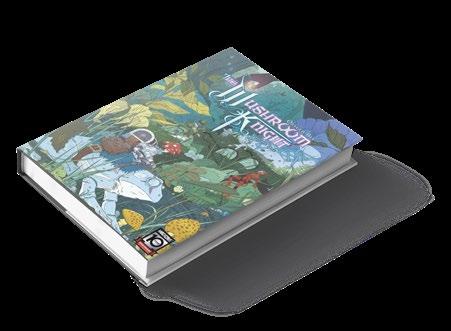
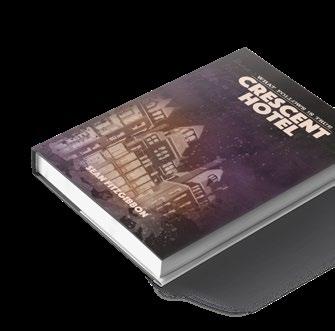
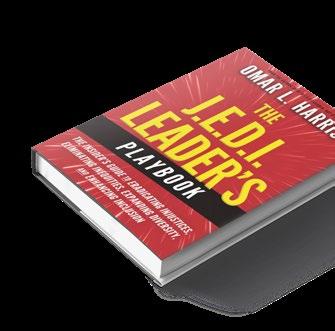

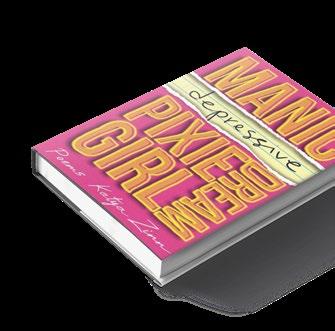

Coulson was himself a young trader working in London for Goldman Sachs, so he knows this world from the inside and has stories to tell (the “running with the bulls” incident depicted in the book happened in real life, as he shares in the author’s note). Even at his lowest point, Minor is an intriguing figure with a morbid sense of humor; when a hated and obnoxious neighbor interrupts his suicide attempt, Minor dismisses him with, “Randy, the truth is, I am trying to kill myself, and you are putting me decidedly behind schedule.”
A promising debut that will get thriller fans fired up for a sequel.
D., Sunny | Self (223 pp.) | $12.99 paper Nov. 20, 2023 | 9782952838344

In this middlegrade debut, a recently deaf girl moves to the Special Needs class, where she finds unexpected friendship. Eleven-year-old Kessie is the star pupil of East Bay Primary in St. Lucia. She loves Greek mythology and English idioms, and she’s always playing with language. Kessie has two great problems in life: Though she has a close but stormy relationship with her mum, she’s never known her father. Also, she’s been deaf for three months, the likely permanent result of an ear infection. Add a class bully and a new teacher (Teacher Piper) who seems to despise her, and Kessie’s immediate future looks grim. Then Teacher Haden—whom Kessie loves and wishes would marry her mother—invites her to join his Special Needs class. At first Kessie is insulted. But Teacher Haden tells her of another new girl she won’t want to miss: Milly, a Black albino who knows sign language and also loves Greek mythology. Reluctantly, Kessie agrees to switch. But she soon finds not only that she fits in well with the free spirits of the Special Needs class, but also that her mother and the two teachers have a secret history together. The author
A strong debut romance for fans of true happy endings.
writes in the first person and immerses readers in Kessie’s narrative. Kessie’s 11-year-old voice is thoroughly convincing. The only off note comes from the author’s omission of vocative commas (for example: “Try Kessie” rather than “Try, Kessie”; “The piglets need to suckle Haden” rather than “The piglets need to suckle, Haden”), the absence of which doesn’t gel well with Kessie’s voracious appetite for reading and language. Kessie is an in-your-face, somewhat exhausting but always compelling protagonist. Her classmates emerge as quirky, relatable individuals, as do the adult characters. True to the middle-grade world in real life, events in the story pile up quickly and assume momentous importance to their subjects.
Young readers should devour this mile-a-minute introduction to Kessie’s bracingly eclectic adolescent life.
Deane, Courtney | SparkPress (304 pp.) $17.95 paper | April 9, 2024 | 9781684632404
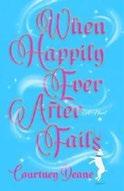
In Deane’s debut novel, a woman finds love, laughter, and purpose in a new teaching job. When Abigail Gardner goes for an interview at the exclusive Philadelphia prep school Excelsior Primm, she is seeking a second chance to become an art teacher. An embarrassing incident prompted her to leave her previous school, and she is grateful for any opportunity—even if it unexpectedly lands her in a classroom of sixth graders, teaching literature. Desperate for a new start, and with the weight of her father’s
reputation as a literature professor and her grief over his death upon her shoulders, Abigail rolls with it, soon becoming entangled in revamping the drama club, which has her students performing an alternative version of Romeo and Juliet . Deane has crafted a quintessential 20-something character searching for her place in the world, occasionally falling back on cliches such as “Abigail wondered how she got here, where she was going, and what she would think one day when she looked back.” Still, Abigail is rendered so endearingly—Deane conveys her thoughts and feelings with great dimension—that readers will happily forgive the occasional shopworn turn of phrase. Her habit of acting as different characters when socializing with her friends is particularly amusing. On a social outing, Abigail runs into Nate, a handsome stranger who turns out to be a fellow teacher at her school. Their romance is slow-burning, in direct contrast to her friendship with Quinn, who is in love with Abigail and whose family treats her as one of their own. Deane takes a well-worn trope in women’s fiction and puts a fun spin on it, weaving in subplots involving Abigail’s students, friendships, and co-workers. The end result is an expansive tale that will have readers rooting for happily-ever-afters for a number of characters in addition to the hero.
A strong debut romance for fans of true happy endings.

Fox, Jocelyn A. | Greatheart Creative (342 pp.)
$21.99 | $12.95 paper | April 30, 2023
9798985460919 | 9798985460926 paper
Series: Athena Ellison, 1
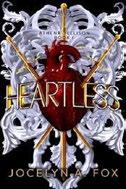
A bounty hunter–mage teams up with an unlikely partner to stop a murderous necromancer in Fox’s fantasy thriller series starter.
Mages live secretly among humans and come from a place called the Secondworld. They have specific affinities for certain types of magic. Athena Ellison, for instance, has two affinities: finding things that are lost, and “Killing Monsters.” After these talents lead her into a career as a bounty hunter, she springs into action when she sees fugitive Kellan Mordigan, a man from a notable family of magic users who’s suspected of killing three mages. Soon after Athena cuffs him, they’re attacked by powerful reanimated corpses sent to kill them. Athena learns there’s more to Kellan’s story than she thought. He’s being framed by his cousin, Lysette Mordigan, a necromancer who cut Kellan’s heart out of his chest after he realized she was using him to lure sacrifices to her; only Lysette’s spell is keeping him alive. With this knowledge, Athena decides to ignore the bounty and take Kellan on as a client instead—even after the International Coven Council issues a kill-on-sight order against her. Athena’s twin brother, Apollo—a healer interested in the medical advances that Lysette’s spell could make possible—funds his sister’s quest to retrieve Kellan’s heart and stop Lysette’s murderous ways. Fox populates this fantasy tale with a bright cast of characters who ably bring the story to life. Some moments come across as a bit corny—part of Kellan’s affinity, for example, is that he’s very attractive to women, including Athena—and Lysette’s villainous motivation doesn’t have much substance. Readers later learn that she initially pitched her plan
to Kellan as creating a “consortium of feminine power,” which isn’t expanded upon. The relationship between Athena and Kellan, however, effectively builds in a way that feels realistic. The story will likely appeal to fans of slow-burn fantasy romances, since the narrative takes its time.
An adventure-filled tale of love and magic with a strong central relationship.
Francis, Charles | University of North Texas Press (288 pp.) | $25.51 Sept. 27, 2023 | 9781574419085

Francis writes about recovering gay history one document at a time in this debut memoir.
What’s past is prologue, not only for individuals but for whole communities. “But what if you cannot find the past?” asks the author in his introduction. “What happens when all evidence, every shred, has been erased, deleted, sealed, or purposefully forgotten? What if the past is torched or stuffed into garbage bags and dumpsters? For LGBTQ Americans this has been the way of our world.” Archive activism, the process that Francis describes in this book, is the attempt to recover that history in the form of whatever archival materials have been squirreled away in attics, basements, government archives, and law libraries as a means of furthering social justice causes in the present. The author’s passion for reclaiming gay history led him to resurrect the Mattachine Society—a 1950s-era gay rights group—in 2011. Through the Society, Francis was able to retrieve troves of records related to such actions as Nancy Reagan’s refusal to help Rock Hudson get into a leading hospital for his AIDS treatment and attempts by President Lyndon Johnson to hide the sexual orientation of one of his aides. The author makes his own additions to the corpus of gay history, recounting his
exposure to gay cinema as a graduate student in Los Angeles and his eventual involvement, beginning in the 1980s, as an out gay man in Republican Party politics. (He even helped presidential candidate George W. Bush connect with gay and lesbian voters.) Francis writes with candor and conviction, as here when he describes his meeting with Bush’s chief strategist, Karl Rove: “I emphasized this would represent a new generation ready to make homosexuality a nonissue for the Republican Party. There could be no going back to the Reagan years of psychologically self-tormented, closeted cases…”
Though Francis may not be who readers first think of when they think of an activist, his account is a fascinating and illuminating addition to the history of gay liberation.
An informative memoir that fills in some gaps in the social justice record.
Gordon, David | Lulu.com (350 pp.)
$24.99 paper | Dec. 27, 2023 | 9781304812421

Gordon presents a fictional account of the devastating 1911 Triangle Waist Company fire.
Catherine Tassone immigrates to New York City at age 15 in 1906 to support her family after their home in San Giuseppe, Italy, is devastated by the eruption of Mount Vesuvius. Seventeen-year-old Jacob Brosky moves to the city the same year from the Pale of Settlement region of Russia after his family is murdered in a pogrom. Black Americans Sarah Johnson and her husband, Will, own and live in a store in the city’s Hester Street Market and bear the scars of local race riots six years before. These characters’ lives intersect in unexpected ways as they live and work in Manhattan tenements and sweatshops.
Catherine and Jacob are both employed at the Triangle Waist Company, owned by Max Blanck and Isaac Harris, themselves immigrants, who “pinched every penny and sweated every employee to control costs and maximize profits.” The factory is on the eighth through tenth floors of the newly built Asch Building at Washington Place and Greene Street, across from the Johnsons’ store. It’s also a firetrap, crowded with people, clothing-manufacturing machines, and flammable materials. Michael McMahon is a young firefighter who regularly saves people from burning tenements; as he and Catherine become romantically involved, the dangerous working and financial conditions at Triangle come into sharper focus, culminating in the tragic fire on March 25, 1911. Gordon effectively interweaves accounts of the lives of people who lived and died on the fateful day of the fire with details of New York City political movements of the early 1900s. This absorbing, educational read particularly considers unions’ progress in organizing for better wages and working conditions in the garment industry, as well as the machinations of the notorious Tammany Hall political machine. The novel also features vivid descriptions; at one point, for instance, a reporter asks a firefighter, “What will you remember most about this awful day?” After a moment, the rescuer responds, “Today...it rained children.” An ambitious and well-rendered tale of early 1900s New York.
(In)Sights: Peacemaking in the Oslo Process: Thirty Years and Counting
Grinstein, Gidi & Ari Afilalo
Self (418 pp.) | $24.41 paper
Sept. 7, 2023 | 9798860652705

ian tensions.
Few issues are as harrowing on the international stage in 2024 as the conflict between Israel and Palestine. Against the backdrop of the ongoing Israeli invasion of Gaza in response to Hamas’ attacks on the Gaza–Israeli border, the authors recall past moments of hope represented by the multi-year negotiations initiated by the Clinton administration’s Oslo Accords. As the youngest delegate at the 2000 Camp David Summit, then 30-year-old Grinstein served as secretary for the Israeli delegation and assistant chief negotiator. Blending memoir with geopolitical analysis, Grinstein offers readers a fly-on-the-wall perspective from someone with access to the tense high-level diplomatic conversations. His memories include a moment of panic when he had to give Israeli prime minister Ehud Barak the Heimlich maneuver after he choked on a snack in Camp David’s Dogwood Cabin. Grinstein also offers an insider’s analysis of the competing domestic and international pressures confronting Barak, who, at the time, “needed something to run on” in the upcoming elections. Co-author Afilalo, a professor of international law and trade at Rutgers University, provides important historical analysis and commentary that contextualizes the Oslo Accords, backed by a wealth of scholarly footnotes.
Grinstein in which he offers “Lessons for Aspiring History Makers”; he encourages aspirants to follow his example by becoming experts and making themselves “indispensable to the greats.” (At times the book feels a bit self-indulgent, with its inclusion of photographs of Grinstein with Bill Clinton, Barak, and other world leaders in the White House and elsewhere.) In addition to its rich, full-color photographs, the book includes an assortment of maps, images, and reproductions of primary source documents. While the authors are diplomatic in their presentations of Palestinian positions, their views are filtered through a distinctly Israeli perspective. The phrase “apartheid state,” for instance, appears only three times in more than 350 pages, and only within quotation marks that question the accuracy of the phrase. The authors take a more nuanced approach toward Israel, treating Barak as a “tragic figure” and criticizing the actions of current prime minister Benjamin Netanyahu for distancing his administration “from world Jewry” and escalating a situation that “threatens the future of Israel.” Engaging and well written, this work will also double as an effective primer on Israeli–Palestinian relations for those unfamiliar with the region’s complexities.
An impressively crafted, deeply personal history of Middle Eastern diplomacy.
Grinstein and Afilalo, experts on international law and diplomacy, combine memoir and scholarship in this survey of Israeli–Palestin-
The book is divided thematically into four sections. Sections one and two center on Grinstein’s personal history and experiences as an Israeli delegate tasked with negotiating a Framework Agreement on Permanent Status with Yasser Arafat’s Palestine Liberation Organization. Section three focuses on the U.S.’s role in the peace process, and on the tenuous nature of peace negotiations. The book’s final section uses the Oslo Accords as the basis for reflections on potential avenues for future peace negotiations between the two sides. This definitive history of the accords contains ample appendix material to assist readers in navigating the complexities of the Israeli–Palestinian conflict and the myriad interest groups and individual people involved. The book also includes an essay by
Hardy, Bonnie | Self (302 pp.) | $14.99 paper May 19, 2023 | 9781954995130

A doula and a mentalist form an unlikely mysterysolving duo in Hardy’s mystery series opener.
Vivienne Rose, owner of the Palm Desert business Desert Doulas, returns home from a birth late one night to find that the police are close behind her; her neighbor, Rex Redondo,
A motherhood memoir that’s by turns funny and heartwarming.
called them to report a body in Vivienne’s pool. Initially, Viv is worried when her friend Tamara doesn’t appear, but the body turns out to be another one of Viv’s doulas, Sarah. When the police stall in their investigation, Viv decides to take matters into her own hands. Rex is a mentalist who performs at a local casino. He and his assistant, former United States Marine Sutton Drew, offer their unique skills to aid in Viv’s investigation. Yet the more they learn, the more questions they have: Were Viv’s doulas running a secret business behind her back? Are Hailey and Cameron, Rex’s influencer “niece” and her husband, involved? Could the killer target Viv next? Rex initially comes off poorly—after calling the cops from next door, he then heads over to the scene of the crime and is instantly attracted to a devastated Viv. He seems more focused on this than the dead body, and his thought process reads as creepy: “How am I going to stay close to Vivienne Rose? She didn’t rebuff me right away. That’s good. I know. I’ll offer to help out with the cops and everything.” He later shows more genuine concern and respect for Viv and becomes more appealing as his dry wit and self-awareness perfectly undercut his casino-performer persona. Viv is a sympathetic character, but she is sometimes overshadowed by more eccentric personalities in the supporting cast, and the inclusion of Hailey and Cameron feels a bit gratuitous. Still, the mystery has a satisfying conclusion, and the setting of a doula community in an upscale area is unique and compelling. By the end, Viv and Rex have established a fun dynamic that will surely carry over into the next book.
Readers who enjoy mysteries in unusual milieus with a dash of romance will find this yarn an enjoyable read.
Holman, Andrea | Holman Entertainment Publishing (208 pp.) | $16.99 paper April 29, 2023 | 9781737161004
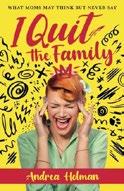
Holman’s memoir offers a lighthearted, Christian-themed look at the ups and downs of motherhood.
There were times during her tenure as a loving wife and mother of four that, as the author relates in her nonfiction debut, she felt “scattered and unhinged” and wished that she could jump ahead in the story of her life. “I wanted God to pick me up and place me exactly where I was supposed to be,” she writes, in the Christian-themed language that infuses the narrative. In these pages, she aims to convey some of the many lessons she’s learned along the way, with the aim of helping other mothers who might be feeling intimidated and overwhelmed by the experience. She sympathizes with those moms who are expected to “contain a small toddler ready to blow their lid with just a toothpick, dental floss, and some sticky tape!” (Then she wisecracks, “Oh wait, that’s MacGyver!”) Holman’s own motherhood journey started with a rough patch (her first baby was premature, delivered during a full moon in the middle of a freak springtime blizzard); she recounts all the ensuing trials and triumphs in a winningly approachable voice that’s equal parts Joyce Meyer and Erma Bombeck. The author writes that her life would be impossible without her relationship with God, but there’s a good deal of down-to-earth, humanscale humor in the book. Holman also expresses a lot of empathy, which always
feels natural and unforced: “There are reasons why you can’t teach your kids everything you know, because some lessons must be learned on your own, no matter how many times it takes,” she writes, adding: “It’s worth it, and you are worth it, too!” These kinds of easy affirmations make the book an uplifting reading experience, even for childless readers with no plans to start a family. A motherhood memoir that’s by turns funny and heartwarming.
Huang, Daniel Farber | Self (152 pp.) | $23.95 paper Oct. 6, 2023 | 9798863606675
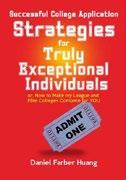
Huang presents a how-to guide for college-bound students applying to Ivy League schools. From the introduction, the author makes it clear that his book is aimed at prospective university students who wish to “present themselves in their best, most brilliant light without coming across as egotistical, entitled, or just unpleasant to be around.” In a separate letter to parents, he notes that the Ivy League schools aren’t a good fit for everyone, and that he won’t be providing the typical recommendations for extracurriculars and AP classes that other guides do. What Huang offers instead is the perspective of an admission reader—the “tired, overworked, blearyeyed” person speed-reading through the digital records of thousands of students. Given the nature of modern-day admissions, he advises teens to start early by developing their “personal brand,” ensuring that their actions and choices reflect the persona they wish to convey in essays, resumes, and recommendation letters. In the book’s second section, Huang breaks down his advice into easily applicable “tactics, techniques, and procedures.” Throughout, his tone is honest, sometimes hard-nosed, and intended for the student (or parent)
Talking with writers about their work and the independent publishing experience. All conversations have been edited for length and clarity.


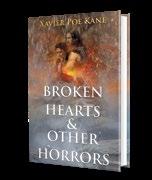
Author of Broken Hearts & Other Horrors
How did you choose the genre of Broken Hearts & Other Horrors?
Growing up, I always thought I would write sci-fi since I’m a big Star Wars nerd. However, while I was a fan of those sorts of movies and TV shows, I was reading Stephen King and appreciating the psychological edge of Joyce Carol Oates and Shirley Jackson. Plus, the novel Jaws left as much of an impression on me as the movie. And so, when it came time to begin writing, it was more like the genre chose me based on the literature I’d fed my creative subconscious.
What was your editing process like?
I believe the best writing is the result of collaboration, and I would be nothing without my editor, Kayla Randolph. She’s a poet, and her being Gen Z helps me keep a fresh perspective so that my writing appeals to a broad age range of
readers from mid-20s to late 40s. (And all while helping me make my words sing!)
Any advice for others starting the process of independent publishing? Seek out people who will give you honest, critical feedback and won’t be afraid to tell you what they don’t like about your stories as much as they tell you what you’re doing right. You can’t fix what you need to if your beta readers are protecting your feelings. I wouldn’t have ever achieved anything in writing if it weren’t for the honest critiques of my first beta reader, Derek Betz.
How has critical and/or reader response influenced the way you think about your work?
I struggle with imposter syndrome. When I was attending Emerson College and I was surrounded by all these very talented peers and accomplished professors, I felt like I didn’t belong and wondered how I got accepted into such a great program.
After graduating, I began writing for a creepypasta podcast called Fear From the Heartland on the “Chilling Tales for Dark Nights” YouTube channel. Once again, I felt like I didn’t belong in the company of the great writers on the channel— until I began engaging with the fans in the comments. While balanced, the feedback is overwhelmingly positive, and knowing that I’ve entertained complete strangers or elicited a strong emotional response from them makes me feel like I’ve succeeded at being a writer.
Then—and particularly when Broken Hearts & Other Horrors got the “GET IT” accolade from Kirkus—
the little voice telling me I was an imposter became a whisper.
What are you working on now?
I have plans to adapt two stories from this anthology into full-length novels. The first will be expanding the short story “Pea Ridge,” which is about a UFO crash in rural Missouri that unleashes an infestation on an unsuspecting small town. The second is “The Last Bride,” and that one will be a more in-depth reimagining of the Dracula mythos as seen through the perspective of a woman who chose to become the last of his brides (who were seen but not heard from in Stoker’s novel).



Author of In the Lair of Legends
Please tell us a little about In the Lair of Legends .
Being both a film school graduate and an optioned screenwriter, my
Kane: Lisa Scolley; Buzan: Troutman Photographybackground in that medium provided a unique segue into the publication of my debut novel. In the Lair of Legends is about a Native American Civil War veteran who finds himself battling a unit of Army traitors and a legendary monster in 1873 Southern Oregon. While initially I set out for it to be a 1980s action movie on the page, the storyline eventually progressed into a deeper character study of duty and the power of finding your place in the world.
How did you choose the genre of your book?
The concept of the story itself allowed for me to delve into a multigenre world. The novel is a unique melding of action/adventure, historical fiction, horror, and Western. To write cohesively in those varied genres was an interesting challenge. As a writer, you have to be fully committed to making those different aspects work, or the novel will feel fragmented to the reader. Fortunately, all of the genre elements flowed organically into the narrative as the storyline progressed.
Was the storyline something you envisioned from the beginning, or did you change it as you were writing your novel?
The core storyline itself never changed throughout the writing process, but certain aspects of the plot were definitely altered during the extensive research process. Research brought not only authenticity, but fresh ideas to the narrative that I never would have envisioned without it. It doesn’t matter what genre of book you’re writing; research is foundational for creativity.
How has critical and reader response influenced the way you think about your work?
After the multidecade struggle this journey was, seeing my debut novel become an Amazon bestseller and a seven-time award-winner (including 2023 Best Thrillers Book Award: Historical Thriller of the Year and 2023 NYC Big Book Award: Action/ Adventure) has been extremely
gratifying. I’m hoping that this success will somehow bolster the courage of other writers to keep pursuing their dreams amidst whatever publishing challenges and adversities they might be facing. I have a motto: No Surrender.
What are you working on now? I’m currently working on a sequel to In the Lair of Legends that will be published in spring 2025. I’m also writing a stand-alone action thriller that will be out in early 2026.


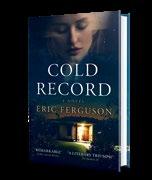
Author of Cold Record
Please tell us a little about yourself and Cold Record .
My parents were both professional writers, and I read compulsively from early childhood, so I was dreaming of writing books by about the third grade. But after I’d dawdled into my 30s, a baby arrived and bills were due, so I suddenly found myself in law school. Then I lucked into a wonderful opportunity as a prosecutor, starting in a colorful desert outpost and later migrating to the city, and realized somewhere along the way that I finally had a topic I could dare to write about. Cold Record took only a decade after that!
How did you choose the genre of your book?
Since the general topic was settled, my main question was tone. Over the years I’ve found most “legal thrillers” exhausting and implausible, full of cynicism, dark motives, and action for action’s sake. So my goal from early on was to write a realistic legal novel where the drama would come from the humanity of the characters, their flaws and choices, and the endless intricacy of the law itself. But I also wanted to build in an element of mystery, which involved time—whereas most courtroom dramas end with the verdict, here there is a deeper truth to dig up, many years later. Above all, though, I hoped for authenticity.
How did you develop your characters? It was all a fairly organic process—I’m not entirely sure how they changed over time! The primary narrator, John Howland, resembles me in some ways but had to grow a bit through the trial, and then in the years afterward. The victim’s mother and her murdered daughter came to me almost fully formed. The skill and strength of the lead prosecutor and the defense attorney owe a debt to actual lawyers I’ve known and admired, and the defendant evolved along with the story, as the core truth of his life and the murder came into focus. I think the throughline was to convey the default decency and good intentions of almost everyone who makes the legal system work, even in harrowing circumstances.
Was your storyline something that you envisioned from the beginning, or did you build/change it as you were writing your novel? The outline of the story was always there—the location, the defendant, the victim, the lawyers, the trial. But I did have a major insight several years into the project, and a murder case just can’t help being complex, so I was making tiny refinements all through the process. The good news was that over time I truly got to know the characters, which made it easier to decide whether any new wrinkle actually made sense, and by the end I had the wonderful sensation that it did all fit together.



Author of the “Scapes” Collection
Please tell us a little about yourself and your “Scapes” Collection. My international childhood and education in art, drama, music, and language gave me a wonderful foundation to play with language, evoke images, and tell stories.
I’ve done five “Scapes” volumes of poetry to date. Homescapes is about growing up in France and India and coming to live in the United States at age 14. Mindscapes deals with the reality and the mythology of womanhood. Lifescapes struggles with separation and divorce during a pandemic. Artscapes dives into painting, sculpture, and music.
The latest volume, Soulscapes, is about “other ways of knowing,” beyond traditional religions. I researched origin stories, spirit animals, lucid dreaming, witchcraft, and past lives. We often long for absolutes, especially when the world
is in crisis. But we live in a relative world. Soulscapes explores how we reach for something greater than ourselves, and recognize the cosmic and the divine in the natural world.
How do you develop your subjects? It’s rare for me that a poem just spills out. First, I decide on the main theme for a collection and then start digging. I stare at artwork, birds, animals, and street scenes. I eavesdrop on conversations in public. Then I go back over my notes and highlight what grabs me. After that, there’s endless research online into ideas, sounds, or artists. I pick the best poetic form for the content. The more exact a poet can be with word choice, rhyme, and line breaks and the better the metaphors—the more universal the meaning of the poem becomes.
How has critical and/or reader response influenced the way you think about your work? Reviewers and readers often see themes in my work I do not see or did not intend. Their comments make me appreciate how poetry provokes questions and offers individual opportunities for deeper interpretation. People sometimes assume poetry will be difficult to understand or that their personal reactions are not valid. When teaching a class or doing a reading, I ask listeners, “What do you notice? What do you wonder? What stays with you over time?” Both children and adults realize how delightful it is to experience poetry, and they burst forth with personal stories and reactions. This in turn makes it all the more fun for me!
What are you working on now? Colorscapes —volume 6 of my “Scapes” series. I’m up to my ears in research into the chemistry, the psychology, and the philosophy of color, learning about everything from insects as materials for dyes to the philosophy of Goethe and the range of hues used by Kandinsky! Color provides an incredible opportunity to express delight, disgust, humor, and metaphor. I’ll continue to use a range of poetic forms (pantoums, villanelles, etc.) and certainly my beloved ekphrastics—poems about artworks.


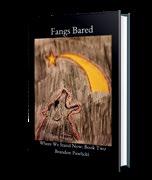
Author of the Where We Stand Now series
Please tell us a little about yourself and Where We Stand Now.
I’m a late 20s indie writer from Michigan. I have a passion for fiction. It tends to be my preferred kind of entertainment and it’s become my domain creatively. I’m the author of the zombie apocalypse survival series Where We Stand Now. I have two entries published on Amazon, An End and Fangs Bared, and four more planned. Writing my first series has proven to be quite the journey.
How did you choose the genre of your series?
That’s a funny story. I’ve always gravitated toward darker, more character-driven narratives, and as it happened, some of my favorites dealt with the zombie apocalypse. What ultimately sparked my interest in trying my own hand at it was actually the disappointment I felt with the direction these other stories went in. There was a lot I loved about them early on, but, as they went on, there came to be a lot that I didn’t love. And so I took some notes and followed my muse on things.
How did you develop the characters in your books?
I looked at what I liked and went from there. For me, I prefer to follow human beings. Their strengths. Their flaws. Their complexities. I never did care for characters that were all one way or the other. With any good story, of course you want a sense of heroism in there, too. It’s in the shades of gray, though, that things get really interesting for me. So I applied that to my protagonist, and I applied that to everyone around her. If it feels real and human, then that’s what I go with when creating my characters.
Is there anything you would do differently in your next book?
I aim to take my time a bit more. I basically wrote the first two back-toback. And, hey, it worked out from what I gather. But the story only gets bigger going forward, and that’s not something I want to screw up. That’s one of the beauties of being self-published. There’s no deadline
and I can let the writing breathe and grow as I feel it needs to.
What are you working on now?
I’m writing the third book and piecing together a road map for the rest of the series to come. That’s really it. I took the plunge on this and I aim to see it through, so, for now, it’s full steam ahead.
I want to give thanks to Kirkus, both for seeing something in my books and for offering me a chance to share a bit here. And thanks to all of you for reading.


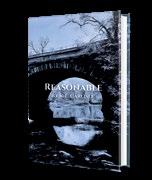 K.T. CARLISLE
K.T. CARLISLE
Author of Reasonable
How did you choose the genre of Reasonable?
I have always been drawn to the darker things in life, devouring books within the murder mystery and psychological thriller genre for as long as I can remember. Even when I’m not writing or reading, I’m often binge-watching episodes of Dateline or 20/20 . One of the things that has always resonated with me about crime stories in particular is the lasting impact that they have on the survivors and the victims’ families. There’s this universal feeling of despair and wondering why things turned out the way they
did that hits home for me. In many ways, I’ve turned to this genre as a way to cope with the hardships in my life that have left me longing for answers in a world where they are in woefully short supply.
Was your storyline something that you envisioned from the beginning, or did you build/change it as you wrote your novel?
When I first started writing Reasonable, I had a clear vision for the storyline but never sat down and developed a full outline. I wanted to let the characters drive the story forward and let them be the ones to determine how their story should be told. Initially, I thought this would be a stand-alone novel, but as I got to the halfway point, I realized that there was still so much left to the mystery that couldn’t be resolved in one book. That’s when I decided that I needed to make it a series instead, and I’m so glad that I gave myself the freedom to adapt to that change.
How has critical and/or reader response influenced the way you think about your work?
Before writing Reasonable, I never used to share my work with anyone until it was “complete.” But because of that, I never actually finished anything. When I sat down to write this book, I decided that I would do everything differently than I normally would and commit to sharing my work with readers as it was being written. This one change is what ultimately gave me the confidence to finish my first full-length novel. I’m so grateful to the people in my life who have helped me realize this story’s potential with their feedback. If it weren’t for them, Reasonable would likely be sitting in a draft graveyard with the rest of my incomplete projects.
What are you working on now?
Having just completed Forget-MeNot (the sequel to Reasonable), I am now focused on finishing the series with the final installment in the trilogy, Unhinged, which is slated for release in early fall 2024.



CLAIRE BALDWIN HARRISON
Author of Bodies of Water
Please tell us a little about yourself and Bodies of Water.
My work history includes being an Army nurse, an instructional video writer and producer, the co-founder of a nonprofit supporting low-wealth schools, a young adult librarian, and the challenging fulfillment of teaching English in a public middle school. The seeds of the idea of my story began during my years as a stay-at-home mom in the 1990s. The characters stayed with me, and I revisited, rewrote, and reimagined it for years. The essence lies in a teenage protagonist’s smart and determined quest to unravel their own history, a theme that reflects my belief in young people, and the tendency to underestimate them.
How did you choose the genre of Bodies of Water ?
This was easy, not really a choice, but a natural extension of what I love to read and share with others. In adolescence, I immersed myself in books as a way of coping. I still do. I’m drawn to books that speak to both teens and adults for the opportunity they provide for readers of different ages to share ideas and perspectives. My book presents an ethical dilemma without offering neat conclusions, set against the backdrop of the 1980s—a time before the digital age simplified our quest for information.
What was your editing process like? As a librarian and educator, I was fortunate to have access to a community skilled in the art of critique, and willing to give honest feedback. In one memorable instance, a young relative’s enthusiasm for an early draft led to it being circulated in her classroom—a gesture that proved invaluable. At the point of deciding to self-publish, I engaged a professional editor, ensuring that the manuscript underwent rigorous refinement.
How did you develop the characters in your book?
I’m an unapologetic people watcher, and I listen. I think of my characters as their own people, but I certainly draw from my own experiences and people I know for some characteristics, both admirable and not. The fun part of fiction writing is you can start with something grounded in reality, then turn in any direction the character takes you. When I would question if a teenager could pull off some of the things in my book, I had a particular friend in mind when I thought, “Yes, she could.” Anna, my protagonist, is inspired by my own vivid dreams, yet
the direction and depth of her dreamscape are uniquely hers.
How have you built your audience?
Cultivating an audience is an ongoing learning experience. It began with the support of my personal network, extending through word-of-mouth recommendations, engaging book clubs, and a favorable Kirkus review. Now, I’m navigating new strategies to connect with teen readers. It’s an interesting process, after being on the ordering end of book selection for many years, to be thinking of it from the other side, especially as so much in the industry has changed.


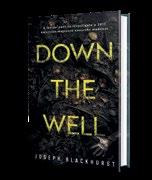
JOSEPH BLACKHURST
Author of Down the Well
Please tell us a little about yourself and Down the Well.
I’m an attorney with a large law firm who works primarily on high-profile
class action lawsuits. I also have an active pro bono practice representing inmates facing unconstitutional life sentences. I also represent victims of sexual harm. I began my full-time writing career five years ago. Down the Well is my first novel to see the light of day. I have two “practice” books in the bottom drawer—padlocked twice. The desk is set to detonate if the drawer is ever unlocked.
How did you choose the genre of your book?
I didn’t. For better or worse, I disagree with the notion that a writer must consider genre and marketing from the outset. Granted, I have a secure day job and do not need to write for the money. I understand the privilege of ignoring genre is not available to many working authors. Regardless, I encourage writers to simply write their story and see what comes out. If genre were at the forefront of all writers’ minds, I assure you there would be no James Joyce or Vladimir Nabokov novels. I also disagree that a writer needs to be well read in their genre. Innovation often comes from the writer who is blissfully ignorant of the tropes and expectations of their genre.
Any advice for others starting the process of independent publishing? This advice is more to help writers arrive at the decision to publish independently: It’s okay to skip the process of submitting your manuscript to agents altogether. Some novels simply don’t fit the traditional path to publication and forcing it will likely lead to wasted time and disappointment. My novel, Down the Well, is a unique metanarrative that doesn’t fit into any genre or have many comparable titles. Understandably, agents couldn’t see how to sell it. Querying agents on that novel wasted a year and a half and led only to three hundred rejections. Accept that innovative manuscripts are a tough sell. Be proud to publish them independently and begin work on your next novel.
What are you working on now?
I’m finishing up my next novel, The Reddening. It’s a more traditional sci-fi story about a girl being raised to become a slave driver in a cruel, post-apocalyptic world. The story is her journey to learn to question generations of misinformation to determine what is right. Comparable titles include Dune by Frank Herbert and The Road by Cormac McCarthy. I expect to query agents in the summer.



Author of Water Music
Please tell us about yourself and Water Music.
I remember falling in love with books right about the time I started cello lessons. I must have been seven or eight when I stumbled upon Blue Willow by Doris Gates and Jennie by Paul Gallico. Two gems still in print!
Fast forward many years of playing cello in an orchestra, living with those great symphonic works week after week, and I think the “stories” shaping each musical score began to work on me. Not literal stories of course, but the motifs and propulsion that make each piece cohere. Eventually it felt natural to look for the story in music and the music in words.
Was your storyline something that you envisioned from the beginning,
or did you build/change it as you wrote your novel?
When I began to write Water Music , I thought I was writing a short story. Then two related short stories. And finally I had to accept—to my surprise!—I was working on a novel. It took me a long time to see how the pieces—chapters—would fit together to form a full-length, coherent narrative, but I tried to let the characters and their circumstances guide—and surprise—me.
How did you develop the characters in your book?
This probably sounds obvious or soupy, but I tried to listen to them. I paid a lot of attention not only to what they wanted, but to how they talked, their diction, what they failed to say out loud. Discovering the contradictions they embody.
One of the characters in Water Music had me completely flummoxed. I had taken enough classes and read enough books to know that if a character was taking up space, there had to be a reason. But I didn’t have a clue why this character insisted on being in the book. Nor could I get myself to axe her. Then one morning, driving to orchestra rehearsal, I challenged myself over and over again: “X is there because…, X is there because….” And suddenly, I knew! And she turned out to be a crucial driver of the plot.
What are you working on now?
I’m working on a book about a stolen cello. I’ve played a beautiful 18th-century Italian cello since I was 18, and it seems almost physically a part of me. When a friend’s violin was stolen years ago, I began to imagine how that loss could throw one’s whole life out of whack. The grief, the guilt, the obsession with finding it. And the doubt that one can continue to be a musician without that “voice.”
The theft means there is an element of mystery, but it’s also a love story. I resist the mandate that all novels must slot neatly into a specific genre.
who wants to understand how the process really works. Huang offers personal anecdotes about former clients he’s helped, including a student who applied to the top 17 schools in the United States and had to create a spreadsheet to keep track of the 57 supplemental essays that had to be written as a result: “We identified 13 major themes, and then sorted the 57 essays into their respective themes….In several cases we were able to reduce, reuse, and recycle.” This focus on direct, practical advice, taken from experience, effectively extends beyond the college application process.
Reflecting on the benefits of having a job as a teenager, he advises, “If you are working at a retail store, pay attention to how it runs so you could be qualified to manage the store, don’t just clock in and clock out.” In the end, the book not only prepares one for acceptance into top colleges, but also provides tools for succeeding in the larger world. A wise and easy-to-read manual for thriving in Ivy League admissions and beyond.
Levan, Dara | Regalo Press (368 pp.) | $17.99 paper
March 12, 2024 | 9798888454190

Levan’s debut novel tells a story of one woman’s past trauma and how it affects her present. Twenty-something Allegra Gil is a Miami-based trauma counselor, and a woman who effectively exists in two very different worlds. In the present day, she lives with her idyllic husband, Benito, and their two young children. But she can’t escape her past with her abusive parents, including a narcissistic mother who says things such as “You have no idea how much having children will hold you back from the things you love.” Her parents are still making her feel small, even into her adulthood; Allegra has, at some level, enabled such behavior in order to keep the peace. That is, until she discovers a letter
that changes everything: “I grappled with what to do. Who to tell. What to make of it all.” It’s the catalyst for her to finally start shaking off her anxieties and fear, embrace spirituality, and find courage to break a cycle that threatens her own children. Levan does not shy away from the difficult, yet relatable, issues that plague her protagonist—from emotional abuse and body shaming to miscarriage and life-threatening illness. She shows how Allegra pulls together the hazy pieces of her life and reconciles herself with the fact that all of them, good and bad, have made her into the person she is today. As a character, she’s a quiet presence, but readers will root for her during her slow journey to emotional resolution. Throughout, Levan seems more concerned with detail and discovery, placing moments of realism and characterization ahead of advancing the plot. Anyone willing to travel with her, often through memories that flood into her present life, will appreciate an acute portrait of a woman reckoning with her own history; it may even inspire some readers to take note of the boundaries in their own lives. A poignant slice-of-life drama about comforting one’s inner child and moving forward.
Little, Gregory D. | Cursed Dragon Ship Publishing (314 pp.) | $4.30 paper
March 14, 2022 | 9781951445270
Series: Mutagen Deception, 1
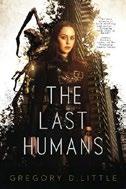
A grieving officer goes hunting for her city’s longheld secrets in Little’s dystopian SF thriller.
In the distant future, the eerie, ultra-policed city of Coldgarden is
under attack from all sides. The walls of the city, formerly known as Calgary, have been attacked for more than 90 years by revenants—“mutable, insectile” beings that also crawl in through Underguts, the tangle of tunnels that lie beneath the city. Real glass that can shatter is rare in Coldgarden, as even the slightest wound can trigger Mutagen Prime, a hypermutation that sends the body “spiraling off into biological madness,” growing excess bone and muscle at a gruesome, fatal rate. Iazmaena “Iaz” Delgassi, the newly elected Magistrate of the city’s Watchfire ward, is still celebrating her win when she finds her boyfriend, Damon, dead by apparent suicide in their apartment. Signs point to foul play engineered by Gene Sequencing, the all-powerful government body tasked with investigating Mutagen Prime. Iaz joins forces with her best friend, scientist Stefani Palmieri, as well as sketchy “data-jockey” Rieve Revolos and plucky, Underguts-savvy orphan Marri, to avenge Damon and uncover the truth. When Iaz is suddenly promoted to the mayoral position of acting archon, she’s uniquely positioned to pry into century-old secrets. Author Little spins a familiar SF conceit into an excellent hard-boiled detective novel, complete with a hard-drinking, morally gray former cop leading the pack. The characters are beloved archetypes that shine in this setting, where the seen and unseen terrors of Coldgarden are chillingly described: “The revenants boiled in, tearing through stubborn compglass like it was rotted cloth.... They rose like a surging tide, articulated gemstones of death.” This series debut reads like a sequel at times; readers are immediately plunged into the thick of ward-specific city politics, and events that precede the events of the book are excessively referenced one moment and forgotten the next. Genre-savvy readers will find the final plot twist predictable, but it delivers a clever heartbreak and clearly sets the scene for the trilogy’s remaining installments.
A future-set mystery in which gruesome description and twisty worldbuilding keep readers under siege.
Lyons, Alethea | Brigids Gate Press (282 pp.) | $16.99 paper
March 5, 2024 | 9781957537832

A team of demon hunters races against the clock to stop a supernatural threat in Lyons’ fantasy novel.
In contemporary York, England, supernatural beings live in hiding, and the Queen’s Guard brutally upholds the secret of their existence, claiming to citizens that no such beings survived the purge of the past. As a child, Harper Ashbury was adopted into the De Santos family—a family that just happens to have a long line of demon hunters in its tree. Harper works as an archivist for the Council of Faiths, and her sister, Grace, is a vet. When a mysterious entity begins a spate of killings, Harper and Grace team up to investigate and stop it. Unknown to most, Harper is a witch; she does not have full control of her abilities, however. In her search for information, Harper accidentally summons a deceptive spirit, whom she dubs “Heresy,” and engages the creature to teach her how to use her powers more successfully. Lyons’ setting is wonderful, a perfect evocation of historical creepiness that allows readers to imagine supernatural beings crawling through the streets of York. The author entrancingly describes the various supernatural goings-on of the city, particularly the underground auction, which is equal parts mystical and terrifying. (“When midnight tolls, it will begin. The buyers will soon be gathered. Here you will find great wonders, if you wish to bid.”) The addition of Heresy is welcome, as the spirit adds a healthy dose of wry comic relief when needed. The story has a few problems, the first being a potential romantic subplot that’s swiftly abandoned, making its inclusion
unnecessary. Secondly, Harper’s problem (being a witch who works for a religiousbased organization and is forced to hide her abilities) is referenced to an irritating degree but not really explored—seeing her really struggle to reconcile the seemingly disparate parts of herself would add more emotional heft to the tale. Despite these issues, Lyons presents a story with exceptional bones.
An engaging and magical tale with a few weak spots.
Kirkus Star
MacDonald, Lawrence | Changemakers
Books (228 pp.) | $15.95 paper
Oct. 27, 2023 | 9781803414843

MacDonald presents a pragmatic look at how and why older citizens should tackle the climate crisis.
This entry in the Resetting Our Future series focuses on the baby boomer generation’s connection to the issue of climate change. Many readers in that demographic have likely winced when young climate activists like Greta Thunberg have proclaimed in public speeches, “You don’t give a damn about us”; the author, himself a boomer, assembles here a wide range of actions (and self-evaluations) that concerned older people can take to make a difference in the existential crisis facing human society. “I know from my own experience that facing the reality of a looming global catastrophe can cause anxiety, grief, even depression,” MacDonald writes. “Working with others helps to overcome these feelings, bringing renewed hope, courage, and joy.” He describes familiar steps his cohort can take—things like eating less meat, doing less driving (and no flying), moving their money out of banks that prop up the fossil fuel industry, and switching to solar power. The author lists a great many climate
initiative organizations boomers can join (or follow for informed news) and touches on every aspect of climate activism, from its connection to major faith traditions to the logistics of start-up campaigns. Each chapter ends with an inset “Action Checklist.” MacDonald’s wide-ranging approach is presented in prose that’s both clear and unfailingly encouraging. He directly addresses the sense of overwhelmed defeat that many boomers feel in the face of the enormity of climate change and encourages them to confront the subject directly—up to and including getting arrested: “If millions of boomers and others who say they are prepared to engage in climate-related civil disobedience actually did so,” he writes, “would it make a difference? Yes!” This guide will send readers forth feeling empowered and optimistic.
An energetic and upbeat action plan to help boomers address climate change issues.
Matthews, John H. | Bluebullseye Press (199 pp.) | $13.99 paper
March 29, 2024 | 9781970071801

In Matthews’ middle-grade novel, a boy discovers on his 12th birthday that he can go back in time and alter the past.
One day, after Horace “Ace” Adler wishes for two extra minutes to finish his sixth-grade math final, he feels a sudden blast of freezing air and the classroom briefly becomes a deep-blue, starlit space. When normalcy resumes, the clock has rewound two minutes. The realization that he can time-travel leads Ace to embark on a series of quests. During his expeditions, he encounters a ghostly man wearing white who whisks him away to a giant floating clock with a wild-swinging pendulum that regulates time across the universe. It turns out that a crucial piece of the pendulum is missing; if it’s not found, the man says,
the world will end, and it’s up to Ace, with his time-hopping skills, to save it. Before discovering his power, Ace had problems in his own life: His mom died five years earlier, his dad works two jobs (often leaving Ace to fend for himself), and the house where they moved a few years ago feels nothing like home. Now, the future of the planet rests on his shoulders as well. Ace confides in his smart best friend, Alexis, and it’s a race against time as the duo starts decoding clues. They involve unusual items and events that will fuel kids’ imaginations, including a watch belonging to Ace’s father that’s been hidden away; a copy of Madeleine L’Engle’s A Wrinkle in Time (1962), which was an unexpected birthday gift from Ace’s late mother; bizarre connections between the man in white and historic earthquakes; and an enlightening encounter with Christiaan Huygens, the Dutch astronomer who invented the pendulum clock. While the friends’ findings sometimes seem overly convenient, such as a report on natural disasters that’s assigned on the last week of school, and the twists leading to the surprising conclusion may strike some readers as slightly dizzying, the appealing mix of fantasy and reality, related in zippy prose, makes for an entertaining read. An eventful and ultimately tender time-travel tale.
Miller, Daniel G. | Houndstooth Books (320 pp.) | $14.99 paper
Feb. 21, 2024 | 9781737646396
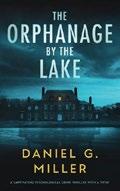
A private detective hired to find a young girl who vanished from an upscale children’s home soon discovers that the case is not at all as it appears in Miller’s mystery. Hazel Cho, a 30-year-old private detective who’s about to go under if she can’t quickly drum up some more business, seems to have her dreams answered when Madeline Hemsley offers
her $100,000 to find her goddaughter, 12-year-old Mia Thomas. The young girl seemingly vanished from St. Agnes, a private orphanage for children who have lost their parents or are experiencing other “family issues.” Mia disappeared three months ago, and Madeline refuses to let Hazel, who’s given a deadline of less than two weeks, talk to any of the previous P.I.s who have worked the case. Desperate for the money, Hazel agrees to take the job and quickly becomes enmeshed in the curious world of St. Agnes as she interviews its eclectic faculty and staff, including the friendly administrator, Sonia Barreto, the ancient headmaster, Thomas Mackenzie, and the nervous choir teacher, Gregory Goolsbee. While attempting to gather clues at the orphanage’s fundraiser gala, Hazel is unexpectedly swept off her feet by Andrew DuPont, the son of a big-name donor. But the more people Hazel talks to, the less certain she becomes about anything that’s going on. Apparently, Mia was not the first girl to vanish at St. Agnes, the local police force seems suspiciously unhelpful, and Hazel becomes convinced that most of the people she talks to are flat-out lying to her. A shocking revelation midway through the book primes readers for even more twists and turns before Hazel finally learns the horrifying truth.
Hazel’s narration, which often directly addresses the reader, remains breezy and casual despite the increasingly grim subject matter that arises as the plot unfolds. Her humor grants some much-needed levity to the proceedings, such as her description of her fellow Korean American roommate: “He reminds me of an Asian Stay Puft Marshmallow Man, except without the sailor hat.” She also has moments of surprising insight, as when a client accuses her of doctoring photos that prove his wife’s infidelity: “Every day I feel like I’m one wrong move away from being throttled by an impotent man and his insecurity.” Hazel’s likability goes a long way toward smoothing over some of the novel’s bumps, which mainly consist of continuity errors that could have been caught with a tighter edit (a character says she was 17 when an event happened, then mentions that she was 16 when the event happened just one page later, for example). Miller does an
effective job of throwing enough red herrings into the mix to keep readers on their toes, although devoted thriller readers will likely figure out at least some of the mysteries before the end. The story wraps up with a somewhat hokey “the villain conveniently explains their whole dastardly plan” scene—but that misstep is countered by yet another surprising revelation. Overall, Miller has crafted a suspenseful tale with quick pacing, naturalistic dialogue, and an endearing narrative voice that will likely leave fans of the genre more than satisfied.
A plucky, likable protagonist buoys this agreeably twisty thriller with a neatly packaged ending.
Montgomery, Mark James Stonehouse Publishing (258 pp.)
$26.99 | $12.99 paper | April 15, 2019 9780578497723 | 9781393708414 paper

Bizarre circumstances help three broken loners connect to one another in Montgomery’s touching debut novel.
Set against the sprawling backdrop of New Mexico, this novel posits an unseen current running through the world that can bring people together. Autistic boy Jed Hark can hear voices in electricity. After Jed’s parents abandon their unusual son, he ends up at the SafeHaven treatment center in the charge of social worker John Allard. Allard has a romantic relationship with Simone Smith, a distant, one-time rising star sculptor who becomes bogged down while attempting to complete her latest massive landscape installation. Ex-con Neal Carver is riding cross-country on a motorcycle that once belonged to his deadbeat dad (“Handed down, father-toson, Neal had resurrected it, and now it was part of him”). He makes the mistake of staying in a card game with Sixto and Reba, a psychotic couple; Neal wins the final hand, but they later steal his bike. He retaliates by taking their stash of
$66,000, and the chase is on. While trying to escape, Neal is struck by lightning. Neal steals a van in which Jed, who’s run away from SafeHaven, stows away, and they end up taking shelter at Simone’s ranch. The trio bond as they flee their evil pursuers. Montgomery’s tale illustrates the maxim that there’s somebody for everybody. These three damaged, self-involved people, all abandoned by their parents, learn how to change and care about others when forced together by trouble—self-preservation should have dictated that they run in opposite directions. But Jed wants to find someone who will accept him, as odd as he is; Simone and Neal require incentives to lower their walls, and they find them in Jed and each other. The author convincingly depicts this makeshift family forming organically amid turmoil. Sixto and Reba are over-the-top villains, but they definitely pose a threat. Montgomery has successfully created a group of outsiders whom readers will want to see survive and thrive. This winning novel captures the moments when emotional lightning strikes for its three protagonists.
Northcutt, Randall | BookBaby (372 pp.) $19.95 paper | Feb. 7, 2024 | 9798350933062
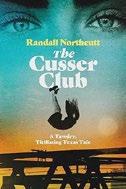
This gritty coming-of-age tale novel revolves around three teenage friends and a dangerous adventure that changes them all.
Set in the spring of 1969, Northcutt’s story primarily focuses on 15-year-old Teddy Nutscalder, who lives in Dix Knob, “an East Texas cesspool that God forgot.” Living with an abusive, alcoholic father and the memory of a wayward mother who simply up and left seven years earlier when his twin sister died, Nutscalder doesn’t exactly lead an idyllic existence— especially considering that town bully Galton Grails has it out for him. His best
friends, Mickey O’Dell, a “pint-sized Hercules,” and Tommy Crum, whose penis is the size of a “Czechoslovakian summer sausage,” share Nutscalder’s disdain for the town and dream of getting out someday. But when they talk a pretty “high society” girl out of jumping to her death off of a bridge, they become entangled in her sad story, which includes a sexually abusive stepfather, a mentally unstable mother, and a dangerous conspiracy where more than a few people may have already been murdered. While the cast is brilliantly portrayed and the storyline has some truly impressive plot twists, it’s Northcutt’s clear, confident voice and his ability to immerse the reader in 1969 culture that makes this novel so readable. The prose and imagery, while not always politically correct, fit the story perfectly: “She had a figure like Marilyn Monroe with an hourglass waist and tits like a couple of 1957 Cadillac bumper bullets.” But ultimately, it’s the thematic exploration into the power of friendship and the significance of (trying to) do the right thing that makes this so unputdownable. Readers who enjoyed Stephen King’s novella The Body will love this novel. Radiates an immersive, dark, and nostalgic vibe.
Odusanya, Angela | Illus. by Dileema Medonza Sunshine and Rain | Nov. 18, 2023

When a girl forgets her art box at home, her grandmother helps her see the wondrous potential in everyday objects in Odusanya’s picture book. Amelia, who has tan skin and brown hair, is a young girl with a “secret” art technique: She likes to take photos of
everyday objects with her camera, then use the photos as inspiration for paintings. One day, Amelia heads to her grandmother’s farmhouse and sees a variety of beautiful views along the way. But when she arrives, Amelia’s crestfallen to realize that she forgot her art box at home.
Amelia’s grandmother then shares some words of wisdom: “Art is INSIDE of you, and supplies are all AROUND you. You just have to look for them.” These words inspire Amelia to look at her surroundings with fresh eyes. Bold colors and lines make Medonza’s delightful illustrations practically pop off the page. Odusanya uses simple language to impart ideas and lessons, making this an ideal book for young readers. Kids and adults alike can take inspiration from a “Grown-Up’s Guide” at the end of the book that offers helpful ideas to get kids started on making their own artwork from everyday objects such as rocks, cotton swabs, and hardware. The story, pictures, and suggested activities transform this simple book into an experience the whole family can enjoy. A colorful, charming tale that encourages young artists to find beauty everywhere they look.
O’Leary, Terence | Swan Creek Press (222 pp.) | $12.99 paper
Jan. 4, 2024 | 9781733534161

In O’Leary’s brief novel set in rural Michigan, a widower contemplates his life as he hopes for rescue during a natural disaster.
The story opens with Seamus (who recently lost his beloved wife, Marie), huddling in the bathtub of his secluded cabin, seeking safety from a violent
Radiates an immersive, dark, and nostalgic vibe.
In his latest book, the veteran historian offers queer profiles in courage.
BY SASHA CARNEYMARTIN DUBERMAN has seen the long arc of history. The 93-year-old historian, writer, and activist protested the Vietnam War in the ’60s, watched Sylvia Rivera speak in the ’70s, and has dedicated his long academic career to histories of LGBTQ+ life and the American left. Now professor of history emeritus at Lehman College in the Bronx, Duberman has written more than 25 books and several award-winning plays.
His latest offering, The Line of Dissent: Gay Outsiders and the Shaping of History, profiles a series of queer trailblazers from sexologist Alfred Kinsey to radical feminist Andrea Dworkin. While his vibrant writing looks to the past, Duberman insists that the work of dissent is never done. Throughout the book, he provides searing critiques of both the straight left and the mainstream, “insistently parochial” national gay movement of today.
Kirkus recently spoke with Duberman over Zoom from his New York home (“Leave New York at your peril!” he warned). This conversation has been edited for length and clarity.
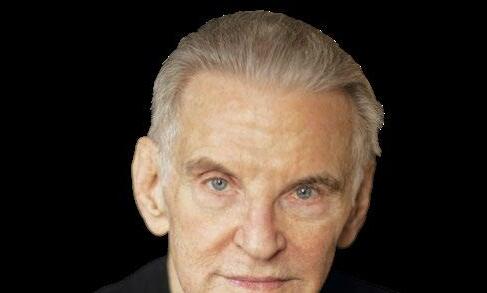
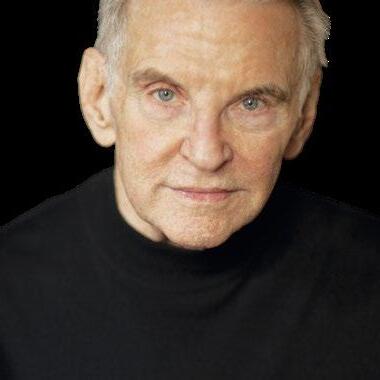
Many of the profiles in the book were initially published in the Gay & Lesbian Review, starting in 1997. How did you start writing for the G&LR ?
It was mostly the result of having material left over from some of the books I’d written. I wanted to help [the G&LR] because I felt there was a real need for such an outlet—writing that was meant for an educated but not academic audience. I’ve done scholarship all my life, but I like nothing better than to take a
breather from it. As a result, I’ve written a couple of novels and a number of plays. I see myself as someone who’s outside the mainstream of academia and therefore like to address some of those readers who simply don’t read scholarly material.
Right—the book isn’t academic, but it also doesn’t compromise on nuance. How do you write about these icons of queer history without being hagiographic or simplistic?
I think the guide should be very simple: Tell the truth. Tell the truth to the degree that we can ever tell the truth, abstracted from the corrupted materials that are left behind after a person’s death. What’s left is often the merest shreds of a life. If you’re doing a biography, you start out by trying to tell the truth to the greatest extent you can, but it should become apparent that there’s no way you’re going to be able to. It’s the combination of limited leftover material from the past and the [individual perspective] of the historian. You put those two together, and you get several miles of difference between what you turn out as a book and what “actually happened.”
Most of the chapters discuss figures whose self-identification was
somewhat contradictory, according to the categories we use today. How did you approach this question of terminology in historical context?
The individuals in the book weren’t very selfconscious about terminology or vocabulary. It was very much a different time period in terms of academic writing and the political movements they were involved with. Everything changes through time. No matter how strenuous [someone’s] effort at historical objectivity, as I’ve already said, it’s not really attainable. It’s approachable, if the historian is scrupulous. But it isn’t achievable.
Could you tell readers more about a favorite figure in the book?
[Activist and writer] Barbara Deming [1917-1984] was a
real hero of mine, probably more so than any of the other people. She’s one of the few people in the book I never met, let alone knew well. But she comes across to me (third-hand, anyway) as the essence of what authenticity is, even down to how she presented herself as a person—the sort of clothing she wore, the kind of makeup she did not wear. Barbara was a lifelong activist, and on the political spectrum she very much moved with the tide of events.
These are the kinds of people who are the most attractive to me. They’re flexible enough not to be wedded to their old selves— and “old” can mean as recently as last month. They pick up the vibes of the culture as it emerges, and they don’t have to wait 20 years in order to become aware of that, and then subsequently to write about it.
It’s certainly true that a lot of your subjects weren’t just engaged in queer issues. They were coalition builders who fought for racial justice, or anti- imperialism, or labor rights. Could you say more about this coalition-building work and how it shows up in the book?
I don’t quite know what bothers people so much about enjoying differences rather than piling on the security of similarity. I’m attracted to what I don’t know. I don’t want close friends who share my exact values or my perspectives— though, inescapably, in order to exchange feelings and ideas, that will be true of our closest friends in most cases. But I’d like to know a wider range of people.
And it isn’t easy. It’s never been easy. One of my problems is the inability of the majority of straight intellectuals to first of all want to understand—and then, secondly, make the effort to understand—the differences between the gay subculture and the middleclass patterns of the majority of people in this country. You really can’t find many straight people, for example—intellectuals or otherwise—who are
familiar with [gay] literature, some of it very important not only for gay people but for everybody human.
I can remember an exchange of letters between Barbara Deming and David McReynolds. David had devoted his whole life to the War Resisters League, and when the gay rights movement came along, even though David was gay, he was… scornful is a little strong, but indifferent is probably closer to the mark.
I see myself as someone who’s outside the mainstream of academia.
To him, it wasn’t important, it didn’t involve a considerable number of people, and it certainly had nothing to say to those who were not gay. And Barbara simply could not understand this.
Where do you see queer radicals at work today?
What work do you think is being done to carry forward the “line of dissent”?
Oh, I think the trans movement, without question. It’s very frightening to most people, but it has a lot to tell us about things that we thought were biologically rooted and unchangeable—that is, the differences between maleness and femaleness.
The culture was dominated for many, many decades by definitions of what a healthy male or a healthy female should pursue as a life pattern. Now people are paying a lot of attention to the trans movement, and to drag, and so forth, much more attention than they ever paid them in the early days. The early [gay and lesbian organizations] Mattachine Society and Daughters of Bilitis were outwardly quite conformist. When they demonstrated, the men wore suits and jackets. The women wore dresses.
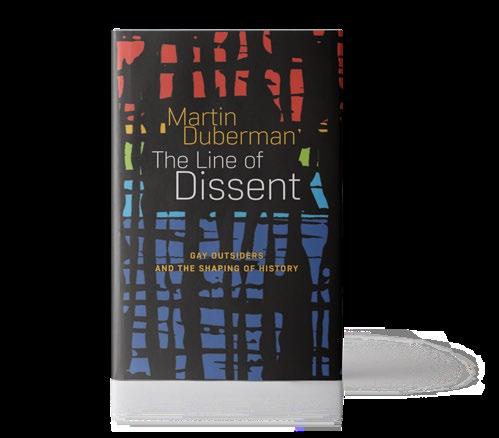
When gay people look back at that period, they scoff at the importance of that early gay movement, but in fact, it took a hell of a lot of courage. They put themselves in real danger in order to struggle for greater civil rights for themselves: to go public, and then dare beyond that. To parade and demand.
Sasha Carney is an Indie editorial assistant.
Talking with writers about their work and the independent publishing experience. All conversations have been edited for length and clarity.



Author of Sukey’s Unfinished Mission
Please tell us a little about yourself and Sukey’s Unfinished Mission. I’m an active, curious, and playful retired elementary teacher of 39 years. As a lover of nature, animals, family, and children, I seek to write stories that contain these elements in an entertaining way. I diverge from the norms of wife, parent, and grandma by my enthusiasm to invent new places, characters, and adventures every day. Stories break barriers of time, age, and place. I seek to transport the reader into new encounters that refresh and satisfy. Sukey’s Unfinished Mission is such an endeavor, taking the reader to other worlds where Sukey, the main character, is driven to reunite a broken family.
How did you choose the genre of your book?
Actually, fantasy chose me. Trudging along the path of reality, I
tripped over a “What if?” that sent me tumbling into a world of endless possibilities: animals spoke, the laws of nature and the universe could be conquered! Such fun, to write and read. I want readers to experience thrills and joy that eventually connect to resolutions of common problems.
Was your storyline something that you envisioned from the beginning, or did you build/change it as you wrote your novel?
For the first book, Grandma’s Sock Drawer, I started with a ridiculous inheritance, a sock drawer, from a grandmother that Sukey, the main character, never knew. I had a hazy vision of the destination, but it crystallized when the characters arrived.
With Sukey’s Unfinished Mission, the story unfolded when Sukey and her two new helpers faced unexpected twists and turns.
How has critical and/or reader response influenced the way you think about your work?
A story without critiques is like wind-whipped hair without a comb. After I’ve done my best writing, honest feedback forces reexamination. Feedback spotlights and stimulates questions that trigger better revisions and tighter writing. I’m thankful for honest feedback; the results are a better story and a better writer.
Readers’ response to my first book, Grandma’s Sock Drawer, was the motivation for the sequel, Sukey’s Unfinished Mission. Readers wanted to know what happened next with Sukey. Their
delight with the first book encouraged me to embark on the second.
What are you working on now?
Currently, the revision of my children’s book for ages 8 to 11 years is almost complete. Evert, a somewhat unlikable shrew, seeks to live an independent life following his mother’s advice to “Mind your own business.” He finds it increasingly difficult to do this when his neighbors disturb his tranquility with unexpected problems.
Also, readers’ questions about Sukey’s grandma may prompt a possible prequel to the adventures of Sukey.



Author of the Silly Cat books
Please tell us a little about yourself and the Silly Cat books. In the beginning, before the Silly Cat books, my cat Spicy became friends
with a young girl named Lyla. As friends do, Spicy began sending Lyla emails, telling her stories about her everyday life. Lyla got a kick out of the emails, and her mother encouraged me to write books. My first four books were letters written by Spicy to a fictional human friend, explaining, complaining, and rhapsodizing about life with three other cats, plus her human mother and daddy. My current series also centers around a cat, but this time the cat is fictional, although he looks a lot like my boy cat, Junior. In addition to Silly, the star of the book, you’ll meet a dog, a frog, a few birds, a bat, a bug, and even a bear that might or might not be real.
What was your editing process like?
I joined a writers group that meets at my local library branch. By reading portions of our writings to each other, we offered not only encouragement but helpful suggestions. The group allowed me to understand how readers would hear and process my writing, and this prompted me to edit my work until I felt I had something easily readable.
Was your storyline something that you envisioned from the beginning, or did you build/change it as you were writing?
I started the Silly Cat books because I wanted to write a silly poem—the kind I loved as a child. Every time I began to write, my brain said: The silly cat climbed up a tree. And I thought, Why did the cat climb the tree? Answer: To look across the deep blue sea. Okay, I felt that qualified as silly, being landlocked in Tennessee. As the poem developed, the last word in each line rhymed with tree and sea. Later, I challenged myself to write other poems about Silly, also giving each line a matching rhyme. Soon I had enough poems for a book. Then more poems for a second book, and finally, a trilogy. My challenge with these poems was in the limitations of having enough words that rhyme with each other, but I found within each group of rhymes a hidden story, waiting to be brought forth and told.
What are you working on now?
My next book is a stand-alone, still in verse, but deviating from the same rhyme on every line. This book, based on feline lore, relates the history between cats and humans. Who tamed whom? So many untruths have been told (mostly by rats) that Spicy is putting pen to paper. But here’s what’s indisputable: that cats were walking on this earth in time to witness human birth. Spicy spins the truth as told to her by a wise old cat…come join us for a bit of poetry and fun.


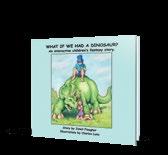
Author of What If We Had a Dinosaur?
Please tell us a little about yourself and What If We Had a Dinosaur? I have written many children’s books, English and Spanish. What If We Had a Dinosaur? An Interactive Children’s Fantasy Story is the first children’s book I have published. The book is beautifully illustrated by Colorado artist Charles Luna. The book is part of a series, and the second book in the series will be published this year. After a “dinosaur naming” event to give our triceratops a name, the rest of the series will follow.
In 2021, I published My Father’s Voice, a biography posthumously chronicling my father’s life through his own stories about growing up during
the Depression, WWII, and becoming a celebrated educator/administrator. I have also written a book of poetry, a personal memoir, The Acreage, and a cookbook, Marguerite’s Kitchen
I have traveled extensively in the United States, Mexico, and Europe and lived in Beijing, China. I am currently working on a memoir about what it’s really like to live in China.
How did you choose the genre of your book?
Literacy is a powerful tool. I used to sit on my father’s lap, and he read the Sunday funnies to me. I was able to read before I started school. I began reading to my children when they were very young. They both loved dinosaurs. They knew all their names, and my son could draw them with surprising accuracy at an early age. I wanted to capture the fun we had with dinosaurs in a book and to provide a vehicle for other children to enjoy imagining what it would be like to have an unusual pet.
What was your editing process like?
Like many artists, I write, read, read aloud, and rewrite until the words have the right melody in my head and my mouth.
How did you develop your characters? People we know are the best models for characters. Because they are within our orbit, we can examine their physical traits and behaviors under a microscope. In What If We Had a Dinosaur?, the characters are modeled after my children.
How did you create/acquire the cover art for your book?
Charles Luna is a well-known Colorado artist. Early on, he created many fantasy people and animals. I thought his gift for creating the imaginary would be perfect for a children’s fantasy story.
What are you working on now?
I am currently working on the second book of the Dinosaur series, called 10 Rules for Keeping a Dinosaur (and Other Pets). The book blends the fantasy fun of taking care of a dinosaur with helping children understand the responsibilities of pet care.
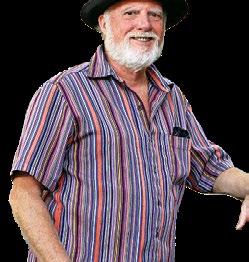

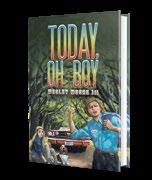
Author of Today, Oh Boy
Please tell us a little about yourself and Today, Oh Boy. I was writing and publishing fiction in the ’80s, but when my first son was born, I gave up professional writing to teach high school English. I hated high school, so having spent most of my life in school is pretty ironic. As it turns out, though, I loved teaching. Deep diving into familiar classics and discovering fresh masterpieces with bright young minds for four decades provided me with an incredibly rich and colorful library of stories and characters.
Joyce’s Ulysses inspired the framework for Today, Oh Boy. I had a vision for a comic novel set in one community over the span of one day, featuring a host of divergent characters who embody the essence of that community. Today, Oh Boy takes place at my real-life alma mater, Summerville High in South Carolina,
on October 12, 1970. My wife describes Today, Oh Boy as Ulysses meets Ferris Bueller’s Day Off
How did you develop the characters in your book?
My beta readers, all professional critics, consistently noted Today, Oh Boy’s rich characterization. When I create important characters, I imagine them beyond the confines of the novel: as children, what their families were like. I pictured Mrs. Laban—biology teacher and rigid disciplinarian—as a little girl with bangs, wearing a calico dress, sitting in a Baptist church pew. Even ultraviolent Bobby Bosheen, the antagonist, becomes more sympathetic when he mentally flashes back to beatings he suffered at the hands of his abusive father.
How did you create/acquire the cover art?
I’m fortunate to have a friend in noted painter David Boatwright, who read the manuscript and created an original work featuring three of the main characters: Rusty Boykin, Sandy Welch, and Hambone, a runaway basset hound rescued from the side of the road. The cover captures the retro Hardy Boys–gone–hippie vibe that I wanted for a novel that is nostalgic, comic, action-packed, yet literary.
How have you built your audience?
Wide blog readership, newspaper interviews, readings; a TV interview; Buxton Books’ continued publicity. However, I most enjoy spreading the news by word of mouth, handing out cards to visitors at my favorite hangouts.
What are you working on now?
I’m putting the finishing touches on Long Ago Last Summer, a Southern gothic gumbo that is part Flannery O’Connor, part Tennessee Williams, with a sprinkling of John Kennedy Toole. After all, I’m old enough to have known my great grandfather, the son of a Confederate soldier, and I’m a native of a state “too small to be a country, but too big to be an insane asylum.”



The author’s widow, Pamela Blake, discusses his work.
Please tell us a little about David and his novel, Tomorrowville David T. Isaak (1954-2021) was an American author of both fiction and nonfiction. David held a BA in physics and MA and PhD degrees in resource systems. His professional work spanned the globe, taking him to over
40 countries. He co-authored three technical nonfiction books on oil and international politics and wrote numerous papers and monographs. David passed away in April 2021, leaving behind five novels, which are as diverse as his life; they are being published posthumously by me.
Can you tell us something about David’s editing process?
David wrote every day. He had taken time off from his consulting work to write. He wrote through without much editing. Each day, though, he would begin by editing the previous day’s work, and restructure the narrative as he felt necessary to propel himself into that day’s creation. After feedback from early readers, he reevaluated the entire book or major sections and made his final edits. For publication, I hired a professional editor, Shavonne Clarke, to ensure that the quality of the book production lives up to the quality of the writing.
Were David’s storylines something that he envisioned from the beginning, or did he build/change them as he was writing?
David had a broad outline for Tomorrowville before he started writing. He knew he wanted to project certain societal topics into the—inevitably dystopian—future. As he wrote, he observed that the main character, Toby, began to take over and change the story. It was our joke that Toby really was communicating from the future and wanted his story told. Now it is.
How did David create/acquire the cover art?
David’s early draft of the cover was ironic, showing a utopian view of the future, à la the 1950s. I was concerned the irony would not be evident and that such an optimistic perspective might give prospective readers a misleading idea of the more dystopian sci-fi nature of the story. I hired a professional cover designer, Jeff Brown, to develop a cover that reflects the darker content as well as the futuristic genre.
What other unpublished works did David leave behind?
Besides Tomorrowville, David left four other novels: A Map of the Edge (coming-of-age in the 1960s), Things Unseen (murder mystery in the desert), Earthly Vessels (magical realism), and Smite the Waters (a twisty political thriller). I am honored to bring his works into the world.


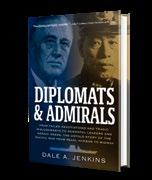
Author of Diplomats & Admirals
Tell us about yourself and Diplomats & Admirals
I was a Navy veteran and student of naval battles. I realized that the Battle of Midway, June 4, 1942, the first victory in WWII by any Allied force, had been largely overlooked by the general American public for its significance to our entire war effort. I show in my book, Diplomats & Admirals, that the war with Japan could have been prevented. It never had to happen. I did not expect to be an author, but now that I have become one I find it an exhilarating experience.
What was your editing process like? I did not want to spend a year finding an agent, who would then try to find a publisher, so I decided to self-publish. I never had an editor, and what appears in Diplomats & Admirals is entirely my own work except for very minor inputs from a proofreader. It was all done on a single Word document with a word count of
107,465 words. I have had 190 reviews on Amazon to date; 63% have been five-star and 26% are four-star.
How did you develop the subject?
I proceeded in reverse chronological order from Midway back to Pearl Harbor, December 7, 1941, and the failed diplomacy in the closing months of 1941 before Pearl Harbor. This occurred because I started with a subject, Battle of Midway, and questions kept coming up about the causes, the preceding events, that led into my original subject.
How did you research the book?
Initially, I read other books on the same subject. I looked at footnotes in those books, and this led to an expanding universe of information, often conflicting. It was apparent that original documents had to be accessed, and this led to visits to several libraries, the National Archives, and the online documents available at the Office of the U.S. Historian. I read the official after-action report of the Battle of Midway dated June 15, 1942, and ran my finger over the actual ink signature of Admiral Nimitz. There are thrills in this work.
Do you have any advice for others who are starting the process of independent publishing?
The market is unforgiving. You may think you have a brilliant piece of literature that the world will greet with rousing cheers and your book will be flying off the bookstore shelves. The actuality is that the world must be convinced. Traditional publicity firms that use press releases are obsolete. You need social media exposure.
How has reader response influenced how you think about your work?
As a writer with a first book, I am gratified by my reader response. I read the reviews on Amazon, many of them lengthy and with serious depth, and they give me confidence that I can produce a work of significance and worth.
storm. When it grows into a deadly tornado, his small dwelling is crushed by the surrounding trees, trapping Seamus inside. Badly injured, he thinks of his daughter Faith, and especially his young grandchildren, Timmy and Casey. What follows is a race against time as Faith’s husband, Jeff, along with others from the tightknit community, work to clear the devastation and rescue Seamus. With only memories to keep him company, the widower wonders if help will come in time, or if death will reunite him with Marie. As the narrative unfolds in alternating chapters, readers will be drawn into the protagonist’s heart-wrenching emotional and physical struggles, and they’ll admire the relentless determination of those working to save him.
O’Leary’s accessible prose and succinct, compelling chapters generate an irresistible sense of momentum, and amid the turmoil, the author lightly weaves a subtle thread of spirituality in the narrative to offer comfort and reflection: “Every stargazing night was different. It might just be the alignment of the planets or an abundance of falling stars....But the one constant was always there. In the immensity of the universe, Marie and I had found each other.” Readers of O’Leary’s previous works, such as Emmet and the Boy: A Story of Endless Love and Hope (2019), may recognize familiar themes, but they won’t find them to be a distraction.
A relatable tale about the bonds of family, the power of community, and hope in the face of adversity.
Peters, Charlie | Henry Gray Publishing (226 pp.) | $19.95 paper
March 21, 2023 | 9798986680538
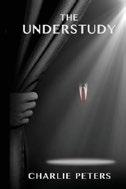
Deeply thoughtful, strikingly original, and powerfully dramatic.
who doesn’t exist in Peters’ thriller.
Hoping for a big payday, the disgruntled personal assistant to a powerful hedge fund CEO organizes an ersatz kidnapping of an employee
Ronnie Hewitt has plenty of reasons for her angry grudge against capitalism: Her father, Robert, lost his job and pension during the tumultuous downturn of the 1990s and sunk into a depressive abyss. He died of heart failure when Ronnie was 15, and the insurance company denied her mother, Carlotta, the payout she deserved, claiming Robert had killed himself. Now, Carlotta languishes in a second-rate home for the elderly because Ronnie can’t afford a better one. She expresses her angry contempt for the system she despises, delicately but powerfully captured by the author, through art; she writes for an improvisational theater, Jubilee, that revels in the comic lampooning of the delusional grandeur of the privileged. Paradoxically, she also works in the beating heart of the very economy she loathes—Ronnie is the personal assistant to Barry Kestrel, the CEO of Boundary, a major hedge fund in New York City he founded 27 years ago. Ronnie has a plan to secure a financial windfall and take revenge on the robber barons of the world. She will stage a fake kidnapping of a Boundary employee, Martin Newman, who doesn’t even exist: She concocted him out of thin air and, with the help of her tech-savvy boyfriend, Alex, inserted his employee file into the company’s records. But even the most ingenious plan cannot account for every eventuality, and the conspiratorial couple begin to encounter a slew of unanticipated problems—not the least of which is that someone finds out about their grift, artfully assumes the identity of the nonexistent Martin Newman, and shows up looking for his cut.
The plot is uncommonly complicated, but it is a testament to the strength and clarity of Peters’ writing that the reader is never lost—this is a deeply tangled but not gratuitously convoluted tale. And it is strangely, even astonishingly, plausible, or
at least rendered so in the able hands of the author. Every character is so realistically drawn, so full of nuanced life, that the unpredictable swerves that occur later in the novel (some of which could even be seen as fantastical) read as entirely sound. At the heart of the book is Ronnie, a fascinatingly complex woman who despises the financial predators who feasted upon her family’s travails. In response to the charge from “Martin Newman” that she hates her own country, she responds: “We don’t hate this country… It’s scumbags like Kestrel we hate. In the crash when his company bottomed out, everybody lost. Except him of course. People like him are too big to fail. Now he’s gonna make a fortune selling his company while most people are out there still scraping by. We don’t hate America. We’re saving it.” This is a bewitching novel, bursting with insight, depth, and astonishing unpredictability. A rare treat—deeply thoughtful, strikingly original, and powerfully dramatic.
Quaver, P. D. | Self (486 pp.) | $3.98 paper
June 24, 2021 | 9798526346214
Series: The Ordeals of Elly Robin, 5
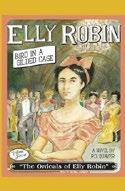
Quaver’s fifth volume in his The Ordeals of Elly Robin series brings his irrepressible protagonist to Chicago just before America’s entry into World War I.
It’s 1915, and teen prodigy Elly Robin, 15, has driven her Stanley Steamer motorcar from New Orleans to Chicago to study with piano virtuoso Maestro Vitorio Bellini. During a concert engagement in New Orleans, Bellini
discovered Elly while she was the piano player in a bordello he was visiting. Impressed by the young girl’s exceptional skill on the keyboard, and seriously inebriated, he offered to be her mentor should she ever come to Chicago. Bellini’s sister, with whom he lives, arranges for Lillian LaSalle, wife of wealthy clothing manufacturer Franklin LaSalle, to be Elly’s patron. Lillian is to be responsible for instructing the socially awkward Elly in the social graces, necessary if she is to become a world-famous pianist, while Bellini schools her in the musical subtleties of the great classical composers. Elly—orphaned at 6 during the San Francisco earthquake and left to her own devices after fleeing an abusive children’s asylum—enters the LaSalle mansion and finds herself surrounded by unimagined luxury. The LaSalle children, especially Wilhelmina (“Willy”), treat her with hostility. But, as Elly learns, beneath the glittering exterior, the LaSalle family harbors dark secrets, mysteries that our young hero, who always keeps a sheathed stiletto hidden in her bodice, plans to unearth. Elly has her own secrets, a past she must keep hidden if she is to succeed within society. When Lillian hires tutor Carrie Gunther to teach Elly the foreign languages she’ll need for world tours, she unwittingly brings a rebel into the LaSalle household, someone who will expose Elly to the burgeoning labor movement plus a group of Anarchists, an association that puts Elly’s position, and possibly even her life, in danger.
Although followers of the series will know Elly’s backstory, those new to the saga must wait patiently for the details to be revealed gradually, especially when significant characters from her past reappear in the current volume. Quaver, a retired professional pianist, adeptly portrays the power of music to transport both artist and audience. Readers unfamiliar with the classical music references will still feel the intensity of Elly’s performances, although Quaver compromises the impact with too much repetition. As the author cautions in his opening notes, dialogue reflects the linguistics of the period, including offensive racial and ethnic slurs. These choices contribute to a realistic rendering of Chicago’s economic, social, and ethnic
diversity and tensions in the early 20th century. The novel seamlessly blends historical figures and fictional characters. For example, Elly’s interactions with an aging and alcoholic Jack London and a fiery Emma Goldman add spice to the narrative. Her romantic liaison with Edwin Friend, aviation enthusiast and one of society’s most eligible bachelors, supplies poignancy and a bit of humor in a tale that culminates with a breathless, page-turning chase through the streets of Chicago, leading Elly straight into the next installment of this continuing saga. Quaver’s black-and-white drawings accompany the text.
Packed with history, intrigue, and social controversy, along with well-crafted action scenes.
Rosenberg, Anita | Heliotrope Books (222 pp.) $20.00 paper | Feb. 24, 2024 | 9781956474398
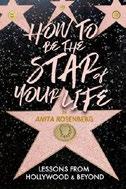
Movie-industry luminaries meditate on making it in a cutthroat business in Rosenberg’s collection of enlightening interviews.
The author, now a spiritual consultant and coach, moved to Los Angeles after attending New York University Film School and working in movies for years, eventually directing the cult classic Assault of the Killer Bimbos. Here, she interviews 24 showbiz friends and colleagues, gathering their insights on succeeding in a high-pressure industry that demands initiative, flexibility, creative drive, and an ability to endure crushing rejection. Included in the lineup is Brad Krevoy, who exhorts readers to stand by their great ideas (he persevered in developing Dumb and Dumber despite everyone telling him that it was dumb).
Director Ernest R. Dickerson tells readers to listen to their guts, saying that “when you find someone who is electric, you take a chance on them” (the high-voltage someone in question being
a then- unknown Tupac Shakur). Actress Julie Brown reflects on the importance of rolling with the punches, noting that, when she lost the lead in Earth Girls Are Easy to Geena Davis, she got a supporting part that suited her much better. And Oscar-nominated Star Wars: The Force Awakens editor Maryann Brandon enjoins readers to shape their lives like they are movies (“In order not to be left on the cutting room floor of life I think you have to be relevant. You have to be tuned in to the story of your life and the story of what is happening around you”). Armed with her own pithy aphorisms (“No one starts at the top…and there’s a lot you have to prove when you are at the bottom”), Rosenberg distills these conversations into savvy, snappy exchanges, as in writer John Auerbach’s riff on the language of pitch meetings: “When they say, ‘That’s a well-told story,’ you know you’re not going to get hired. What they’re saying is, ‘Yeah, you’ve told the story well but I have no interest in buying it.’” The result is a witty, entertaining sheaf of reminiscences, full of colorful anecdotes and acerbic wisdom. A captivating look at the struggle to survive—and prevail—in Tinseltown.
Sabath, Ann Marie | Soncata Press (244 pp.) $29.95 | April 1, 2024 | 979989857418
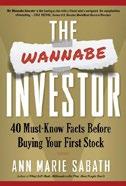
Sabath offers a personal finance guide for those considering investments for the first time. The author, a small-business owner and successful personal investor, presents “an easy-to-understand guide to the basics of investing for you ,” featuring 40 facts that one must know before diving in, explained in layperson’s terms. These include such basics as “Financial literacy is crucial for achieving economic stability and building wealth,” “Stock is an ownership stake
in a company,” and “You’re never too old to start investing in the stock market,” among many others. Each short, easily digestible chapter starts with a relevant quote from an investment expert, businessperson, or other famous figure, and goes about explaining the fact at hand by providing context and clarifying its importance in the overall investment process. Each chapter closes with a pithy quote called an “Allanism”— advice from her own very successful “investing guru,” identified only as Allan—which reinforces the central idea in colloquial, common-sense terms: “Buy only what you understand”; “Rome wasn’t built in a day. Neither will be your success in the market.” She also helpfully and authoritatively underlines certain points, especially with regard to time (or, as Sabath puts it in “Must-Know Fact 37,” “If I’ve given you one takeaway from this book, I hope it is this: Invest for the long term!”). For neophyte or casual investors, Sabath’s book could well become a primer for how to get started while minimizing risk; the information is presented in a clear, sensible order, and the prose is personable and friendly, often illuminating certain principles with accounts from her own personal experience, whether it’s good or bad. The author also includes copious references and suggested readings for those interested in pursuing particular ideas further.
A cogent, warmly written guide to beginning investing.
Sheffield, Rick | Severe Clear Publishing (171 pp.) | $12.95 paper
Feb. 6, 2024 | 9798218325282

An excellent balance between humor and pulse-quickening action.
DISHWASHER SAFE
A TV weatherman dies mysteriously while cheating on his wife in Sheffield’s comedic whodunit.
Dick Lance is a successful TV weatherman and
chief meteorologist (among other titles) for his local station when his career is cut short by an extramarital affair accidentally televised to thousands of viewers. His already strained marriage to his wife, Kristen Daniels, is officially doomed by this affair. Kristen has her own career as a journalist but was also unexpectedly laid off. Dick is happy to bring her on board writing for his advertising firm, churning out copy for as-seenon-TV commercial products. As she learns the business, she becomes more suspicious of Dick and where he’s spending his free time. Dick’s cheating is fairly open, but he appears to be keeping many secrets. He tells Kristen that they must drive to Florida for the opportunity of a lifetime. On the way, the car breaks down and they have to walk alongside the highway to find gas. Both are soon involved in a horrible accident that ends with Dick being hit by a car, but the cops can’t find his body. Kristen becomes a suspect, while a rival businessman’s goons are after the miracle kitchen appliance that could make some lucky person quite rich. Sheffield’s debut mystery is full of comedic turns, unpredictable twists, and a quirky cast. The friends Kristen makes, the police investigating the case, and the odd people involved in the TV product business all mingle to create an unforgettable story. Dick is a convincing dirtbag whose immoral exploits further enhance the highlights of the story. He is juxtaposed against Kristen, whose life takes a turn for the worse because of him, although she faces the challenges with bravery and smarts. A quick read with an excellent balance between humor and pulse-quickening action.
Smith, Kyle Thomas | StreetLegal Press (168 pp.) | $10.99 paper
Jan. 2, 2024 | 9781662947551
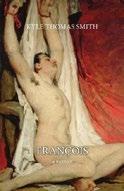
The author recounts struggling to get his life in gear and being energized by new romance as a young gay man in this hangdog coming-ofage memoir. Smith opens with vignettes of his current comfortable life in New York with husband Julius, two imperious cats, and a gig teaching Buddhist meditation, then shifts to his anxious, frazzled years as a college grad in Chicago in the mid-1990s. Many issues plagued him: a toxic relationship with his homophobic Irish Catholic family, a recent bad breakup, a frustrated yen to write, and a social life that mainly consisted of listening to his college French teacher, Evelyn, sob about her melodramatic love life. This last hobby paid off when Evelyn introduced Smith to François, the man of his dreams. The 30-something French documentary filmmaker has a beguiling mix of qualities—he’s sexy, worldly, and kindly. After a magical night out that ended with a passionate kiss, François flew off with promises of a future with Smith, an aspiration that reinvigorated the author. When a long-anticipated sojourn in Paris with François turned sour, Smith started the plangent but hopeful process of surviving on his own psychic resources. Smith’s rambling reminiscences probe the exquisite pain of being young and feckless, his bubbling ambitions punctured at every turn, in evocative and bitterly funny prose: “‘Kyle,’ she said, stopping me at the door as she took off her reading glasses and rubbed her eyes, ‘Kyle, you’re a smart
A compelling primer on the benefits of an herbivorous diet.
guy, aren’t you? I mean, you have a college degree, don’t you? You know, my other secretaries…they had far less education than you…and they caught on a lot faster.’” But he also registers the rush of connection and recognition that love brings with a quiet lyricism. (François “looked deeply into my eyes and said, ‘You’re beautiful.’ I didn’t respond. I simply took a seat on the barstool behind me. He took a seat on the one next to mine and held my hand.”) Smith’s travails will resonate with readers who have been young, desperate for love, and in search of self-definition.
An entertaining, poignant look back at a man’s fight to find his place in the world.
Spitz, Jonathan | 6th Sense Press (510 pp.) | $22.99 paper
Jan. 19, 2023 | 9781662932885

Spitz’s guide promotes a vegan lifestyle for both personal well-being and environmental sustainability. The author, a septuagenarian environmental and animal rights activist, channels his passion for good health and a better world into this comprehensive study of the negative impacts of animal-based food sources. Split into seven sections and written from a variety of anthropological perspectives, the book outlines the origins of human consumption patterns and their evolution and adaptation across centuries (a section on the domestication of fruits, nuts, vegetables, and animals is particularly
fascinating). Spitz ambitiously bolsters his viewpoint with history-supported hypotheses on how civilizations prospered through the popularity of agriculture, the exchange of fibrous plants and germination efforts across Old and New World cultures, and the ill effects of the human exploitation of animals as an increasingly popular food source, replacing the starchy vegetable diet enjoyed prior to the mid-19th century. His appeal for change stems directly from the numerous ways animal agriculture has become detrimental to both human vitality and the environment; the author points to studies concluding that human nutritional needs can be efficiently met with plant-based vegan nourishment “using a fraction of the land, water and energy resources it takes to provide an animal-based diet.” Spitz’s argument against the “global appetite for meat, dairy and eggs” is compelling as he discusses how livestock processing and production have had devastating environmental impacts on greenhouse gasses and runaway climate change across the globe. A final section details what the author considers “the optimal human diet.” Spitz references a convincing combination of data analysis, expansive anthropological research, and nutritional science studies that might prove too academically dense for lay readers seeking a more simplistic summary. Still, his approach remains applicably inclusive as he places responsibility directly on the reader to initiate dietary modifications. Having reached his 70s, the author is grateful for his thriving lifestyle; noting that the men in his family tend to die young, Spitz attributes his longevity to a healthful vegan mindset. A compelling primer on the benefits of an herbivorous diet for health and a stable planetary ecosystem.
Sula, Helene | Blue Star Press (224 pp.) $22.46 | April 9, 2024 | 9781958803417
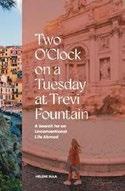
In Sula’s memoir, after narrowly avoiding the London bombings of 2005, a young woman opens her eyes to the vastness of the world beyond her home in Dallas, Texas.
In this millennial’s remembrance, the travel bug, the nagging dissatisfaction of multiple soulless office jobs, and a climbing accident leave the author fearing a life lived in regret. Sula’s married to her high school sweetheart, Michael, and together they dream up a goal: to live abroad. The couple lead a mundane life in Dallas with a mortgage, two dogs, and a sense of belonging in the city where they’ve lived their whole lives. To uproot and delay starting a family by moving to an unfamiliar country sounds like a strange undertaking to their friends and relatives. Despite challenges including Michael’s mother’s terminal cancer diagnosis and Sula getting fired from her remote job, she eventually turns a travel blog into a business and accrues a solid following on social media. The idea is to adventure through Europe without forfeiting the stability of a conventional lifestyle: “The risk we often overlook is waiting to pursue our dreams, pushing them off to a future that we hope will bring us closer to them. We make countdowns for the grand events in our futures, but we risk wasting our lives when we don’t pursue now, today, what truly matters to us.” Sula and her husband move to Heidelberg, Germany, with their dogs, where they continue to build her blog, travel at every opportunity, and wade through a labyrinth of visa applications. While the prose is energetic throughout, the narrative is often hampered by a haphazard structure. The chapters tend to begin in the middle of the action, abruptly flashback to a memory, and offer tangential
commentary on random topics. The writing is conversational and indifferent to conventional grammar. The theme itself—Gen Y leveraging social media to gain economic and geographic freedom— is tempered by genuinely expressed excitement for new experiences. The book’s major strength is in the details of places and events that could inspire anybody to book that vacation that’s been on the back burner for too long. Millennial-meets-world in this memoir of persistent planning to live the life you desire.
Swindell, Richard, Jolanda Witvliet & Andrew Ross | VATH Publishing (342 pp.)
$59.99 paper | Jan. 1, 2021 | 9798985684506

Swindell, Witvliet, and Ross present a guide to working as a pilot in the airline industry. In this illustrated manual, the authors (all airline pilots “from both military and civilian backgrounds…with extensive experience in airline recruiting, training and union representation”) provide an overview of every aspect of the industry for readers who are thinking about joining their profession. They describe the various commercial airlines, airline alliances, regional carriers, cargo carriers, and private services, and they break down all the components of those entities under the Federal Aviation Regulations. They discuss workplace realities such as seniority, stating simply that “everything in your airline career is a function of seniority” while warning that this status is strictly service-specific: Starting over in a new part of the industry wipes the
slate clean. The authors share tips on aspects of the business such as the relationship between pilots and flight attendants (FAs): “Should [FAs] call up [the cabin] during the flight with an issue, actively listen and help them solve the problem,” they write. “FAs do not typically call the pilots lightly.” The authors cover every element of getting hired and advancing in a pilot’s career, from researching different airlines to crafting a resume and cover letter to navigating interviews, and they elaborate on personal aspects of the job, including methods for getting enough sleep or the various ways in which pilots can fly as passengers cheaply or for free. At every heading, the authors use a variety of visual aids—charts, graphs, insets, bullet points, and illustrations— very effectively to clarify the details of the world a would-be pilot might enter. Their tone throughout is brisk and accessible—the entire book feels like an extended version of the polite-but-professional flight briefing pilots give to their crews before every takeoff. Prospective pilots will find this detailed career advice from three seasoned pros invaluable. A readable and comprehensive guide to flying high as an airline pilot.
Tolbert, C.L. | Level Best Books (270 pp.) $16.95 paper | Nov. 28, 2023 | 9781685124267 Series: A Thornton Mystery, 4
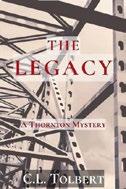
In Tolbert’s mystery, one in a series, law professor Emma Thornton represents a schizophrenic man accused of murdering his mother.
A satisfyingly authentic legal thriller.
Jeremy Wilcox’s mother, Sally, left her husband, Todd, and two children years ago, for reasons unknown. Jeremy, who suffers from paranoid schizophrenia, has no decent alibi for the night Sally was stabbed to death, and a scruffy tennis ball, a talisman of sorts for him, was found at the scene of the crime. It looks like an open-andshut case, and the assistant D.A. argues that Jeremy is a malingerer faking mental illness who should suffer the full weight of the law. Digging into the case while trying to shield Jeremy from a system that endangers him, his defense attorney, Emma Thornton, discovers that Sally’s family has a history of schizophrenia. She also encounters a sketchy mental health professional, Dr. Douglas Rayford, a psychologist who had his license revoked and now appears to be stalking her. Then, Sally’s estranged husband, Todd, is also found stabbed to death. This is the fourth installment in Tolbert’s Emma Thornton series. Emma is very much inspired by the author’s own experience in law (Tolbert was a practicing attorney for 30 years), and the legal material has convincing, realistic touches. In this outing, readers get more of Emma’s family, her NOPD detective husband, Ren, and her twin sons, Bobby and Billy. A side plot involves the boys dabbling in smoking and drinking beer. Emma agonizes over that; is she a rotten mother after all? Of course, readers know that she isn’t, and that the twins are basically good boys, well raised with the help of their stepdad, Ren. (“She knew how unusual it was that Ren put her boys before himself, even though he wasn’t their father. But he did. Day after day, month after month.”) But her anxiety is an effective device to underscore the pressures that arise from Emma’s intense career. The author has composed a detailed portrait of a very harried and very human professional woman. Attorney Emma Thornton returns in this satisfyingly authentic legal thriller.



Looking for a new read to recommend to friends and family?
We welcome you to Discover Indie Reads, a sponsored roundup of books from Kirkus’ Indie section. Be among the first to find out about these knotty whodunits, colorful kids’ books, steamy romances, complex fantasy tales, frank autobiographies, searching self-help guides, and eclectic poetry collections. Whatever your genre, your journey of discovery starts here.
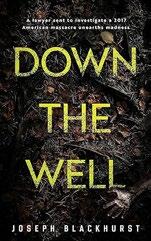

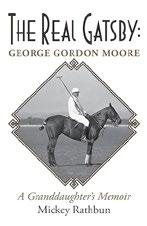

An inventive, multilayered horror novel structured around a cryptic document.
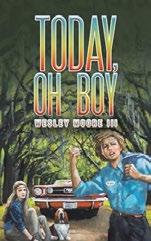
A rich, resonant, and vividly imagined character study.
An engrossing history of a remarkable man and the time that shaped him.
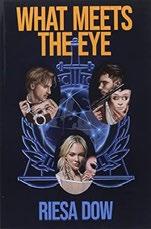
Dazzling characters front this quietly sublime period piece.
Anchored by two tough yet likable sleuths, this is a rousing character-based mystery with potential.

An effective western thriller graced by a memorable protagonist.
Kirkus Star
A powerfully moving YA novel that will hopefully enlighten as much as it entertains.
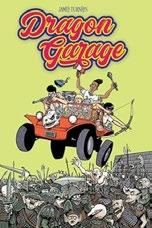
A silly and exciting flight of fancy in the form of a thoughtfully crafted graphic novel.


Impossible to put down—even if ballet isn’t your thing.
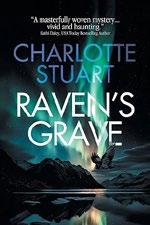
A solidly constructed and very satisfying murder mystery set in a largely vanished Alaska.
A peppery and unfailingly compelling set of reactions to one calamitous year.
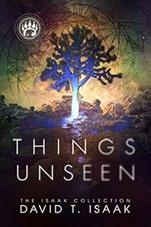
A satisfying and thought-provoking mystery with an enthralling cast.

A giggle-worthy, whimsical adventure.

A refreshingly unique take on the eternal battle of good versus evil that amuses while it philosophizes.
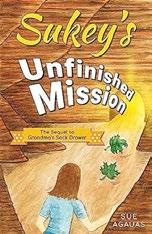
Young readers will be mesmerized by the magical elements that Sukey encounters in this supernatural adventure.
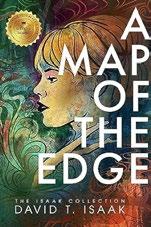
An atmospheric, eloquent depiction of teen angst and discovery in the twilight years of California’s counterculture era.

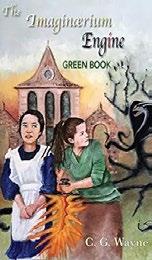


A cautionary tale of a cruel, authoritarian America of the future that’s leavened by barbed wit and irreverence.
A lively and fantastical adventure through Arthurian legend and Depression-era Texas.

A candid and compelling multigenerational account that honors Holocaust survivors.

A unique architectural history well suited for enthusiasts of American history and international relations .
Her Eyes Were on the Stars
by Jennifer Sommer; illus. by Gayle CobbAn essential acknowledgement of an undersung scientist.
A fine introduction to Elmwood, which horror fans will find a nice place to visit.

A thoughtful comingof-age story that takes unexpected turns.
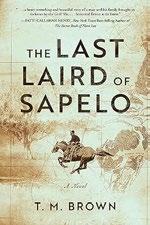
A well-researched Civil War drama, highly informative about cotton’s importance to both sides.


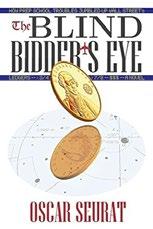

A heartfelt, bittersweet, cathartic family portrait that’s imbued with illness and compassion at its core.
A compact, high-IQ SF story that bundles some rewarding surprises into its middle-grade setting.

A thoughtful family genealogy that doesn’t shy away from the problematic complexities of history.

A light addition to the adventures-in-Paris genre offers cozy fun to fans of travel fiction and tender love stories.
An inventive puzzle of a novel by a writer of singular vision.

A whodunit with twists and turns and some literary pyrotechnics.
An unflinchingly realistic look at a little-understood disease.
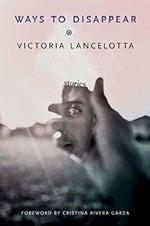
A dazzling collection of stories covering rough emotional terrain.

An upbeat birth and childcare memoir from a father’s perspective.
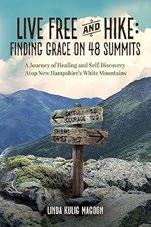

Pheemie’s War
by Kate ReynoldsA blend of war story and coming-of-age novel sure to hold readers’ attention.


Trouble’s Defense
by Janet Breuer;illus. by Sarah Hoyle
A solid companion piece, especially for cat lovers.
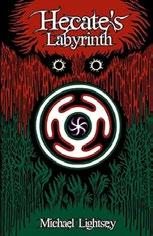
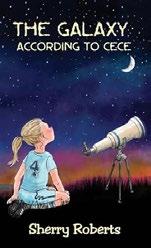
Young readers will enjoy this engaging mystery with a complex protagonist.

Live Free and Hike: Finding Grace on 48 Summits
by Linda Kulig MagoonAn often engaging story of a hiking enthusiast regaining her autonomy after a divorce.
The Crystal Skull
by Daniela ValentiAn entertaining blend of murder mystery, romance, and the paranormal.
Hecate’s Labyrinth
by Michael LightseyA sensational cast fuels this exuberant tale that baffles as often as it charms.
A mercurial book of confessional poems that speaks to the grief and fury of illness.

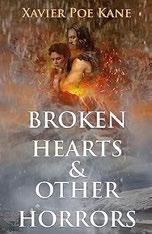
A dark and skillful teenage crime novel with plenty of heart.

Striking characters drive this worthwhile batch of unnerving stories.
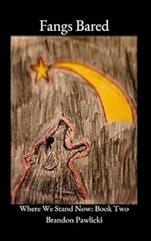
Make Believe
by Lorraine Abrams; illus. by Eva VagretiFans of funny animals will find tame humor, vocabulary-building language, and accessible rhymes here.
A fervent hero headlines this engrossing end-of-days zombie tale.



“Eight-year-old Olu visits her mother’s family in Ijebu, Nigeria, as they observe Eid al-Adha . . . A loving embrace of faith and family and a wonderful window into Nigerian culture.” Kirkus Reviews, starred review Old Clothes for Dinner
“A Black nonbinary child finds ways to navigate their sensory sensitivities during Pride . . . Joyfully affirming.” Kirkus Reviews, starred review


Awards and Honors!


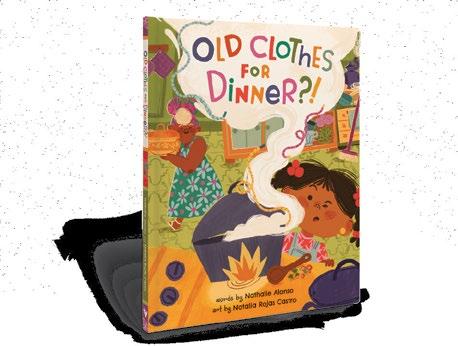
“A hilarious mistranslation has a young girl fearing she’ll have to eat something unsavory . . . A portrait of a loving Cuban American immigrant family and their traditions.” Kirkus Reviews,
